

elrose Estate Jewelers
The Brilliance of Giving Back
Naturally Noteworthy Commitment to Excellence


As sustainability takes the spotlight in modern retail, vintage and antique estate jewelry endures as the primary benchmark.



The Breast Cancer Resource Center of Santa Barbara (BCRC) offers free resources to support the human journey of breast cancer and the unique needs of our clients. We believe in the power of community in all its forms and are grateful to be part of a larger collaborative network of cancer care support, including the financial contributions from our vibrant community of donors.

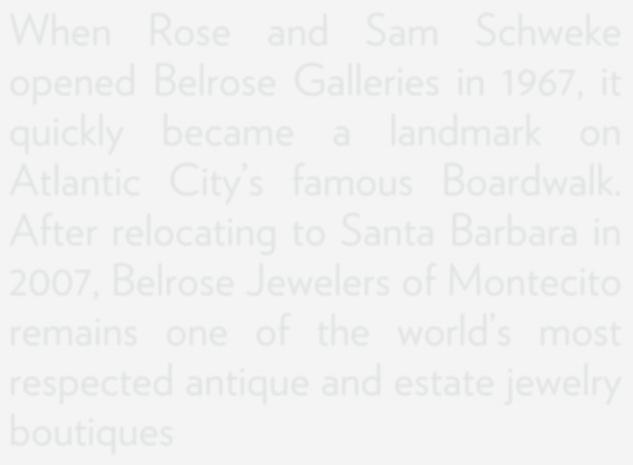
When Rose and Sam Schweke opened Belrose Galleries in 1967, it quickly became a landmark on Atlantic City’s famous Boardwalk. After relocating to Santa Barbara in 2007, Belrose Jewelers of Montecito remains one of the world’s most respected antique and estate jewelry boutiques
Each piece carries history, expert craftsmanship, and character- without new mining or exploitative labor. By choosing estate jewelry, you reduce environmental impact while contributing to a circular economy, embracing elemental luxury while honoring the past.
Since time immemorial, humans have adorned themselves with jewelry, as a way of authentically expressing their individuality and love.



Under the direction of second and third generation, Joe and Sarena Schweke, Belrose continues to offer a thoughtfully curated collection, uniting the heritage of the past with the elegance of modern trends.




Whether you're purchasing, selling jewelry or seeking insights requiring professional appraisal services, transparency is paramount and you are cared for like family.





“BCRC is especially grateful for the financial support received for many years from Joe Schweke, Belrose Estate Jewelers. Thank you for making a difference and allowing BCRC to do the same.” – Silvana Kelly, Executive Director




Santa Barbara
Welcome to The Giving List Santa Barbara , 2025/26
Inever thought of myself as a “philanthropist.” Sure, I write checks here and there to causes and organizations I want to support, but I don’t (and can’t) write massive checks, except to my kids’ colleges. But after publishing The Giving List city books for five years, and living in Santa Barbara for 17 years, I’ve come to deeply appreciate the value of the contributions to our local nonprofit ecosystem made by donors and supporters (including volunteers) at every level. The Oxford English Dictionary defines philanthropist as: a person who seeks to promote the welfare of others, especially by the generous donation of money to good causes. And certainly, that is true. But generosity comes in many forms, not just a huge financial gift.
The Giving List Santa Barbara came into existence for a few reasons: 1. Santa Barbara reportedly has more nonprofits, per capita, than any other county in the country. 2. Many nonprofits struggle to tell their own story in a powerful way. 3. Philanthropists don’t necessarily do a lot of due diligence – which is understandable because there are so many nonprofits and so many needs to know about.
This book is our attempt to help you know about some of the critical work being done by local nonprofit organizations that provide, in many cases, the only safety net that exists beneath Santa Barbara’s most vulnerable community members.
Certainly, the organizations written about in this book are not the only local organizations that need and deserve your support. But in this book are the stories of many

wonderful organizations doing critical work at a critical time and they are worthy of your consideration. And given recent federal and state-wide cuts, they need your support more than ever.
The Giving List team at the Montecito Journal works very hard to produce a publication that will make your philanthropic journey more meaningful and more productive. I hope we have succeeded.
With Gratitude, Gwyn Lurie CEO, The Montecito Journal Media Group
(Photo by Lucia Kiel Portraits)

Be a Part of The Giving List
Are you interested in having your nonprofit appear in The Giving List? We are, too! We understand that there are thousands and thousands of vital nonprofits doing critical work in the community. While we rely on our years of work in the philanthropic community along with consultation with leaders in the philanthropic sector to select organizations to appear in our program, there are bound to be some very worthy organizations we will invariably miss.
Your nonprofit organization can apply directly to be in The Giving List by scanning the QR code below. It will direct you to an online form to fill out the required information. Once you’ve completed the form, you will immediately land on our radar for consideration in the next available Giving List book. Please note, we do independent vetting before extending invitations to nonprofits to appear in The Giving List.

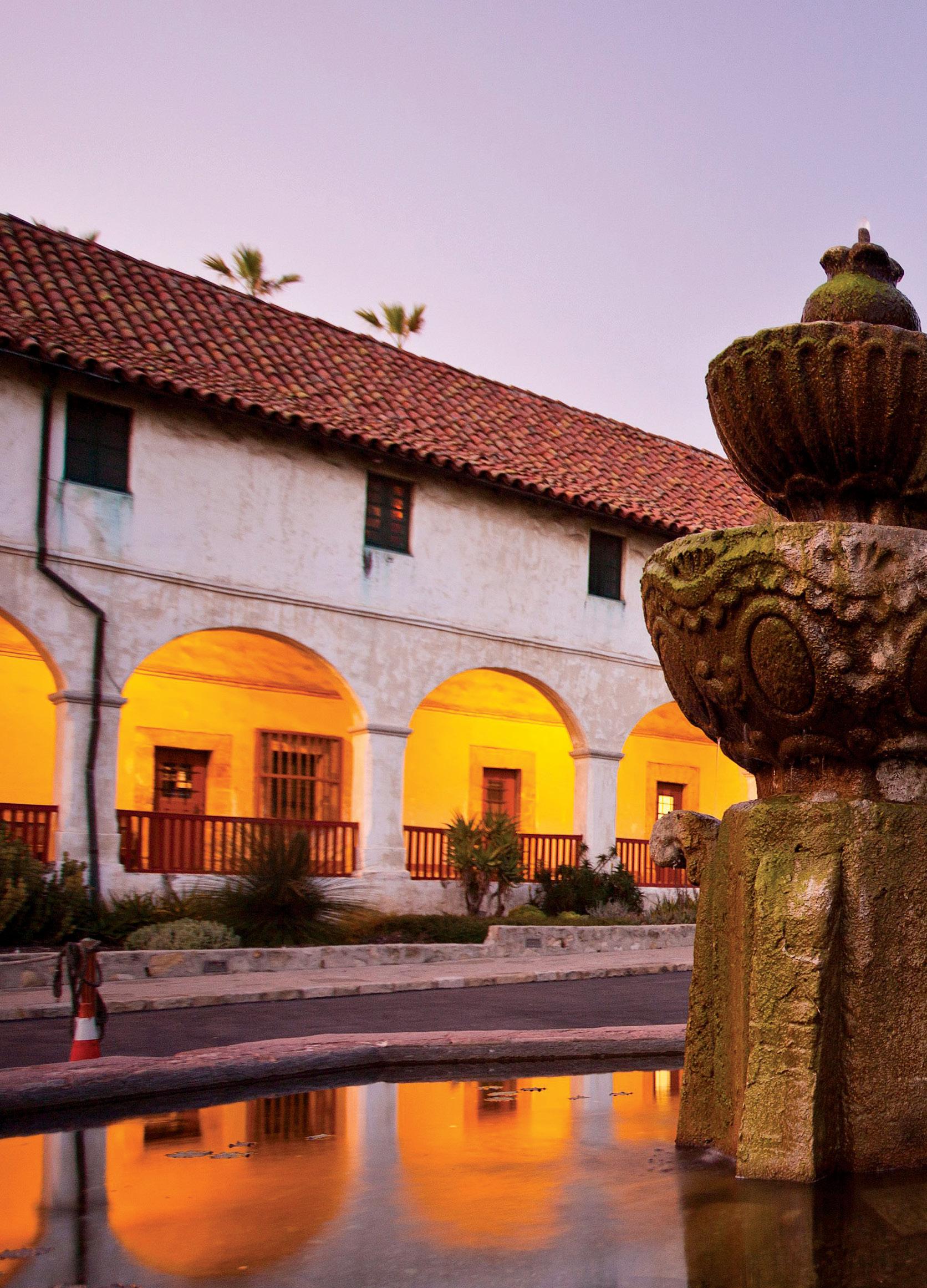
Giving Back
We launched The Giving List to help the nonprofit organizations featured in this book spend less time fundraising and more time doing the critical work demanded of them.
Confronting the myriad and mounting challenges facing communities, the nation, and globe requires the ingenuity and dedication exhibited by the nonprofits that fill our pages. We have assembled their stories with the hope that you will see their value and invest in them.
A large proportion of the nonprofits we feature are smaller and more grassroots. This means that while they may have the ideas and leadership to forge change, they don’t necessarily have the diversified revenue streams to reach their fullest impact. We are hoping you will change that by donating and helping them secure the predictable, unrestricted revenue they need to focus on what’s most important: the work. With you, we have the chance to invest in organizations with the potential to take on some of our most pressing challenges.
Please join us by supporting your local nonprofits on the front lines of justice, whether that be fighting racism; using the arts to change culture; helping children, youth, and families in need; or striving to preserve our environment.
We will all be better for it.



How to DAF?
An increasingly popular and efficient tool to manage your giving is a donoradvised fund, or DAF.
A DAF is like a charitable banking account, managed by a community foundation or by some of the world’s largest investment banking firms, where you can make a donation today and direct grants to worthy nonprofits later.
A key advantage with a DAF is that it allows you, the donor, to take a tax deduction in the year you donate money or complex assets, while not compelling you to distribute the money immediately. This can mean time to make more thoughtful decisions about how you want to direct your charitable contributions.
Many financial institutions and community foundations have low to zero start-up fees, making it possible for donors at any level to DAF.
How To Read This Book
The Giving List was created to make it easier for you to navigate the dizzying array of worthwhile causes and nonprofit organizations. To that end, we have distributed The Giving List to people like you: individual donors, staff within the region’s small and large private foundations, and to philanthropic advisors, wealth managers, and estate planners.
As you dive into this book, we want to point out some of its unique features, and of The Giving List program as a whole.
Ongoing Support
Our partnerships with the nonprofits in these pages do not end with the printing of this book. Each profile will live on TheGivingList.com through 2026, where we will be updating each profile once a month so that you can continue to track the important ongoing work of each and every Giving List organization.
We hope that you will use the website as a guide not only for yourselves, but as an easy way to share the work of our partners – whether they be nonprofits, community foundations, or funder affinity groups – with your friends, family, and colleagues.
Staying Connected
We are building a community of people who care deeply about philanthropy and understand the vital role it plays in our world, and we want you to join.
Since launching January of 2022, our bi-weekly newsletter, The Giving List Newsletter, has become a venue for updates from our nonprofit partners and stories from the frontlines of philanthropy.
We would love for you to join The Giving List Newsletter; please visit www.TheGivingList.com and follow the prompts.
You can also join our newsletter...
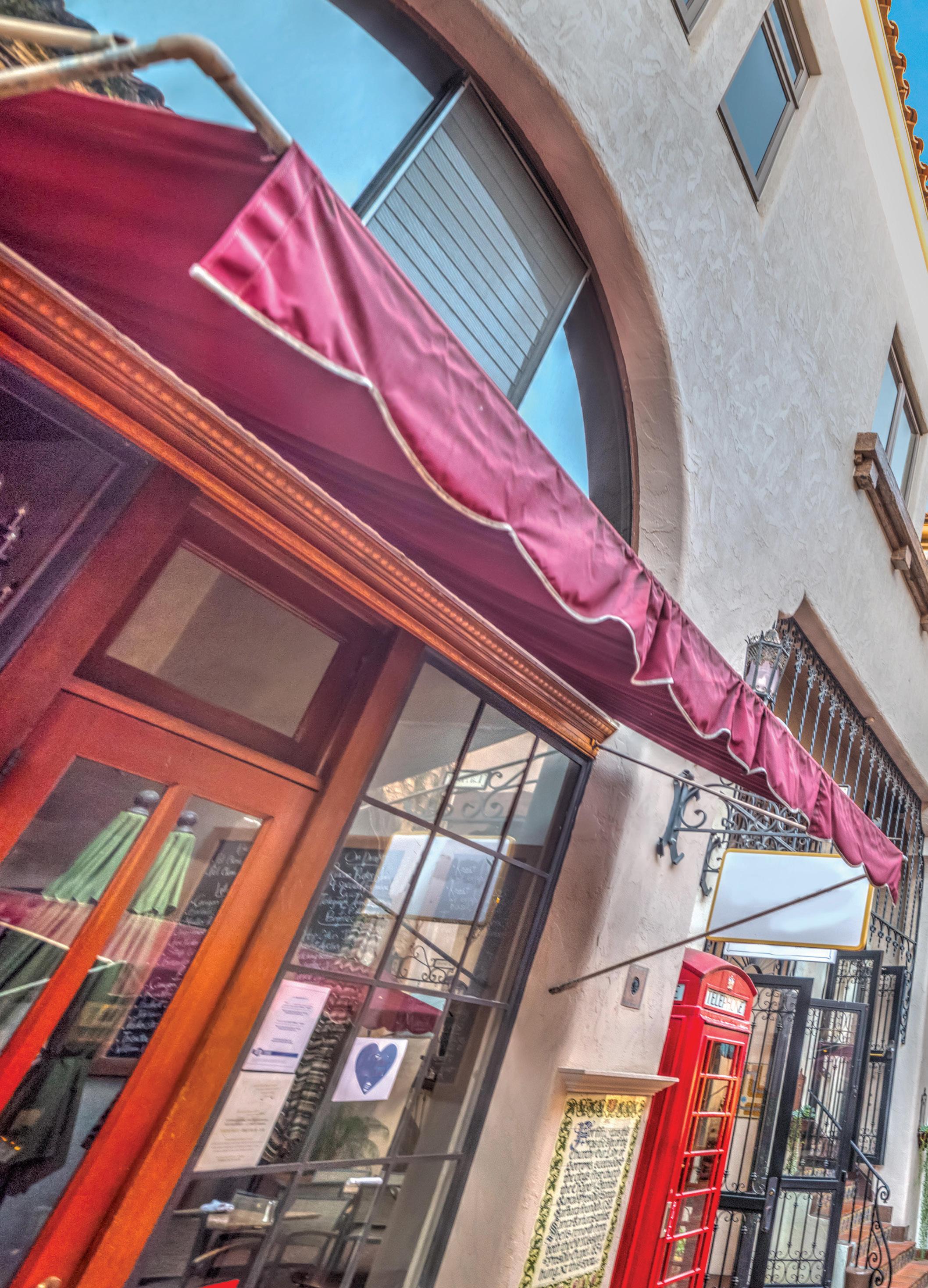

... by waving your phone’s camera over this QR code.

Editorial:
A Rallying Cry for Community – Santa Barbara philanthropy is at a crossroads. How to navigate changing trends in wealth gaps, philanthropic giving, and community cohesiveness . . . . . . P. 20
Conversations:
Grace Fisher – An artist, musician, and philanthropist making inclusion a part of everyday life. She’s built a whimsical clubhouse that beckons all.
30 Advocacy


Hillside
Provides a home that supports residents in maximizing their abilities so they may attain independence in an environment of dignity and respect.
P. 32
Immigrant Hope
Equips churches to provide immigrants with hope, legal guidance, and a caring community.
34
Legal Aid Foundation
Provides free civil legal assistance to low-income and vulnerable Santa Barbara County residents to ensure equal access to justice through direct representation, legal advice, and community education P. 36
805 UndocuFund
Mobilizes resources during disasters to provide short-term relief to undocumented residents and engages the community for long-term systems change
P. 38
40
For the Animals
Return to Freedom
Preserves the freedom, diversity, and habitat of America’s wild horses and burros through sanctuary, advocacy, education, and conservation . P. 42
ASAP Cats
The mission is to save the lives of cats in Santa Barbara County by providing shelter, veterinary care, behavioral support, adoption and foster services, education, and community outreach P. 44
Atlas Animal Rescue
Founded by Emily Everett-Nelson, who began her journey volunteering for rescue groups in Southern California and abroad. After a life-changing experience in China with Slaughterhouse Survivors, she committed to rescuing, rehabilitating, and rehoming abused and neglected dogs both locally and internationally P. 46
Channel Islands Marine Wildlife Institute
Dedicated to marine mammal rescue, rehabilitation, research, and education to promote ocean and human health.
SAVEUS The Elephant Project
Dedicated to saving and protecting elephants and other animals worldwide by donating sales of products to reputable organizations
P. 48

52
For the Children

Conversations:
Victoria Strong – Championing the idea of playgrounds becoming radically inclusive destinations for people of all abilities. A strong approach to philanthropy, advocacy, and inclusion . . P. 54
Glimmers Childhood Cancer Foundation
66 Community Resilience

Conversations:
Sese Ntem – Understanding where people are coming from and learning to really listen to what they need. Mastering this helps a community overcome challenges
Friends of State Street
P. 58
A grassroots effort funding cutting-edge research for pediatric cancer and serving kids, adolescents, and young adults living with cancer (and their families), while inspiring awareness, advocacy, and education
Storyteller
A year-round therapeutic program providing high-quality early childhood education and comprehensive support services for children and their families facing challenges in Santa Barbara County
P. 60
United Boys & Girls Clubs of Santa Barbara County
Working hand-in-hand with the Santa Barbara community to build collaborations, expertise to solutions, and to help shape the heart of the city into a place where culture, connection, and commerce thrive together
Santa Barbara Public Library Foundation Supports the long-term health and sustainability of the Santa Barbara Public Library through public-private partnerships .
Unite to Light
Envisions a world where every person has access to clean, affordable light and energy. They provide low-cost solar lighting and energy to people living without electricity to improve global health, education, prosperity, and fight climate change. P. 76
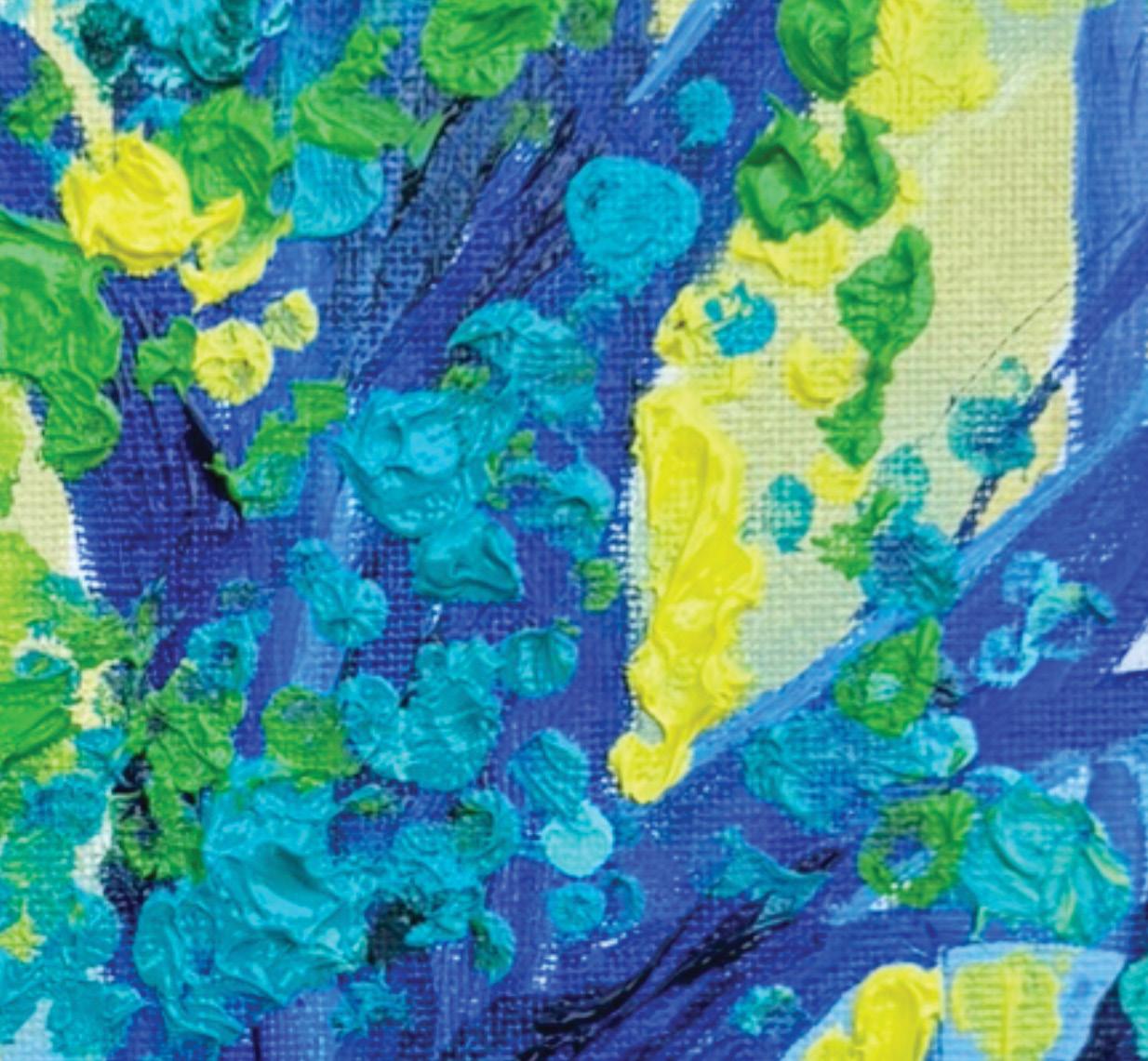
P. 62
Strives to enable all young people, especially those most in need, to reach their full potential as productive, caring, and responsible citizens. From academic support and mentorship to creative arts and sports programs, it nurtures the whole child, fostering confidence, resilience, and belonging
Children’s Creative Project
Sparks curiosity and cultivates creativity through inclusive arts education for preschool to grade 12 students
P. 64

78 Education

Conversations:
Jim Selbert – Helping explain how the use of digital technology can make philanthropy more inclusive
First 5 Santa Barbara County
Mobilizes and integrates communities to prepare children to thrive in kindergarten and life P. 84
Para Los Niños
Partners with children, youth, and families through integrated education, wellness, support, and advocacy to address barriers and create pathways to success
P. 90
92 Emergency Services


Conversations:
Amy Weaver – Bringing fairness to global humanitarian work. Stepping up to do more P. 94
National Disaster Search Dog Foundation
Founded in 1996, this organization strengthens disaster response in America by rescuing and recruiting dogs and partnering them with first responders to find people buried alive in the wreckage of disasters
P. 98
Santa Barbara County Search and Rescue
Established to provide vital emergency search and rescue services in Santa Barbara County and surrounding areas to those in need
P. 100
Direct Relief
A humanitarian aid organization, active in all 50 states and more than 80 countries, with a mission to improve the health and lives of people affected by poverty or emergencies – without regard to politics, religion, or ability to pay
. P. 102

104
For the Environment
Community Environmental Council
Builds on-the-ground momentum to reverse the threat of the climate crisis, transforming systems, safeguarding the community, and inspiring action for a resilient Central Coast
P. 106

ClientEarth
Uses the power of law to bring systemic change that protects the earth, working across borders and sectors to inform, implement, and enforce environmental protections P. 108
Heal The Ocean
Focuses on wastewater infrastructure and ocean dumping practices that contribute to pollution, providing a model for other coastal communities . . . . . P. 110
112
Health & Wellness
Conversations:
Andrew Firestone – Inspiring people to invest in the cause. He’s the star emcee with a deep passion for philanthropy and community . . . .
. .P. 114
Children & Family Resource Services/ Health Linkages
Works to improve the health outcomes for children in Santa Barbara County by increasing access to preventative health and social services P. 118
Cottage Health
Provides superior health care and improves the health of communities through a commitment to excellence, integrity, and compassion .
. P. 120
Jodi House
Empowers brain injury survivors to not merely survive, but thrive P. 122
Kind Mind
Empowers schools and communities to practice mindfulness, kindness, and nature immersion to enhance belonging, social-emotional learning, resilience, equity, and care for the world . . P. 124
126
Homelessness

Doctors Without Walls
Dedicated to providing free, volunteer medical care for the most vulnerable of Santa Barbara County, when and where they are in need P. 128
New Beginnings
Provides quality, affordable counseling, shelter, case management, and education that strengthen the community and give clients the ability to lead healthy and productive lives
P. 130
132
For the Arts

Conversations:
Greg Gorga – Diving into why museums must keep changing and evolving to keep entertaining and educating P. 134
Casa Del Herrero
Maintains, preserves, and restores the historic house, furnishings, gardens, and history of the Steedman/Bass estate for the benefit of the community and future generations .
. P. 138
Grace Fisher Foundation
The Inclusive Arts Clubhouse, inaugurated in March 2023, stands as a beacon of creativity and inclusivity within the community. This enchanting space serves as the epicenter for a diverse array of programs, providing a whimsical and inclusive environment for individuals of all abilities to unleash their creativity .
Santa Barbara Maritime Museum
P. 140
Creates excellent exhibits and educational experiences that celebrate the Santa Barbara Channel and illuminate connections with the sea . . P. 142
Santa Barbara Museum of Art
Unites people of all ages through inspiring art experiences. In the heart of the State Street Arts District, the Museum serves as both a vibrant social hub and an essential educational resource. P. 144
UCSB Arts & Lectures
Founded in 1959, this is the largest and most influential arts and lectures organization between Los Angeles and San Francisco. Each year it presents more than a hundred public events, from critically acclaimed concerts and dance performances by world-renowned artists to talks by groundbreaking authors and film series at UCSB and Santa Barbara-area venues. With a mission to “educate, entertain, and inspire,” the organization also oversees an outreach program that brings visiting artists and speakers into local classrooms and other venues for master classes, open rehearsals, discussions, and more, serving K-12 students, college students, and the general public P. 146


148 Youth Development
Conversations:
Jeanne Dixon – Volunteering is in her DNA. Meet a teacher who has never stopped helping others
P. 150
Ice in Paradise
Provides affordable recreational ice-skating programs in a state-of-the-art facility with a safe, friendly, and fun environment
P. 154
NatureTrack
Founded with the belief that the best way to inspire stewardship of nature is through firsthand experiences, making the outdoors fun and accessible while fostering an understanding and love for the environment
Spirit Awakening Foundation
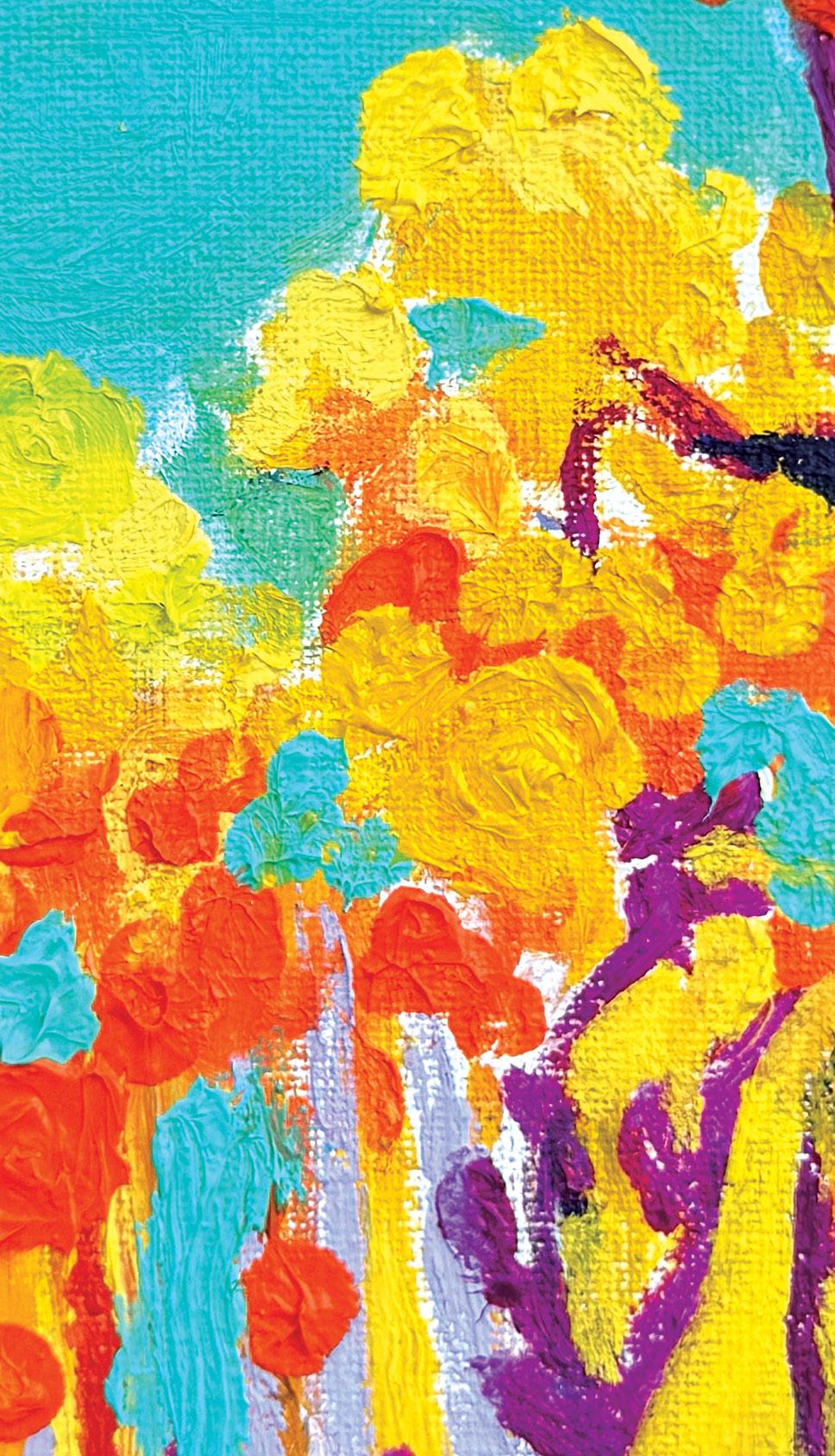
156
Founded by Akuyoe Graham, this program stands against racism, inequality, and injustice while equipping youth with meditation, self-reflection, creative expression, mentorship, and leadership training to build character and raise self-esteem
158
Olive Crest Hope Refuge
Dedicated to preventing child abuse by strengthening, equipping, and restoring children and families in crisis





Nonprofit by Category Index
Human
805
Casa
To learn more about joining The Giving List Community, please contact: vicki@thegivinglist.com
CEO & Founder Gwyn Lurie gwyn@montecitojournal.net
President & Founder Tim Buckley tim@montecitojournal.net
Executive Editor Vicki Horwits vicki@thegivinglist.com
Art Director Trent Watanabe
Deputy Art Director Stevie Acuña
Copy Editor Lily Buckley Harbin
Administration & Billing: Jessica Shafran frontdesk@montecitojournal.net
Contributors:
Zachary Bernstein, Chris Connor, Joe Donnelly, Grace Fisher, Steven Libowitz, Gary Marks, Will Pulice, Zach Rosen, Dan Schifrin, Jeff Wing the giving list is published by: Montecito Journal Media Group, LLC. Corporate Offices located at: 1206 Coast Village Circle, Suite G, Montecito, CA 93108 For inquiries: phone (805) 565-1860 email tim@thegivinglist.com

media.group
A Rallying Cry for Community
By Dan Schifrin
Santa Barbara philanthropy is at something of a crossroads, one it’s been approaching for years, but started accelerating toward during the pandemic years. That’s when an influx of great wealth seeking refuge from the gritty realities of dense, urban living made headlines for record-breaking real estate transactions. The glamorous sheen somewhat obscured the view of a region in which increasingly the working-class lives that comprise most of the county’s population came under increasing stress.
As with elsewhere, the chasm between the haves and the have-lesses grew further apart, during and after the pandemic.
Soaring property values and skyrocketing rents have only increased stressors on an area that is struggling to maintain a sense of common bonds and shared spaces in the face of changing demographics and economics.
This crossroads is reflected in recent trends in giving and philanthropy throughout the region. According to the Santa Barbara Foundation’s 2023 State of Nonprofits Report, nonprofit growth in the county lagged state and national trends by more than a percentage point. A majority of nonprofits also reported declines in individual giving. Smaller nonprofits have been hit the hardest.
Pointedly, this year the Santa Barbara Foundation launched a Critical Needs Response Fund “to provide flexible resources that help organizations adapt, respond, and remain resilient in a shifting landscape.” In other words, to help bridge the gaps until the giving landscape improves.
So, what gives – or doesn’t, in this case?
Part of the answer may be the budding identity crisis – is modern Santa Barbara a luxury enclave, a close-knit, transgenerational community, or some reasonable combination thereof? It appears that philanthropy and philanthropic donations are counting on the answer.
Integrating the county’s vast discrepancies in wealth and assets into a cohesive community with shared goals is a challenge, one that its storied philanthropies and nonprofits are confronting in real time.
There is a uniquely strong culture of philanthropy in Santa Barbara County. It has among the densest concentrations of nonprofits in the country, with the nonprofit ecosystem representing the second-largest employment sector in the region (after UCSB).
No surprise, the largest foundations remain in good shape while the smaller ones are struggling to do more with less. Similarly, large donors are accounting for an increasingly large share of the region’s giving, but the giving is coming from fewer hands and going to fewer foundations.
While the best minds in local philanthropy work towards re-democratizing giving, billionaire philanthropist Wendy Schmidt and her husband, Eric, offer an example of how we might better navigate the local philanthropic terrain in the meantime.
As founders of major initiatives like Schmidt Ocean Institute and Schmidt Sciences, along with the Schmidt Family Foundation, the Schmidts are known for their global philanthropic reach. Yet they recently found themselves coming to the rescue of a local fruit market. They had read about the planned closure of the beloved Tri-County Produce on Milpas Street in a local newspaper and decided to reach out as angel investors to keep it going.
The reasons were personal, and very human.
“My husband Eric and I started shopping at Tri-County Produce when we moved to Santa Barbara in the middle of the pandemic,” Wendy Schmidt wrote in a post on LinkedIn, adding that the store represented “a resilient network of local and regional suppliers over four decades of family ownership.”
As Wendy Schmidt wrote in a letter to The Giving List: “I knew we had to find a way for this beloved market to continue serving the community.” The store, and its key stewards – Jaime Desales Sr. and Jaime “Mito” Desales Jr. – had become “an essential part of Santa Barbara.”
We tend to give to what, or whom, we know.
The Schmidts quickly got to know the place and despite only recently becoming a Santa Barbara resident, Wendy Schmidt wasted no time offering local support. She sits on the board of Ganna Walska Lotusland, and the Schmidt family recently made possible the purchase of the 350-acre parcel of land known as Mar y Cel, the largest contiguous undeveloped property in Montecito.
Supporting the food market and preserving the open space, as different as they are on the surface, are on brand for the Schmidt family’s larger focus. As Wendy Schmidt wrote: “Eric and I seek to work toward a healthy, resilient, secure world for all – and that future, we hope, contains many markets, and many clean food systems, like this.”
Talk about global reach with a local focus.
The subtext of this message speaks to something deeper – an awareness that being vitally connected to community is a quality that is sometimes missing at a moment of rising economic inequality, housing shortages, and climate disruptions, and a divisive political ethos centered on who does and does not “belong.”
Uniqueness of Santa Barbara
There is a uniquely strong culture of philanthropy in Santa Barbara County. It has among the densest concentrations of nonprofits in the country, with the nonprofit eco-

system representing the second-largest employment sector in the region (after UCSB). The Santa Barbara Foundation is one of the most impactful community foundations in the nation, and the Women’s Fund of Santa Barbara, with more than 1,400 members and 265 volunteers, is one of the largest giving circles in the country, having disbursed $1.25 million to local charities this spring.
And in concert with national trends, the total number of dollars raised within Santa Barbara has increased in recent years. The 2023 State of Nonprofits in Santa Barbara County report, presented by the Santa Barbara Foundation and UCSB’s Center for Evaluation and Assessment (CEA), reveals that financial support of local foundations continues to increase year over year.
At the same time, the report signals a shift in another, perhaps equally important metric: the declining number of people both volunteering and giving financially. In other words, our nonprofit sector is increasingly reliant on more dollars being given by fewer people.
Sergey Salushchev, Main Archivist at St. Vincent’s Archive & Museum, Santa Barbara, CA.
National studies indicate the same thing. In the spring of 2025 the Fundraising Effectiveness Project (FEP), a collaboration between the Association of Fundraising Professionals (AFP) Foundation for Philanthropy and GivingTuesday, published a paper raising the alarm that volunteering and board involvement was still below pandemic levels.
The issue is dire enough that The Giving Institute created the Generosity Commission in 2021, a blue-ribbon panel with broad academic and foundation support, that confirmed in its 2025 report that “with rare exception, year over year more money has been given to nonprofits but by fewer givers. And year over year, more hours have been donated to nonprofits but by fewer volunteers.”
This has huge implications for regional organizations and the communities they serve, who are uniquely dependent on local support and less likely to be the beneficiaries of mega-funders. It’s especially the case for organizations like food banks, animal shelters, or mentoring programs that are heavily reliant on volunteers who free up time for staff to do work they are best suited to do.
On an even deeper level, as Generosity Commission Co-Chair Jane Wales explained in the study’s introduction, the “trends in everyday giving and volunteering have occurred alongside two others: a rise in social isolation and a decline in social trust.” When the question becomes to give or not to give, it’s easier to opt out when the social fabric has become so frayed.

Our nonprofit sector is increasingly reliant on more dollars being given by fewer people.
Volunteering is one way to mend that social fabric. Sergey Salushchev is the major gifts officer at St. Vincent’s, a storied Catholic nonprofit that focuses on family support, early childhood education, and housing.
Founded in 1858, the organization relies heavily on volunteers, drawing mostly from a pool of retired Santa Barbarans who feel a deep connection to the work. Salushchev sees the organization’s volunteers as rock stars. For example, when volunteers who work on one of their signature programs that support unhoused people go on vacation, Salushchev says, “They tell us, ‘Please don’t give up our spot!’”
At the same time, Salushchev acknowledges a concerning trend in the national conversation about
generosity and giving. “There is a major shift happening in our country, where people have become hostile to compassionate giving,” he said, adding that influential voices increasingly “castigate those who want to help. This makes people less giving, and less willing to give.”
There are significant voices making the opposite case, including the Schmidts, and funders like Bill Gates and MacKenzie Scott who, along with their massive gifts for larger global ventures, advocate strongly for involvement in and support of local organizations. But if these giving and cultural trends continue, the involvement and innovations of a small group of dedicated funders will not be enough.

Back to Basics
With Santa Barbara at a crossroads, the path back to community may be the best one for us to take.
St. Vincent’s Salushchev is proud of his institution’s depth and longevity in Santa Barbara, and how both volunteers and clients, when working together to put food on the table or educate children, are part of the same community.
At a moment when “so many of our problems seem intractable, including homelessness, when you see with your own eyes what you can tangibly do, you understand that you actually can make a difference,” he says.
Rabbi Steve Cohen, who became Rabbi Emeritus of Congregation B’nai B’rith this spring after 20 years at that pulpit, explained that people give most effectively and organically when they are connected personally. “People give to people,” he said. In the end, “it’s all about relationships, and the possibility of entering into real conversation with people.”
That idea extends to understanding better just who are the people that make up the community’s fabric. For organizations like The Fund for Santa Barbara, a foundation that has supported progressive causes since 1980, the last several months, during which ICE raids have torn families apart and made residents of all legal statuses anxious, have sharpened the sense of mission and the philosophy of community-responsive philanthropy.
“What philanthropy can do in this moment is create an infrastructure of social change, and fund organizations at the forefront of that work as we investigate creative modes to make systemic change through community input,” said Eder Gaona-Macedo, The Fund’s executive director.
Gaona-Macedo, who grew up on the West Side as an undocumented child hiding his status, explained that part of this funding goes to groups dedicated to changing the narrative of who lives – and even who should live – in Santa Barbara. “We have to change the narrative of who lives here, and part of that is recognizing the dichotomy of who has a voice in the larger community, and who doesn’t,” he said.
The question of who belongs in Santa Barbara is not only about legal residency. It’s also who can afford to live here safely, as housing prices and worries about climate catastrophe make buying a home and raising a family in the county feel out of reach, even to those who have
lived in the area for generations. And that includes a large percentage of Santa Barbara youth.
One way to bring youth into the conversation is to create spaces for them to raise money, decide on community priorities, and see the impact that giving and volunteering can have.
Kids Helping Kids (KHK), a student-run organization centered at Providence High School, has raised more than $4.5 million since 2002 for both local and international projects. This year, for the first time, KHK will create their own local fund, called Kids Across Santa Barbara, in part to learn more about the issues in their own community.
The Fund for Santa Barbara has its own youth-granting organization, Youth Making Change (YMC), which helps young people ages 13-19 to understand and use philanthropy to make a difference. This past year, YMC granted around $30,000 to youth-led programs throughout the county.

Rabbi Emeritus of Congregation B’nai B’rith, Steve Cohen

Developing the next generation of volunteers and donors is meaningful groundwork. However, it is not enough to wait for change. As Hillel the Elder said, “If not us, who? If not now, when?” The rhetorical questions are really a rallying cry for community and a sense of personal investment in a community that drives a commitment to helping that community. How can we integrate Santa Barbara, the enclave, with the Santa Barbara that contains multitudes from diverse and disparate backgrounds and socio-economic strata?
The answer, simply enough, is that the enclave is not separate from the rest of the community, and what’s good for the community – a healthy environment, safe neighborhoods, good schools, food and shelter, the opportunity to stay and thrive – is good for all. Emphasizing those broad common interests over the narrowly divisive
narratives being foisted upon us in this isolated age will go a long way.
Take the Women’s Fund annual celebration of giving this past May for example. This year, 11 nonprofits were presented with their grants, including the Channel Islands YMCA and Mothers’ Helpers, which supports parents in need of baby essentials. During her opening remarks, Board Chair Carolyn Jabs explained that “Like other collective giving circles, the Women’s Fund of Santa Barbara is based on a deceptively simple premise. Together, when we pool our resources, we can achieve far more than we could ever accomplish alone.”
Words to give by.
Fund for Santa Barbara team with Executive Director Eder Gaona-Macedo.
Conversations: Grace Fisher
as
told to Zachary Bernstein
Meet the Artist
As a teenager raised in Santa Barbara, Grace Fisher was an active student and classicallytrained multi-instrumentalist who excelled at playing piano, cello, and guitar. She dreamt of a future in music performance, but that dream was cut short by a sudden polio-like illness that left her forever paralyzed from the neck down at the age of 17. As devastating as the diagnosis was, this life-altering event did not stop her from fostering a community from the arts and becoming a celebrated artist herself.
She also established the Grace Fisher Foundation, a nonprofit that continues Fisher’s deep commitment to the arts. The foundation provides an arts outlet for people with both physical and intellectual disabilities. At the center of it all is the inclusive Arts Clubhouse, a hub currently housed within La Cumbre Plaza shopping mall that offers free arts classes, performances, and events with programming nearly every day of the week.
You can see Fisher’s own artwork displayed at the Clubhouse and throughout this Giving List book.
The Giving List: You’re contributing artwork for The Giving List book this year. How did you get started as a visual artist?
Grace Fisher: Art was something I really got into shortly after my disability. They introduced me to that when I was in rehab at Craig Hospital. It’s all with a paintbrush attached to a stick that I hold in my mouth. Once I learned, I just got really into it. I wasn’t into art before my disability, so it was a new learning experience and something that I could do despite all my other physical limitations. My style’s evolved. I really like using vivid colors, thick paint application, and experimenting with color and texture. I later took a painting class at City College and that was really helpful, but I’m mostly self-taught, I learn by experience and through making mistakes.
TGL: Your foundation includes a Clubhouse devoted to the arts and you have all these people coming together to
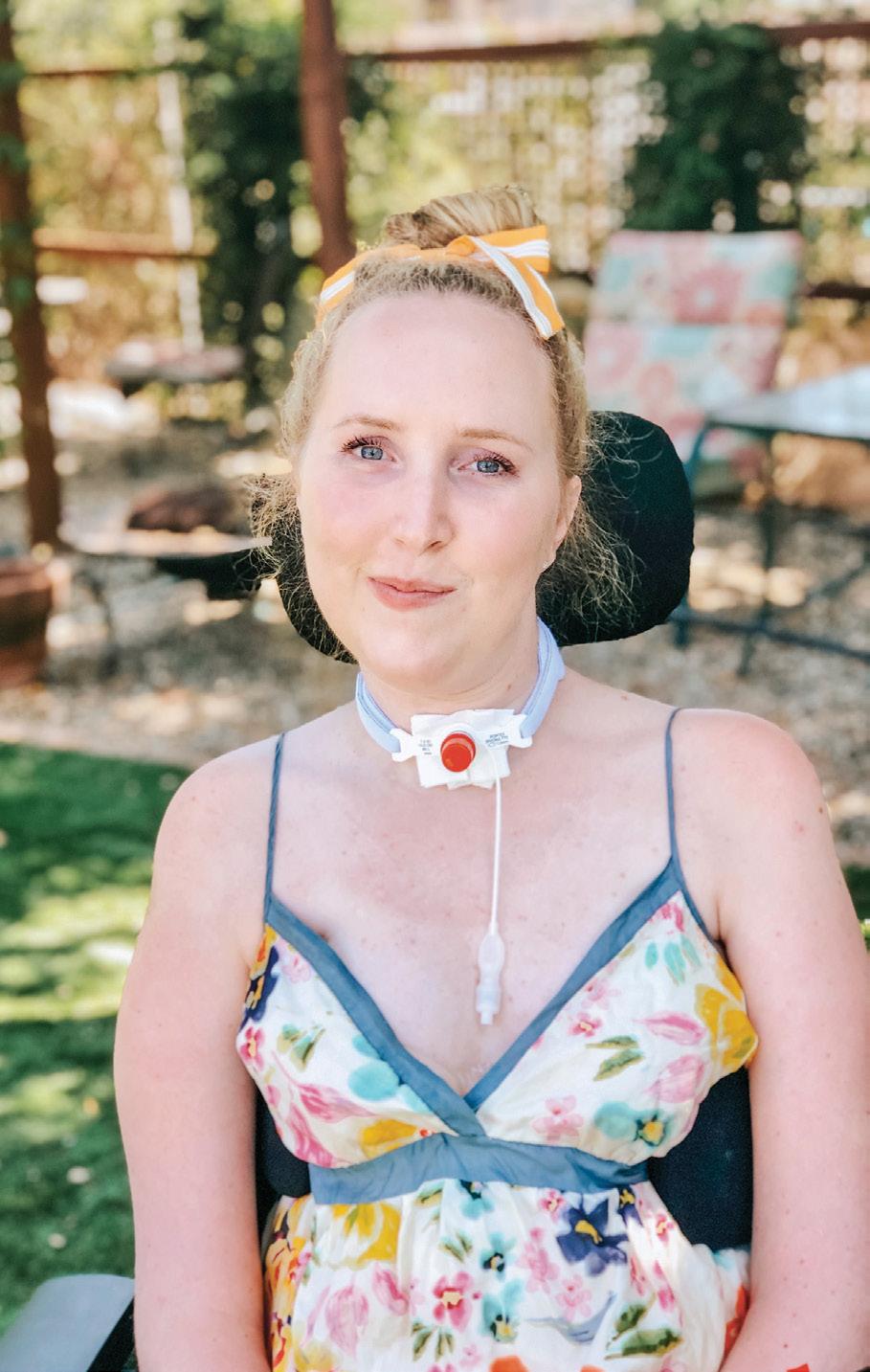
make art. Do you think that communal experience is informing the art that you make?
GF: I think so. The space is a beautiful, inspired place for creativity. The arts were really instrumental to my recovery and my state of mind. I was 17 at the time. That was 10 years ago and we didn’t have a physical facility then, but that was always my ultimate dream. We did community programs and that type of thing before getting our physical space a couple years ago. Now, the Clubhouse brings everyone together all the time.
TGL: Music performance was also a big part of your life. How do you keep music in your life today?
GF: I knew music would always be with me. I studied classical piano, cello, and later guitar. I was active with

music performance, but after I lost my physical abilities, I still had that passion in my heart. It’s just in a different form now. But I also graduated from UCSB with a music composition major and I’ve written pieces for the Santa Barbara Chamber Orchestra and collaborated with the State Street Ballet Academy. Collaborating with others is so much fun. You wouldn’t be able to do all this in a place other than somewhere like Santa Barbara. It’s a really amazing arts community.
TGL: What prompted you to create your nonprofit, to give back to the community in this specific way?
GF: Music and art gave me a sense of purpose and joy, and after my paralysis, I realized how powerful creativity is in helping people heal, connect, and thrive. I’ve been blessed in my own life with many opportunities in the arts and feel like I have the privilege to be able to now offer similar opportunities to others facing similar challenges. Everyone – whether they have a disability or not – faces challenges
and hardships. But when we gather in an inclusive creative environment, we see our shared humanity, our similarities, and the joy of simply making art side by side.
TGL: In general, how successful do you feel philanthropy is in breaking down barriers for those with disabilities?
GF: Nonprofits that intentionally weave accessibility into their missions play a huge role in shaping a culture that sees inclusion not as an afterthought, but as essential. Disability is something everyone will encounter at some point – whether in their own life or through a loved one. The more exposure we all have to inclusive environments, the more natural it becomes to value difference and belonging.


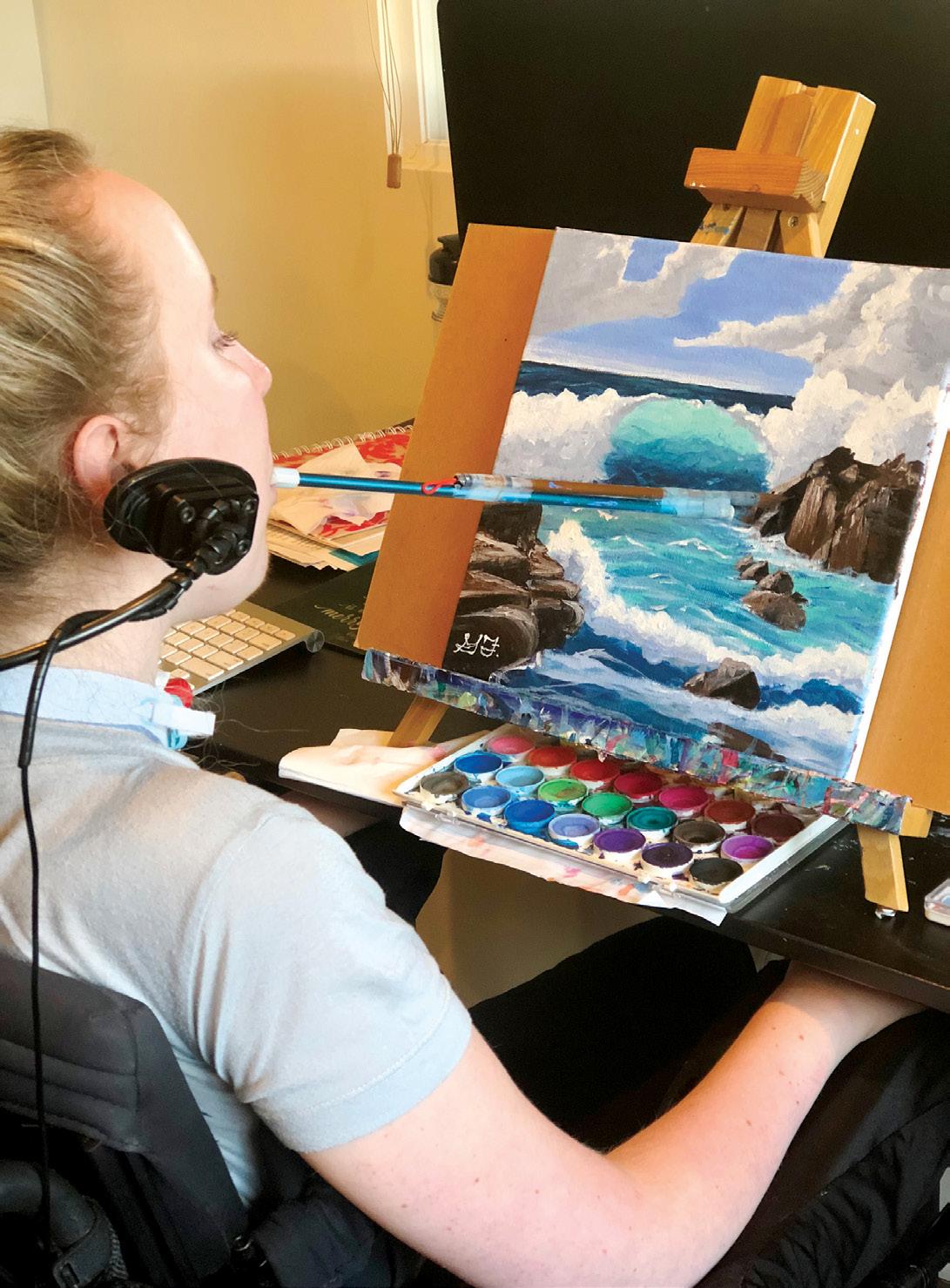
TGL: What is the role of philanthropy in helping foster community for those with disabilities and fostering understanding, integration, and empowerment?
GF: Philanthropy and nonprofits can help plant the seeds. By supporting programs and spaces that are inclusive, funders are not just helping individuals with disabilities – they are strengthening the whole community. It’s about empowerment, understanding, and ensuring that everyone has the chance to participate fully in life.
TGL: What do you imagine people might not realize about people living with disabilities?
GF: Isolation is a huge problem. It’s a problem for everyone, but especially for people with disabilities. Covid made it worse. There’s a stigma attached to having a disability. After my incident, some of my friends were hesitant to invite me to things. They thought I was still sick and my situation was so severe. They didn’t feel I was capable of doing what they were doing. They’d say, ‘Let’s go visit Gracie,’ but I don’t want people to visit me – I’ve
“Music and art gave me a sense of purpose and joy, and after my paralysis, I realized how powerful creativity is in helping people heal, connect, and thrive.”
grown to hate the word visit – I want to hang out with them and do what they’re doing.
It becomes a thing where, I mean, I have my nurse, my friend, that helps me out, but a lot of times I’ll have her and my parents that help me, but I get sucked into a hole if I’m not careful.
TGL: Where do you see your foundation in five years? What does success look like?
GF: I hope to someday own a building so we can leave a legacy here in Santa Barbara. Perhaps expand our model into other communities. However, true success would be when spaces like ours are no longer the exception but the norm – where people of all abilities can walk into a classroom, studio, or theater and feel welcome.


Advocacy
“When the world is silent even one voice becomes powerful.”
– Malala Yousafzai

Fostering Abilities, Creating Community
For over 80 years, Hillside in Santa Barbara has been committed to building a community of compassion and dignity for people living with intellectual and developmental disabilities.
Michael Rassler, Hillside’s President/ CEO, notes that “The disabled community is the largest minority group in the nation. In addition to the health and welfare of residents, we focus on integration, inclusion, and acceptance. Real inclusion means Hillside residents aren’t on the outside looking in, but that they are an active, fully engaged, and intricate part of the mosaic that is Santa Barbara.”
Being part of the community means that it is Hillside’s responsibility to make sure residents experience and enjoy all that Santa Barbara has to o er.
“Hillside was recently awarded a grant to purchase wheelchairs specially designed to navigate all terrains. Residents can now go to the beach and into the water!” says Rassler. “Some people at Hillside have lived in Santa Barbara their entire life, and have never been to the beach. They had never dipped their toes in the water until last year. And the smiles on their faces and the joy expressed, it’s incredible.”
Hillside was founded in 1945, in part with the help of Hollywood director George Cukor, whose niece lived with cerebral palsy. Eighty years later, Hillside remains one of the country’s most reputable residential communities for people living with moderate to severe intellec-
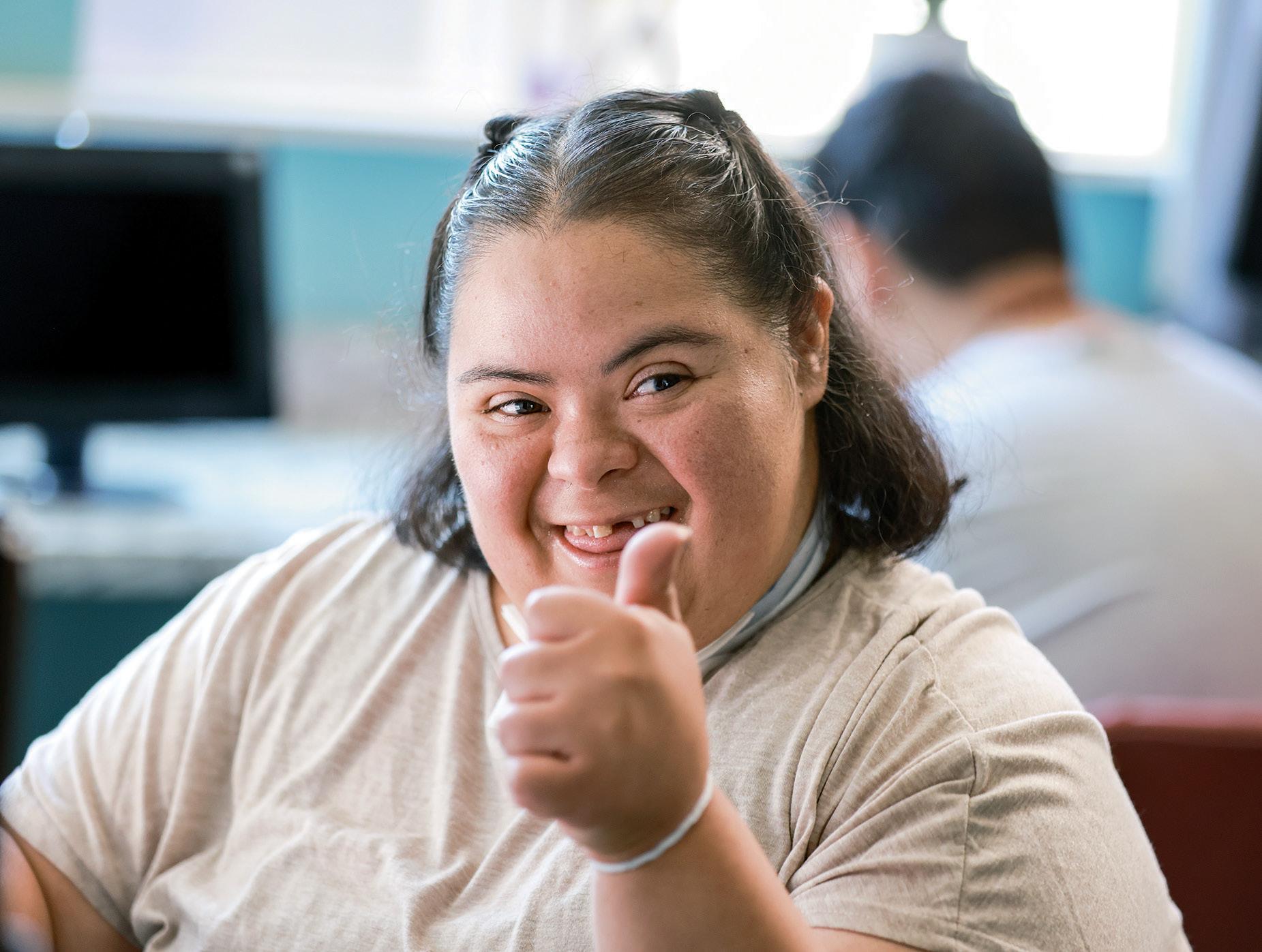
tual and/or developmental disabilities (I/DD). As an intermediate care facility (ICF), Hillside is home for up to 59 fulltime residents with varying disabilities such as: cerebral palsy, Down syndrome, and autism.
Procuring these adaptive wheelchairs is just one example of Hillside’s commitment to inclusion and integration for their residents. Having access to the greater Santa Barbara community truly enriches their lives.
Active engagement is only possible thanks to Hillside’s dedicated and
incredible team of professionals. For a population that’s over 80% non-ambulatory, every trip to the beach, to a concert, even to Disneyland, requires the costly, but necessary help of oneon-one aides. It is no small task to arrange and execute these trips. However, these professionals ensure residents’ safety and comprehensive care during every outing, and that truly makes all the di erence.
Or, as resident Brad puts it, “Hillside helps me do the things I always wanted to do.”



“F or my sister, Lana, Hillside has been more than a place to live – it’s been a place to thrive and truly feel at home. The sta ’s compassion, respect, and attentive care honor residents’ individuality, while the residents themselves bring such unique personalities and needs. Together, they make Hillside a truly special part of our community.”
– Alma Janabajab, Board Member and Sister of Hillside Resident
Alma with resident, Daisy, at Hillside’s Disability Independence Day Festival
Investing in Direct Support Professionals (DSP’s)

Recent federal funding cuts to Medicaid are negatively a ecting programs for people with disabilities all around the country, and Hillside is no di erent. Hillside residents live far below the poverty level. To ensure that they’re living their most fulfilling lives, Hillside must raise approximately $900,000 (or, roughly $15,000 per resident) annually. These funds support individualized therapeutic treatments, life-skills training, and engaging recreational activities designed to promote abilities and enrich the lives of every resident.
Attracting and retaining DSP’s is critical to providing each Hillside resident with opportunities they otherwise would not have.
“We see ability, not limitations. By supporting each resident in living a life of purpose, connection, and dignity, we are able to provide an inclusive environment where people thrive.”
– Brad Frohling, Hillside Board Chair
To provide a home for adults with moderate to severe intellectual and developmental disabilities that supports their efforts to maximize their physical, cognitive, social, and emotional abilities, so that they can attain their highest level of independence in an environment where they are treated with dignity and respect.
SCAN TO DONATE

Hillside hillsidesb.org
1235 Veronica Springs Road
Santa Barbara, CA 93105
(805) 687-0788
Contact: Cheryl Sweeney
KEY SUPPORTERS
Community Friends of Santa Barbara
Ann Jackson Family Foundation
Santa Barbara Foundation
June G. Outhwaite Foundation
Williams-Corbett Foundation
Hutton Parker Foundation
Jim & Marcia Wolfe
St. Francis Foundation
Santa Barbara Women's Fund
Chumash Foundation
Peter Troesch
Jerry & Carol Smith
Towbes Foundation
Chief Development O cer (805) 687-0788 x123 csweeny@hillsidesb.org

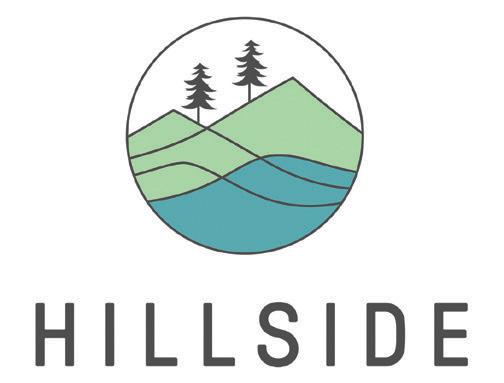
“
Thomson Charitable Foundation
City of SB Human Services
Latkin Charitable Foundation
Susan & Raymond Dingman
Henry W. Bull Foundation
Jim & Robin Steedman
Gary Simpson /
Santa Barbara Home Improvement
Julie Willig
Nancy Read
Theresa and Phil Salzwedel
David and Louise Borgatello
Smith Family Foundation
The Many Ways to Give...
By Check: Hillside House
1235 Veronica Springs Road Santa Barbara, CA 93105
By DAF or Stock Transfer: Tax ID# 95-1816019
By Credit Card: hillsidesb.org/donate
A Light in Dark Times for Immigrant Families

In a small corner o ce of the Shoreline Community Church, immigrants can find a much welcome pathway to the American Dream. Immigrant Hope, founded by Diane Martinez, is a beacon of its very name for families navigating the complex journey toward citizenship and integration. Although the organization began as a simple driver’s license program in 2012, it has blossomed into a comprehensive immigration support network that’s changing lives throughout Santa Barbara County while o ering an education program.
Immigrant Hope’s humble beginnings o ered more than just aid in procuring a driver’s license: it o ered dignity, safety, and a pathway to fuller participation in community life. “We saw hundreds of people gain not just their licenses, but confidence and a sense of belonging,” recalls Executive Director Karla Can, who has guided the organization’s remarkable expansion.
Today, Immigrant Hope operates as a Department of Justice-certified provider of low-cost immigration services, o ering everything from DACA renewals to citizenship applications and
crime victim benefits. The organization also has an education program, which o ers a civics engagement class that prepares people for their citizenship interview, a driver’s license program, and a community engagement class. What sets the organization apart is its Christian foundation and commitment to building genuine relationships with clients. “Our mission is rooted in using education and immigration programs as a way to share the gospel with immigrants,” Can explains. “We’re walking alongside families during some of the most vulnerable moments of their lives.”
When Rebecca, an undocumented youth, approached Immigrant Hope, she was seeking DACA status – a critical protection that would allow her to work and study legally. With the organization’s guidance, she successfully obtained DACA in 2016. But the team didn’t stop there. Years later, they helped Rebecca navigate the complicated process of obtaining a green card, which required her to return to Guatemala for an interview. Today, Rebecca enjoys permanent residency status and represents the transformative power of
comprehensive immigration support.
Can’s leadership has been instrumental in expanding the organization’s reach. Now employing three accredited representatives, Immigrant Hope handles increasingly intricate cases while maintaining its original vision of compassionate service. Recognizing that immigration status is just one piece of the integration puzzle, Immigrant Hope recently launched a Family Preparedness Plan Initiative.
“We noticed increasing client anxiety and realized that personalized family preparedness plans could provide peace of mind,” Can notes. “Ninetyfive percent of our clients from Mexico have found these consultations helpful, particularly because I can relate to their cultural background and build trust.”
The Lord is calling us to be the salt and light of the world and through Immigrant Hope’s immigration and education programs, it strives to love and serve the immigrant community.
"We have been enthusiastic supporters of Immigrant Hope SB for the past decade. It is one of the only groups in Santa Barbara that is able to o er inexpensive and professional help to immigrants in our community who seek a path forward with their status in the USA. We have been especially moved by the compassion and professionalism shown by the sta of Immigrant Hope to all who come for their support."
– Gerry & Aimee Doran Donors
Many have entered these doors from di erent walks of life, seeking help. It has been a place of hope and refuge for the immigrant community in Santa Barbara.
Help Provide Compassion, Community, and Citizenship for Vulnerable Immigrants
Acontribution of $8,600 funds a full year of civics education classes, providing dozens of aspiring citizens with the knowledge and confidence they need to pass their citizenship exams. These classes go beyond test preparation, building community connections and democratic understanding that benefit our entire region.
Your gift of $1,750 covers the complete citizenship process for one individual – from initial consultation through final interview preparation. This includes eligibility screening, application assistance, document preparation, and ongoing support throughout what can be a lengthy journey.



Immigrant Hope Santa Barbara's goal is to build relationships with our neighbors by providing Immigration and Education Services. Their prayer is that this will open doors to share God's love and the hope of Christ provided in the gospel.
The Many Ways to Give...
Volunteer teacher Heather (right) is helping students get prepared for their citizenship test, which requires the ability to speak, read, and write in English and memorize 100 U.S. civics questions.
Immigrant Hope Santa Barbara's sta celebrating at the annual fall fundraising event, Harvest for Hope.
Protecting and Guiding Immigrant Survivors

In perhaps one of the most challenging times for undocumented immigrants in American history, the Legal Aid Foundation of Santa Barbara County (LAFSBC) is providing a ray of hope.
The nonprofit civil law firm, which specializes in providing high-quality civil legal services to low-income and other vulnerable residents to ensure equal access to justice, also o ers an immigration program as part of its family violence prevention services.
This vital program focuses on assisting survivors of intimate partner violence who are undocumented, helping them apply for U visas that allow them to legally work while they safely recover from abuse, without fear of deportation. Despite the challenging political climate, this immigration assistance program provides a compassionate, critical pathway to safety and stability for vulnerable families.
“Undocumented survivors have always been reluctant to come to us for emergency assistance like a restraining order, especially when their abuser threatens to use their immigration status against them,” says Jennifer Smith, LAFSBC’s executive director. “When their abusive partner is the primary breadwinner, it leaves the family and children particularly vulnerable economically, which in turn makes it more di cult to stay safe and away from the abuser.”
Legal Aid’s attorneys guide victims through the often overwhelming U visa process, o ering survivors, who step out of the shadows to cooperate with law enforcement, protection from deportation. The agency works collaboratively with the local district attorney’s Victim Witness Assistance Program.
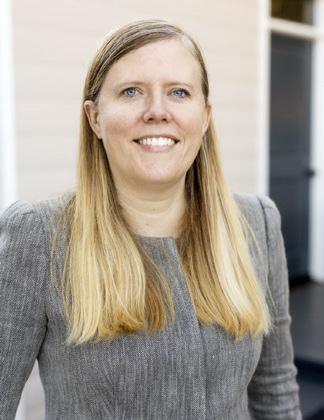

“The process is very complicated, so having legal assistance is essential,” Smith says. “You need a lawyer who understands how it works to do it correctly, so something doesn’t fall through the cracks. If the client continues on the right track, they can ultimately get a green card, become a permanent resident, and even a U.S. citizen. To see these families thrive and recover from the trauma of their abuse and not have to endure additional fear from immigration authorities is just really amazing. Holding abusers accountable makes our communities safer.”
LAFSBC also provides clients with information about upto-date changes in the law and increased risks, and helps others in the community navigate the current crisis.
“We connect people to trusted sources of assistance, provide information on immigration topics, and help people learn their rights as it relates to immigration enforcement e orts in the community,” Smith says. “We also connect them to other trusted resources.”
LAFSBC’s other civil legal services – including representing tenants at risk of eviction, consumer protection, disability advocacy, and elder abuse and family violence prevention –continue unabated.
“It’s a tough time, but we’re not abandoning people,” Smith says. “We want to see it through. That’s why we’re here.”
"As a former legal aid attorney myself, I know first-hand the impact legal representation has on the lives of our clients. Having an attorney to help you through a life crisis ensures family safety, prevents housing insecurity, and provides economic stability. No matter who you are or where you come from, everyone deserves a fair shake in our legal system."
– Jennifer Smith Executive Director
The Legal Aid Foundation attorneys attend an outreach event for area veterans.
The Legal Aid Foundation provides free civil legal services to families and individuals in need.
Help Balance the Scales of Justice
There’s no constitutional right to counsel for civil legal services. While the Legal Aid Foundation of Santa Barbara County receives some limited funding from the State Bar and local governments, the nonprofit relies on contributions from the community to be able to provide representation for the low-income and vulnerable residents who need their services most.
Your donations can help balance the scales of justice.
• $300 - Covers the costs of a “Know Your Rights” event.
• $1,500 - Pays the federal filing fee for an “adjustment of status” green card application.
• $5,000 - Funds full attorney representation to help a family, who have been domestic crime victims, through the U visa process.
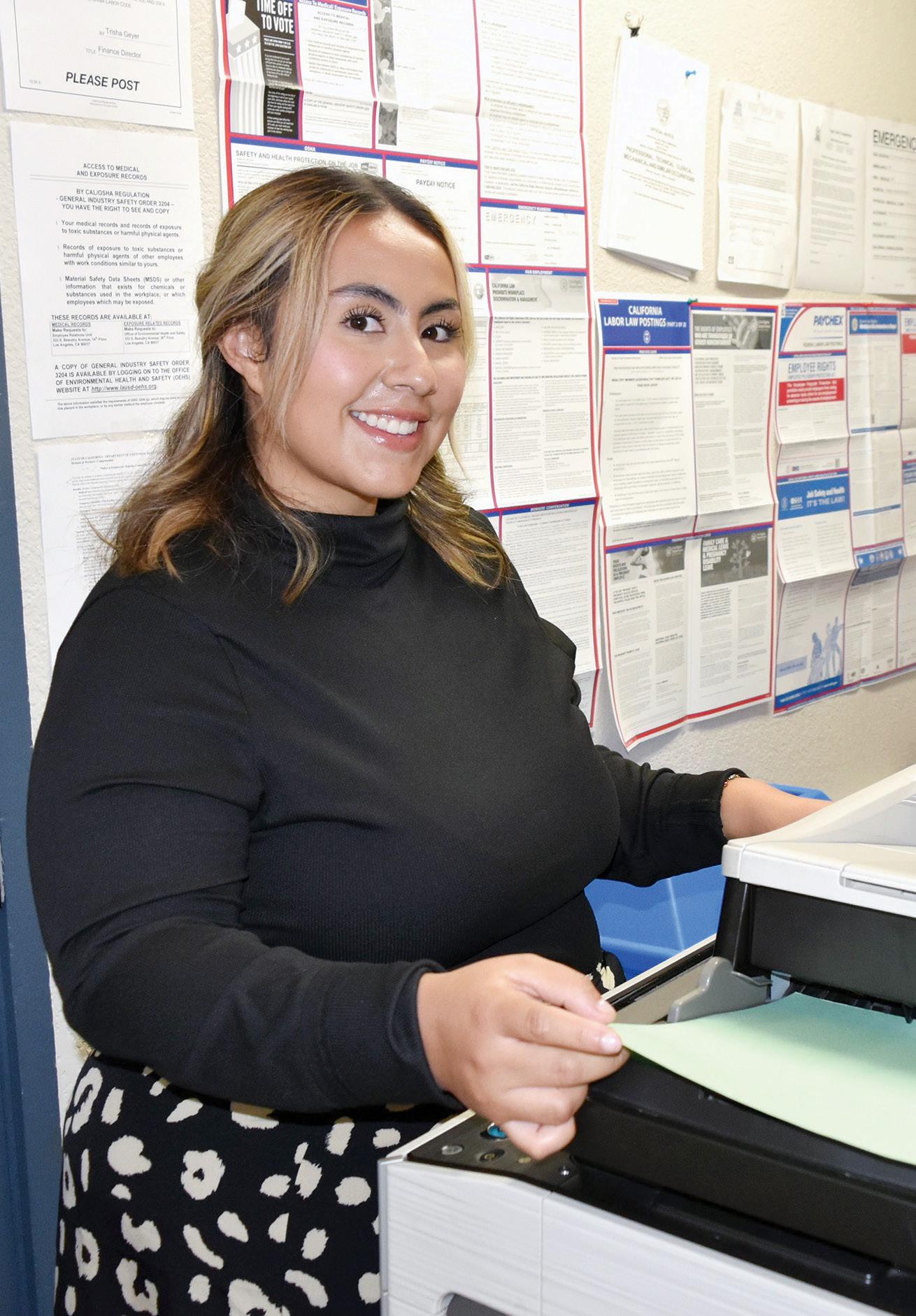
To provide high-quality civil legal services to low-income and other vulnerable residents in order to ensure equal access to justice. They change lives through direct representation, legal advice and information, and community education. Since 1959, Legal Aid has provided legal services to those most in need in Santa Barbara County.
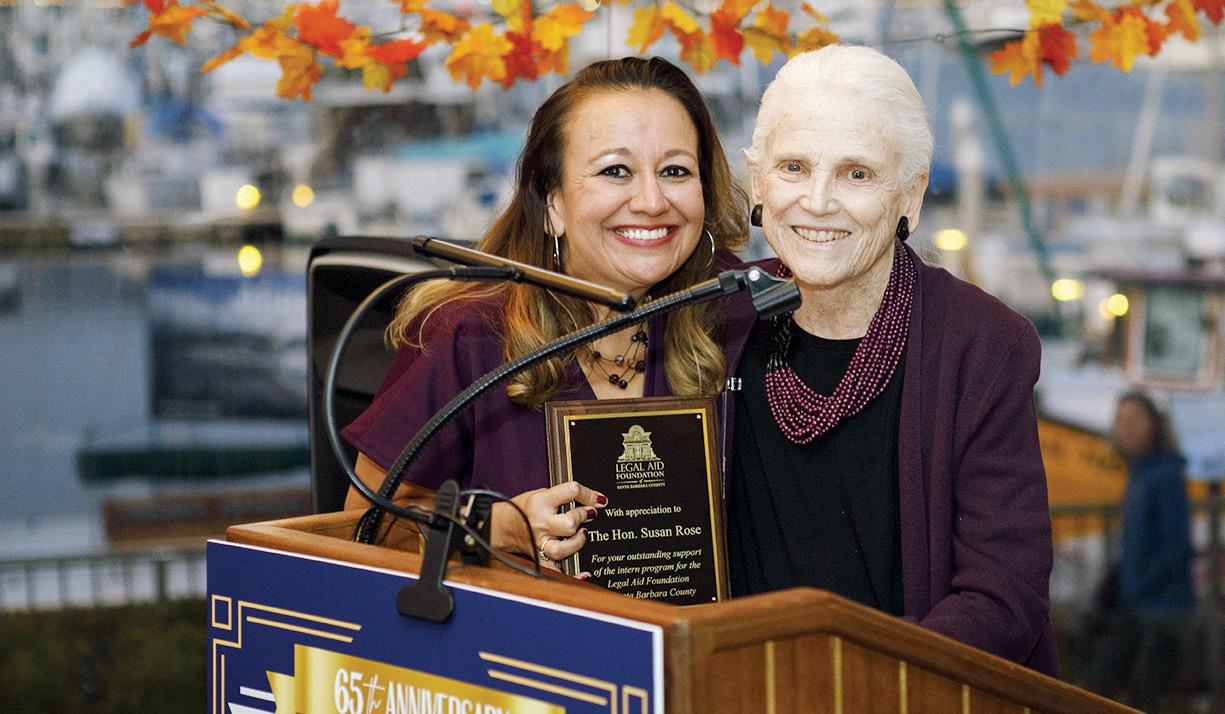
KEY SUPPORTERS
The State Bar of California
The Santa Barbara Foundation
The Santa Ynez Band of Chumash Indians Foundation
Montecito Bank & Trust
American Riviera Bank
Cappello & Noël
Gursey | Schneider LLP
Alan Blakeboro, President
Crystal Forsher, Vice President

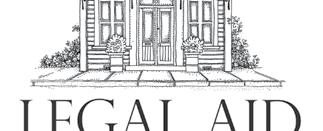

Cristal Rodriguez, Secretary
Susan Thompson, Treasurer
Wendy Kosche
Jena Acos
Bill Felstiner
Saji Dias Gunawardane
Julianna Malis
Claire Mitchell
Garry Tetalman
The Many Ways to Give...
Legal Aid Foundation of Santa Barbara County www.lafsbc.org (805) 963-6754
Contact: Jennifer R. Smith
Executive Director (805) 963-6754 Ext. 103 jsmith@lafsbc.org
By Check:
Legal Aid Foundation of Santa Barbara County
301 E. Canon Perdido Street Santa Barbara, CA, 93101
By DAF or Stock Transfer: Tax ID# 95-2112634
By Credit Card: lafsbc.org/donate
Board Member Crystal Forsher honors Susan Rose for her ongoing support of the Legal Aid Foundation.
The Legal Aid Foundation employs a team of attorneys and other support sta to serve the community.
Born from Crisis, Built on Community Trust
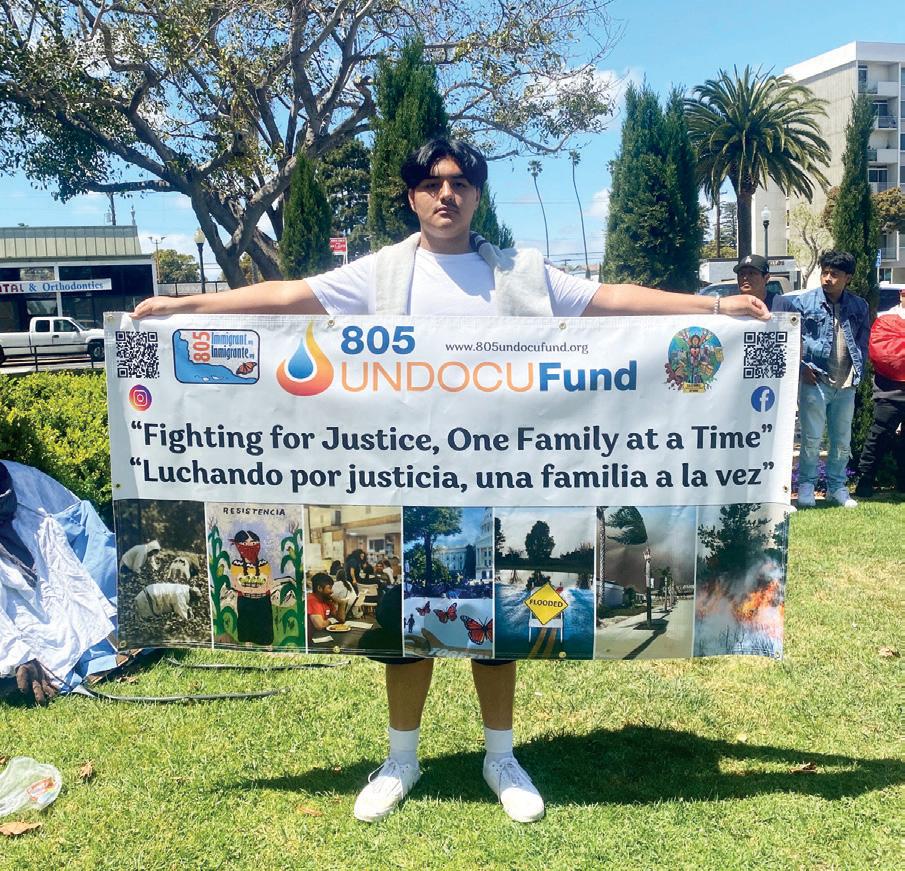
When disasters strike the Central Coast, not everyone has equal access to help. For those in the 805 community who are undocumented immigrants, traditional safety nets remain frustratingly out of reach. That’s where 805 UndocuFund steps in – a grassroots organization that is a beacon of hope for families facing their darkest hours.
“The inability to access safety net programs due to legal status exacerbates the impacts of disasters,” explains Primitiva Hernandez, the organization’s executive director. What started as an emergency response to the devastating Thomas Fire has evolved into something much larger – a comprehensive support system for immigrant and migrant families across San Luis Obispo, Santa Barbara, and Ventura counties.
805 UndocuFund’s origin story reflects the very community it serves. The organization was founded by activists with personal connections to immigration issues, including Hernandez herself, who once received assistance as a client during the Thomas Fire and Montecito mudslides. Today, four out of six sta members began as volunteers.
“These individuals contribute to the economy, work in various sectors, and have established lives in the U.S. with many having been here for over 10 years,” Hernandez emphasizes. “Attacks on undocumented communities a ect everyone, as we all live in mixed-status households or interconnected communities.”
The organization has proven its e ectiveness through action. In just three months, they raised nearly half a million dollars to support almost 500 families impacted by family separations. Their success stems from something invaluable: community trust.
As disasters have changed, so has 805 UndocuFund’s response. The organization recently completed its first threeyear strategic plan, reframing their mission around what they consider the true disaster: “The lack of comprehensive and humane immigration reform.”
Their work now includes the 805 Immigrant Rapid Response Network, a community-led initiative providing support during immigration enforcement actions. Trained volunteers respond to ICE activity reports, o ering legal observation, know-your-rights education, and immediate assistance. The network covers all three counties, creating a safety web for the region’s most vulnerable residents.
The organization’s impact can be seen on people like Amador. A single father of two, Amador faced a perfect storm in 2024 when his daughter tested positive for COVID-19. He took unpaid leave to care for her, only to be laid o days later due to heavy rains. Struggling to make ends meet, Amador turned to 805 UndocuFund and was able to receive the financial support he desperately needed.
“This assistance made it possible to pay rent that month,” Amador shares with relief and deep gratitude.



Fiscally sponsored by the 805 UndocuFund, the California UndocuFund Network is a statewide mutual aid network of organizations serving undocumented immigrants impacted by disaster, with a mission to transform systems, policies, and practices to meet the needs and guarantee the safety of Californians.
The 805 UndocuFund first launched in January 2018 in response to the Thomas Fire and Montecito mudslides. They mobilize resources when disaster hits, providing short-term financial relief to undocumented residents, and engage the immigrant and migrant community to advocate for long-term systems change.
Be a Lifeline for our Community’s Most Vulnerable
When you donate to 805 UndocuFund, you’re not just giving money – you’re providing dignity, stability, and hope.
$1,000: provides direct disaster relief so immigrant and migrant families can cover urgent needs like housing, food, and medical care while standing strong in their rights.
$5,000: strengthens the rapid response network and expands community organizing protecting immigrant and migrant families during disasters and empowering them to defend their rights.
$10,000: powers long-term systems change, ensuring immigrant and migrant voices shape disaster planning, recovery, and policies that protect their dignity and rights.
Your generosity transforms lives like Amador Gonzalez’s, ensuring that when disaster strikes, no family faces it alone.

At 805 UndocuFund, they believe in the power of community-driven change. As the torchbearer of the 805 Immigrant Coalition, they are committed to amplifying the voices and advocating for the rights of immigrant and migrant residents in Ventura, Santa Barbara, and San Luis Obispo counties.

The 805 UndocuFund has successfully developed a proven, grassroots-led, culturally and linguistically competent disaster relief model serving undocumented communities. They are proud to be a model looked to by other startup UndocuFunds not only in California, but across the United States.
805 UndocuFund 805undocufund.org (805) 200-8471
Contact: Primitiva Hernandez Executive Director (805) 284-7067 phernandez@805undocufund.org
“A s farmers, we are concerned for the safety of farmworkers, as well as impacts on local farms throughout the area who now are facing critical worker shortages. We wholeheartedly support the excellent, important work of 805Undocufund!!”
– Cynthia King
KEY SUPPORTERS
California Wellness Foundation
California Community Foundation
California Endowment
California Fire Foundation
Communities for a New California Education Fund
Kaiser Permanente
Latino Community Foundation
McCune Foundation
Santa Barbara Foundation
The Fund for Santa Barbara
The Tides Foundation
Ventura County Community Foundation
Weingart Foundation
Zegar Family Foundation
Over 2,000 Individual Donors
The Many Ways to Give...


RETURN TO FREEDOM
Help Preserve the Last of America’s Wild Horses

Return to Freedom (RTF) is a national nonprofit wild horse conservation organization. Founded in 1997 by Neda DeMayo, RTF is a solution-focused organization known for breaking new ground and pioneering minimally intrusive management for wild horses and burros both on and o the range. RTF’s work rests on four cornerstones: sanctuary, education, conservation, and advocacy.
Since 1998, Return to Freedom has operated its American Wild Horse Sanctuary in Lompoc, California, which has served the local, national, even international community as an experiential educational center as well as providing refuge for hundreds of rescued mustangs and burros, with a strong focus on keeping family bands and bonded social groups together – even reuniting families torn apart during government roundups.
Return to Freedom also operates a satellite in San Luis Obispo and manages the land using holistic regenerative practices. The organization’s conservation work was born out of a deep commitment to preserving what is left of our open spaces, natural resources, and wildlife. Founder Neda
DeMayo says, “Return to Freedom’s Sanctuary is an environment where, through direct communion with the natural world, children and adults alike can recognize nature as our home and not something that needs to be conquered.”
While herds of wild horses still roam free on public lands in the West, their existence is threatened by a host of increasing pressures from private livestock grazing, energy extraction, and special interests competing for the use of our public lands and the natural resources there.
Under a multiple use management policy, the Bureau of Land Management (BLM) manages wild horse and burro populations by rounding them up and removing them from their ranges. This antiquated policy is not a solution and has resulted in more than 65,000 of these majestic creatures warehoused in overcrowded government corrals costing taxpayers $100M+ a year while solutions exist to manage herds on their rangelands. Under Return to Freedom’s leadership and care of over 2,500 acres on the Central Coast of California, the organization provides a safe haven for over
400 wild horses and burros who have been removed from their habitats on America’s public lands.
But what makes the nonprofit’s model so unique is that besides o ering sanctuary, it is also an education and conservation organization. Return to Freedom hosts a wide spectrum of experiential programs both on the range and at their American Wild Horse Sanctuary, understanding that knowledge is a potent catalyst for transformational change. Their conservation e orts include regenerative holistic land management, conserving rare, diverse, and disappearing bloodlines of the original Spanish horses that arrived with early explorers, and non-hormonal reversible fertility control to slow down reproduction and manage population growth.
Despite the crucial work Return to Freedom is doing, the capturing and separating of these wild animals continues at a frantic pace. Just this past September, the U.S. Forest Service began a helicopter roundup of nearly 350 wild horses on the Devil’s Garden Plateau Wild Horse Territory in Northern California. Despite safer, more humane options that slow herd growth, deadly and costly roundups continue.
Galahad’s Family Band at Return to Freedom. (photo by Irene Vejar)


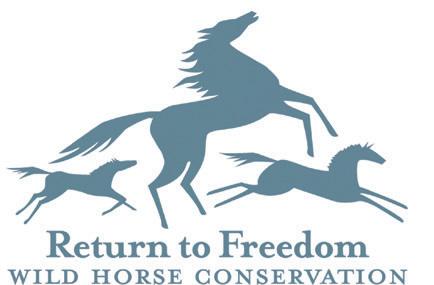
Return to Freedom is dedicated to preserving the freedom, diversity, and habitat of America’s wild horses and burros through sanctuary, education, advocacy, and conservation, while enriching the human spirit through direct experience with the natural world.
Every Herd Needs a Hero
By supporting Return to Freedom, you can help America’s wild horses and burros by supporting Return to Freedom’s advocacy work to end the horse slaughter pipeline, fight policies that continue to capture and stockpile mustangs and burros in overcrowded corrals, and be part of a growing legacy of sanctuary expansion.
The Many Ways to Give...
RTF Burros. (photo by Bari Lee)
Finding a Loving Home for Every Cat

Tiny
Lions™ require a bit more patience than your average shelter cat, however kittens born outdoors deserve the
ly powerful seeing these vulnerable cats grow their confidence and develop trust in humans.
In the sun-drenched expanses of Santa Barbara County, where coastal breezes carry whispers of isolation, a white cat named Snow embodied the precarious edge of survival. Rescued as a cat with “behavioral issues,” and a penchant for swatting at scents and strangers, Snow spent over a year at ASAP Cats, defying easy adoption. “She loved almost everybody, except other cats,” recalls Tanner Tait, the organization’s marketing and development coordinator. After several trial fosters and adopters, Snow found solace through new scenery. Transferred to a partner shelter, she landed in a spacious catio, thriving in seclusion. “That’s one of those things that highlights our behavior program,” says Executive Director Jessica Wiebe. “We have great partnerships that could give her a change of venue.”
Founded in 1989 as the Animal Shelter Assistance Program, ASAP Cats has evolved into Santa Barbara County’s premier high-save cat shelter, boasting a 100 percent rehoming rate for adoptable felines. Last year alone, the organization
served 1,318 cats, including 881 adoptions and 136 lifesaving surgeries. Its mission – to save and serve all cats through comprehensive programs – stems from a volunteer-driven ethos. With over 200 volunteers and just 10 sta members, ASAP addresses feline needs often overlooked elsewhere.
A recent merger with Catalyst for Cats in 2024 amplified ASAP’s reach, incorporating care for over 400 community cats in northern feral colonies in Santa Maria.
The merger dovetails with ASAP’s newest initiative: a mobile veterinary unit, donated by C.A.R.E.4Paws that launched in August. Designed for lowor no-cost services like spay/neuter and vaccinations, it targets underserved areas, including remote New Cuyama. In addition to serving pet families, ASAP’s unit provides care for local community cat colonies.
Specialized programs set ASAP apart. Their Tiny Lions™ initiative socializes feral kittens aged eight weeks to three months, turning “spicy” arrivals
extra attention and care. It’s especial-
into adoptable companions. Their compassionate hospice care program legally adopts terminally ill cats from county shelters, ensuring peaceful final days in foster homes. The Working Cats program places independent felines in barns, farms, or nurseries, while fostering o ers temporary havens for neonates.
Perhaps the most profound measure of ASAP’s impact comes in stories like that of a mother whose son was struggling with mental health. When other organizations refused to allow her to adopt a cat due to financial constraints, ASAP saw an opportunity. “I don’t believe in barriers,” says Wiebe. The family received not just a cat but ongoing support through ASAP’s food pantry program. The mother later returned, tearful with gratitude, reporting her son’s significant improvement.
After 36 years, ASAP Cats continues to evolve, driven by the simple recognition that saving cats means understanding both their individual needs and the complex web of human relationships that surrounds them.
Fueling Feline Futures
Support ASAP Cats in transforming lives.
• $250 vaccinates 25 cats.
• $500 buys five cases of kitten formula or special diet food.
• $1,000 pays for 10 days of kitten food or spay/neuter for 20 cats.
• $2,500 enables broken limb repairs or FIP treatment for one cat.
• $5,000 funds two weeks of food for community cats or emergency surgeries.
• $10,000 provides microchips for every cat annually or routine blood panels for seniors in hospice.
Donate to the Lester Fund for expensive procedures or the Oscar Fund for kitten care.

Despite not favoring the company of other cats, Snow often had pleasant encounters with humans passing through ASAP's shelter. She simply needed a bit of extra attention while finding a suitable home for her — something ASAP is always happy to provide.
BOARD OF DIRECTORS:
Bernard Kelmenson, Board President
Helene Segal, Vice President
John Jostes, Treasurer
Charles Clouse, Secretary
Sarah Bacon
Linda Badal
Dana Goba



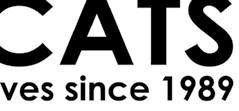
ASAP Cats has been saving lives since 1989, serving the cats of Santa Barbara County through various programs and life-saving initiatives, including but not limited to: adopting and fostering, veterinary care and behavioral support, alternate placement and the Tiny Lions™ program, and more!

ASAP has primarily been a brick and mortar organization despite occasional house calls and TNR requests in the field, but it was time for a new endeavor: the Mobile Care Unit, capable of bringing expert and low-cost services all throughout the community.
The Many Ways to Give...
ASAP Cats
www.asapcats.org
5473 Overpass Road #101
Goleta, CA 93111
(805) 683-3368
Contact: Jessica Wiebe
Executive Director (805) 705-6575
jessica@asapcats.org
By
Check: Animal Shelter Assistance Program
P.O. Box 357 Goleta, CA 93116
By DAF or Stock Transfer: Tax ID# 77-0283500
By Credit Card: asapcats.org/donations
A New Leash on Life

Atlas was born from a single act of empathy — saving a dog doomed for euthanasia at a kill shelter. The nonprofit animal rescue now breathes hope into hundreds of euthanasia-listed dogs. With tender hands and fierce hearts, they heal wounds, restore spirits, and reinstate joy in wagging tails!
Emily Everett-Nelson’s life changed the day she volunteered to work at a dog shelter.
On her first day, Everett-Nelson recalls, “They showed me the list of the dogs that were going to be put down. I was like… what do you mean?” She was shocked and utterly disheartened, because the dogs designated to die were all healthy. “I always thought the dogs put down at shelters were super aggressive or really bad medical cases,” Everett-Nelson adds. But that isn’t true in many shelters. Many dogs die because of massive overcrowding – too many dogs come in, and they simply can’t be placed fast enough.
The numbers of animals euthanized are staggering. Approximately 6.5 million companion animals enter U.S. animal shelters nationwide every year, and of those, approximately 1.5 million are euthanized every year.
Without hesitation, Everett-Nelson adopted one of the dogs. She posted the rest of the death-row dogs on social media and saved them all.
From that moment on, Everett-Nelson’s life became a “furry flurry.” She volunteered to go to China to help save dogs. There she bore witness to the untold horrors inflicted on man’s best friend – dogs frozen to death on the streets, dogs dying from starvation, dogs sent to die in meat markets.
Back here in the U.S., there were equally difficult obstacles

Hagrid, a Cane Corso, faced euthanasia in an L.A. kill shelter after a car accident paralyzed his leg. Atlas raced to save him, funding his amputation surgery. After months of dedicated care, Hagrid now runs joyfully on beaches with his rescue pals, his spirit unbroken and thriving, and is currently waiting for his new prosthetic leg to arrive.
in saving dogs – as many rescue operations, for example, were only able to help small dogs. Everett-Nelson seized the opportunity and started Atlas Animal Rescue.
“The first week we opened, we brought 15 dogs from China into the U.S. and got all the dogs adopted. It was a really amazing feat, and it helped give me that ‘oomph’ of ‘I can do this,’” says Everett-Nelson.
Based in Paso Robles, Atlas rescues, rehabilitates, and rehomes abused and neglected dogs, of all sizes, in California and internationally (partnering with Slaughterhouse Survivors in China) and finds them loving homes in the U.S. Typically the dogs come from high-risk shelters (and are on the “kill lists” there), abusive situations, the streets, and internationally from slaughterhouses and off meat trucks.
One of Atlas’ star dogs, Rapunzel, rescued from China, was suffering from a deadly case of starvation and severe mange. Everett-Nelson worked to find her a loving home and now Rapunzel is a healthy, furry, flourishing polar bear of a dog living her best life. The before and after was so astounding, it was featured in a viral video by The Dodo.
Dogs adopted from Atlas are forever a part of their “pack.” As Everett-Nelson says, “Helping save a life brought me more happiness than ever before. And there are so many dogs that need help right now.” Atlas Animal Rescue is their lifeline.
Every Paw Deserves a Home
In an average year, Atlas Animal Rescue saves close to 100 dogs. For 2026, they hope to double that number. The nonprofit spends roughly $150,000 a year on medical, training, food, and transportation. To double that adoption number, they are looking to raise $300,000 to expand their reach and impact and save more dogs.
With time, dedication, love, and the help of dog lovers looking to adopt rather than shop, Emily Everett-Nelson, Founder of Atlas Animal Rescue, is making sure that every dog that comes to Atlas finds a loving, forever home.
Abandoned by her family, Morgan faced death in an overcrowded L.A. kill shelter. Atlas rescued her and poured love and training into her revival. Now, she’s a joyful girl loved by her forever family. With your support, more deserving dogs like Morgan can find happiness and a second chance.
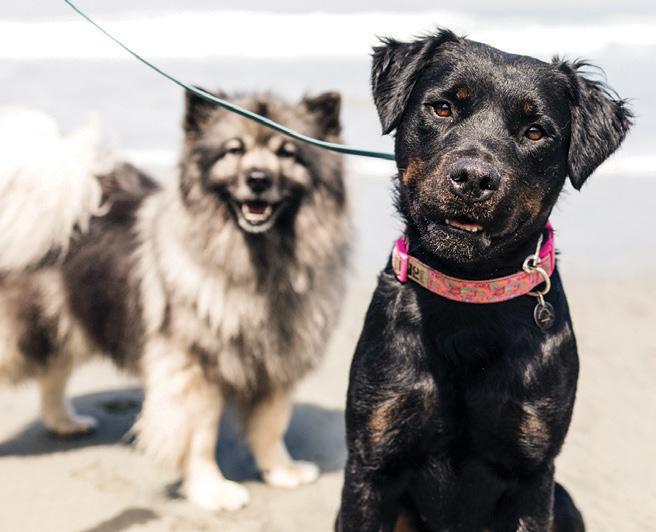
“

Every dog Atlas rescues receives training, preparing them for forever homes. They are whisked on adventures to beaches and beyond, exposing them to new sights and sounds. This joyful exploration builds confidence, ensuring they’re well-adapted, ready to shower their new families with boundless love.

Atlas Animal Rescue is a Paso Robles, CA based 501(c)(3) nonprofit organization whose mission is to rescue, rehabilitate, and rehome abused and neglected dogs both locally and internationally. The nonprofit is dedicated to saving euthanasia-listed dogs from overcrowded shelters, providing urgent medical care, training, and joyful adventures. They transform broken spirits into confident companions, ensuring every wagging tail finds a forever home through compassion, commitment, and community support. “
Saving Marine Mammals, Saving the Ocean, Saving Ourselves

“My goal was always to change the world. You know, nothing too dramatic,” Dr. Sam Dover, co-founder and director of veterinary medicine, research, and conservation at Channel Islands Marine & Wildlife Institute (CIMWI) is honest – if not a bit wry –about his life’s ambition. While surely ambitious, the sincerity is there, and the work speaks for itself.
Dover’s childhood was filled with a passion for the ocean and desire to help injured wildlife. He pursued a career in marine mammal veterinary medicine, which ultimately led him to Santa Barbara. Dover’s desire to contribute to marine conservation was the foundation for establishing a grassroots nonprofit with his wife, Ruth. They’ve made it their mission to rescue and rehabilitate marine mammals that are sick, injured, malnourished, orphaned, entangled, or affected by oil spills, all while promoting ocean conservation.
While rescuing marine mammals remains at the core of CIMWI’s mission, educating youth has come to be a crucial component for the nonprofit. CIMWI teaches that changes in marine mammal health can serve as early indicators of broader ecosystem changes which can also affect people.
“That’s really important,” says Ruth, “to educate and inspire the youth, because our lifespan is limited. They are the next generation that can carry it forward.”
It’s why their flagship initiative for 2026 is the Marine & Wildlife Institute: Lessons in Conservation, a program that will provide free curriculum intended to nurture a deep understanding of humanity’s impact on the ocean’s ecosystems, mammal biology, and behavior, and how we as a community can take action to promote conservation.
But these ambitious initiatives and saving marine mammals require a significant amount of resources and money, as well as a lot of human power... they do it all with just three full-time staff members and 140 volunteers. Although CIMWI is authorized by NOAA Fisheries, the nonprofit must generate its own financial support. Local awareness and support are critical.
As the crisis in our oceans deepens, CIMWI’s growing workload has been taxing their bandwidth. Within just three months earlier this year, CIMWI responded to 473 marine mammals. During the last three years, a myriad of factors – including climate change, pollution, and disease –has contributed to an 80% increase in reports of distressed marine mammals, a 64% rise in rescues, and a 925% surge in domoic acid-related strandings, all of which have strained the nonprofit’s already tight resources.
Dr. Sam Dover puts it plainly: “We need more support to save more lives.” Not just animals’ lives, but the lives of people, as well. A polluted ocean causes an estimated nine million premature deaths annually, enormous economic losses, erosion of human capital, and degradation of ecosystems (NIH).
CIMWI is working to change that. And they’re not just making a splash. They’re making huge waves of impact.

Rescuing a Pacific harbor seal pup.
Northern elephant seal pups returning to the wild.
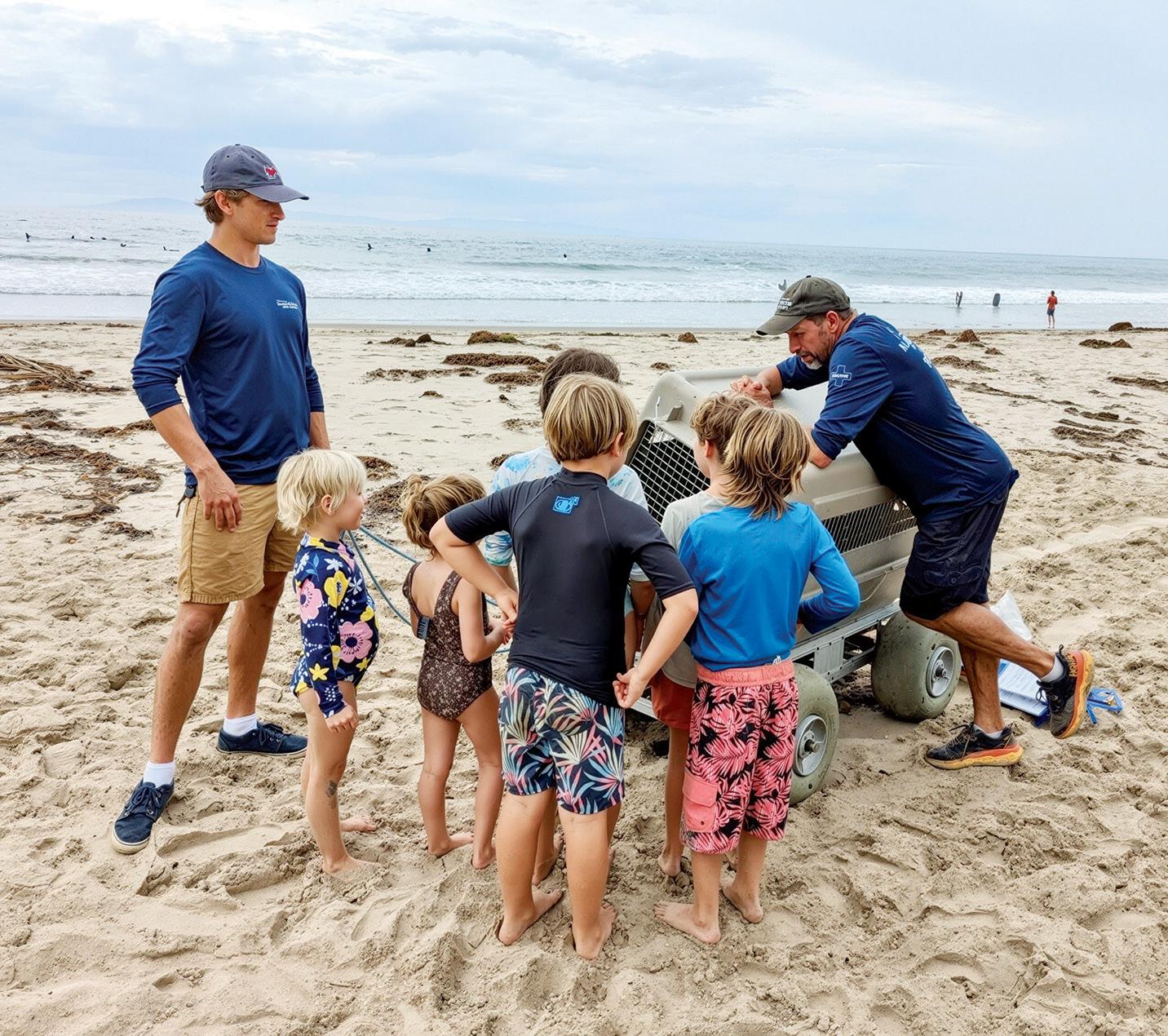
Waves of Impact
Your generous donations to Channel Islands Marine & Wildlife Institute (CIMWI) give marine mammals a second chance at life, and so much more!
• $1,000: Funds critical medical care, fish, and medication for 1 seal or sea lion for 1 month (patients are in rehabilitation for an average of 90 days)
• $3,000: Funds these costs for 1 animal from rescue to return to the wild
• $15,000: Equips CIMWI with a custom, large animal transport cage
• $50,000: Covers CIMWI’s fish cost for 1 year
• $100,000: Outfits CIMWI with a fully equipped rescue truck for emergency response
Channel Islands Marine & Wildlife Institute (805) 567-1506
cimwi.org
Rescue Hotline: (805) 567-1505
Contact: Dr. Sam Dover Executive Director, Founder (805) 452-0752
sdoverdvm@cox.net

“M y friend Tammy found a sea lion washed ashore and very ill. CIMWI rescued and rehabilitated this animal, and I had the privilege of meeting him and helping release him back into the wild. I'll never forget how it felt to watch this sea lion rediscover his freedom in that moment. Thanks to CIMWI for the work that you do and for letting me be part of this sea lion’s journey home.”
– Kevin Costner Academy Award-Winning Actor, Director, and Producer
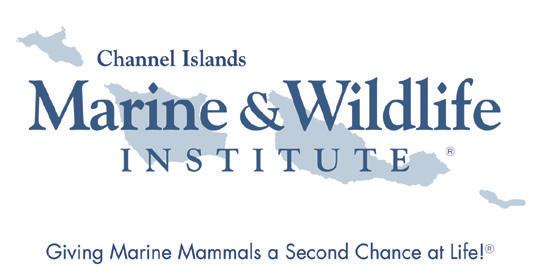
Channel Islands Marine & Wildlife Institute (CIMWI) is dedicated to positively impacting conservation through marine mammal rescue, rehabilitation, research, and education to promote ocean and human health.
The Many Ways to Give...
Ruth
Dover COO, Founder (805) 637-0805 rdover@cimwi.org
CIMWI volunteers educating at the beach after a rescue.
Saving Animals
One Plushy at a Time
“When you have a passion or a calling, that is what you do. You don’t have a choice.” That reality crystallized for Kristina McKean after being exposed to an abused baby elephant on the streets of Thailand. It was a moment that shocked her, and set her on her life’s mission of saving neglected elephants, big cats, and dogs.
In 2017, McKean started The Elephant Project to combat the exploitation of elephants, with the ultimate goal of rehoming and rehabilitating the highly intelligent, emotional animals. It’s estimated that 20,000 elephants are killed each year due to poaching. Since its inception, the Project has saved hundreds of elephants from this crisis. And now the nonprofit has evolved and expanded in big ways.
Though the elephant is still the flagship animal, McKean realized she had an excellent platform to help even more


"We
are honored to partner with The Elephant Project, whose support directly advances our mission to protect Asian elephants. Every plushie purchased extends their generosity into meaningful action, providing tangible care and a brighter future for elephants in need."
– Nikki Giacobazzi Founder, TRUNKS UP
animals: like lions being poached in Africa, and dogs condemned to death in the Chinese meat markets. Whether it’s saving animals across the world, or putting together adoption events closer to home featuring local shelters, McKean is spearheading action.
A core part of The Elephant Project’s ethos is that one person, one small action, can make a huge difference. Their model is simple but transformational: buy an elephant, save an elephant. One hundred percent of the net proceeds from their “SaveUs” stuffed animal collection goes to organizations globally that aid in fighting the poaching crisis and provide care to orphaned and abused elephants, dogs, and big cats.
But there are also other ways to help. McKean shares, “Your voice is so powerful. Especially for young kids in the social media age. You can talk about it on TikTok and share stories to make a difference.” Education, especially with younger people, is a key component to McKean’s work. It’s not just money, but appealing to hearts and minds. You don’t have to go to the extreme to enact change.
This commitment to small action is why she often prioritizes working with smaller organizations that might not have the funding or recognition that other major nonprofits have. Through years of experience, McKean has vetted and built a coalition of organizations, big and small, that work together to create change.
But time is of the essence. McKean urges: “Elephants are diminishing so quickly that we need to step up for them.” But she also emphasizes that this is not the end. “We have to give people hope that we can make a difference for all these lions, dogs, and elephants.” There is still time. And there is still hope.
“Me with Thai Koon-a rescued elephant at The Elephant Nature Park. I was in awe of how trusting and gentle they were, especially after enduring so much hardship. As Lek always says, ‘Elephants pick their people.’ I truly felt that… a real, soul-deep connection.” – Kristina McKean, Founder
The Elephant Project

Help Animals Find Safety
Your donation leads to change and that change leads directly to saving the lives of animals.
• $100,000 – Assist in rescuing a baby elephant from being abused, sold into captivity, or forced to perform in unethical tourist’ attractions. Baby elephants must remain with their herd.
• $30,000 – Assist in rescuing an older elephant who has spent years in captivity or forced into cruel labor.
• $15,000 – Helps design a new elephant stuffed animal by assisting in picking out a name and outfit.
• $5,000 – Supports monthly elephant veterinary care.
• $2,500 – Helps rescue and support veterinary care for a dog rescued from the meat trade in Asia.
• $2,000 – Helps feed an elephant for a month.
• $500 – Helps feed an elephant for a week.
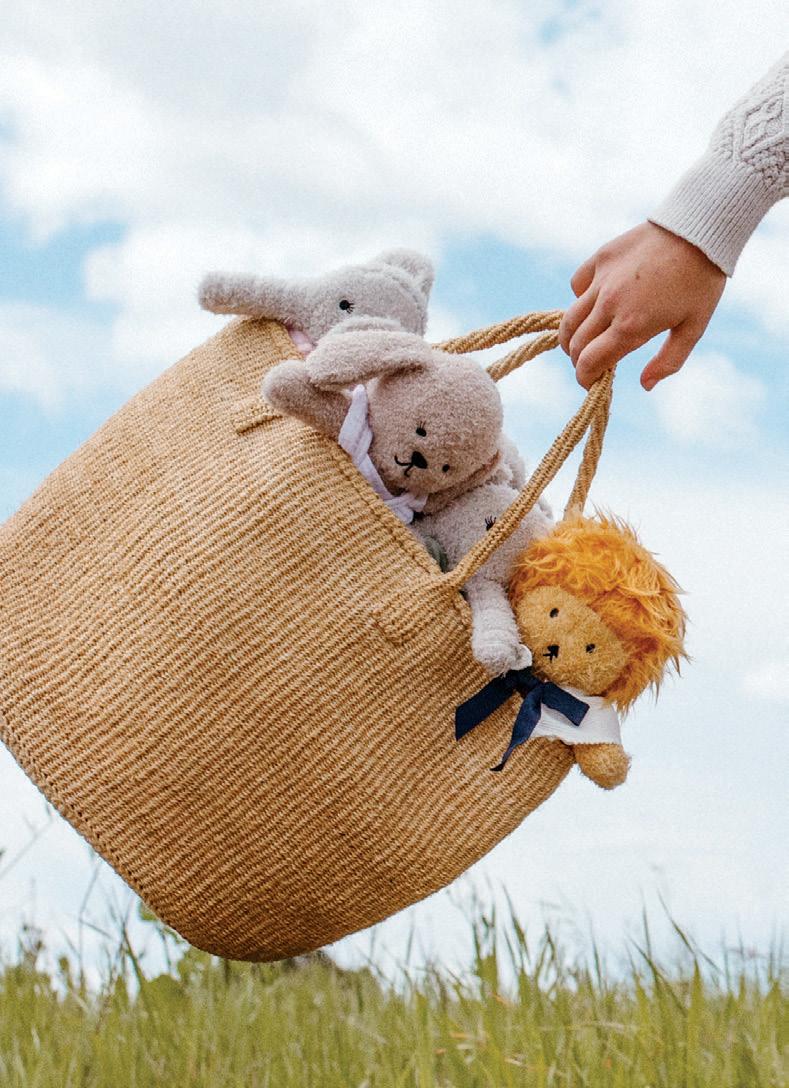
The Many Ways to Give...
Kiki, Tembo, Oba, and LuLu.
Tembo the elephant plushie.
photo by Sara Prince Photography
photo by Sara Prince Photography

For the Children
“Children are our most valuable resource.”
– Herbert Hoover
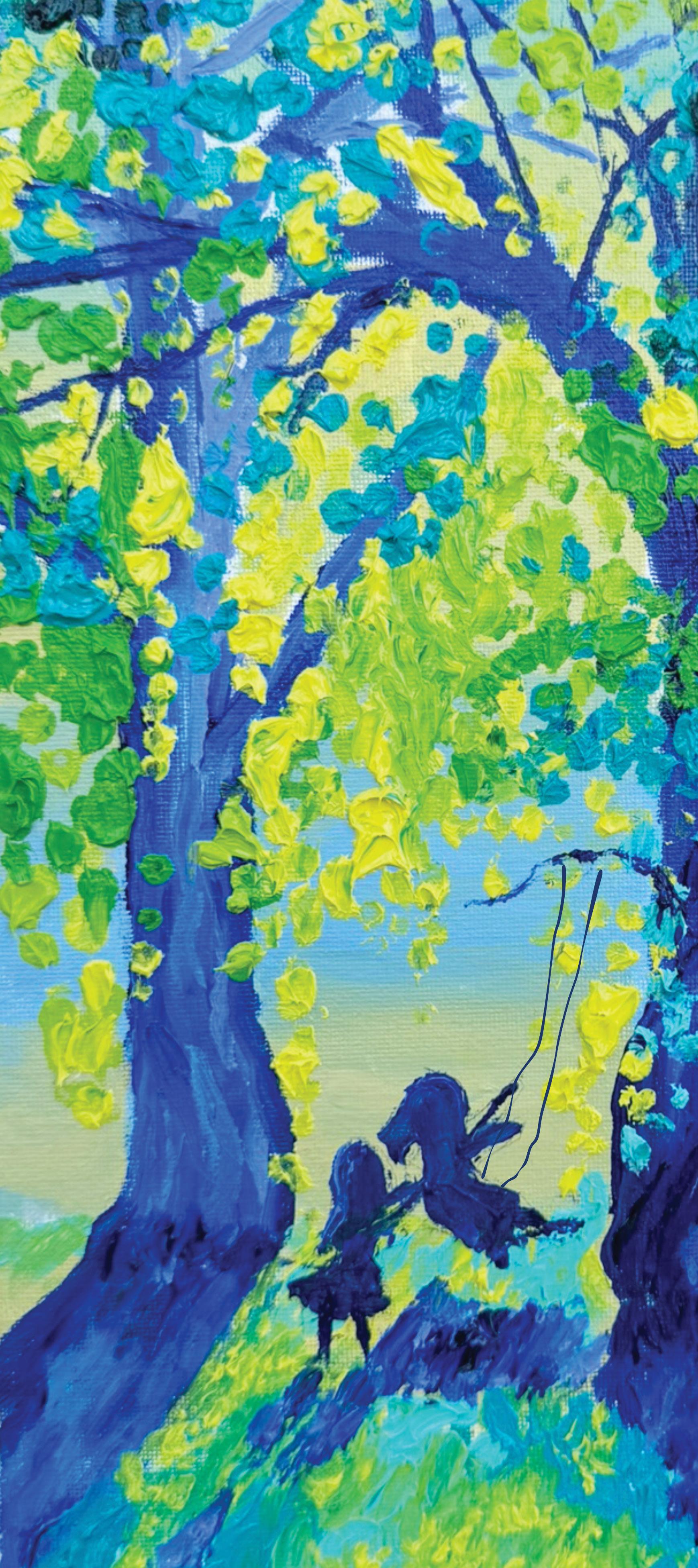
Conversations: Victoria Strong
as
told to The Giving List Staff
A Radically Inclusive Approach to Life
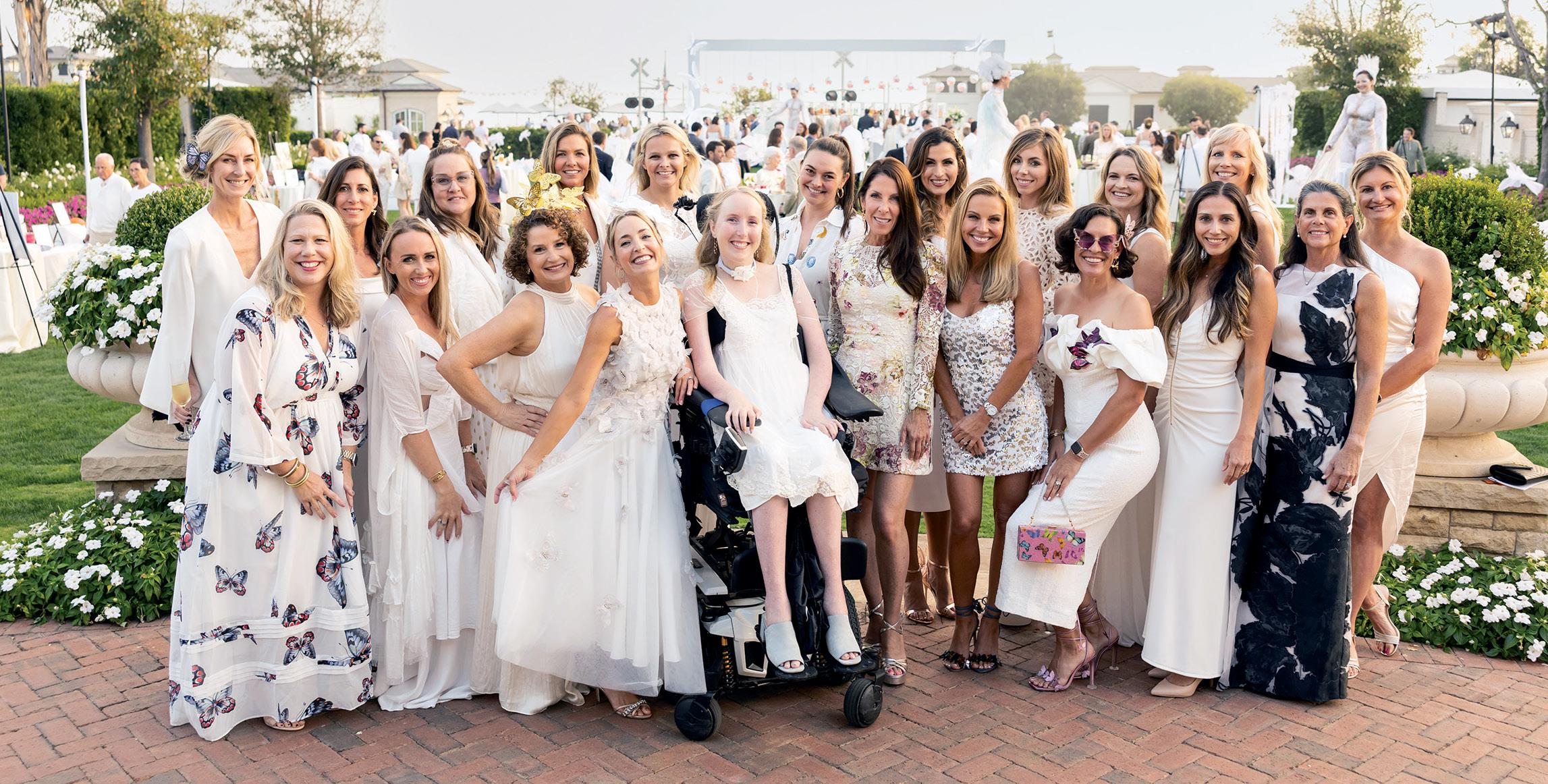
Victoria Strong is a disability advocate, nonprofit leader, and mother of three. Her life took an unexpected turn when her baby girl, Gwendolyn, was diagnosed with Spinal Muscular Atrophy (SMA), a genetic condition that causes muscle weakness. Similar to the more well-known ALS, SMA can affect a child’s ability to crawl, walk, sit up, and control head movements. Severe SMA, like Gwendolyn’s diagnosis, damages the muscles used for breathing and swallowing.
Victoria became an immediate advocate when she realized how little was being done to combat SMA. She founded the Gwendolyn Strong Foundation to fund research, influence policy, and support families with disabilities. While her strong, brave, remarkable daughter passed away from SMA 10 years ago, her memory and influence live on. Victoria is currently bringing Gwendolyn’s Playground to life as part of the renovation of the 100-year-old Dwight Murphy Field. Gwendolyn’s Playground will be
Santa Barbara’s first all-abilities playground – a radically inclusive destination for all. Victoria continues to champion disability rights, inclusive design, and systemic equity.
Here is our conversation with her.
The Giving List: You have a deeply personal reason behind your philanthropy. Rather than volunteering your time or simply donating money, you focused on galvanizing change. Why did you take that road?
Victoria Strong: When Gwendolyn was diagnosed, there were no treatments and no clinical trials [for SMA].
That is where our philanthropy began. From her hospital bed, my husband and I started advocating. Research was underway, but there was a real need for increased funding, awareness about carrier screening, and newborn screening needed to be added to recommendations so that babies could begin receiving interventions right away.
A big reason why there was so little progress was because
Gwendolyn Strong Foundation’s Advisory Board: Front row from left: Karie Ide, Cristina Bentley, Kelly Almeroth, Victoria Strong, Grace Fisher, Analise Maggio, Ivana Firestone, Jenny Deakyne, Jillian Pirozzi, Robin Himovitz, Ronda Fallon. Back row from left: Sarah Paskin, Sylvia Rich, JJ McLeod, Beth Magid, Katie Crocker, Katrina Sprague, Marina Delio, Aubrey Bartolo, Erin Galbraith, Laura Capps. (photo by Kacie Jean Photography)

of a lack of research funding. SMA is a rare disease, and because most people had never heard of it, funding was very limited. We thought we could help with that.
Fundraising for the playground began in much the same grassroots way as our research fundraising began. Gwendolyn was profoundly disabled by the time she was six months old when she was diagnosed. After spending a month in the hospital, where she received a feeding tube, a breathing machine, and a machine to help her cough, she had to be taken home from the hospital in an ambulance because she had to be flat at all times. There were no flat car seats, so legally the hospital could not release her to us. We came home realizing that so many well-intentioned protocols in society simply did not fit our very unique little girl. We were the “star” peg in the round hole. Nothing was easy.
The news was dire – literally, we were told there was “nothing” we could do. But, we needed to channel our grief into positive change. We started by connecting with specialists across the country. From her hospital bed, we learned that there was actually quite a lot of research being done. Unlike many of our friends in the rare disease community, we had hope. Their diseases often had no research at all, while ours did. Scientists knew the gene that caused SMA and they knew why, they just needed to figure out how to correct it. That was something we could help with. If money was the obstacle, that felt like a problem we could be part of solving.
We began by sharing our perspective and rallying support from other families who also felt hopeless. Because Gwendolyn’s care was 24/7, we couldn’t host gala-style fundraisers, so we leaned into our strengths: storytelling and technology. As a younger generation in the neuromuscular disease space, we embraced digital tools – just three people in a house, yet we reached thousands. We were the first in this field to use Facebook, even before the Muscular Dystrophy Association, and we witnessed the power of connection: giving people a platform to share their stories, build community, and inspire action.
Our work is unusual because the research we funded quickly led to real breakthroughs. We learned to be nimble and to break down funding needs into tangible goals, backing research that others would not because it was risky and new. But what did we have to lose? One of those bets led to a now FDA-approved gene therapy. Babies treated within the first weeks of life now show little to no signs of SMA – walking, talking, eating independently. It is nothing short of revolutionary and has since been applied to many other diseases. In just seven years, we watched a once-terminal diagnosis become fully treatable.
TGL: What obstacles did you face in your advocacy for better treatment for SMA?
VS: The biggest obstacle was systems and people within those systems saying, “We do not do it that way.” That answer did not work for a rare disease. For example, clinical trials were structured around a single central site where patients had to travel. Children with SMA were unable to fly on airplanes, making clinical trials inaccessible to them. We helped pass legislation to change protocols like that. We also worked to change how the NIH funded rare diseases. Anytime we came up against “this is how it has always been done,” we asked, “but why?”
TGL: Gwendolyn died at age seven in 2015, just before starting third grade. That was when you turned your focus to a playground. How did you put together the unusual coalition of city, federal, and private support?
VS: From the moment she died, I knew this was the direction I wanted to take because our research goals had been accomplished, and I knew there is still a very real lack of equity for the disabled. I started by calling the City of Santa Barbara.

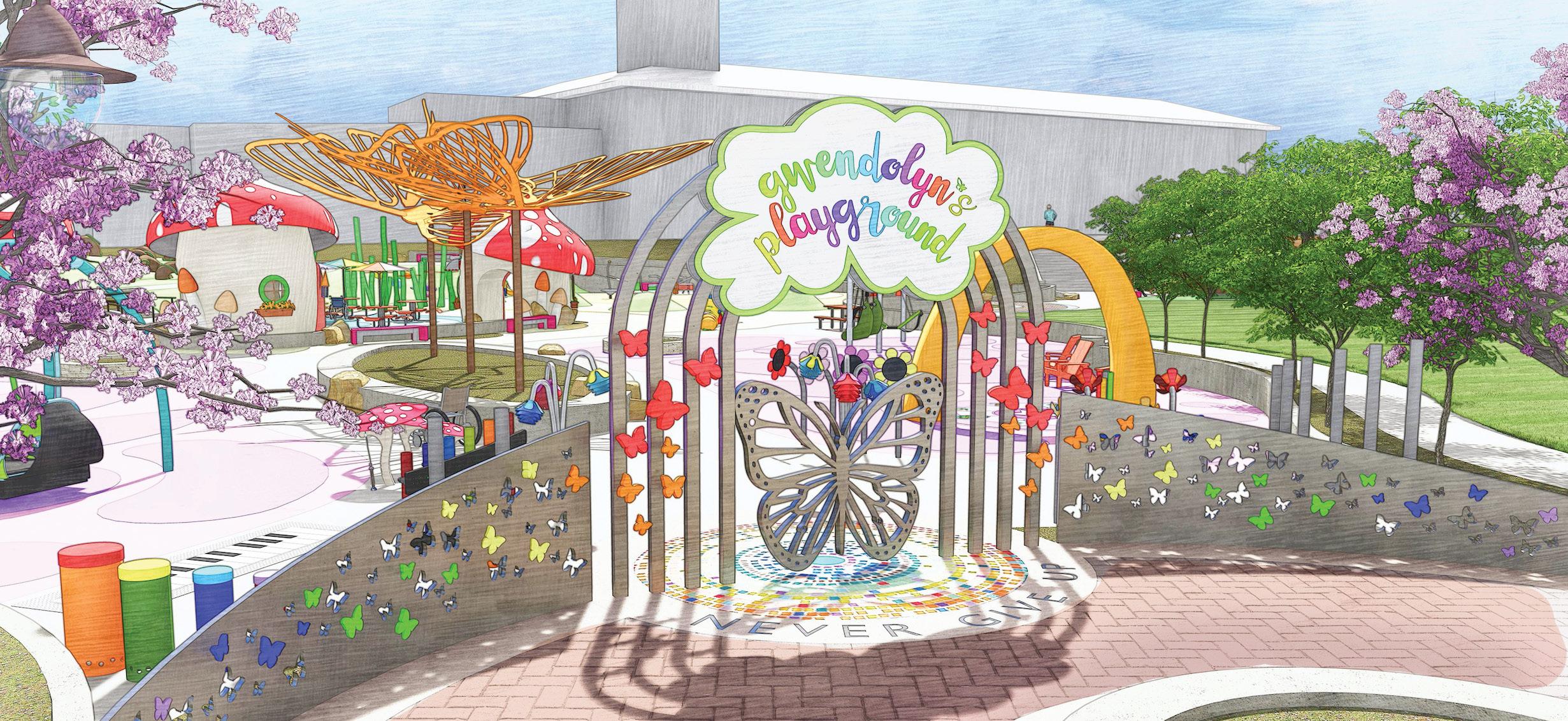
“Our playground challenges every idea of what a playground can be and should be… It is a playground, after all, and shouldn’t we spark wonder?”
They were receptive and excited. This led to educating the public about the need. Most people are unaware that the average playground is not accessible, let alone inclusive.
I also started talking to my friends, other moms whose children were Gwendolyn’s peers. They had witnessed firsthand how powerful inclusion was, not only for Gwendolyn but for their own families. Their children had grown up seeing difference as normal. As fundraising ramped up, I invited a second group of moms I knew through my younger daughter’s preschool – go-getters already committed to raising inclusive-minded children. One of them, Karie Ide, brought her background as a sales and event manager at the Four Seasons New York and quickly became instrumental in chairing all event planning… Cristina Bentley of Bella Vista Designs soon joined our board, bringing deep local connections and creative event expertise. Our first Butterfly Ball raised nearly $1 million in one night!
Each year of building Gwendolyn’s Playground, I intentionally added new women to the board who offered strengths I didn’t have… They contributed critical skills in marketing, communications, and donor strategy – and many also brought their experience with disability, helping to shape a truly inclusive vision.
Throughout the process, our children set up lemonade stands, our various schools hosted penny drives, and our entire families joined in to find funding – reaching
far beyond my immediate network. It was through board members that the Manitou Fund enthusiastically contributed $2 million and the Mildred E. & Harvey S. Mudd Foundation gifted $500,000. It was a grassroots and allhands-on-deck effort at every level. And I think the board members enjoyed stepping into roles that used parts of themselves beyond parenting. They took this seriously and stepped into incredible advocacy, and together we created something powerful.
At the city level, I partnered with Parks and Recreation Director Jill Zachary, who deserves enormous credit for bringing this to a successful conclusion. After years of tackling an incurable disease, I thought building a playground seemed like a relatively easy task. Jill grounded me, explaining the many steps involved: state regulations, environmental requirements, and navigating the local approval processes. She skillfully led that complex work, including the pursuit of federal grants. My role was to make sure people understood the heart and vision. This was not just one accessible swing – it was about creating something entirely new.
Our collaboration became especially critical in the final stretch, when we faced an unexpected funding gap just as we were preparing to break ground. We mobilized everything – every relationship, every pitch, every ounce of determination we had built over nine years. And through that effort, Ty Warner stepped in with a trans-
formational $5 million gift to close the gap and make the vision a reality.
TGL: How is Gwendolyn’s Playground different from other accessible parks?
VS: Most playground updates only address construction standards or environmental codes. Rarely do they consider improvements to social responsibility, equity, or inclusion. Our playground challenges every idea of what a playground can be and should be. Our landscape architect team at RRM Design Group understood my vision and brought it to life with whimsy and joy, far beyond utilitarian function. It is a playground, after all, and shouldn’t we spark wonder?
Accessibility typically conjures the idea of ramps. But Gwendolyn’s Playground considers all the ways we move through and experience a space: sensory needs, visual differences, adults with disabilities, grandparents with walkers, teenage siblings, and caregivers of all ages. For example, swings designed for a variety of needs – large enough for adults, supportive for lying down, or big enough to enjoy in a group – and smooth, stable surfacing that supports safe walking for those with unsteady footing or rolling with mobility devices. Most importantly, this is not just an accessible playground, it is an inclusive playground. Gwendolyn’s classmates adapted their games so she could be a peer, not a sidelined child. That experience shaped this design.
TGL: What is the current status of the playground?
VS: We broke ground in June 2025, after nine years of work. We even had golden shovels. Much of the expense is the behind-the-scenes work, like plumbing and modern infrastructure for a park that is 100 years old. Being near the ocean also requires environmental upgrades and stormwater management. Currently, you see a lot of dirt, but our construction partners, Ohno Construction, are making thoughtful and timely progress. We expect to open in Summer 2027.
TGL: Has your work inspired other communities to create similar playgrounds?
VS: Yes, and that has been incredible to witness. Because of our earlier advocacy in research, we were connected to families across the country. Early on I shared on social media why inclusive playgrounds matter. Before I ever asked for donations, I educated.
Even disabled families, exhausted from having to fight
for everything, often had a mindset of being grateful for scraps. I rejected that. One swing behind a chain is not enough. These are public parks, paid for with taxpayer dollars, and they should serve the whole community.
Families began to reach out. One SMA mom in Massachusetts started with no support, and now her community has three inclusive playgrounds… I know of at least five playgrounds that started because of conversations we had… My hope has always been that this becomes the new standard everywhere.
TGL: There was some talk that your foundation might sunset once the playground was built. What are your future philanthropic plans?
VS: We will not sunset completely – building the space is just the beginning. True inclusion also requires education and programming. Children know how to include naturally, but parents often hesitate. They worry about saying the wrong thing, so they freeze. They simply didn’t grow up with inclusion, and that’s where programs can help – by showing both parents and children how easy and meaningful inclusion can be. And that will foster a generational shift in understanding. Gwendolyn’s peers just graduated from high school, and they have told me that their relationship with her has led to pursuing careers in medicine, therapy, or other helping professions. Others carry the lessons of kindness and equity into their daily lives. That ripple effect will continue – and we want to help guide it.
To sustain that vision, we’re also building a $2 million endowment fund to ensure Gwendolyn’s Playground remains inclusive, vibrant, and mission-driven for generations to come.
TGL: What advice would you give aspiring philanthropists who want to create change?
VS: One, look around first. See what is already being done. You don’t always need to start something new. If the work exists, join forces. Two, don’t be afraid to ask for help. Gwendolyn’s Playground only happened because of collaboration. The City, Parks and Rec, our board, and countless supporters brought resources and skills I did not have. Three, roll up your sleeves. If you want something to happen, you must be willing to put in the hard work and never give up.

Pediatric Cancer Research to Save Lives
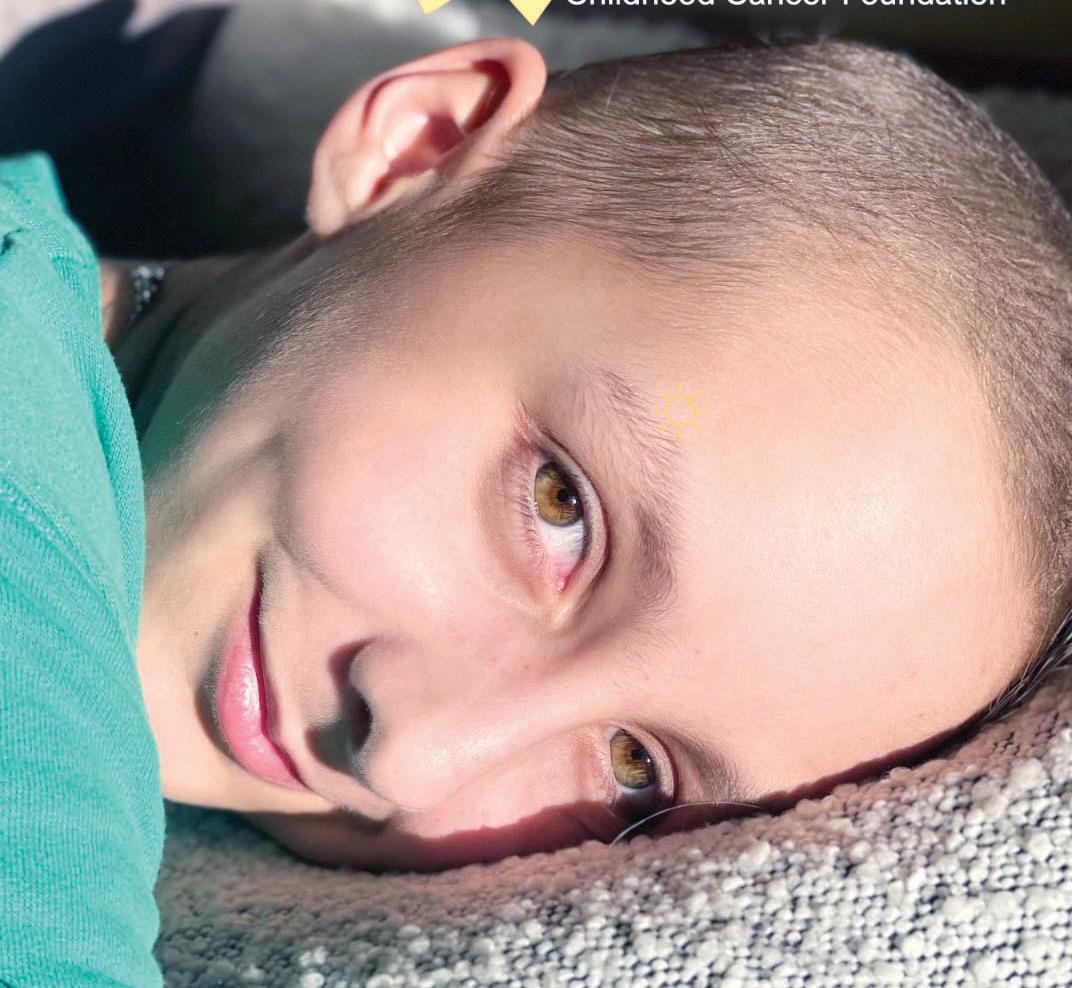
Glimmers Childhood Cancer Foundation founder, 13-year-old Ava Decker, who courageously fought osteosarcoma, an aggressive bone cancer until she passed away on May 9, 2024. It is Ava’s legacy to fund every donated dollar to the most cutting-edge kids cancer research and support kids fighting cancer.
In the face of a devastating diagnosis that would break most spirits, 13-year-old Ava Decker chose to fight not just for herself, but for every child facing the same battle. When Ava was diagnosed with osteosarcoma, a rare and aggressive bone cancer that primarily affects adolescents and teens, she discovered a shocking truth: cancer is the leading cause of death by disease in kids and teens in the U.S. yet the federal cancer research allocates a mere 4% to kids cancer research. Despite being confined to a wheelchair and living with constant pain, Ava channeled her determination into founding local grassroots nonprofit Glimmers Childhood Cancer Foundation, creating a legacy that continues to illuminate the path toward better treatments and cures for kids fighting cancer.
“Ava was shocked by the lack of progress and treatment options available,” recalls her mother, Vanessa Decker, who now serves as the foundation’s president. “Despite her terminal diagnosis, her wisdom and determination inspired everything we do today.”
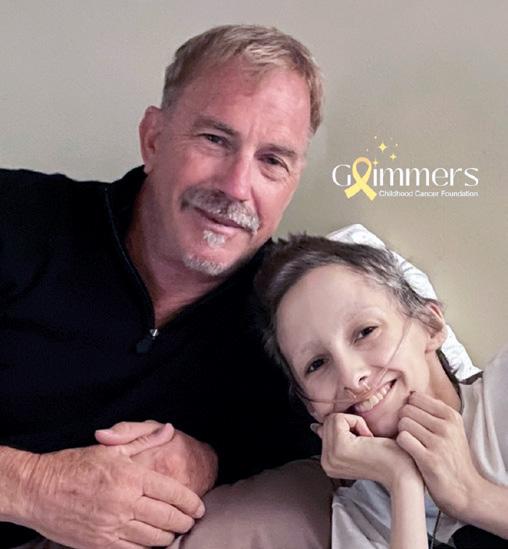
“Glimmers
The statistics are sobering. While other areas of cancer treatment have seen remarkable advancements, childhood cancers remain tragically underfunded and understudied. Osteosarcoma affects the youngest and most vulnerable members of our society, yet receives a fraction of the attention and resources needed to develop life-saving treatments.
Glimmers ensures that every donated dollar reaches researchers directly with the goal to discover less toxic and more effective treatments for kids fighting cancer. This commitment to transparency and effectiveness has enabled the organization to make significant strides in a short time. Following Ava’s passing in May 2024, the foundation raised almost half a million dollars funding critical research at top pediatric sarcoma hospitals, including UCLA, MD Anderson, and Memorial Sloan Kettering, while also supporting kids locally fighting cancer through psychosocial support programs.
“While political support for pediatric cancer research has diminished, the scientific community remains optimistic, especially with AI advancements,” Decker explains. The foundation’s strategic approach focuses on creating a “mass movement” for pediatric cancer awareness, engaging teenagers through youth boards and high school clubs to amplify their message and impact. Decker’s personal experience, dedication, and passion serve as a sharp tip of the spear.
Beyond their core mission to fund research, Glimmers takes a multi-faceted approach to fighting childhood cancer. The organization provides student and political internships, advocates through public speaking and lobbying efforts, and offers tailored support for families, including specialized programs for siblings of cancer patients. The foundation’s growth has been remarkable, supported by a board of high-level professionals providing pro bono services and expanding its geographic reach far beyond its Santa Barbara roots.
Despite the challenges of an underfunded medical system, Glimmers’ targeted donations provide crucial seed money that keeps labs operational and enables researchers to pursue larger grants.
Every donated dollar goes directly to the most cutting-edge kids cancer research for a cureno staff, no overhead, no marketing.
Childhood Cancer Foundation is the legacy foundation of 13-year-old Ava Decker, an amazing kid that I had the honor of meeting before she passed away last year. Her foundation funds every donated dollar to cutting-edge pediatric cancer research to discover breakthrough treatments, and with the current NIH freeze on kids' cancer research, progress relies on foundations like them.”
– Kevin Costner Advocate
You Are the Glimmer for a Cure
Your contribution to Glimmers Childhood Cancer Foundation directly funds life-saving research. The foundation’s goal of establishing minimum $250,000 funds annually at each major pediatric sarcoma center will jumpstart research programs and maintain crucial momentum while NIH funding remains frozen.
A donation of $1,000 can contribute to sustaining a laboratory’s research, while $5,000 enables collaboration between research labs, facilitating knowledge-sharing that accelerates discoveries. Every dollar you give goes directly to pediatric cancer researchers working tirelessly to ensure that children like Ava have better treatment options and, ultimately, the chance to live full, healthy lives.



One of Glimmers' recipients, Elias, an incredible little boy who was fighting a complex sarcoma cancer. In addition to funding cutting-edge pediatric sarcoma research, Glimmers provides gifting, special experiences, and psycho-social support all through in-kind donations of goods, services, and intimate connection.
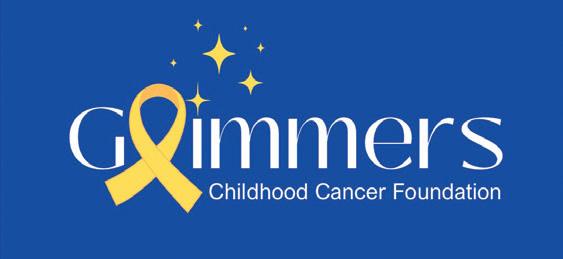
Glimmers Childhood Cancer Foundation is a local grassroots 501c3 nonprofit in Santa Barbara, California, founded by local teen, 13-year-old Ava Decker, who passed away from an aggressive and painful bone cancer on May 9, 2024. Glimmers funds every donated dollar to the most cuttingedge kids cancer research with the goal to discover less toxic and more effective treatments for kids fighting cancer. No donor funding goes to staff, overhead, or marketing – all donations go purely and directly to kids cancer scientific research.
The Many Ways to Give...
Glimmers founder Ava while fighting terminal bone cancer, osteosarcoma, just three months before passing away. She had an impactful meeting with congressman Salud Carbajal sharing her story, the pediatric cancer statistics including lack of funds, as well as her vision for her foundation.
Glimmers Childhood Cancer Foundation’s “Youth Teen Leadership Board” presenting a check for $250,000 to Dr. Nowicki, a pediatric oncologist and trailblazing pediatric cancer researcher at UCLA, to be used in his laboratory to fund groundbreaking immunotherapy to treat kids cancer.
Rewriting Stories to End the Cycle of Poverty

Storyteller’s
playground
Storyteller has the humble “once upon a time” origins that befits its fairytale-like journey for the families and children it helps. Founded by passionate locals who recognized the need for a nurturing, home-like environment for children living in transitional housing, Storyteller began as a roped-off area of the Transition House parking lot in 1988. Storyteller now operates three campuses that resemble cozy homes and has evolved into a beacon of hope for children facing trauma and their families combating adversity. With the support of community members and compassionate donors, this nonprofit organization is rewriting stories of hardship into stories of resilience and success.
“Our goal is to give children a safe space to learn, grow, and thrive through wraparound therapeutic and developmentally appropriate services, nutritious meals, and a consistent routine,” explains Dr. Gabriella Garcia, Storyteller’s executive director. “By supporting families in rewriting their stories, we are addressing income disparities and ensuring every child in Santa Barbara has the stability and happy beginning they deserve.”
A cornerstone of Storyteller’s work is their early childhood intervention program, which focuses on trauma-informed care and social-emotional development for children aged six weeks to five years. Storyteller is dedicated to helping children and families ‘rewrite their stories,’ providing care that heals, nurtures, and empowers new beginnings. “We want to break the cycles of poverty and trauma that can feel inescapable,” Dr. Garcia affirms. “Our approach is about healing, nurturing, and empowering families to forge new paths toward brighter futures.”
Among Storyteller’s numerous success stories is Alex, a single father who overcame housing and food insecurity through Storyteller’s individualized, uplifting programs, securing stability for his son, Daniel. “How do you explain love to a child when you didn’t get it growing up,” Alex remembers feeling before he found Storyteller. The organization showed him how. Because of Storyteller’s safe and nurturing support, Alex was able to work and change their circumstances.

"FMaria, a mother who escaped domestic violence, is now thriving in college alongside her daughter, Sara. “We’re working to uplift members of our community who want more for themselves and their children – creating a stronger Santa Barbara for us all,” says Tess Ortega, the organization’s development director. “Storyteller offers the opportunity to invest early, when it matters most.”
Dr. Garcia’s extensive background in gerontology and healthcare underscores her deep understanding of trauma’s lasting ripple effects. “Early childhood trauma is directly tied to long-term health, educational outcomes, and overall success in adulthood,” she explains. “At Storyteller, our work is about breaking that cycle before it takes root.”
Supporting Storyteller’s mission means investing in a future where every child has the tools to succeed, giving foundational support at a crucial age, and providing the children a chance to rewrite their stories, past and future.
or me, connection is more than networking — it’s heart work. When I bring people to Storyteller, it isn’t just about supporting a nonprofit, it’s about weaving together a community that believes every child deserves the same opportunities. In Santa Barbara, privilege and responsibility go hand in hand, and I see it as a gift to connect people who want to make a difference with children who need us most. Those connections don’t just fuel Storyteller’s mission — they remind us that all of our community’s children are our own.
"I also love being part of the nonprofit culture here — attending beautiful events, yes, but even more so serving on boards, subcommittees, and event committees. That’s where I feel I can really help power the engine, supporting the frontline leaders who are working every day to create social change in our community."
– Analise Maggio
new
gives children a safe, joyful space to heal and grow. In a trauma-informed program, play isn’t just fun – it’s essential for building trust, resilience, and lifelong learning.
Ensuring Every Child’s Story Has a Happy Ending
Your contribution to Storyteller can fund a scholarship, provide meals, or support crucial early childhood programs that nurture resilience from the very start.
• $27,000 will provide a full scholarship for one child for a year. A gift of $100 could supply nutritious meals for a week to a child.
Every dollar you give helps foster long-term community health and stability. Your generosity ensures that children like Daniel and Sara, and countless others, have the support they need to rewrite their stories, stories of hope, resilience, and bright futures.

For so many of our little ones, Storyteller is the only place where they can safely run, laugh, and play. Here, they are not defined by adversity. They are nurtured, protected, and given the simple, precious gift of just being children.

At Storyteller, they believe every child deserves a happy beginning. Their learning centers are havens where young minds and their families are empowered to rewrite their stories, breaking the cycle of poverty and paving the way for brighter futures. Through their dedicated support and nurturing environments, they provide a continuum of care – from six weeks to five years of age – that prepares our children for success as they enter kindergarten, the most critical metric in their scholastic journey.
KEY SUPPORTERS
Jon Clark
Peggy Dodds
Stuart Glenn
Gretchen Horn
Sharon Kayser
Anna Kokotovic
Storyteller wearestoryteller.org (805) 730-0155
Contact: Tess Ortega Director of Development (805) 730-0155 tess@wearestoryteller.org
By
Erinn Lynch
Diana P. Lytel
Patricia Madrigal
Ann Pieramici
Ken Radtkey
Kyra Rogers
Rose Schmoller
Bess Scribner
Kenny Slaught
Rachael Stein
Michael Wasserman
Craig Zimmerman
The Many Ways to Give...
By DAF or Stock Transfer: Tax ID# 77-0283072
By Credit Card: wearestoryteller.org
UNITED BOYS & GIRLS CLUBS OF SANTA BARBARA COUNTY
All Young People Deserve to Thrive

On a recent afternoon at the Santa Barbara Zoo, a third-grader sat motionless before her untouched burger, politely declining o ers of chicken nuggets. “We’re going to have an Easter party later at the shelter,” she explained matter-of-factly. “I don’t need to eat now. It’s okay.”
Taylor Swan, Chief Development Officer for the United Boys & Girls Clubs of Santa Barbara County, still remembers that moment of revelation. The 15 children on that donor-sponsored field trip had come from a local transitional house and shelter, and for most, it was their first or second time at the zoo. What seemed like a simple outing – a walk through Santa Barbara’s beloved zoo – represented something so impactful: access to the shared experiences that middle-class children take for granted.
Behind the beauty of California’s Central Coast lies a stark economic divide that Swan describes as having “no middle class at all. We have either those who are quite a uent and those who are below the poverty line.” In fact, of the 58 counties in California, Santa Barbara County now has the second-highest number of school-age children considered houseless in California.
The United Boys & Girls Clubs of Santa Barbara County serves this reality with unflinching purpose. Founded in 1938 when local firefighters converted their old
station into the city’s first Boys Club, the organization now operates 10 locations across the county, serving approximately 2,000 members annually. Seventy-two percent of their members qualify for free and reduced lunch, meaning their families live on or below the poverty line.
The Club’s comprehensive programming – spanning health and life skills, education and career development, sports and recreation, character and leadership, and arts and STEM – ensures that every member experiences structured growth daily. Last year alone, the organization served 45,000 meals through their Zero Hunger program, recognizing that “our kids can’t learn anything if they’re hungry.”
The organization’s vision also extends far beyond after-school supervision. “Every single kid who comes through our program knows what they’re doing when they graduate high school on time and then has a plan for what they’re doing after,” Swan explains. Whether college, trade school, military service, or direct career entry, the Club’s College and Career Bound program begins tracking trajectories in sixth grade.
While their programs are expansive, their mission remains steadfast and straightforward: enable all young people, especially those that need them the most, to reach their full potential as productive, caring, and responsible citizens.
For families paying just $40 annual-
ly for membership, the actual cost per child reaches $2,500. No child is ever turned away due to their economic situation; in fact, in 2024 the organization awarded $141,000 in scholarships – the Club represents something invaluable: the chance for children to build a brighter future.

“Without any doubt, the Boys & Girls Club (Goleta Club), was my second family that instilled confidence, teamwork and humility. I am so thankful for the support of our community “saving” so many young emerging future leaders.”
– Ernesto Paredes Executive Director Easy Lift Transportation
Investing in Our Youth
Your support transforms more than individual lives – it builds community resilience. A $10,000 contribution funds the Zero Hunger program, ensuring no child faces learning on an empty stomach. $5,000 sponsors the College and Career Bound program, giving students concrete post-graduation plans. $2,500 provides comprehensive year-round programming for one member. $1,000 covers field trips that expand horizons beyond circumstance. These investments don’t just serve today’s vulnerable children; they cultivate tomorrow’s community leaders, following the Club’s tradition of developing engaged, giving citizens who understand their responsibility to lift up others.

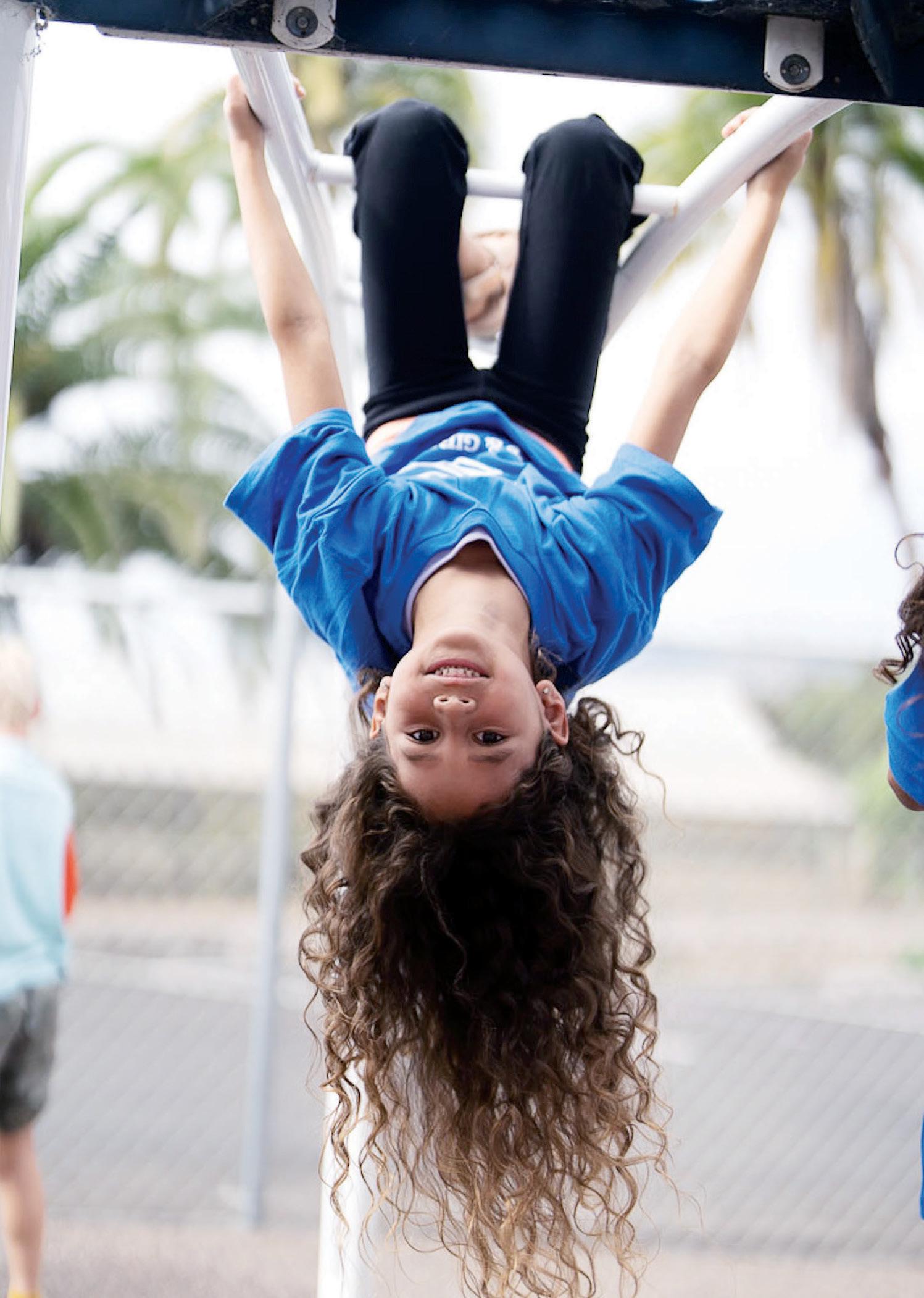

To enable all young people, especially those that need us most, to reach their full potential as productive, caring, and responsible citizens.
United Boys & Girls Clubs of Santa Barbara County www.unitedbg.org
Contact: Taylor Swan Chief Development O cer (805) 681-1315 tswan@unitedbg.org

The Many Ways to Give...
Inspiring Young Minds Through Art
In a classroom at Santa Barbara High School, a student named Arturo sat slumped in his chair, disengaged from another boring presentation. But when DJ Javier, a Santa Barbara artist turned creative director who has worked with major brands like Adidas, Coors Brewing Company, and Los Angeles Rams, began sharing his story of transformation through the arts, Arturo suddenly perked up. Then, he picked up a pencil and began to draw. When Javier prompted the kids for questions, Arturo shared his impressive fully-realized drawing, and asked if he, too, might have a career like Javier’s.
“That moment perfectly captures what we’re about,” says Kai Tepper-Jahnke, executive director of Children’s Creative Project. “Sometimes all it takes is one story, one connection, one creative spark to change a young person’s trajectory entirely.”
For 50 years, Children’s Creative Project has been lighting those sparks throughout Santa Barbara County and San Luis Obispo County public schools. Founded in 1974, this nonprofit program of the Santa Barbara County Education O ce has weathered budget cuts, changing educational priorities, and countless challenges while maintaining its unwavering commitment to arts education for all students.



Tepper-Jahnke knows firsthand the transformative power of arts education. Reflecting on her own high school experience, she recalls having been a straight A student but then struggling academically after experiencing a traumatic hardship. She found solace in arts class and re-engaged as a student. “It provided a safe space for self-expression and reflection,” she explains. “Arts education isn’t just about creating beautiful things – it’s about providing social and emotional learning opportunities and career development pathways that can literally save lives.”
The organization operates two core programs reaching thousands of students annually. The Resident Artist Division (RAD) works directly with school districts to fill critical gaps in arts education, partnering with teaching artists and providing professional development opportunities for educators. Their Touring Artist Program (TAP) brings professional performances and workshops directly to schools, ensuring that even
schools with limited arts programming can o er their students enriching creative experiences.
The organization’s impact extends far beyond traditional classroom settings. Through partnerships with programs such as Juvenile Court Community Schools, Special Education, Early Childhood Education, and many more, Children’s Creative Project reaches students from challenging backgrounds, many from single-parent homes with working parents who have few opportunities for enrichment. “These students found hope and increased confidence through arts experiences,” Tepper-Jahnke says.
The story of DJ Javier exemplifies this transformative potential. Once a disengaged student himself, Javier’s journey from the halls of Dos Pueblos High to becoming a successful creative professional demonstrates the long-term impact of both an arts education investment and the Children’s Creative Project.
The I Madonnari Street Painting Festival is the annual fundraiser for Children's Creative Project (CCP). CCP is proud to be a program of Santa Barbara County Education O ce. Pictured above is a 2023-sponsored street painting done by Delphine Louis Anaya. I Madonnari will celebrate 40 years in 2026.
In 2021, Kai Tepper Jahnke stepped in as Executive Director following founder and previous Executive Director of 45 years, Kathy Koury. The two visionaries share a passion of being in service to schools, students and community and continue to collaborate on the I Madonnari Street Painting Festival.
photo by Ingrid Bostrom
Your Investment Fuels Artistic Minds
As Children’s Creative Project celebrates its milestone anniversary, the need for community support has never been greater. Transportation costs alone – getting students to performances and bringing artists to schools –represent a significant funding challenge that determines how many young lives can be touched.
• $50 covers transportation for five students to attend a live performance
• $150 funds art supplies for an entire classroom residency program
• $300 sponsors a full day of professional artist instruction for 30-90 students
• $500 brings a touring performance to an underserved school community
• $1,000 supports a month-long resident artist placement, reaching hundreds of students daily
Your investment can ignite creative sparks that can transform young lives for generations to come.
“We are deeply grateful for CCP’s contributions in service to generations of students,” said Susan Salcido, Santa Barbara County Superintendent of Schools. “For 50 years, CCP has provided meaningful access to the arts—sparking creativity, nurturing confidence, and expanding perspectives. Now more than ever, arts education is a vital force in teaching and learning, helping students connect, reflect, and grow. Their work ensures every child, from preschool through high school, has opportunities to explore, express, and belong through the arts.”
– Dr. Susan Salcido Santa Barbara County Superintendent of Schools
Children’s Creative Project www.ccp.sbceo.org (805) 964-4711
Contact: Kai Tepper Jahnke Executive Director 805-964-4711 Ext 4411 ktepper@sbceo.org
By Check:

Children’s Creative Project (CCP) sparks curiosity and cultivates creativity through inclusive arts education for students preschool to grade
12. “ “
KEY SUPPORTERS
Santa Barbara County Education O ce
Audacious Foundation
Looker Foundation
Hutton Parker Foundation
Leni Fund
Mosher Foundation
Towbes Fund for the Performing Arts
Audrey Hillman Fischer Foundation
Santa Barbara County O ce of Arts and Culture
City of Santa Barbara
Santa Barbara Foundation
Santa Barbara Bowl Foundation
Nora Mcneely Hurley and Michael Hurley
The Berry Man, Inc.
Loreto Plaza
Village Properties
...and many more generous donors and business sponsors!
The Many Ways to Give...
Children’s Creative Project 3970 La Colina Rd., Suite 9 Santa Barbara CA, 93110
By DAF or Stock Transfer: Tax ID# 23-7439807
By Credit Card: ccp.sbceo.org/donate

Community Resilience
“The greatness of a community is most accurately measured by the compassionate actions of its members.”
– Coretta Scott King
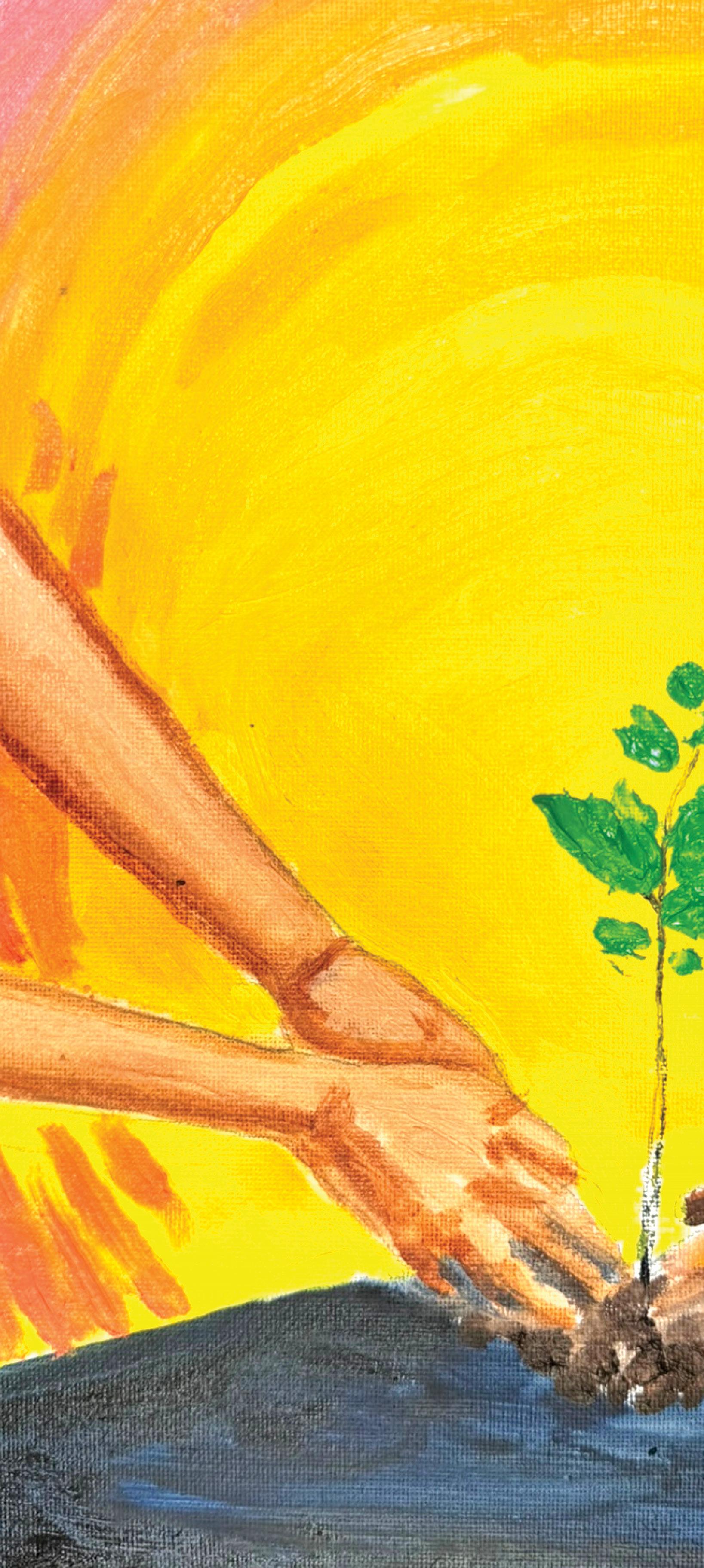
Conversations: Sese Ntem
as told to Steven Libowitz
The Philanthropy of Just Saying “Yes”
Sese Ntem was 19 years old when he arrived in Santa Barbara not long after leaving his family home in Togo, West Africa, to find a better life in America. What brought him to town after first landing in Boston was the sponsorship of a well-known Santa Barbara artist and her late husband, theoretical physicist Dave Sowle. Enchanted by his accent, positive attitude, and exuberant ambition in emigrating to the United States on his own, the power couple not only hosted Ntem, but also paid for his first year of out-of-state tuition at Santa Barbara City College.
“They changed my life completely,” Ntem says. “They gave me a place to be, and helped me assimilate to this new culture. You can’t overestimate the power of a stranger who believes in you. I’m still very connected to her and that time in my life.”
After studying English as a second language at SBCC, Ntem transferred to UCSB, where he earned a bachelor’s degree in Global and International Studies and went on to forge a career in the hospitality industry, the assisted living/senior housing field, and more recently as a residential mortgage advisor with Guzzo & Co. Among his work history are seven-year stints at the Four Seasons Biltmore in Montecito, two years as front office supervisor at the San Ysidro Ranch, and the inaugural director of operations for Mariposa at Ellwood Shores in Goleta.
Over the years, Ntem has been paying back the generosity of those who helped him early in his time in the country, serving on the boards of several organizations, donating his time and talent. Most directly, Ntem and his wife, Heather, along with their children, Noah and Madison, have hosted a stranger in town as part of the Music Academy of the West’s Compeer Program, which matches academy fellows with locals who provide friendship and support to the young musicians who are far from home, hosting and/or taking them out to dinner, showing up at their concerts, and much more.
He also joined the Rotary Club of Montecito four

years ago and early in 2025 was elected the service organization’s president.
Steven Libowitz: What made you want to travel halfway around the world to emigrate to America?
Sese Ntem: The United States was the place to be, the land of opportunity. I believe it still is, regardless of whatever’s happening and the uncertainties of today.
SL: How did your early life influence your approach to philanthropy?
SN: Rotary’s motto is “Service above Self.” I knew about that as a child back in Togo. My mother would open the doors of our home after church on Sundays to kids from the neighborhood to join us for the meal,
“We are all a big family with cousins, nieces, aunties, and uncles. What I mean is we are trying to collaborate and work together to solve the challenges in our community.”
even though we didn’t always have enough for ourselves. Sharing a meal created a sense of belonging and trust in the community, knowing that whatever my challenges are, if it comes to it one day, when I knock at your door, it will be open to me.
SL: How has your work history across various industries shaped who you are today and your passion for service?
SN: Once you work in hospitality, it follows you anywhere you go, the basic principles of how you treat people, whether your clients or anyone else, regardless of how they look, what they have, or what they don’t have. You treat everybody equally and give them your best, which is what they just deserve. Four Seasons had a strict training program which was that we don’t say no. Instead, we ask ourselves, how can I do this? Our answer is always yes, and we just find a solution that makes it possible. No, and turn that no into Yes. And I use that concept all the time, even in my mortgage industry today.
Working in assisted living is where I finally understood how fragile life is in seeing former CEOs, directors of businesses, needing help with basic everyday life because they have early onset dementia and needed others to take care of them. It humbles you. Those families whose loved ones were with us trusted me and the team to take care of them to keep them as healthy and happy as possible.
That phenomenal job really instilled my desire to be of service and give back.
SL: You were made president of Rotary Montecito just three years after joining. What has been your focus?
SN: How do we strengthen the trust in our community? Are we sharing our knowledge that we have built for the last 40 years? Are we teaching those skills so we can get people who need help out of the hole they might be in, and put them in a place where they feel like now they understand where they’re going? Are we leaving behind a legacy of mentoring and giving back?
It’s also about listening. In our community, from Montecito to Goleta and beyond, there is the need for people at least to be heard. People think about organizations such as Rotary as being about donating money. But for me, that’s maybe second or third place. What comes first is your understanding where people are coming from, what their issues are, and then responding in a compassionate way, which is priceless. Then let’s talk about money. I think that’s true for every problem we have in our community or across the country, we throw money at it first rather than working with them. When it’s time, you come back to the table, talk to other folks, other Rotarians, and see how we help, whether it’s service or donations.
SL: How does Rotary complement, parallel, or assist nonprofits in achieving their missions?
SN: We are all a big family with cousins, nieces, aunties, and uncles. What I mean is we are trying to collaborate and work together to solve the challenges in our community. With our annual community grants, we give these local organizations some small measure of support to continue the great work they’re doing, and to have them also come to us and share what they are doing for the community and say, “Can you volunteer?” Service is a big part of what we do.
SL: Coming from Togo, you have a very unusual background. Do you think that gives you a different perspective in solving some of these social issues? How have you


used your heritage and history to create cross-cultural connections?
SN: Culture is huge in terms of looking at things from different angles. I’m always considering how things were done at home and whether we can try to replicate what works here. At the end of the day, we are human beings, regardless of our differences: political, social, psychologi-
cal, or anything else. If we listen to and understand each other, and welcome new ideas, we’ll build a community of deep connection, and make significant improvements in small steps of what we do every day in addressing our challenges.
I do believe that for a human being, the number one joy is to help another person.
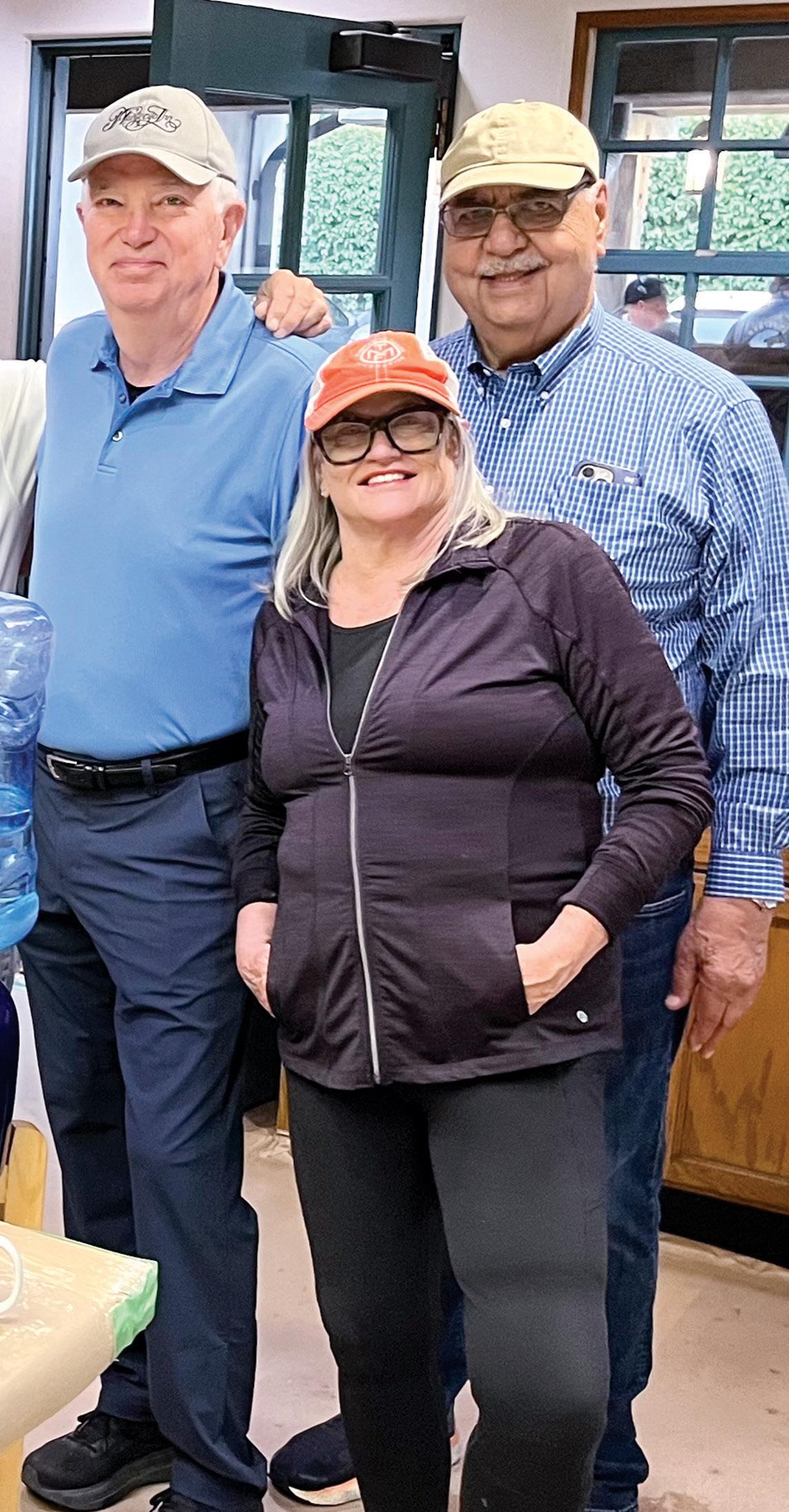
SL: Any final thoughts about philanthropy, giving back, and service?
SN: The main goal is to be able to be open, especially in these critical moments right now. Invite everybody to be collaborative in understanding, and unite for good.
“People think about organizations such as Rotary as being about donating money. But for me, that’s maybe second or third place. What comes first is your understanding where people are coming from, what their issues are, and then responding in a compassionate way, which is priceless.”

Sese with friends at the Fourth of July pancake breakfast at Montecito Fire Station, San Ysidro Road.
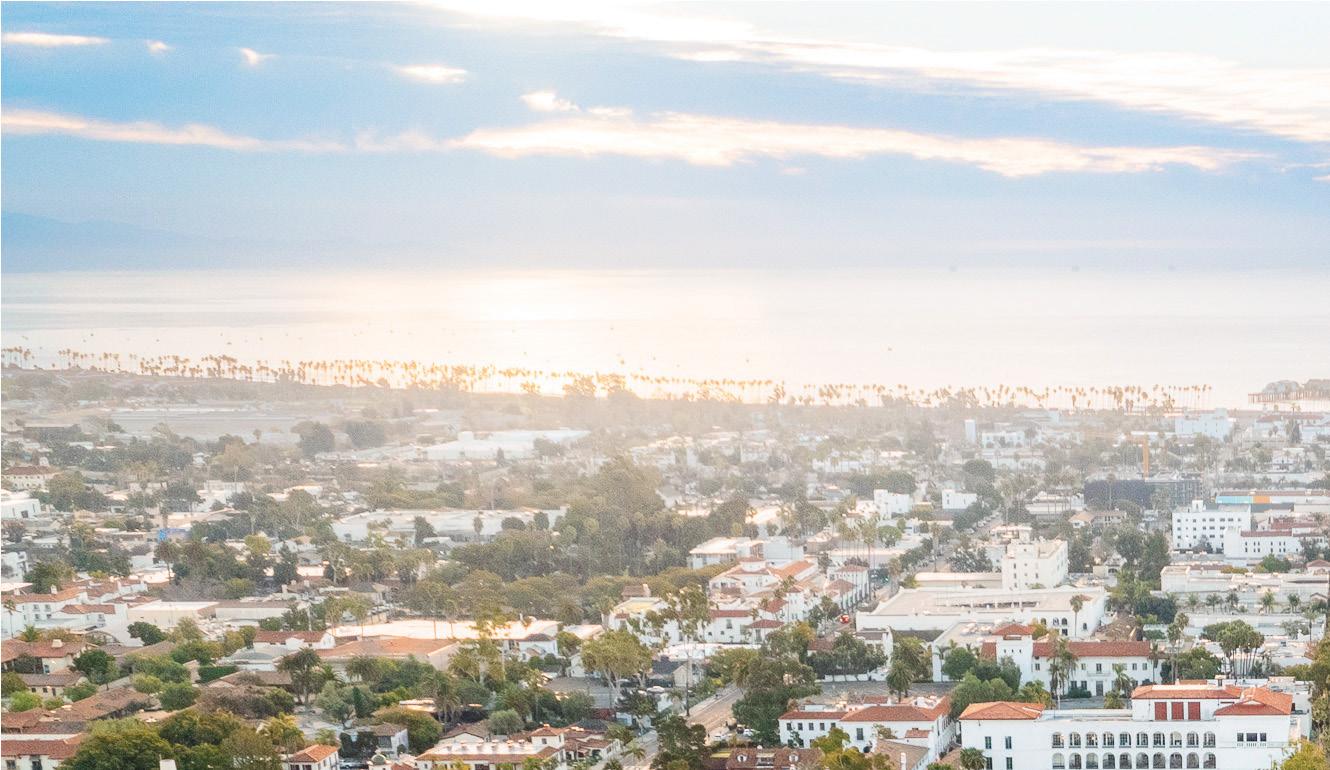
Collaborating for a Vibrant, Resilient State Street
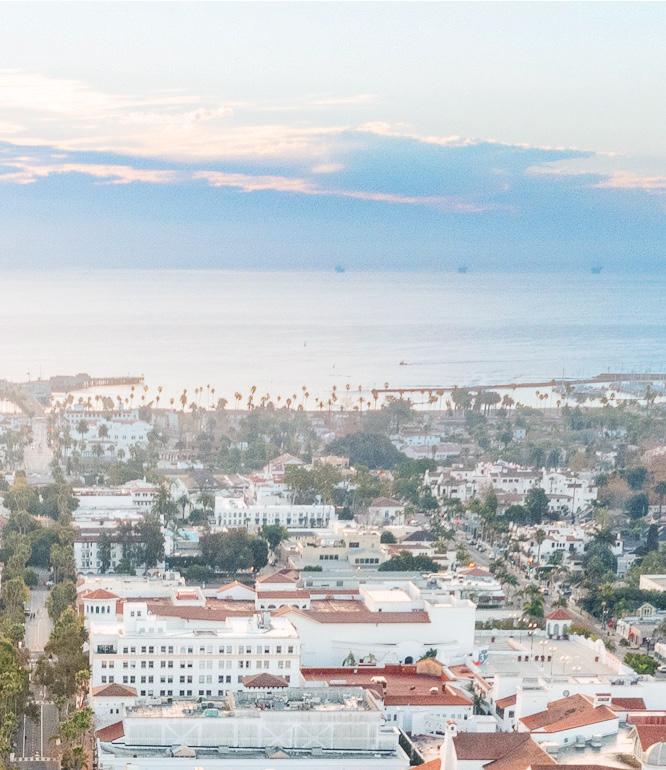



State Street has long been the beating heart of Santa Barbara. Like many downtown corridors across America, it has faced challenges in recent years. Today, thanks to the dedication and support of Friends of State Street, a historic revitalization of our cultural center is moving forward.
Founded during the American Institute of Architects Santa Barbara (AIASB) 2020 charrette, a large-scale e ort envisioning the future of State Street, Friends of State Street emerged as a nonprofit to support that e ort. Under the leadership of Founding Board President Sharon Rich, it has become a champion for the community’s collective vision—advancing collaborative initiatives for a vital and vibrant State Street.
“Connecting community voices with action is what fuels my work,” says Rich, who draws inspiration from her decades of experience with the YMCA.
When the pandemic struck, Friends of State Street mobilized to help local businesses adapt, working with the city design guidelines for outdoor dining spaces. Their comprehensive approach included providing businesses with resources and architectural guidance—from stormwater management solutions to securing the labor and paint in the colors that honored the El Pueblo Viejo district’s aesthetic character.
The organization’s crown jewel initiative is the ADA compliant free State Street Loop Shuttle. Launched in May, it
has already transported nearly 10,260 riders. “The Loop Shuttle is more than transportation – it’s community connection,” Rich notes. “We’re creating accessibility while collecting data we need to make State Street work better for everyone.”
The organization’s vision extends far beyond public transportation. IMPACTLab, its groundbreaking civic initiative, connects expertise to solutions by tackling specific challenges through focused case studies. Their upcoming Activate State Series will debut with a collaborative pilot that reimagines how a vacant space can become a vibrant place, sparking long-term tenant interest.
The evolution from crisis response to strategic community partnerships reflects Friends of State Street’s maturation as an organization. They’ve moved beyond addressing immediate problems to implementing long-term, thoughtful planning strategies.
What makes Friends of State Street particularly e ective is their collaborative approach and neutrality as to the design of State Street. Rather than imposing solutions, they facilitate partnerships between businesses, residents, city o cials, and cultural organizations. This methodology is creating sustainable change that reflects Santa Barbara’s unique character while addressing contemporary urban challenges.
From street-level voices to strategic partnerships, we collaborate, we create, we move things forward.


Your Investment in Santa Barbara’s Future
A$5,000 donation fuels IMPACTLab, Friends of State Street’s innovation hub connecting local expertise with real-time urban challenges in support of the State Street Master Plan. A $15,000 gift sustains pilot programs like the State Street Loop, a free shuttle designed to boost foot tra c, accessibility, and connection downtown. A $25,000 contribution supports creative placemaking that brings energy, beauty, and functionality to State Street.
Friends of State Street’s goal is to raise $250,000 to expand their professional team and support the dedicated board members and volunteers driving this work forward. Friends of State Street has been built entirely on pro bono leadership—a testament to their passion and commitment. Expanding the team will strengthen capacity and ensure Santa Barbara’s cultural epicenter continues to thrive.
“I
am excited, humbled, and extremely grateful to have the opportunity to make a meaningful impact with Friends of State Street on the future of our historic State Street and iconic downtown.”
– Ole Mikkelson Chief Operating O cer-GT Medical Technologies


“Friends of State Street has worked closely with our city and community to bring tremendous energy and creativity downtown, restoring vision and excitement. They are helping create a place where all can enjoy the beauty and vibrancy of Santa Barbara.”








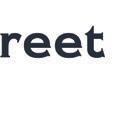
—Hannah-Beth Jackson Ret. California State Senator
Friends of State Street is dedicated to working closely with our community to build collaborations and connect expertise to solutions in support of a thriving, vibrant, and vital heart of Santa Barbara. As the State Street Master Plan evolves now and into the future, we remain committed to preserving our historic downtown as a place where culture, connection, and commerce flourish together.
Friends of State Street friendsofstatestreet.org
133 E. De La Guerra Street, #327 Santa Barbara, CA 93101 info@friendsofstatestreet.org
Contact: Sharon Rich Board President 805-236-2210 Sharon@friendsofstatestreet.org
The Many Ways to Give...
By Credit Card: friendsofstatestreet.org
Continuing to Open Doors for a Cornerstone of Our Community
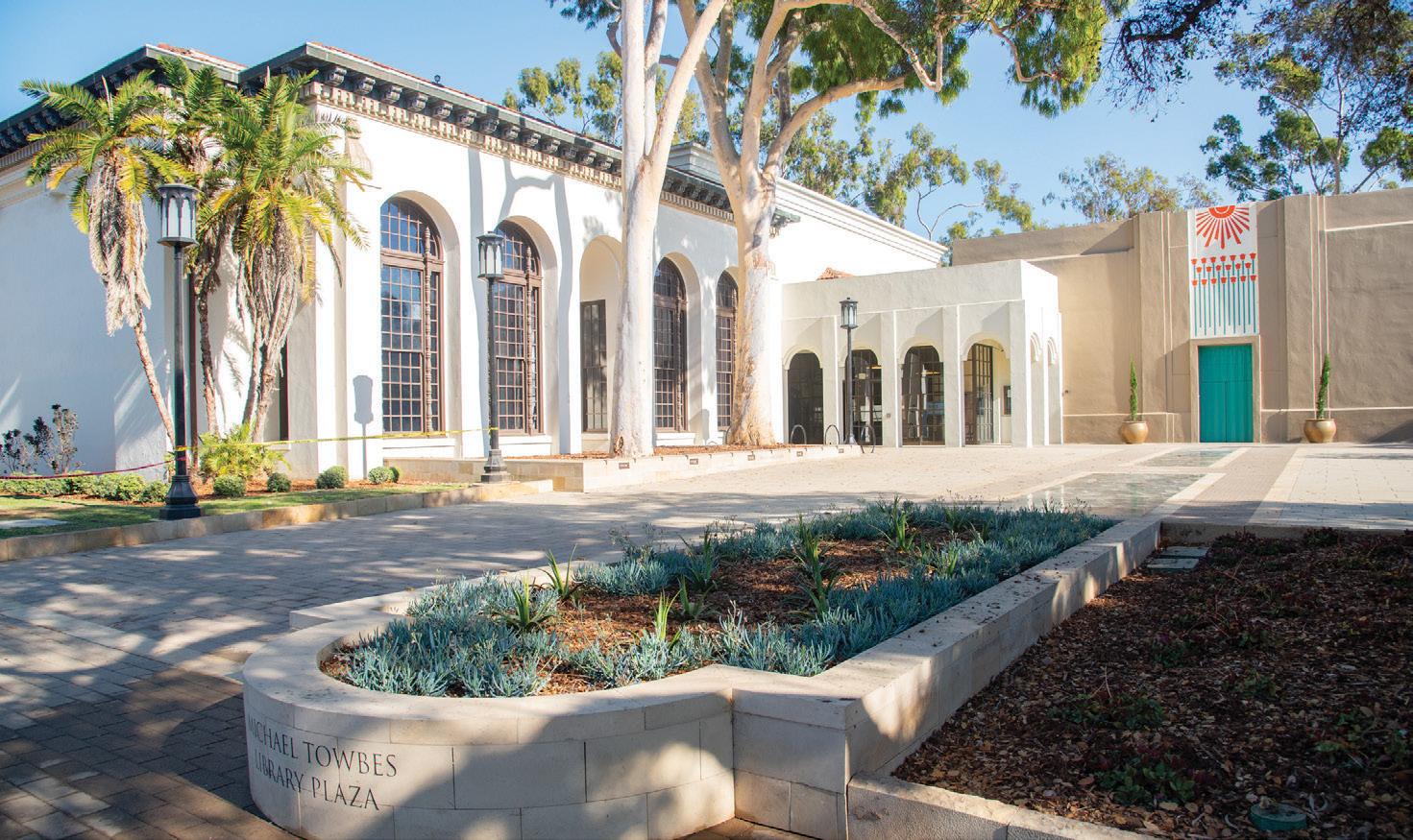
In an era where technology dominates our daily lives, you might wonder if public libraries still matter. According to Lauren Trujillo, executive director of the Santa Barbara Public Library Foundation, the answer is a resounding yes. “Public libraries not only remain pillars of democracy and community spaces,” she explains, “but are vital participants in digital literacy and technological innovation.”
Since taking the helm in 2018, Trujillo has witnessed firsthand how the Santa Barbara Public Library has evolved far beyond its traditional role as a repository of books. Today’s library serves as a comprehensive community resource center, offering everything from early literacy programs and adult education to mental health support and job skills training. “All of these services are available for free with a library card,” Trujillo notes, emphasizing the incredible return on investment these resources provide to the community.
The library’s impact extends to every demographic. Parents find English language learning opportunities, job
seekers access career resources, and children participate in innovative programs like “Read to a Dog,” which has helped countless young readers build confidence. One little girl not only overcame her resistance to learning how to read, but became a voracious consumer of books after returning to the library repeatedly to read out loud to a basset hound named “Tallulah.”
The breadth of services often surprises even longtime residents, as Trujillo discovered when speaking with community members who had no idea about the library’s extensive o erings.
The Santa Barbara Library Foundation was founded in 2012 as an independent nonprofit funding organization designed to open countless opportunities by o ering critical support to the Santa Barbara Public Library.
One of the Foundation’s most visible successes is the Michael Towbes Plaza, which opened in November 2024. “The space has really exceeded expectations with its daily operations,” Trujillo says, describing how the plaza has become a community gathering place that brings people together from all walks of life.
The plaza has hosted Plaza Palooza, Hispanic Heritage Month celebrations, local author book fairs, Chinese New Year activities, various job fairs, and it buzzes with weekly activities including art exhibitions and a popular coffee cart.
However, behind these success stories lies a growing challenge. Libraries across California face unprecedented budget pressures. The loss of federal funding from the Institute of Museum and Library Services (IMLS), which previously provided $15 million annually to California libraries, has created significant financial strain.
This is where the Santa Barbara Public Library Foundation becomes crucial. As Trujillo explains, the library operates on a public-private partnership model – where the power of community support and investment helps bridge funding gaps, which ensures that current programs continue to thrive, and helps the library push the boundaries to serve the community in innovative and transformative ways.
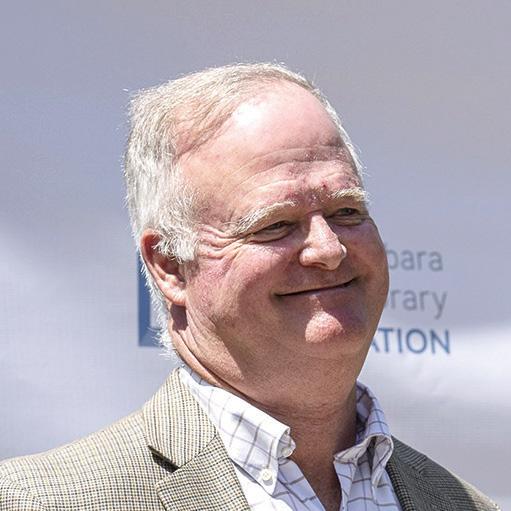
"A
better library makes Santa Barbara a better place and is something the entire community deserves."
– Jim Jackson Library Champion 2025
Michael Towbes Library Plaza opened in November 2024.
Your Investment in Community Impact
The Santa Barbara Public Library Foundation has set a bold but achievable goal: raising $100,000 this year to protect essential library services threatened by federal funding cuts. These anticipated cuts will impact critical programs such as digital literacy classes, job training resources, and targeted one-to-one training for struggling readers of all ages.
Every dollar contributed helps fight our literacy crisis and provides more of our neighbors with the reading skills they need to participate fully in our community.


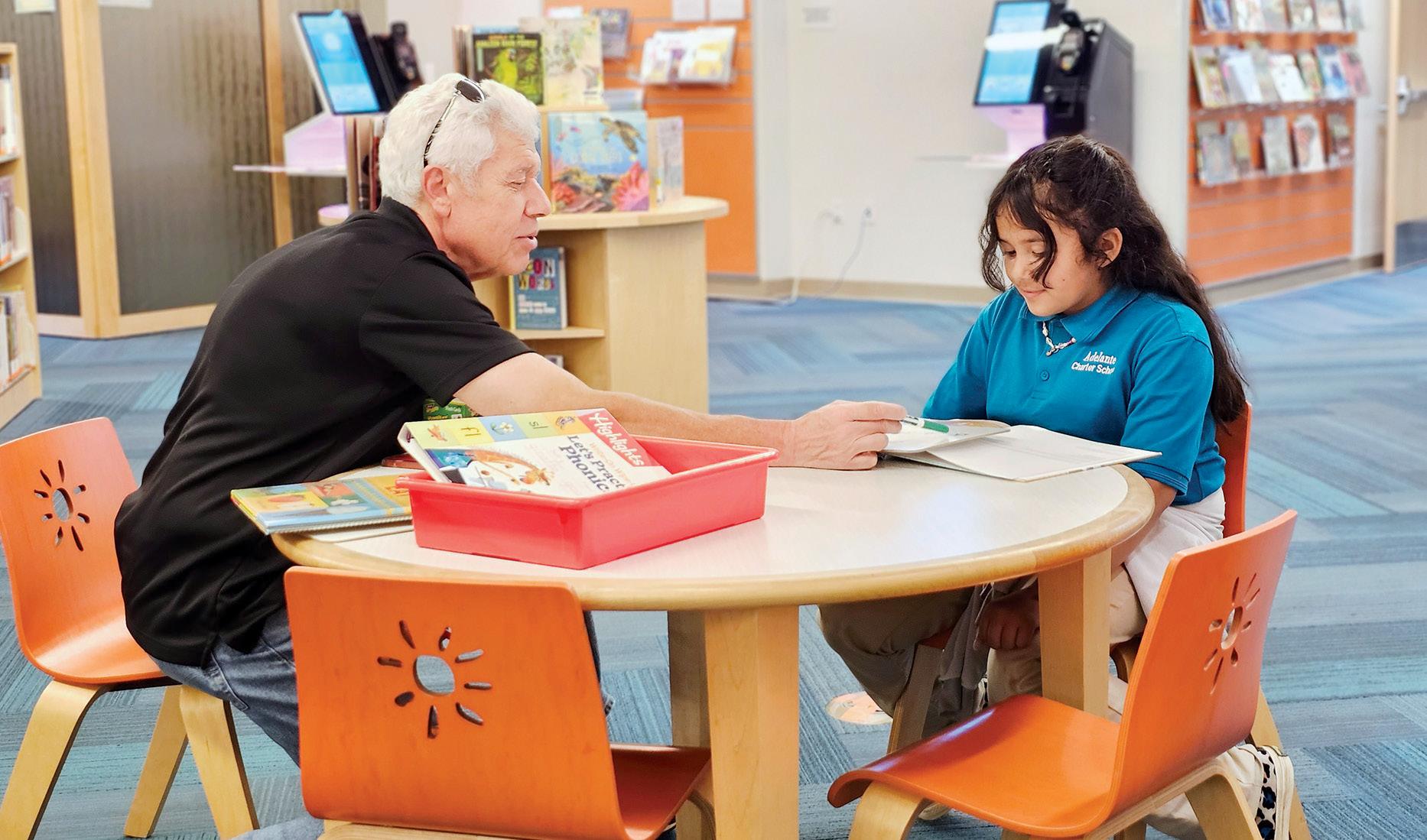
“
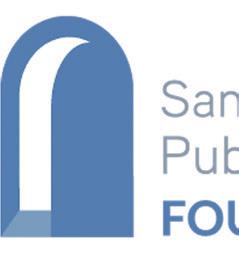

The Santa Barbara Public Library Foundation supports the long-term health and sustainability of the Santa Barbara Public Library through public-private partnerships.
The Many Ways to Give...
Santa Barbara Public Library Foundation sblibraryfoundation.org (805) 689-2448
Contact: Lauren Trujillo Executive Director (805) 689-2448 director@sblibraryfoundation.org
By DAF or Stock Transfer: Tax ID# 46-0750188
By Credit Card: sblibraryfoundation.org/donate
OG Readers pairs trained tutors with students to build reading mastery through the Orton–Gillingham approach – giving every child the tools to read with confidence.
Reading to a dog helps kids become more confident readers! Join the Santa Barbara Public Library’s Read to a Dog program.
By Check: Santa Barbara Public Library Foundation
Lighting Lives, Powering Resilience
Most of us take light for granted. We flip a switch, the light comes on. But for an estimated 700 million people around the world who live without electricity, sunset means struggling with darkness or risking their health by using dangerous kerosene lamps or candles.
Santa Barbara nonprofit Unite to Light believes that access to clean, a ordable light and energy is a human right – critical to improving health, education, and prosperity. The organization provides low-cost solar lights and power banks to those without electricity across the globe. Its solar light was developed locally at UCSB’s Institute for Energy E ciency 15 years ago and has a battery with a 10,000-hour life, which translates to more than seven years of nightly use.
The simple light makes a massive di erence to recipients who are gifted the devices in the targeted projects Unite to Light focuses on: Helping students study at night, equipping midwives with portable lights needed to save lives, and providing a beacon of hope to areas su ering power outages after natural disasters.
“Over the years, from South Africa to Haiti, we’ve tracked test scores and graduation rates for students before and after they received our solar lights,” says Megan Birney Rudert, Unite to Light’s president & CEO. “We consistently see an increase of 30 percent just from having access to a solar light.”
Last year, the nonprofit partnered with ChildFund and Books for Africa to install 600 “Light Libraries” in Zambia, Sierra Leone, and The Gambia where students checked out and returned the lights like library books. “The return on investment is tremendous,” says Birney Rudert. “Each $10 solar light can be used again and again – shared among students, reused for new classes each year, and ultimately impacting dozens of children.”
Through the United Nations Population Fund, Unite to Light has equipped midwives in Bangladesh with solar-powered battery banks and lights so they would no longer need to deliver babies by candlelight or mobile phone flashlights. “What a di erence,” one recipient said. “I can focus on the mother and baby, not just on surviving the night.
While much of its work is global, Unite to Light also operates here in Santa Barbara by distributing solar lights and power banks among our neighbors experiencing homelessness. The devices allow people to connect to critical services and provide safety at night.
This year, Unite to Light is piloting a new technology to improve community resilience – 8 PowerPoles sited across the county will power a variety of critical needs – from a food pantry to tsunami warning systems –creating safer, stronger communities prepared for emergencies.


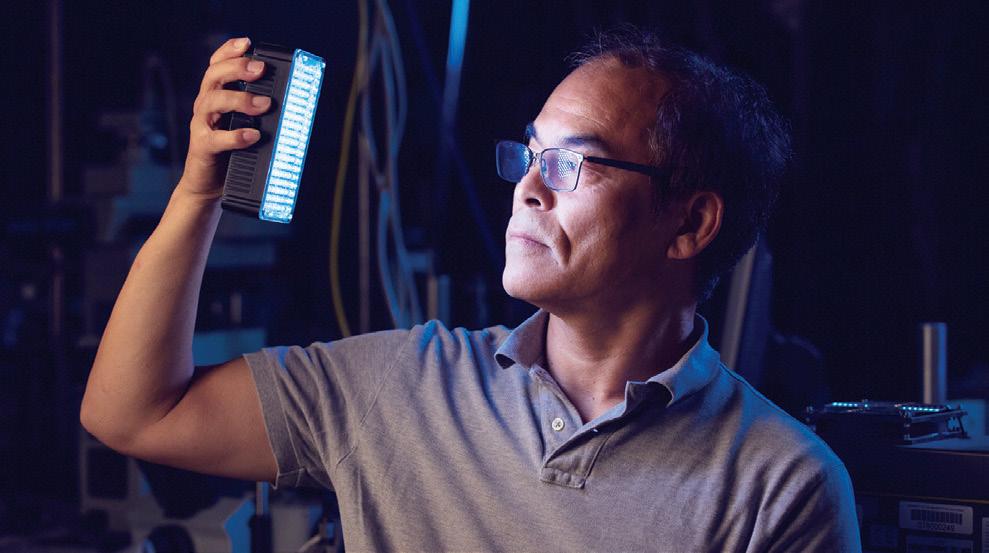
“A s a scientist, I pursued light for e ciency and sustainability. Yet what inspires me most is seeing how this technology allows a student to read after sunset, a midwife to deliver safely, or a family to save money for food and health. Light changes everything.”
– Shuji Nakamura Nobel Laureate in Physics and Inventor of the White LED
With her charger, Ann can reach her doctors, search for work, and find a safe place to rest. This lifeline brings safety, dignity, and hope.
Just $10 puts a solar light in someone’s hands—anywhere in the world. One small gift, one bright light, can change a life forever.
photo by Backpacks for the Streets
photo by Matt Perko, UC Santa Barbara
Help Make Lives More Luminous
Unite to Light is seeking $100,000 to support its mission to bring light to those who need it most.
• $10 replaces a toxic kerosene lamp with a clean solar light allowing a child to study safely at night.
• $350 equips 100 midwives or emergency workers with light, providing safe births and urgent care in the dark in refugee camps, disaster zones, or communities displaced by war.
• $1,000 creates a Light Library in a school, enabling thousands of hours of learning for students over a decade.
• $10,000 builds community resilience, installing an integrated solar array and battery system keeping the lights on in a rural school, remote clinic, or vulnerable neighborhood during power outages.


Unite to Light
www.unitetolight.org
1117 State Street #19
Santa Barbara, CA 93101
(805) 617-0590
“
Unite to Light envisions a world where every person has access to clean, a ordable light and energy. They provide low-cost solar lighting and energy to people living without electricity to improve global health, education, prosperity, and fight climate change.
“

Contact: Megan Birney Rudert President & CEO (805) 617-0619
mbirney@unite-to-light.org
KEY SUPPORTERS
John Bowers
Claude Dorais
Gisela Voss Kernan
Dawn Mitcham
Wade Nomura
Heather Bennett
Maggi Alexander
Wendy & Larry Barels
Lynda Nahra
The James S. Bower Foundation
Rudi Schulte Family Foundation
Shuji & Yuki Nakamura
Je Henley
Hans & Esther Brand
Art & Louise Fisher
Bob Simon
Je Harris
The Many Ways to Give...
By Check: Unite to Light 1117 State Street #19
Santa Barbara, CA 93101
By DAF or Stock Transfer: Tax ID# 27-2942180
By Credit Card: www.unitetolight.org
Kerosene and candles create toxic fumes that irritate eyes and damage lungs. They also pose a dangerous burn hazard when a person uses a mosquito net.
In rural Gambia, school is a rare gift. With her solar light, Ngoba can study at night, stay in school, and break the cycle of poverty.
photo by Community Health Partnership Honduras
photo by ChildFund
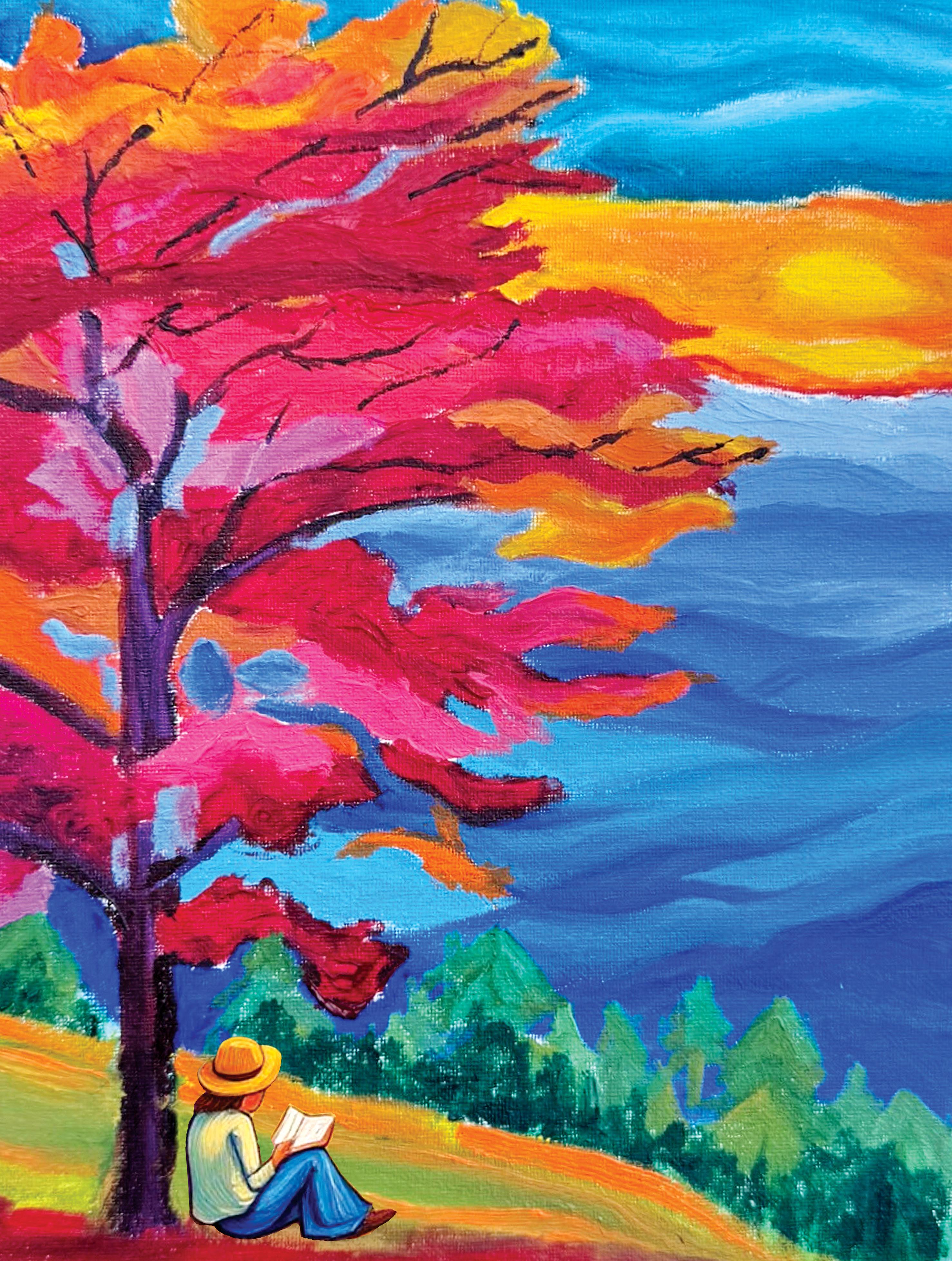
Education
“Education is the most powerful weapon which you can use to change the world.”
– Nelson Mandela

Conversations: Jim Selbert
as told to Will Pulice
Where Technology and Philanthropy Intersect
Jim Selbert is a longtime pillar of the Santa Barbara philanthropic and business communities, blending deep financial expertise with a commitment to environmental stewardship and social impact. He holds a Bachelor of Arts in Economics from the University of Cincinnati and a Master of Science in Finance from the MIT Sloan School of Management. After earning his MS, he moved to California and worked as a financial analyst at both Ford Motor Company and Litton Industries. In 1971 he co-founded Accufy Analytics, a firm based in Santa Barbara whose software solutions have facilitated over one trillion dollars in financing, helping organizations and institutions optimize complex financial tools.
Beyond finance, Jim’s values are reflected in his work outside the boardroom. Alongside his wife Patricia and son Stefan, he owns and manages Las Cumbres Ranch, a thousand-acre cattle ranch in Los Alamos. Since acquiring it in 2017, the family has adopted regenerative and holistic land management practices to restore soil health, enhance biodiversity, and promote sustainable agriculture. He had been a longtime board member of Direct Relief, serving for nearly two decades, contributing to global health efforts and disaster response. Recently he joined the board of the Santa Barbara Foundation, and in January 2025 will also serve on the board of The Land Trust for Santa Barbara County.
With this blend of financial acumen, environmental consciousness, and long-standing service, Jim Selbert brings a rare perspective to conversations about giving: one that links measurable results with legacy, place, and community.
Will Pulice: What role does digital accessibility play in making philanthropy more inclusive?
Jim Selbert: It’s not easy. You have to tailor your presence to resonate with your prospective donor class, which means having video as opposed to static presentations,
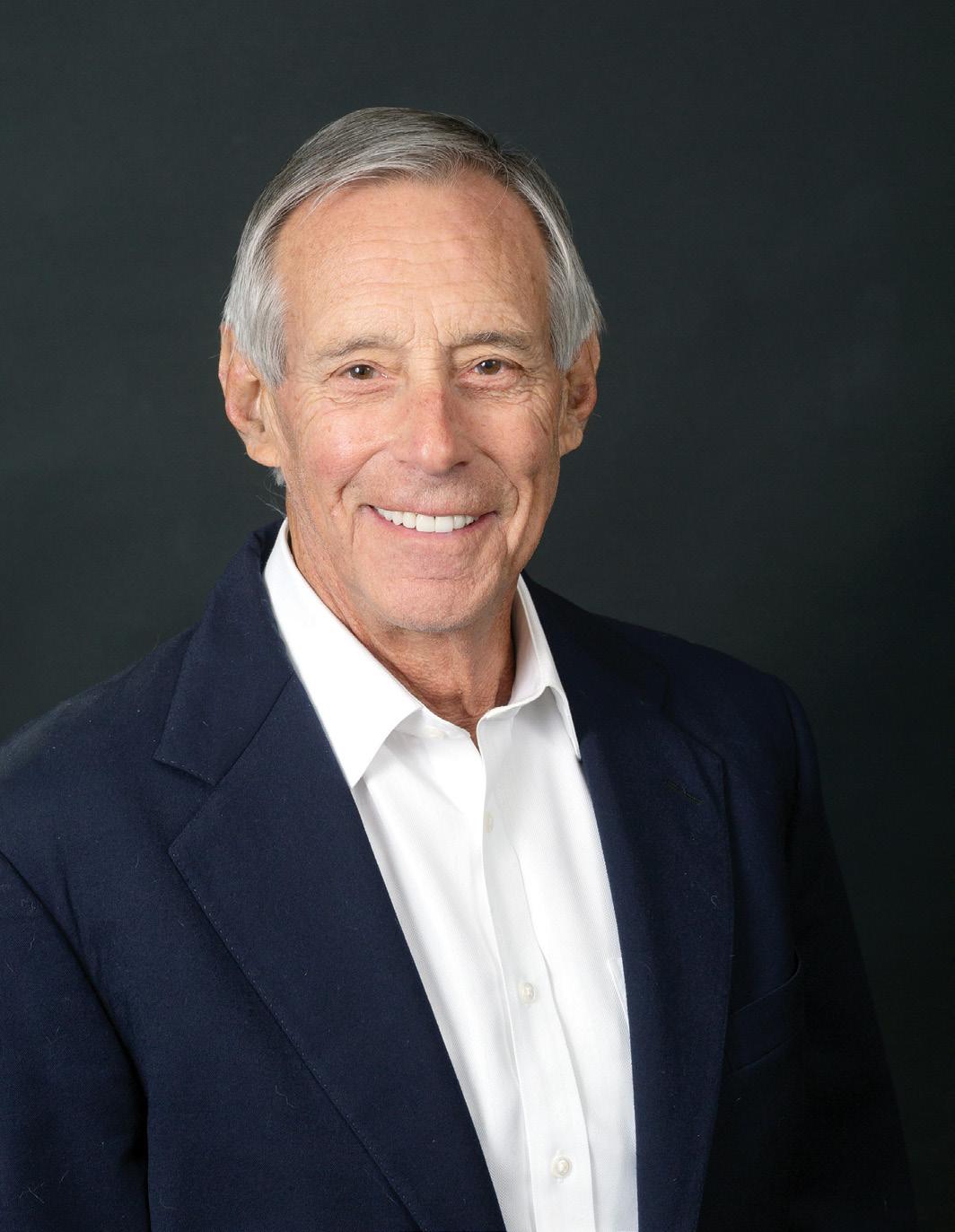
having music as opposed to silent presentations, and captioning to emphasize the message. So philanthropy has to be savvy as to what works in the digital media space.
WP: Do you think technology has changed why people give or only how they give?
JS: I would dispute the premise. I think it changes people’s giving because it allows the nonprofits to find their people – to find their donor class.
WP: How does technology make individuals feel more connected to the causes they support?
JS: It allows the audience to self-select the nonprofits that they’re interested in. It reverses the process – you
throw out your digital presence and your donors will find you if it’s done well.
WP: Do you see generational differences in how donors interact with technology in philanthropy?
JS: Absolutely. The older generation is now probably comfortable with Facebook, less comfortable with Instagram. The larger donors are probably much more comfortable with LinkedIn than Facebook. You have that generational divide, but that’s going away as us older folks die off.
WP: Is donor data being used to personalize the giving experience, and how important is that?
JS: Absolutely. There are what are really called customer relationship management systems – there is customer relationship management software specifically for nonprofits that allows analysis of donations and personalization of solicitations.
WP: Are there any ethical considerations around using data to drive giving behavior?
JS: Not really, as long as you are not leaking that data for your own commercial or other person’s commercial or criminal purposes. If the data’s kept inside the nonprofit and isn’t exploited for outside purposes, no. The nonprofit should make statements that your data will be kept private.
WP: How has technology amplified storytelling around causes?
JS: It has, especially in the sense of video presentations. So webinars, video clips from events, complete videos from presentations, the use of emotional content with music and dramatic footage – as long as it’s not pandering, which is a fine line – is a great way and a way that is being increasingly used.
WP: Much of the conversation around technology and philanthropy focuses on outreach and donor engagement. But technology also plays a critical role in how nonprofits deliver services and create real-world impact for the people they serve. From your perspective, how has technology improved not just the efficiency of fundraising, but the actual effectiveness of nonprofit programs?
JS: I haven’t worked with many nonprofits that use digital technology to enhance their mission, except in
one case: outreach to improve digital literacy and access for underserved beneficiaries. That is the only place I’ve seen it used directly to fulfill the mission.
WP: Can you talk more about that, especially for underserved beneficiaries?
JS: For example, the Santa Barbara Foundation has a program focused on improving digital access and literacy for marginalized groups.
WP: Have you also seen how technology has improved internal efficiency?
JS: Yes, I’ve worked at several nonprofits that use digital technology to enhance their mission. For example, the Santa Barbara Foundation has a program to improve digital literacy and access for the underserved, Direct Relief has partnered with the MAVEN project. The MAVEN Project connects federally qualified health clinics with medical specialists, not just general practitioners. That access helps clinics better serve their patients. Another example is the World Telehealth Initiative, which provides surgical robots and expertise to underserved populations. These innovations bolster local medical providers.
WP: What other innovations have you seen that allow grassroots or smaller nonprofits to deliver services more effectively?
JS: One fast growing local company is Collective Energy which provides redundant power systems, usually solar plus battery. Clinics need reliable power for electronic medical records and medical refrigeration, especially vaccines. Without it, they are vulnerable in storms or outages. On the internal side, enterprise software and donor management systems have also been transformative. Another example, who would be the Land Trust for Santa Barbara County, which is using Instagram to invite folks to participate in expertly guided hikes to ecologically significant areas of the County.
WP: Many donors, especially younger generations, say they want measurable results before giving or giving multiple times. How important is it for nonprofits to show clear, real-time impact, not just where the money went, but what difference it made in people’s lives?
JS: It’s extremely difficult.


There are two main schools of thought. One is trustbased philanthropy, where donors like MacKenzie Scott provide unrestricted funds without reporting requirements. The other emphasizes measuring impact. But measuring impact is hard and requires a plan. Often nonprofits rely on stories and anecdotes to demonstrate impact, because making precise quantitative statements can be challenging.
WP: How do you see the balance between trusting an organization and demanding evidence of outcomes?
JS: Trust outweighs proof of outcomes.
WP: What are legacy donors, and how does impact reporting differ for them compared to newer or smaller donors?
JS: Legacy donors include people who make provisions in their estate plans to support a nonprofit. They are often cultivated through special events and legacy societies, which recognize and engage those who have made or intend to make such provisions. Maintaining their trust requires continuous attention. While trust is more important to them than outcomes, showing outcomes when possible is still valuable.
WP: How does a legacy society function and benefit nonprofits?
JS: A fundraising team must make an intentional effort outside of normal fundraising to build and sustain a legacy society. These donors need consistent, multiyear engagement. Although different from other fund-

raising efforts, it is critical, and legacy gifts are often very large.
WP: How do corporate gifts fit into this picture?
JS: Corporate gifts are another form of donation. Often corporations sponsor programs so they can publicize their involvement, which helps with recruitment and government relations. Sometimes corporations use philanthropy as a way to repair reputational damage from negative press. Nonprofits must decide whether they want to align with those motives.
WP: Do local nonprofits face unique challenges in adopting digital tools compared to larger organizations?
JS: Absolutely. Because their employees in the fundraising area often are not schooled in effective use of platforms.
“The (philanthropy) field is evolving quickly. The potential is there for innovations that will significantly reshape both donor engagement and service delivery.”
WP: Looking ahead, what kinds of innovations could genuinely transform philanthropy in the next five years –whether in donor engagement, nonprofit service delivery, or community impact?
JS: That is harder to predict, but the field is evolving quickly. The potential is there for innovations that will significantly reshape both donor engagement and service delivery.
Jim Selbert’s perspective offers an important reminder at a time when philanthropy is adapting to new tools and expectations. He emphasizes that technology does more than provide convenience; it reshapes how nonprofits find their supporters and how donors discover the causes they care about. At the same time, he points out that trust often outweighs data, especially for legacy donors whose commitments come from long-standing relationships rather than measurable outcomes. This balance between innovation and tradition is where his voice carries weight. Drawing on decades of work in finance, governance, and community service, Jim has seen how organizations thrive when they adopt new methods without losing sight of their core values. His reflections suggest that the future of giving will depend on nonprofits embracing digital tools while staying rooted in the trust, transparency, and personal connection that make philanthropy meaningful.

Building a Foundation for Every Child’s Success
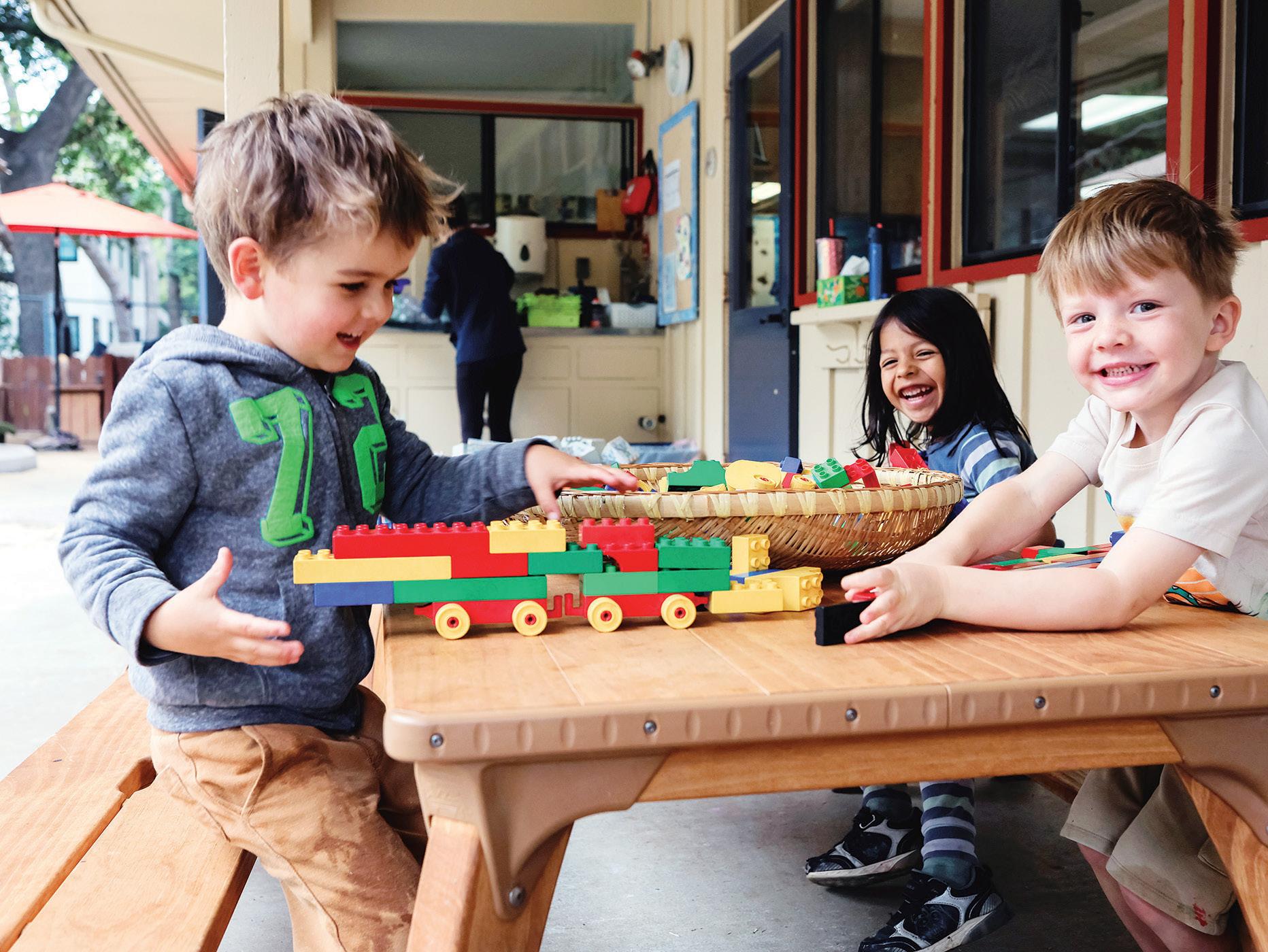
The first five years of a child’s life lay the foundation for how they’ll do in school and beyond – yet too many children in Santa Barbara County begin school already behind.
First 5 Santa Barbara County (First 5 SBC) has set an ambitious course: by 2030, 70% of children entering Kindergarten will be school-ready. Established through Proposition 10 in 1999 and now celebrating 25 years of service, First 5 SBC is advancing a strategic plan that tackles the core drivers of readiness:
Improved Family Support: There are comprehensive systems of family support that advance optimal conditions for children prenatal through five and their families.
Improved Child Health: Children have access to quality systems that promote their optimal healthy development.
Improved Child Development: Children have access to a ordable, quality early care and education opportunities prior to Kindergarten.
Improved Systems of Care: There are strong systems of support towards optimal development of children prenatal through age five.






Energize, activate, and mobilize the communities of Santa Barbara County to be key change agents towards improving conditions and outcomes for children prenatal through age five, by naming and addressing inequities found in targeted populations prior to Kindergarten.
At the heart of this work, First 5 SBC serves as a convener, connector, and collaborator – aligning cross-sector agencies and leaders around a shared goal. By bridging systems, amplifying community wisdom, and fostering collaboration, First 5 SBC is helping to build a seamless, countywide e ort that gives every child the opportunity to start school healthy, supported, and prepared to succeed.
The following featured partners reflect that shared vision. In a time of limited and competitive funding, they demonstrate how collective action can stretch resources, spark innovation, and drive measurable progress toward ensuring school readiness for Santa Barbara County’s youngest children.


Improved Family Support:
Community Support for Thriving Families
Since 2008, the Network of Family Resource Centers of Santa Barbara County has operated as a collaborative under the KIDS Network umbrella, serving over 10,000 families annually through strategically located community hubs across the county. Administered by the Santa Barbara County Department of Social Services and funded by First 5 Santa Barbara County, this network represents an evolution of over two decades of intentional family-strengthening work.
Comprehensive and Evidence-Based Services
Family Resource Centers function as one-stop community hubs where families access essential services including CalFresh and MediCal enrollment, food and diaper banks, utility assistance, parenting classes, healthy relationship education, child developmental screenings, and language translation services. Sta build lasting relationships with families, conducting strength-based assessments and connecting them to resources that address both immediate needs and long-term goals. The network operates using the nationally-recognized Protective Factors Framework, incorporating trauma-informed practices through ACEs Aware and Resilient Santa Barbara County initiatives. These evidence-based approaches focus on prevention and early intervention, building family resilience before crises develop.
Professional Development and Quality Standards
The network coordinates comprehensive training programs covering Mental Health First Aid, mandated reporting, human tra cking awareness, results-based accountability, food security, and child development. Sta training aligns with nationally-adopted Standards of Quality for Family Strengthening and Support, delivered through partnership with CalTrin and accessible via the network’s learning management system.
Systems Change and Community Impact
Beyond direct services, the network strives to eliminate service gaps and improves coordination among agencies while advocating for sustainable funding at county, state, and federal levels through partnership with the California Family Resource Association. This collaborative approach transforms communities by fostering civic engagement, addressing root causes rather than symptoms, and building long-term family stability and community resilience.
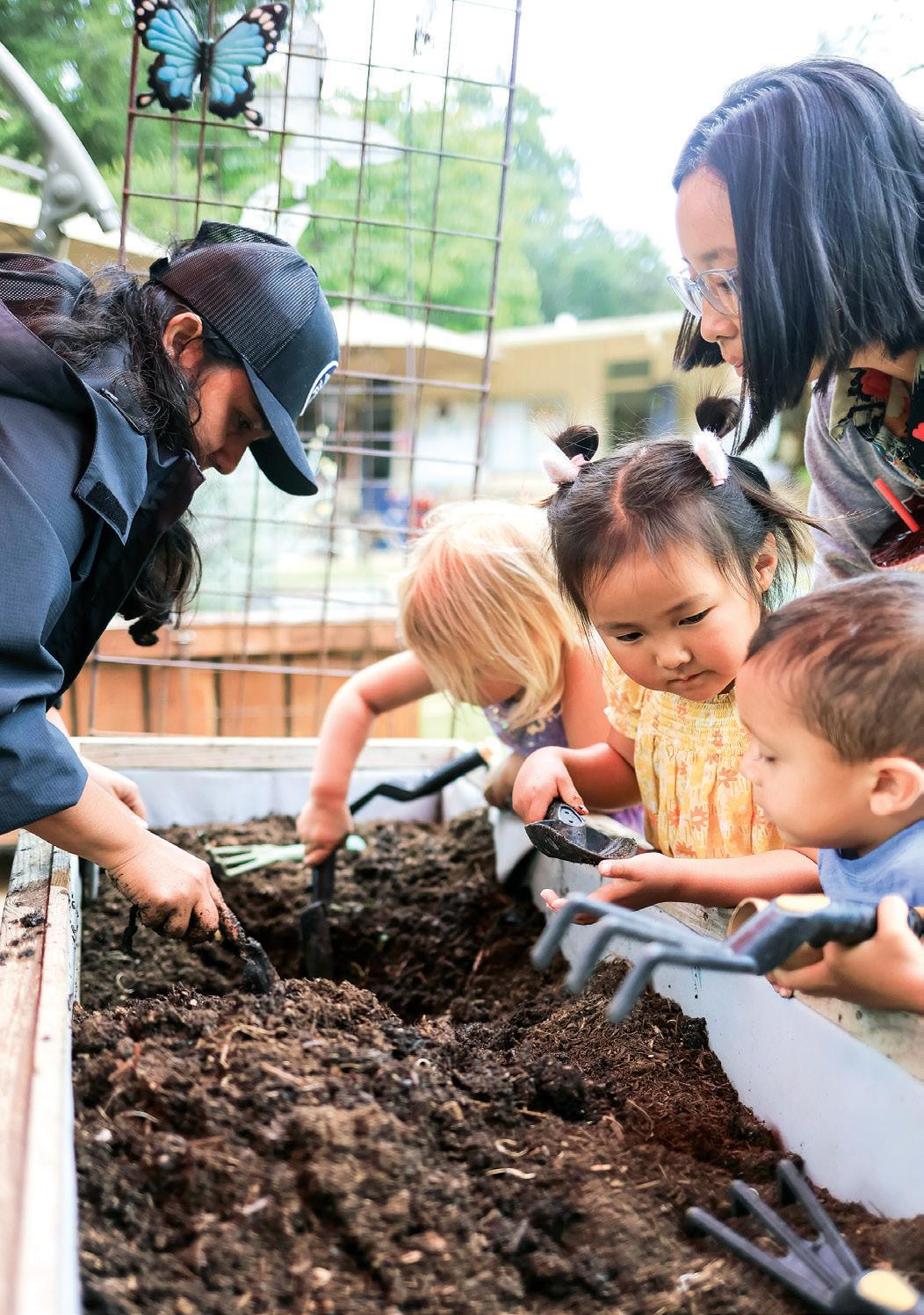

Ignite Positive Change
The Network of Family Resource Centers serves over 10,000 families annually through strategically-located community hubs, yet funding remains critically inconsistent. When you donate, you’re investing in evidence-based, trauma-informed services that prevent family crises before they develop.
nfrcsbc.org/donate
Improved Child Health & Development:
Children and Nature


STONES (picture 8) TRIM BRUSH AROUND REDWOOD
GATHERING AREA
FUTURE SINK ALONG BUILDING FACE
GARDEN AREA
Fostering a sense of wonder is a cornerstone of child health and development. Wonder sparks curiosity, imagination, and innovation, laying the foundation for critical thinking and lifelong learning. Experts increasingly recognize that in today’s world, where human impact on the planet is unprecedented, access to nature has become a “child’s right” issue. Educators will confirm that wonder is a powerful motivator for learning and nurtures wisdom that children will carry through life. The simplest and most economical way to cultivate that wonder is to ensure access to nature, gardening, and outdoor learning.
MOVABLE BENCH SEATING UNDER MULBERRY TREE OVER EWF MULCH SURFACING WITH ANCHORED LOG PERIMETER PROJECT TABLES IN DECOMPOSED GRANITE AREA
DECOMPOSED GRANITE SURFACING RELOCATE GALVANIZED PLANTERS FOLLOWING
CONSTRUCTION ADD STORAGE BENCH (picture 3) AND ACCESSIBLE RAISED BED HOSE BIB WITH DRAINAGE ROCKS AT BASE APPROX. 5’ WIDE X 2’ DEEP X 6 FEET TALL STORAGE UNITS ALONG FENCE
NATURE ART AREA TABLES AND SEATING
Santa Barbara County Challenges
Santa Barbara County boasts stunning landscapes and abundant natural spaces to explore, yet many children face barriers to accessing them. Geographic isolation, limited transportation, and neighborhood constraints mean that thousands of young residents spend much of their early years within a tenmile radius of home. For these children, nearby parks, trails, and open spaces become essential gateways to discovering and exploring the wider world.


Improved Child Health Outcomes
Movement and physical control are critical to early learning. As Hans Furth and Harry Wachs note in Thinking Goes to School: Piaget’s Theory in Practice, children who lack basic control over movements may struggle with tasks such as scanning a page, switching focus between board and paper, holding a pencil, or engaging in play. This fundamental control over movements is established in the first five years of a child’s life. Beyond movement, interactions with nature support feelings of calmness and tranquility allowing children to truly be “in the moment.” Studies show that as little as four minutes in a garden will start to reduce stress, improve mood, and steady vital signs (Easton, 2003), emphasizing the profound health benefits of outdoor experiences for young children.
Improved Child Development Outcomes
Research shows that children demonstrate richer vocabularies and stronger communication skills when allowed to explore in nature (Hackett et al., 2021). When guided by a skilled adult, children will respond to direct questions about what they observe, share ideas and comments, and make predictions. Exposure to nature promotes enhanced conversation, resulting in a child’s eagerness to engage and respond to more in-depth questions (Rymanowicz et al., 2020). For later writing and reading mastery, the quantity and complexity of children’s vocabulary is one of the strongest predictors of reading comprehension (Smith, 1997).
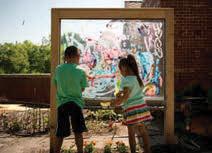
LEAs as Essential Partners and Catalysts for Equity Schools continue to embody parents’ aspirations for their children’s improved futures through quality education. Local Education Agencies (LEAs, or schools) have emerged as trusted anchor partnerships uniquely positioned to address equity and access challenges facing students. Linking early childhood (ages 0-5) initiatives with the TK-12 system allows communities to support critical brain development, building the foundations for reading and math proficiency while strengthening social-emotional readiness. With most families choosing public education, schools are crucial community hubs. By creating natural learning environments that honor a child’s right to green space and nurture both physical and mental health, schools can provide spaces for exploration and wonder while addressing equity gaps for families with fewer resources.
The
Outdoor Classroom Solution
Today’s children are tomorrow’s farmers, teachers, therapists, musicians, scientists, ecologists, and engineers. Nature exploration and outdoor classrooms foster critical skills for later in life. The primary goal of outdoor classroom education is to connect children with nature on a daily basis so that they can participate in hands-on, minful activities that support developmental skill building. Mindful-oriented environmental education during the earliest years of development requires the facilitation of meaningful, intentional experiences facilitated by thoughtful, sustainability-oriented, and environmentally conscious adults. This approach to learning is not an add on to curricula, but a paradigm shift on how we honor the unique learning needs of young children by o ering hands-on opportunities to develop the curiosity, wonder, and awe needed for them to achieve their future goals.
How You Can Help
First 5 Santa Barbara County has taken the research and proven evidence-based strategy of the outdoor classroom concept and begun working with multiple school districts across the county to develop model outdoor classroom school sites that can be replicated. Over the past five years, First 5 SBC has invested $135,000 in conceptual plans, aiming for at least one model outdoor classroom in each of the county’s 18 public elementary districts. Eight districts are already participating, with Oak Valley Elementary in Buellton and Harding University Partnership School in Santa Barbara completed. First 5 SBC invites the community to join this transformative e ort.


“U
CSB did a study of my classroom before the space was changed and afterwards. To see how they tracked the children’s engagement and how they were utilizing the space was amazing – they proved 100% of the kids were conversing more and doing more independent and group play.”
– Erin Cavazos
Pre-K Teacher at Harding University Partnership School, Santa Barbara Unified School District
Be Part of the Solution
The following projects have already or are about to break ground. Capital funds are needed to complete various sections which may include landscaping, purchasing of materials, development of learning areas, etc. All sites are available to provide tours and more details, and naming opportunities are available.
Hope Elementary School District, Hope School: hsdef.org/current-campaign
Santa Barbara Unified School District, McKinley School: sbefoundation.org/community-programs
Carpinteria Unified School District, Aliso School: carpedfoundation.org/cef/donate
Improved Systems of Care:
Transforming Childcare Access
The Brighter Futures Childcare Fund was born from the urgent childcare crisis of COVID-19, when widespread closures left essential workers and first responders struggling to balance critical roles with caring for their children. United Way of Santa Barbara County, in partnership with the Natalie Orfalea Foundation, Audacious Foundation, and Lou Buglioli, launched the Emergency Child Care Initiative (ECCI) to bridge this gap. The initiative’s success in uniting private employers, childcare experts, and funders not only expanded access to quality care but also inspired long-term investment: in 2023, the County of Santa Barbara Board of Supervisors allocated $2 million in ARPA funding to formalize and grow this work, creating the Brighter Futures Childcare Fund and Coalition. The fund operates through two strategic components addressing di erent aspects of the childcare crisis:
Childcare Scholarship Program
Working with licensed providers, employers, and local agencies, United Way administers scholarships targeting families who earn too much to qualify for federal assistance but struggle with childcare costs. The program aims to reduce family childcare expenses from 37% to 15% of household income, enabling parents to maintain stable employment while building financial resilience. This targeted approach fills a critical gap for working families caught between eligibility thresholds.
Employer-Sponsored Childcare Initiative
The fund provides Start-Up Grants to employers creating or expanding sponsored childcare spaces, addressing the fundamental shortage of available slots county-wide. These grants cover initial infrastructure costs, allowing businesses to leverage existing facilities and serve their workforce more e ectively. Additionally, Technical Assistance grants support employers already providing childcare with specialized training and operational guidance to enhance program quality and sustainability.
Building Resilient Communities
This comprehensive approach strengthens the childcare ecosystem while supporting workforce stability and family financial security. By addressing a ordability and availability, the Brighter Futures Childcare Fund creates lasting infrastructure that benefits children’s developmental outcomes and employers recruitment and retention. As federal ARPA funding concludes, United Way continues advancing sector sustainability through this proven model that transforms family stability throughout Santa Barbara County.

“The Brighter Futures Childcare Fund has proven to be an impactful and e ective way to support our partners, providers, employers, and families, with over $800,000 invested into system improvements, facilities and business support, and direct childcare scholarships. We’ve already surpassed our initial impact projections for this initiative and are looking forward to continuing our partnership with organizations like First 5 Santa Barbara County to support local families as they navigate those essential early years of care.”
– Steve Ortiz
President & CEO, United Way of
Santa Barbara County
Be Part of the Solution
Your donation directly supports families in Santa Barbara County where childcare costs consume up to 37% of household income. Through your generosity, United Way provides scholarships that reduce families’ childcare expenses to just 15%, creating financial stability and brighter futures. Your gift also funds employer-sponsored childcare initiatives, including start-up grants for new infant and toddler spaces and technical assistance for workplace childcare facilities.
unitedwaysb.org/childcare unitedwaysb.org/childcare-fund

The Many Ways to Help...
Family Support:
Santa Barbara County Network of Family Resource Centers
Donate online via Credit Card at nfrcsbc.org/donate
For more information or questions contact: Barbara Finch, bfinch@countyofsb.org (805) 681-4678
Child Health & Development:
Donate online to outdoor classroom capitol projects:
Hope Elementary School District, Hope School: hsdef.org/current-campaign
Santa Barbara Unified School District, McKinley School: sbefoundation.org/community-programs
Carpinteria Unified School District, Aliso School: carpedfoundation.org/cef/donate
There are additional capital projects occurring at Lompoc Unified School District, Guadalupe Union School District, Cuyama Joint Unified School District, and Allan Hancock College - Lompoc Campus. For more information, contact First 5 SBC directly at first5countyofsb.org.
Systems of Care:
United Way of Santa Barbara County
Donate online via PayPal, Apple Pay, or Credit Card at unitedwaysb.org/childcare
You may send a check to:
United Way of Santa Barbara County 320 E Gutierrez St., Santa Barbara, CA 93101
To donate over the phone, please call 805-965-8591 and press 6 for Development and Fundraising sta .
Contact First 5 Santa Barbara County:
first5santabarbaracounty.org
first5countyofsb.org / Email
@first5SBC Instagram / LinkedIn / Youtube @first5santabarbaracounty / Facebook


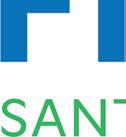







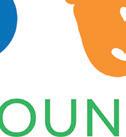
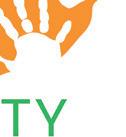

We know First 5 cannot accomplish our goals alone–these investment opportunities allow for more shared community action. Each of these projects highlighted touch the lives of thousands of children, families, and professionals in Santa Barbara County.
- Michelle Robertson, Deputy Director, First 5 Santa Barbara County
A Tree Grows on Skid Row
The Central City East neighborhood of Downtown Los Angeles goes by another moniker – one familiar to the public and long considered synonymous with urban hopelessness: Skid Row. In 1979, a Los Angeles Times article exposed the di cult lives of children living in Skid Row, and the piece galvanized social worker Tanya Tull to secure a $5,000 grant and turn a Skid Row warehouse into a childcare facility. That is, she planted something. So began Para Los Niños (PLN). “For the Children.”
Since 1980, Para Los Niños has been a grassroots powerhouse; innovating culturally responsive programs that deliver opportunity to some of Los Angeles’ most marginalized kids and their families through integrated education, wellness support, and advocacy. Poverty and inequity can seem cyclical, inevitable. They are not. Give someone the space to breathe, to locate their own potential – and they will lift themselves like a rocket on a column of flame. It starts with the at-risk children.
“As we’re enrolling a child into one of our centers, schools, or other programs,” says Drew Furedi, PLN’s president
“O ur employees look forward to the AdoptA-Family volunteer project each year. The PLN team identifies families in need of holiday cheer, and because their team is so organized, it’s easy for Disney VoluntEARS to help spread joy and create moments of happiness when families need it most.”
– Mark Pulley Disney VoluntEARS & ESR Programs Manager
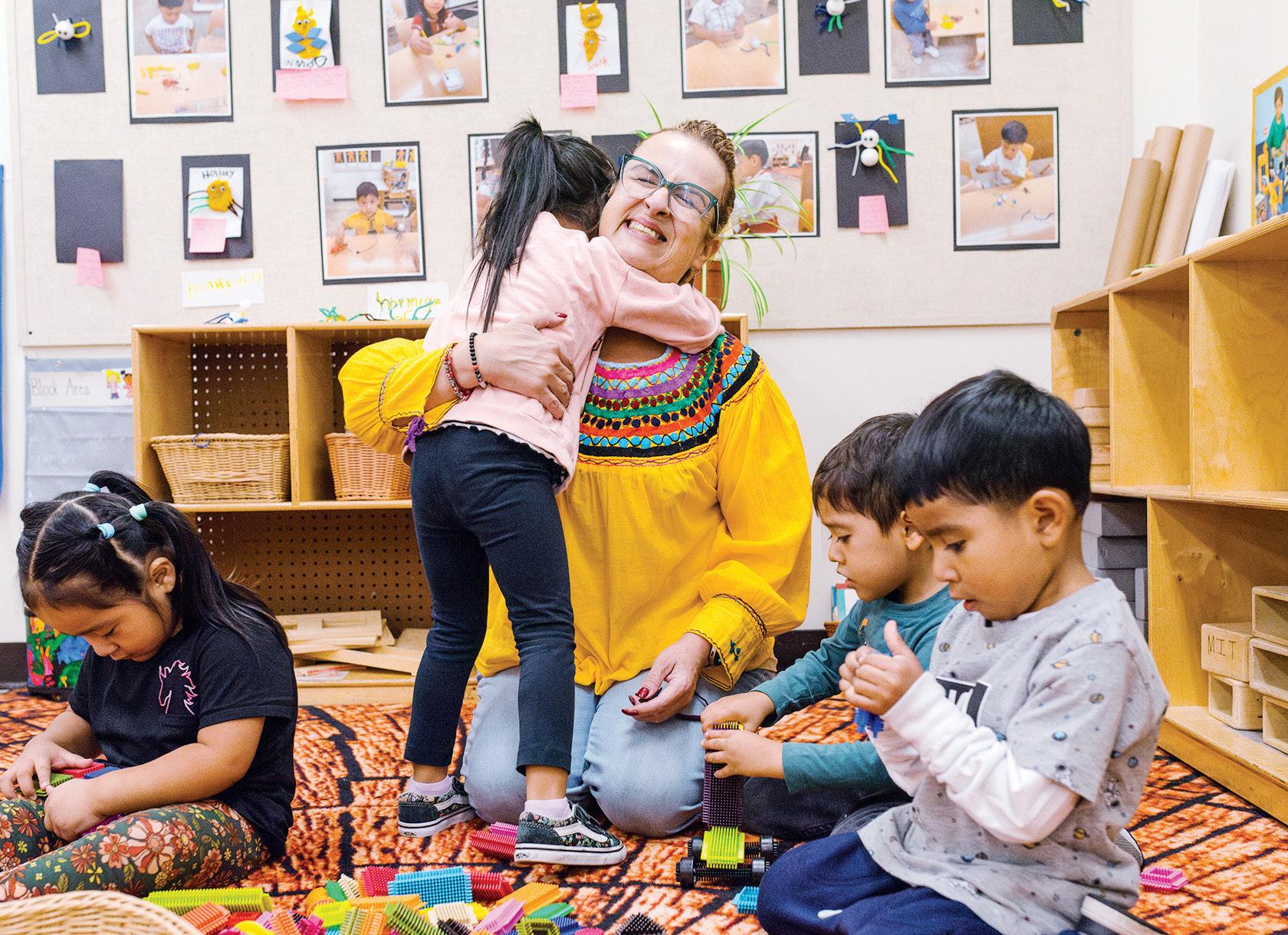
and CEO, “we’re identifying how many family members they have, what additional resources they may need – particularly around food insecurity, housing insecurity, mental health referrals. It is the child, yes. But Para Los Niños really is wrapping around the entire family.” What has become clear in PLN’s decades of working with families is that it is di cult for anyone to succeed academically or economically when they are experiencing hunger, discrimination, and the long-term stress of living in under-resourced communities.
Para Los Niños’ beginnings 45 years ago were a kind of emergency triage. Today the nonprofit operates 16 locations across L.A. County, including seven early education centers, two charter schools, and two “Workforce Services” centers focused on high school drop-out prevention and recovery. PLN is also a children’s mental health provider – the only such provider on Skid Row – o ering a host of evidence-based
clinical mental health services.
The ever-growing PLN family works with community-based organizations, city and county agencies, elected o cials, and businesses to fuel the mission. PLN’s leadership program pairs community members’ lived experience with the skills to build collective power and work productively with these entities to make a positive impact in their neighborhoods.
How to fight the illusion of inescapable poverty? You help grow a determined community and provide it the oxygen and sunlight to rise of its own accord. PLN serves 10,000 children, youth, and families annually.
“There still is such a need for the nonprofit sector, public sector, and private donations, philanthropy and supporters,” says Furedi. “To not just stitch together a safety net, but to weave it together so that it’s something that can address all the needs that are out there for these kids.” We provide high-quality academic instruction that keeps babies, preschoolers, and TK-8th grade students intellectually enriched and their families actively engaged. Our wraparound social-emotional education helps to build character and confidence.
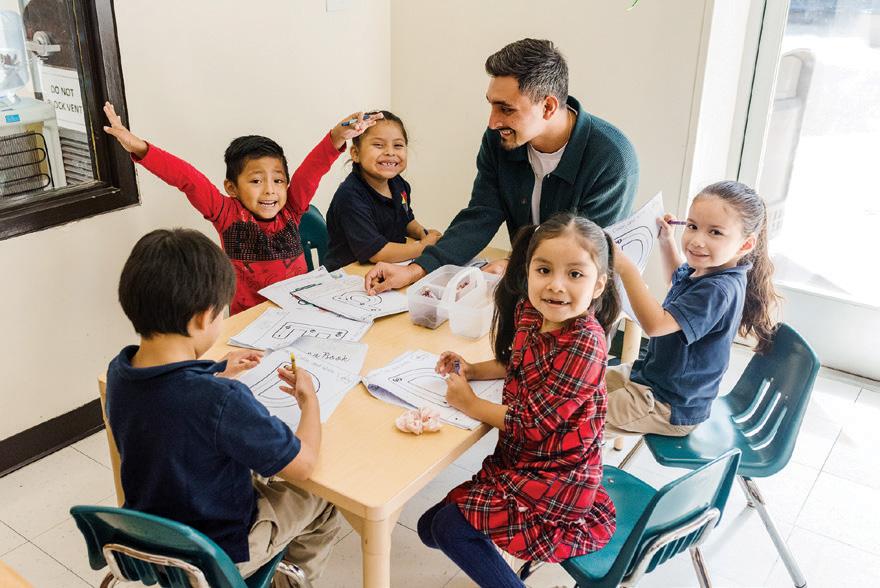
From tiny tots to elders, more than 10,000 children, youth, and family members benefit from PLN services across Los Angeles County.

Planting the Seeds for Families to Thrive
• $100 – Provides supplies, uniforms, hygiene products, and more for one of Para Los Niños’ 900 students.
• $500 – Provides supplies for community events supporting connection, family bonding activities, and the de-stigmatization of wellness support.
• $1,000 – Provides transportation services for families to access services and activities.
• $2,500 – Covers the cost of an afterschool sta member for one month of tutoring as well as extracurricular support.
• $5,000 – Provides one to two months of emergency support for rent, utility bills, or other urgent needs.


“

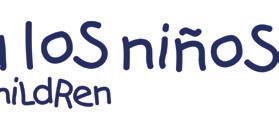
Para Los Niños (PLN) partners with children, youth, and their families through integrated education, wellness, support, and advocacy to address individual and systemic barriers and create pathways to success.
KEY SUPPORTERS
Annenberg Foundation
The Atlas Family Foundation
Gail and George Baril
Andrea and Blake Brown
California Community Foundation
Capital Group Companies
Charitable Foundation
Caruso Family Foundation
Cedars-Sinai
The Carol and James Collins
Foundation
DiCecco Family Foundation
Doris Duke Foundation
The Green Foundation
Leonard Hill Charitable Trust
“
Jewish Community Foundation of Los Angeles
The Dr. Ruth Milman and Dr. Frederick Schi Foundation
Pfa nger Foundation
The Rose Hills Foundation
We bring together community residents, local organizations, city and county departments, elected o cials, and businesses, to advocate for more equitable systems for all. Trusting relationships with highly qualified and compassionate PLN
Madeleine Heil and Sean Petersen
The Ralph M. Parsons Foundation
Supervisor Hilda L. Solis, Los Angeles County, 1st District
Steinmetz Foundation
Dwight Stuart Youth Fund
WHH Foundation
Winebaum Family Foundation
Para Los Niños paralosninos.org
(213) 250-4800
Contact: Christina Mariscal Pasten Managing Director of External A airs (213) 250-4800 Ext. 510 cmariscalpasten@paralosninos.org
By Check: Para Los Ninos
5000 Hollywood Boulevard Los Angeles, CA, 90027
paralosninos.org/donate

Emergency Services
“Courage is being scared to death but saddling up anyway.”
– John Wayne

Conversations: Amy Weaver
as told to Steven Libowitz
Putting Purpose to Work

As Direct Relief’s new CEO, Amy Weaver leads a global humanitarian organization with deep roots in Montecito, where it was founded in 1948. Today, Direct Relief delivers nearly $2 billion annually in medical aid and financial assistance to people facing poverty and disasters worldwide. Praised for running with the efficiency of a leading corporation, the nonprofit consistently ranks among the nation’s top five charities in the United States, according to Forbes. With Weaver taking over the reins in May 2025, Direct Relief is now being run by someone with significant experience in the corporate world.
A Washington State native, Weaver began her career following in her family’s footsteps in the legal profession, working in private practice then as an attorney for a pair of Fortune 500 companies (Expedia, Univar) before rising to chief legal officer at cloud-based software giant Salesforce. She then made the unprecedented move to president and chief financial officer, the first such tran-
sition in a Fortune 500 company, and a top one at that, as Salesforce sits barely outside the Top 100 and is one of the 30 Dow Jones Industrial Average companies, having replaced Exxon Mobil in the index in 2020.
Weaver helped guide Salesforce through a period of tremendous growth and transformation to where it posts revenues just shy of $40 billion per year. Now, she’s reached another landmark, as likely the first Fortune 500 CFO to transition from the corporate C-suite to head a humanitarian nonprofit.
Steven Libowitz: How did you decide to move from the corporate world of Silicon Valley into running a humanitarian nonprofit? What made you want to make that leap?
Amy Weaver: From the outside it may look like a sharp jump, but for me it feels like a very natural next step. Service has always been woven into my life. My parents were both constant volunteers, and some of my earliest memories are of tagging along on community

projects or civic campaigns. That example shaped me. At Salesforce, one of the things that most attracted me was their policy of giving every employee seven days of paid volunteer time each year. I took full advantage of that. My most meaningful connection was with Habitat for Humanity International, where I served on the board for four years and joined builds in Poland, Kenya, Puerto Rico, and across the U.S. My whole family became part of it. So when the opportunity came to devote myself full time to humanitarian work, it didn’t feel like a leap – it felt like a continuation of what has mattered most to me.
SL: How does the early installation of justice and fairness coming from a family of lawyers who gave back still show up in your philosophy?
AW: For me, it’s less about the word “justice,” which can sound abstract, and more about basic fairness. I saw that clearly last summer in Uganda, spending time in pediatric oncology wards. The contrast in cancer outcomes between the U.S. and Sub-Saharan Africa is devastating. There’s no way to explain to a child why one receives medicine and another doesn’t – even a five-year-old would recognize the unfairness. Walking through those wards, what kept going through my mind was simple: we can do better, and we must. That sense of fairness, of ensuring people have access to the same chance at health
and life, is at the heart of Direct Relief’s mission.
SL: What is an example of an early experience as an adult giving or receiving support that made a big difference in your life or career?
AW: Early in my career, I hit a stretch when nothing at work was going right and my perspective turned pretty negative. At the same time, I started volunteering once a week at our local food bank. It completely reframed how I saw things. The sense of community – donors, volunteers, families who came in for food – reminded me of what really matters. And every week I walked out feeling lighter, as if my own problems had been put back into proportion. That experience taught me that volunteering isn’t only about what you give; it’s about what you gain. My family and I have received so much from service –perspective, gratitude, and connection. In many ways, we’re the beneficiaries.
SL: Salesforce is known as a very philanthropically involved organization. Can you share what that looked like from your perspective?
AW: Their charitable model is amazing. Right from when it was founded,


they set up the Salesforce Foundation, with the commitment that 1% of the equity, 1% of the product and 1% of employee time would always go to charitable causes. It wasn’t worth much at the time, but as of now, more than three-quarters of a billion dollars has been given away, and employee volunteer time recently passed the 10 million hour mark. They still allow nonprofits to use their product for up to 10 users completely free, and then beyond that at a discounted rate. Almost 70,000 nonprofits are running on their platform at this point… It’s also very influential to attracting talent because most people care about giving back. As an executive there, I always encouraged my teams to step up and complete those volunteer hours every year.
SL: How do you think other companies can model something similar, making philanthropy part of the culture?
AW: Start as early as possible. You can start small, but you have to start. It’s extremely challenging to reset the organization once you’re already established and public. Salesforce built it into the DNA from Day 1, so it was able to scale as it grew. But on the other hand, it’s never too late. You may not be able to come up with a new financial model, but can immediately implement three or four days a year of volunteer time off. You can look for ways that you can use your product to enhance nonprofits, which costs you almost nothing. There are models that can work with every single organization.
SL: As someone who led at the highest level of a corporation, been involved in nonprofit boards, and now runs one of the largest nonprofits in the humanitarian sector, how has your perspective on philanthropy evolved over time? Or perhaps, what can nonprofits learn from the corporate world?
AW: I’ve found the learning goes both ways. Some of the best practices I brought into Salesforce came from my time with Habitat for Humanity. And in turn, the corporate world taught me a lot about the power of transparency – proxy statements, SEC filings, investor reports – all of which force accountability and fuel improvement. Nonprofits don’t always have the same forced discipline, but I think they should. At the end of the day, whether in business or in humanitarian work, the fundamentals are the same: strategic focus, financial responsibility, operational excellence, innovation, and above all, trust. What changes is the purpose. Here, those same skills are deployed in service of people who are sick, displaced, or left behind. That’s what makes it both motivating and humbling. I often walk through our warehouse, passing the pallets of medicines and supplies bound for clinics around the world. I touch them as a reminder: every shipment represents lives depending on us. That’s a responsibility I carry with both honor and urgency.
SL: What is the role of philanthropy in building community?
“Going out of your way to support someone else is truly the definition of a community. You’re coming together because you believe that there’s something better and that people acting together can build something that is better than you can do individually.”
government support or other factors with the economy, or if they’re not, then like Direct Relief they’re in a position to step up and do more. In either case, what they need is funding. So if people have been holding back, if they’re waiting for the right time to make a commitment, to make a gift, to really try to make a difference, the time is now.
The recent changes have been a tsunami going through the development world. I believe if you are in a position to do more – like we are at Direct Relief – you really have an obligation to do so. This is the moment. It’s the moment for donors, it’s the moment for nonprofits. It’s the moment for everyone to really step up.
SL: Before joining Direct Relief, how did you choose which nonprofits or causes to support?
AW: I would love to say that they’re always very well thought out decisions. But often it was something that just caught my eye and touched my heart. But in general, my husband and I always look at where we can make the most impact – whether it’s helping a small handful of people in a substantial way that will change their lives, or something that is going to have a much broader and wider impact on more people by leveraging expertise and context.
AW: Going out of your way to support someone else is truly the definition of a community. You’re coming together because you believe that there’s something better and that people acting together can build something that is better than you can do individually. It also breaks down barriers. We live in a very divisive society right now, and yet you can find people who come together around common goals when it comes to philanthropy. The more things we can look to that bring people together towards a single goal, the better off we’re going to be.
SL: Speaking of divisive times, there’s been a massive cutback in governmental support, especially internationally. Do you see that as an opportunity or even responsibility for private philanthropists to step up to try to fill that void?
AW: Let’s put it this way: if people have been waiting to know when they could have the most influence with their donation, the answer is now. Organizations are either facing incredible cuts, whether it’s from a lack of
Either way, I think about something I heard as a student at Wellesley from William Saltonstall who told us that the most important advice he could give us about philanthropy was to always give to a general fund or unrestricted donations. He said, whoever you’re giving it to, they know better than you where it’s needed.
SL: Any final thoughts on wealth, philanthropy, and giving back?
AW: I believe the saddest thing anyone could say at the end of their life is that they wasted their potential. The opposite is to be able to say: I used what I had –my gifts, my resources, my time – to make my family, my community, and the world better. That’s the legacy I hope for. It’s not enough to do your job well; you have to ask yourself, did I do all I could with what I was given? That’s the measure I want to hold myself and Direct Relief to.

“I Could Not Ask for a Better Partner”
In the rolling hills outside Santa Paula, California, a stirring ceremony is afoot. Four young first responders from Oklahoma Task Force One and their canine partners will be formally paired today – effectively for life. Each in his turn, the soft-spoken young men in uniform tell their stories, the small outdoor amphitheater ringing with birdsong. As they speak, their four-legged partners in rescue gaze on them with the unfiltered love for which dogs are known.
These young Oklahomans are signing on 30 years after the Oklahoma City bombing that essentially launched the National Disaster Search Dog Foundation’s mission. The stakes remain high. These paired teams will not be searching for the dead, but for the living. CEO Rhett Mauck offers a benediction. “To these handlers, we say thank you for your dedication to your canine partners – and for the journey that lies ahead.”
In 1996 a woman named Wilma Melville launched the National Disaster Search Dog Foundation (SDF), having been stunned the prior year at the shortfall of handlers and rescue dogs desperately seeking survivors in the smoldering rubble of the blasted Alfred P. Murrah Federal Building in Oklahoma City.

“OverFrom rescued to rescuer: Disaster search dogs are trained to find the strongest scent
get odor,
These years later, evolving SDF training is arduous and exacting, the expansive training compound an outdoor menagerie of collapsed buildings and crushed cars. SDF’s canine candidates arrive already familiar with the rescue theme – SDF’s dogs are themselves rescues from shelters. However they fare in SDF’s training and mission, they will find homes. SDF’s Lifetime Care
the years, the Search Dog Foundation has forged numerous partnerships with canine disaster search teams that proudly serve the Los Angeles area. We deeply appreciate the presence of these remarkable canines in our ranks, standing as a steadfast resource we can rely on when summoned to action by the Los Angeles County Fire Department and California Task Force 2.
“Our task force holds the distinction of being one of only two in the nation with the capacity to deploy internationally, and the indispensable role played by our search dogs cannot be overstated. In the face of earthquakes, hurricanes, mudslides, or the daunting challenge of locating missing persons, these exceptionally trained canines form the bedrock of our search missions. Whether the need arises close to home or on foreign soil, these four-legged heroes ensure that our operations are successful.

“It is of utmost importance to highlight the unwavering support provided by the Search Dog Foundation, which generously supplies these canines as invaluable assets to our department and task force. This unwavering commitment ensures that we are perpetually ready and equipped to serve our community whenever the call for assistance rings out. Together, we stand united, ready to bring aid and hope in times of crisis.”
–Gregory Short Battalion Chief, Los Angeles County Fire Department and Program Manager, California Task Force 2/USA-2
Commitment guarantees it.
The bond between dog and handler is mission critical. “It’s about connection over compliance,” explains Denise Sanders, senior director of communications and search team operations. “It’s about making sure they’re connected with their handler, that they are doing the work together. In a large-scale disaster,” says Sanders, “there’s so much ground to cover. So to be able to trust that dog to say, we can move on, this area is clear; that’s everything.”
From Maui to Los Angeles to Texas to Turkey, through fires, floods, and quakes, SDF’s work never pauses. From the day of a dog’s arrival on campus, SDF spends approximately $75,000 to train a search dog and handler over 10 to 12 months – professional, certified training that comes at no cost to the emergency departments nationwide who are SDF’s beneficiaries. “We’re 100% funded by private donations,” Sanders says. “We don’t accept government funding, only individual and foundation donations.” And though the nature of disaster itself is dynamic, SDF teams are on the case.
“They leave here,” Sanders says, “prepared for all scenarios, ready for anything. These teams have that relationship in place where it needs to be.”
source of their tar-
barking to alert their handler that a missing person is buried beneath the surface of the rubble.
Sponsor the Canine Heroes

The frequency and strength of recent disasters are stark reminders that they can strike at the heart of any community. In the search for victims, a search dog’s remarkable nose and hard-earned skills mean the difference between days versus minutes, lost versus found, uncertainty versus hope. The National Disaster Search Dog Foundation (SDF) works diligently to ensure canine search teams across America can deploy at a moment’s notice when needed, which includes preparing the next generation of canine heroes.
From the day they arrive on campus to the day they are paired with first responders, SDF spends approximately $75,000 to train a search dog over 10 to 12 months.
SDF is raising $975,000 to train the next search dog graduates. Donors at $20,000 and above can become sponsors of a search dog in training, receiving updates on their progress and milestones throughout their career. Sponsor one or even a pack of canine heroes to be Part of the Search!


Search dogs and their handlers train together weekly to stay ready in case of deployment. The Search Dog Foundation campus contains disaster training props that help prepare them for any disaster scenario they may face on deployment.

The mission of the Search Dog Foundation is to strengthen disaster response in America by rescuing and recruiting dogs and partnering them with firefighters and other first responders to find people buried alive in the wreckage of disasters.
BOARD OF DIRECTORS
George Leis, Chair, Executive Vice President & Market President, CalPrivate Bank
Richard Butt, Vice-Chair, Retired EVP, Executive Creative Director, VMLY&R
Deborah Whiteley, Secretary, Communications Consultant
Christine DeVries, Treasurer, Retired Financial Services Executive
Elena Brokaw, The Barbara Barnard Smith Executive Director, Museum of Ventura County
Michael Cesare, Management Consultant, KPMG US LLP
Robert Harris, Deputy Fire Chief, Los Angeles County Fire Department
Sydne Levy, Attorney, Brownstein Hyatt Farber Schreck
Andrew MacCalla, Co-Founder and CEO, Collective Energy
Rhett Mauck, CEO, National Disaster Search Dog Foundation
Crystal Wyatt, Leadership in Board Governance and Creative & Sustainable Philanthropy
4K9-HERO Contact: Rhett Mauck Chief Executive Officer (805) 646-1015 Rhett@SearchDogFoundation.org
The Many Ways to Give...
Saving Lives in Santa Barbara’s Most Rugged Territory
Santa Barbara County Search and Rescue (SBCSAR) was ready when an experienced paraglider had an issue with equipment and was injured when he crashed o a trail in the Santa Barbara backcountry.
“We located him through his phone GPS coordinates, assisted in the stabilization of his injuries and, using a stretcher and a wheel, evacuated him to a waiting helicopter to take him to the hospital,” says Jennifer Beyer, SBCSAR operations leader and current board member.
The highly trained all-volunteer rescuers also responded when a fun-loving hiker stayed too long soaking in hot springs near a hiking trail in the foothills, and called 911 at midnight because he didn’t have a flashlight or a jacket to find his way out.
“We had 12 responding members conduct a ‘hasty’ search and quickly accessed the trail, hiked up, and found the subject. The team stabilized the subject with warm clothing and walked him out. He was very relieved,” Beyer says.
The two “call outs” are among more than 100 emergencies each year that SBSCAR responds to across diverse


SBCSAR team members work together in a technical rescue drill, securing an injured hiker in a stretcher for safe transport.
terrain, ranging from rescues of injured subjects on the trails, technical rope rescues, helicopter-supported extractions, to search operations for overdue hikers, fire evacuations, and lost or missing atrisk children and the elderly. The elite unit operates 24 hours a day under the direction of the Santa Barbara County Sheri ’s O ce. Dispatched through the 911 system, SBCSAR is ready to respond to the multitude of emergencies
“SBCSAR exemplifies the highest standards of skill, dedication, and teamwork. With over 50 years as a SAR volunteer and president of the Raintree Foundation, I am proud to support a team whose professionalism and commitment to saving lives are unmatched. SBCSAR’s ability to respond quickly and e ectively, whether in rugged mountain terrain, swiftwater environments, or urban settings, reflects their exceptional training and community spirit. Their volunteers consistently go above and beyond, bringing hope and safety to those in crisis. I deeply respect the countless hours these men and women invest to ensure others return home safely. SBCSAR truly embodies the spirit of service, courage, and excellence.”
in Santa Barbara County.
The team members come from all walks of life, go through extensive monthly training and are constantly updating their skills, including annual recertifications and testing in multiple disciplines. All in order to stay up to date on the “best” practices in search and rescue.
Altogether, the 50 team members donate more than 13,000 hours of mission response, training, and outreach every year.
“We are professional dedicated rescuers who are first responders in the community,” Beyer says. “We just happen to not be paid.”
The organization also provides outreach to the community through vital safety education in navigation, communication, and survival skills necessary to operate in the challenging and dynamic mountain environments of Santa Barbara County.
One notable mountain rescue came when two hikers lost their way in the Gaviota area last summer. SBCSAR dispatched three separate teams via hiking, UTV, and mountain bikes to reach their remote o -trail location.
– Jim Frank Raintree Foundation President | Retired SBCSAR
member
“We don’t care how they got into the situation,” Beyer says. “We just want to get them back to safety. We brought them to their cars where their families were waiting. There were tears, there were hugs. It was a very good day.”
Supporting the Rescuers
The
all-volunteer Santa Barbara County Search and Rescue e orts are provided at no cost, but running the 100 percent self-funded organization isn’t free. Donations from individuals, foundations, and corporate sponsors are critical to meet its operational, training, and equipment needs. SBCSAR needs to raise $250,000 annually to fund the community service that provides a lifeline for those in need, up and down the most rugged areas of Santa Barbara.
• $33,000 Funds comprehensive training for members, ensuring they are prepared for any situation.
• $55,000 Funds upgraded search management tools, IT, and communication equipment.
• $150,000 Funds a new rescue vehicle for emergency response to replace 20-yearold models.
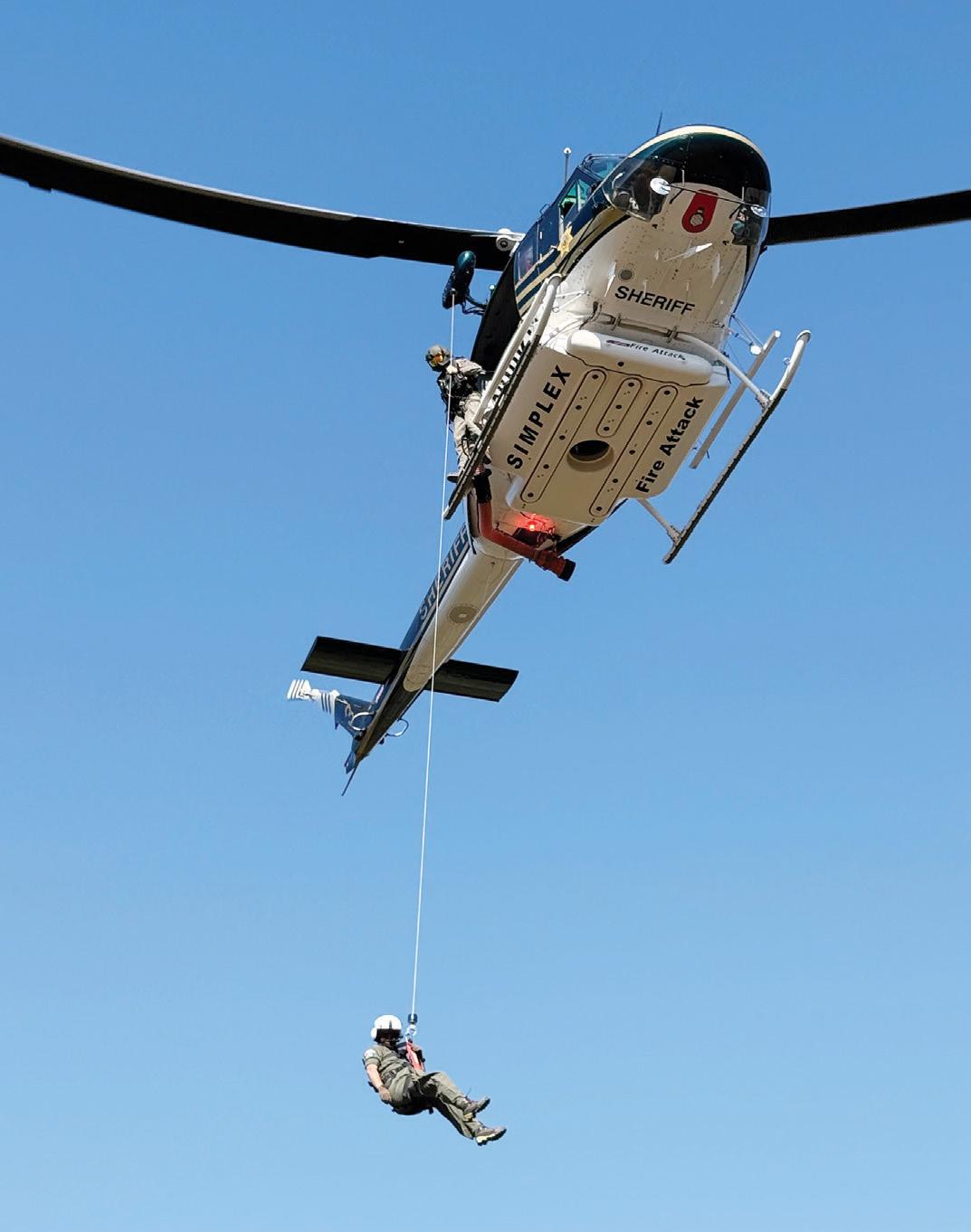

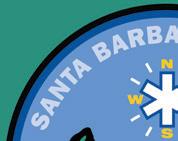




SBCSAR conducts a hoist insertion and extraction training exercise, partnering with the Santa Barbara County Air Support Unit to practice accessing remote and hard-toreach areas.
Santa Barbara County Search and Rescue is an all-volunteer team, serving law enforcement, fire rescue, and emergency services in Santa Barbara County and the surrounding counties by mutual aid request. As a public service, SBCSAR provides trained SAR members to search, locate and rescue lost, missing, or injured persons upon the request of any o cial agency. We are on call 24/7, 365 days a year and respond in all terrain and conditions.

An injured hiker carried out in a rescue litter after sustaining an ankle injury at Lizard’s Mouth.
967-0253
Delivering Life-Saving Aid When California Burns
For nearly 80 years, Direct Relief has stood ready to meet the cascading challenges of global disasters, delivering life-saving medicines, supplies, and funding to people in dire need in more than 100 countries. From its modest 1948 beginnings in a Montecito home, the nonprofit has become one of the world’s largest humanitarian aid organizations, navigating the toughest environments worldwide. From rushing cystic fibrosis medicines into war-torn Ukraine to routing cholera kits through shuttered ports in Haiti, Direct Relief has also never lost sight of its local roots, continuing to respond to emergencies here at home.
Its history of response to California wildfires stretches back decades, from the 1964 Coyote Canyon Fire to the 1990 Painted Cave Fire, when the organization coordinated around the clock with hospitals and clinics to deliver burn creams, sterile dressings, and critical medicines within hours. Today, California’s wildfire seasons are longer, hotter, and more destructive than ever, testing the communities in their path and entire regions with smoke, power grid failures, and surges in respiratory illnesses. In response, Direct Relief has scaled its support to meet this reality across the state.
After the 2017 Thomas Fire, the organization distributed thousands of N95 masks, emergency medicines, and financial aid to impacted clinics. During the 2018 Camp Fire, California’s deadliest and most destructive wildfire, it shipped urgently requested medicines and provided targeted grant funding to clinics across Northern California. And in the first

“Dsix months following the 2025 Los Angeles wildfires, Direct Relief has delivered $12.7 million in medical and financial assistance, including 140,000+ N95 respirators, trauma counseling for students returning to school, rental support for displaced families, and funding to keep safety-net clinics operating under extreme strain.
“Every wildfire creates its own public health emergency,” says Dean Axelrod, Direct Relief’s vice president of partnerships and philanthropy. “People lose their homes, but they also lose access to medicines, safe air, power, and medical care. Direct Relief’s goal is to close those gaps fast so clinics can stay open, patients can access necessary medicines, and families have what they need to recover.”
Direct Relief’s wildfire response goes beyond reacting. The organization now pre-positions critical medicines and medical supplies across California so healthcare providers can continue caring for their patients and communities when wildfires strike, clinics are equipped with solar-and-battery microgrids to safeguard refrigerated medicines, and facilities are kept open.
Direct Relief remains headquartered in Santa Barbara, just miles from the Montecito pantry where it began. But its work in California carries lessons and innovations that serve communities worldwide, shaping its ability to respond to complex emergencies with speed, precision, and trust.
irect Relief’s grant enabled AltaMed to respond quickly during the Eaton Fire, providing evacuees with urgent medical care, behavioral health support, and essential supplies. By strengthening our readiness and supporting mobile services at the Pasadena Convention Center, Direct Relief helped us care for displaced patients, community members, and sta . This partnership not only amplified our immediate response but also reinforced long-term recovery and resilience, ensuring compassion translated into action when it mattered most.”
– Sharlene Risdon-Jackson Vice President, AltaMed Foundation

Maximizing Impact
Nearly every cent donated to Direct Relief goes directly to delivering aid. None is used for fundraising, which is fully covered by a generous bequest.
By leveraging in-kind donations of medicines and supplies, the organization amplifies each donor dollar’s impact, delivering more aid than cash alone could achieve. Direct Relief’s 100% fundraising e ciency ratings from Forbes and Charity Navigator testify to its accountability.
Direct Relief was also the first U.S.based organization to ever receive the 2025 Seoul Peace Prize – one of the world’s most prestigious honors for humanitarian achievement – for its unwavering commitment to delivering lifesaving medical aid in disasters, conflict zones, and underserved communities.

Direct Relief
www.directrelief.org (805) 964-4767

Direct Relief is a humanitarian aid organization, active in all 50 states and more than 80 countries, with a mission to improve the health and lives of people a ected by poverty or disasters by mobilizing and providing essential medical resources needed for their care.

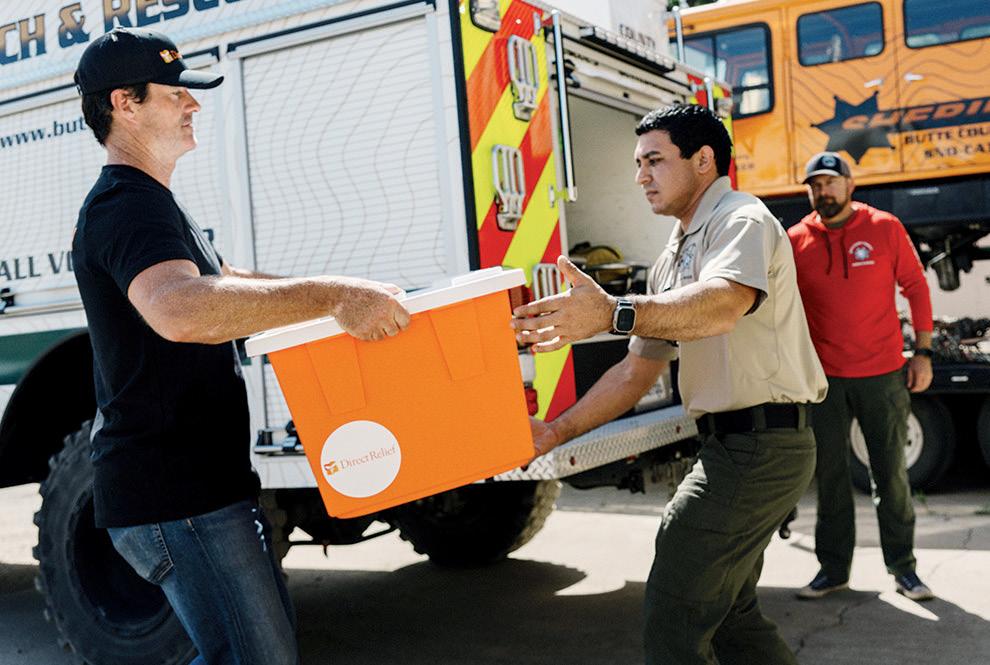

KEY SUPPORTERS
Emma Carrasco
Adam Cooper & Melissa Fleisher
Mary M. Dwyer
Henrietta Holsman Fore & Richard Fore
Heitham Hassoun
Mark & Kim Linehan
Jay McGonigle
Harry & Jacqueline McMahon
Annalisa Pizzarello & Robert Conway
Marla Salmon
Mark & Lynda Schwartz
Perry Siatis
Laurie Siegel & Joseph Nosofsky
Tom Strickland
Thomas & Heather Sturgess
Elizabeth A. Toro & Mark Hauser
The Many Ways to Give...
Contact: Dean Axelrod Vice President, Partnerships & Philanthropy (805) 879-4932
DAxelrod@DirectRelief.org

For the Environment
“The environment is no one’s property to destroy; it’s everyone’s responsibility to protect.”
– Margaret Mead

Partnering With Land Stewards to Regenerate the Central Coast

Ahealthy planet is rooted in healthy working lands. The Community Environmental Council (CEC) works alongside farmers, ranchers, and land stewards to strengthen food systems, restore ecosystems, and build resilience to climate change. Through its Climate-Smart Agriculture program, they support land-based solutions that improve soil health, conserve water, enhance biodiversity, and reduce wildfire risk.
One cornerstone of this e ort is CEC’s Pollinator Habitat Program – a regional partnership with the Santa Barbara Botanic Garden and local Resource Conservation Districts, supported by the California Department of Food and Agriculture. Together, they provide financial and technical assistance to Central Coast farmers and
ranchers to reestablish pollinator habitat on working lands.
Pollinators are essential to thriving ecosystems and abundant harvests, yet habitat loss has pushed many species into decline. CEC helps landowners install nature-based infrastructure – such as hedgerows, wildflower meadows, windbreaks, and raptor perches – that attract and support a diversity of pollinators, from bees and moths to hummingbirds and even
“W
bats. These features not only support biodiversity – they also reduce soil erosion, improve crop yields, control pests naturally, and enhance the overall health of the land.
For many growers, installing habitat is a goal, but one that comes with cost barriers. That’s why CEC helps connect landowners to funding and cost-share programs that make these improvements more accessible. The results are visible across the region: vineyard managers, ranchers, and farmers are transforming underused or degraded areas into dynamic corridors of biodiversity.
Pollinator habitat is just one part of a broader approach. CEC is also championing prescribed grazing to lower wildfire risk, compost application and cover cropping to improve soil fertility and water retention, and piloting innovative efforts like The Elderberry Project, a collaborative initiative with White Buffalo Land Trust, Orella Ranch, the Wild Farmlands Foundation, the Santa Ynez Band of Chumash Indians, and many others to establish elderberry as a commercially viable crop, supporting ecological restoration and economic resilience.
Each practice CEC supports reflects a shared goal: transitioning agriculture from extractive to regenerative.
Agriculture connects us all. By supporting the stewards of our working lands, CEC is ensuring that local farms and ranches can continue to nourish communities while playing a critical role in protecting our region for future generations.
e have a responsibility to be good stewards of the land, and appreciate CEC’s invaluable guidance and technical support to help ensure we’re protected from climate impacts.”
– Gina Giugni Owner, Lady of the Sunshine
Wines
With guidance from CEC, Mikey and Gina Giugni were able to secure $60,000 to create pollinator habitat, sequester carbon, and mitigate wildfire risk at their Bassi Vineyard property.
Help Us Grow the Future of Climate-Smart Agriculture
Afew years ago, second-generation farmers
Mikey and Gina Giugni took over a vineyard near Avila Beach. With hands-on support from the Community Environmental Council –including land use planning, species selection, and grant navigation – they transformed it from a conventional operation into a thriving, organic ecosystem.
Stories like this are made possible through CEC’s Central Coast AgLink, which connects land stewards with one-on-one guidance, tools, and funding to adopt climate-smart practices.
A gift of $50,000 or more supports AgLink’s core operations – removing barriers to millions in available public funds.
With your help, AgLink can scale its impact, ensuring the Central Coast leads in regenerative agriculture and climate resilience.

The Many Ways to Give...
Community Environmental Council
cecsb.org (805) 963-0583
Contact: Sigrid Wright CEO (805) 730-0201
swright@cecmail.org
By
Check: Community Environmental Council 1219 State Street, Suite. A Santa Barbara, CA 93101
Memo: The Giving List By DAF or Stock Transfer: Tax ID# 94-1728064
By Credit Card: cecsb.org/donate



CEC builds on-the-ground momentum to reverse the threat of the climate crisis. We transform the systems that fuel it. We safeguard the community from its impacts. We lead, we partner, we act. And every day, we move people to create a more resilient Central Coast.
KEY SUPPORTERS
Ann Jackson Family Foundation
Charles Stewart Mott Foundation
Crawford Idema Family Foundation
El Gato Channel Foundation
G. A. Fowler Family Foundation
Hutton Parker Foundation
James S. Bower Foundation
John C. Mithun Foundation
Kenneth Rainin Foundation
Kind World Foundation
Lewis Greenwood Foundation
Linked Foundation
Living Peace Foundation
Mosher Foundation
Natalea Orfalea Foundation
Outhwaite Charitable Trust
Patricia Bragg Foundation
Santa Barbara Foundation
Santa Ynez Band of Chumash Indians
The Kirby-Jones Foundation
The Little One Foundation
The Lucky One Foundation
Tomchin Family Foundation
Zegar Family Foundation
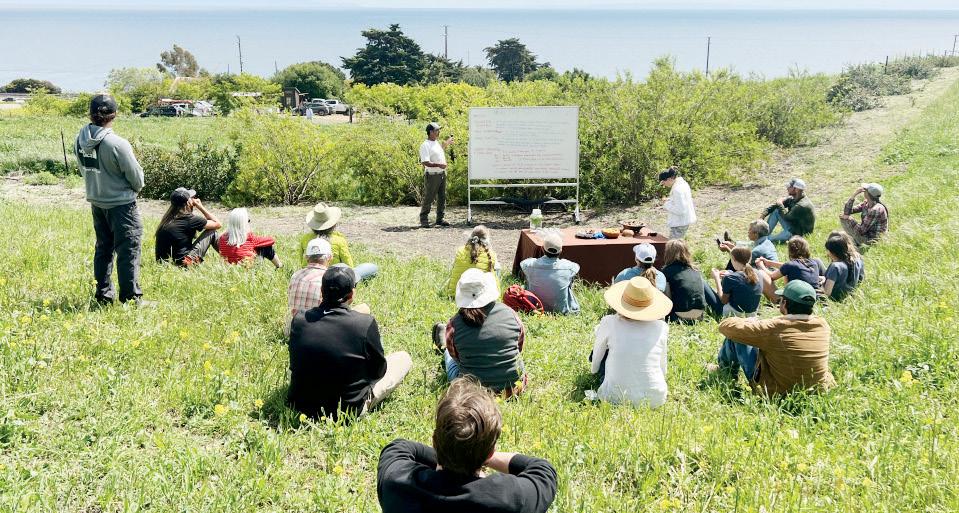
Hedgerows create pollinator habitat, help block wind, and prevent erosion, especially along the delicate hillsides of the Gaviota Coast.
CEC and Orella Ranch co-host a workshop for farmers, ranchers, and land stewards to demonstrate climate-smart agriculture practices.
Taking a Stand Against Environmentally Destructive Corporations

California’s hidden menace. When oil and gas wells are abandoned without proper cleanup, these so-called “zombie wells” can leak dangerous toxins into the air and drinking water, while continuing to emit climate-warming gases into the atmosphere.
Drive through Inglewood, past the largest urban oil field in the United States, and you’ll see them everywhere: skeletal metal structures punctuating neighborhoods like industrial tombstones. Most passersby assume these are active wells, extracting fossil fuels from beneath California’s subdivisions, shopping centers, and family neighborhoods. They would be wrong. Many are what Danielle Lackey calls “zombie wells” – abandoned, unplugged, leaking toxins and poisoning communities’ drinking water.
Lackey, the executive director of ClientEarth USA, doesn’t fit the typical environmentalist mold. She’s a business lawyer who has found her calling in corporate boardrooms rather than protest lines. “We’re not environmental lawyers,” she explains. “We’re lawyers fighting for the environment.” It’s a distinction that matters more than semantics suggest.
The zombie wells represent a masterclass in corporate malfeasance. Fossil fuel companies extract profits for decades, then sell the aging wells to other entities that are destined to go bankrupt, leaving taxpayers and communities holding the bill for the cleanup. “They extract all the profit,
then they leave taxpayers and local communities to bear the brunt,” Lackey says.
Consequently, there are now roughly 3.7 million abandoned wells across the nation and over two million of them are still unplugged. Each well costs an average of $100,000 to properly clean up and prevent pollution, which totals hundreds of billions of dollars in cleanup costs that major corporations have o oaded onto taxpayers.
Even more staggering are the human costs. The wells pose significant risks from greenhouse gases that contribute to devastating climate change and extreme weather to even graver health risks – contaminated air and drinking water, degraded ecosystems, all disproportionately a ecting vulnerable communities.
Where traditional environmental groups play defense against regulatory rollbacks, ClientEarth has chosen o ense. ClientEarth’s strategy is to level the playing field by taking these corporations to court, with the goal to ensure that every company becomes a good environmental citizen.
Their zombie wells case attacks the bankruptcy schemes that allow this environmental destruction. The strategy
is surgical: create legal precedents that other attorneys can replicate. Already, for-profit law firms are approaching ClientEarth, asking how to bring similar cases.
This approach resonates beyond environmental circles because it taps into something universally understood: fairness. “Corporate greed is something that everyone takes issue with,” Lackey observes. Their plainti s aren’t environmental warriors but homeowners who bought property near wells, expecting companies to honor their cleanup obligations.
ClientEarth is using their unique expertise to hold corporations accountable for their devastating impact on our planet. They’re fighting for all of us to ensure a future with clean air, clean water, and a safe climate for everyone.

"I knew I wanted to hitch my wagon to the most impactful environmental organization I could find – and ClientEarth’s unique e orts made me feel confident that they were that group. I like that they are keeping corporations honest, playing by the rules they set out for themselves."
– Wendie Malick Donor
Join the Fight for a Livable Planet
Your support can fund the legal precedents that will hold corporations accountable for environmental damage. A $100,000 gift supports the scoping of a new case launch. A $50,000 gift supports a fellowship for a law school graduate, providing a learning experience for the next generation of lawyers protecting the planet. $25,000 could fund discovery research exposing corporate schemes. Even $5,000 helps build the war chest needed to take on billiondollar defendants. When ClientEarth wins, they create pathways for hundreds of similar cases – transforming single victories into systemic change that makes environmental responsibility profitable and environmental destruction expensive.

Danielle Lackey, ClientEarth's executive director. Prior to joining ClientEarth, Danielle served as the chief legal o cer of an industry-leading technology company. Previously, she practiced as a white-collar litigator at a world-class law firm. Oil and gas companies have abandoned 3.7
“

ClientEarth is an environmental action group with a unique approach: they hold corporations directly accountable in the court of law and the court of public opinion.
“

KEY SUPPORTERS
BOARD OF DIRECTORS: Alexander Reid
Clate Korsant
Cory Edelman
Frances Beinecke
Gabrielle Bacon
Hassan Elmasry
Hunter McIntosh
Jonathan Kaufelt
Nik Mittal
Phil Harvey
FRIENDS OF CLIENTEARTH:
Barbara Williams
David Johnson
Judi Weisbart
Patagonia
Schmidt Family Foundation
Scottie Thompson
The Many Ways to Give...
ClientEarth
www.clientearth.us (310) 361-7006
Contact: Allie Butkiewicz Director of Major Gifts (310) 361-7006
abutkiewicz@clientearth.org By
million oil and gas wells across the US as the wells began to run dry. However, the majority of them – 2.1 million – have not been plugged.
Protecting Our Ocean – A Matter of Life Itself


The ocean’s importance to the Earth mirrors the importance of blood to human life – a profound reminder that our connection to the sea runs deeper than we might imagine. This fascinating observation, shared by Hillary Hauser, co-founder of Heal the Ocean, illustrates why protecting our coastal waters isn’t just an environmental issue – it’s a matter of life itself.
Since 1998, Heal the Ocean has transformed from a citizen action group responding to surfers’ water quality complaints into a scientific powerhouse driving monumental change along the Santa Barbara coast. What began as concerns about ocean conditions has evolved into a comprehensive approach to ocean health that benefits both marine ecosystems and human communities.
“We discovered the extent of sewage pollution in the ocean, leading us to develop scientific testing methods including environmental DNA analysis,” explains Hauser. “Our focus shifted from just raising awareness to actively securing funding and implementing solutions.”
This evolution has produced remarkable results. The organization’s first significant achievement – removing 15 miles of septic systems from the south Santa Barbara County coastline, including Rincon, and connecting this line-up to the Carpinteria Sanitary District – eliminated a major source of ocean pollution. Today, under the leadership of Executive Director Karina Johnston, a marine ecologist who uses science to inform policy and advocacy, Heal the Ocean tackles the growing challenges of climate change.
Johnston, who has a background in coastal resilience, has positioned Heal the Ocean at the forefront of adaptation strategies. Her work emphasizes naturebased solutions that provide multiple benefits: protecting infrastructure, improving water quality, and creating habitat for wildlife.
Johnston’s coastal habitat restoration projects o er natural defenses against rising sea levels and storm erosion –critical protections for vulnerable coastal areas like Santa Barbara County. These
projects exemplify what she calls “multibeneficial outcomes” that help both people and wildlife.
The organization’s holistic and transformative approach recognizes that ocean health connects to everything – from the movement of tides, to recreational activities and economic vitality. “The ocean’s role in sustaining life on Earth encompasses far more than marine ecosystems,” Hauser notes. It a ects tourism, fishing, property values, and the mental and physical well-being of everyone on Earth.
Today’s challenges require innovation. Climate change has intensified the urgency of coastal protection, making Heal the Ocean’s scientific methodology and practical solutions more valuable than ever. The organization’s water quality improvements, combined with Johnston’s expertise in coastal resilience planning, and the deeply personal connections Hauser and Johnston bring to their work, position them uniquely to address 21st-century threats to the ocean.
When derelict boats hit the beach, HTO and its partner, MarBorg Industries, remove them before they break up and pollute the ocean.
photo by Harry Rabin

An Investment in Ocean and Community Health
Heal the Ocean (HTO) needs your support to continue its vital work and maximize its impact. Any donation amount helps HTO’s work to protect our coastal waters and our shorelines.
• $250 provides equipment for beach cleanups, the most basic form of clean-water action.
• $500 annually sponsors a dog bag station, preventing pet waste from entering marine environments.
• $36,000 annually supports HTO’s Styrofoam recycling program, keeping micro-pieces of Styrofoam from entering the environment – and the ocean.
• $110,000 supports HTO’s coastal resilience pilot program, an investment to be matched by a generous HTO donor to help fund the planning of a dune restoration project on a SB beach.


Heal the Ocean focuses on reducing ocean, groundwater, and watershed pollution and providing scientific and research-based solutions to improve the health of our coast to benefit people and wildlife. HTO is focused on Santa Barbara County, but their methods are now serving as a model for other coastal communities across the country.
KEY SUPPORTERS
Sandy & Tim Armour
The Larry Barels Family
Brittingham Family Foundation
The Cheeryble Foundation
Roger & Sarah Chrisman
Thomas & Nancy Crawford
Roy E. Crummer Foundation
Tom & Sheila Cullen
Julia Louis-Dreyfus & Brad Hall
Dan & Rae Emmett
Greg & Elisabeth Fowler
Brian & Laurence Hodges
Kirby Jones Foundation
93101 (805) 965-7570 Contact: Karina Johnston Executive Director (805) 965-7570 karina@healtheocean.org By
the Ocean
90106
Barbara, CA, 93190
Just Folk/Susan Baerwald & Marcy Carsey
The Manitou Fund
Mericos Foundation
Henry & Nanette Nevins
Patagonia.com
Poehler-Stremel Charitable Trust
Adam & Kara Rhodes
Sam & Sherilyn Scranton Rev. Trust
Steve Starkey & Olivia Erschen
Cheryl Tomchin
The Turpin-Allebrand
Family Charitable Foundation
Andrew Velikanje and his Earthcomb team partner with HTO to remove trash from abandoned camps, recycle Styrofoam, and hand-remove excess tar from local beaches (credit: Harry Rabin). photo by Harry Rabin


Conversations: Andrew Firestone
as told to Steven Libowitz
An Emcee Who Inspires People to Get Involved

Andrew Firestone may still be best-known outside of Santa Barbara County as the third Bachelor in the history of the trend-setting reality TV franchise, where the good-looking and affable greatgrandson of the founder of the Firestone Rubber Company was wooed by 25 young women. But around these parts, he’s one in a four-generation line of family members to establish themselves in the Santa Ynez Valley as both entrepreneurs and enterprising philanthropists –with Andrew gaining fame and accolades as the current MC of choice at area fundraising galas.
Andrew’s grandfather Leonard, and his mom and dad Brooks and Kate, established Santa Barbara County’s first estate winery in 1972, spearheading what has become a huge industry in the area. Brooks also served as a state legislator and two-term county supervisor. His siblings went into wine, breweries, and coffee, while
Andrew worked a number of roles in the hospitality industry starting with cleaning rooms and bussing tables even before he could drive. Since 2014, Andrew has been principal and founder of StonePark Capital, a hospitality firm that focuses on the development and acquisition of select service hotels.
But philanthropy folks also know Firestone for his public face. Andrew has emceed a huge swath of fundraising events, as many as 50 in a given year, dating back nearly two decades and covering a full range of causes and issues. He’s hosted galas for organizations supporting all phases of life, from early childhood education (Storyteller) to hospice care (Visiting Nurses) and everything in between. His donations of time and talent go well beyond serving as auctioneer, as Firestone has served on numerous nonprofit boards, ranging from The Wolf Museum of Exploration + Innovation (MOXI), where he was a cofounder, to current seats on the boards for Visit Santa Barbara, the Santa Barbara Bowl Foundation, and the AAPLE Academy at San Marcos High School.
Steven Libowitz: You grew up in a very industrious family, but also one devoted to philanthropy in your family. Was the concept of giving back instilled at an early age?
Andrew Firestone: Participating in community service has always been part of my life. I watched both my mother and father being very active, which inspired and set an example for me. There’s so many different ways to contribute between the three “T”s of time, talent, and treasure. My parents have supported the arts and a variety of different organizations over the years. So I was exposed not just to philanthropy but really getting in and helping and figuring out where to contribute. I am proud to continue what my family has done while taking a little bit of my own direction. It’s been a big part of my life, and I feel lucky to be in a community like Santa Barbara that has so many philanthropic outlets and opportunities for doing good.
“It’s my job to inspire the people that are there. I run around on stage with energy and enthusiasm so people get excited about being there. It’s not about guilting people to raise a paddle once. You want them to really invest in the organization over a long period of time. That’s why it’s important to share what their investment has turned into.”
SL: You’ve become the go-to guy for emceeing nonprofit events in the area. Why do you think that is?
AF: I see it as more than just going up there and standing on a podium or holding a microphone. I get involved in the organization to fully understand the mission and the outcomes they produce, so I can speak about it with confidence and some level of experience. I feel a sense of responsibility to make sure that I’m doing my part to help the organization be successful.
Anybody can throw a great party. To me, these galas are about coming together to celebrate the mission and inspire people to continue to support the organization. I do that through telling stories and showing how the organization is accountable. [Donors] want to be able to see the outcomes of what is essentially an investment. When you raise your paddle, you are saying that you believe in that organization, so you want it to have the fuel it needs to accomplish its mission.
I like to talk about what this organization does and why it’s so important, as well as where it’s been and where it’s going with the contributions of the community. I’m able to do that because I believe in the mission or I wouldn’t be there.
SL: How do you stay fresh and avoid burnout returning year after year for the same nonprofit?
AF: Actually, it’s helpful. In a way, I’ve been growing up with the organization. I know where they were a year ago, three years ago, five years ago. I know how they’ve



“If I have one job on this planet, it is to raise empathetic children that are willing to also support and help their community where they can. And I know the best way to do that is by example.”
expanded, how many people have benefited from what they do. It’s about sharing the continuum, not just a snapshot, but rather a story that is continuing to unfold. I feel that responsibility to help make sure that the legacy of the organization continues to grow and to prosper.
It’s my job to inspire the people that are there. I run around on stage with energy and enthusiasm so people get excited about being there. It’s not about guilting people to raise a paddle once. You want them to really invest in the organization over a long period of time. That’s why it’s important to share what their investment has turned into.
With the organizations I’ve helped out for years, I feel like I’m a part of that mission, whether it’s Direct Relief or Teddy Bear Cancer Foundation or United Way or Alzheimer’s Association. I feel a sense of responsibility for doing my part. With some of the younger ones, I help with guiding their overall fundraising platform. I can offer best practices for fundraising and for keeping supporters engaged. It’s really satisfying to see them grow.
SL: How do you choose which nonprofits to help?
AF: Full stop, this community, whether it’s the arts or education, supporting families with either food or shelter insecurities, domestic violence – these organizations are helping my neighbors, helping my community, and I have a responsibility to do whatever I can. I feel blessed that we have so much here. I’m just shouldering my portion of that burden.
I recently did an event for Olive Crest Hope Refuge in the Santa Ynez Valley for the first time. So I spent a day at their facility (for sex trafficked teenage girls), met the people involved in the program, and it was incredibly moving. It’s heartbreaking and remarkable at the same time. I left there incredibly inspired.
It’s remarkable and it’s heartbreaking and all those things all rolled up. But in so many of these things, and probably why I try and help out where I can is, you need people on the front line that are addressing so many of these issues. And my motto is that a lot of this responsibility is very, very heavy, and it is too heavy for one person. But if you spread that responsibility, that load across a crowd of people, it becomes that much lighter. And I like to think I’m just shouldering my portion of that burden.
SL: How are you passing on the giving gene in your own family?
AF: If I have one job on this planet, it is to raise empathetic children that are willing to also support and help their community where they can. And I know the best way to do that is by example. And so I have involved my three children in events and I’ve gotten them involved in fundraising and auctions and all sorts of things so they can kind of see how much time I dedicate to that, how important it is for me, and how fulfilling it is as a part of my life. And as my kids grow up, they’ve gotten their hands dirty. They’ve volunteered at many organizations. One of my proudest moments, my daughter who’s now a freshman at San Marcos High School, is on the founding board of Glimmers Foundation, which was in memoriam in support of one of her classmates who passed away from cancer at a young age. I am just beaming with pride. Inspiring a younger generation to be involved and to participate is really what it’s all about.
SL: Any final thoughts on wealth, philanthropy, and giving back?
AF: With any level of success comes a responsibility to make sure that you’re leaving your community better. There are many ways to participate. You have to find your passion, not only what moves you but where you can have the greatest impact.

Make a Vital Link to Improve Health for Families and Children

Despite Santa Barbara’s seemingly vibrant, prosperous community, some of its youngest residents face invisible barriers to health and wellness that can limit their entire futures. Health Linkages, also known as Children and Family Resource Services, stands as a beacon of hope and vitality, providing wraparound services that address the complex web of challenges facing local underserved families.
Health Linkages, under the leadership of Executive Director MaryEllen Rehse, a social worker with decades of public health expertise, operates on a simple yet powerful principle: good health extends far beyond traditional medical treatment. It encompasses access to comprehensive care, education, and community connection.
The Hernandez family’s journey demonstrates the organization’s holistic and attentive approach to community health. While facing homelessness, sisters Maria and Katrina, 15 and 16, were referred to Health Linkages for mental health concerns by their school. Mother of four, Claudia, was wary of the stigma of getting mental health assistance, but went along reluctantly. Health Linkages found a culturally appropriate therapist,
and the union was so successful that Claudia eventually requested health services for every other child in the family. Their navigators assisted Claudia in finding a job and helped the family secure their own home through public housing.
Similarly, their impact can be found through stories like that of four-yearold Mario. During a Health Linkages visit, Rehse observed Mario licking the cream cheese o a bagel, never taking a single bite. It turned out that Mario’s teeth were so painful that licking was his only option. Through Health Linkages’ comprehensive approach, Mario received not just dental care, but his family gained access to resources that addressed all of the family’s broader health needs.
The organization’s early childhood focus proves particularly vital in Santa Barbara and Lompoc, where Health Linkages identifies and addresses vision, dental, and hearing needs in preschool children. Through partnerships with state preschool programs, they catch problems early, when intervention can be most e ective. They also provide oral health services, including fluoride varnish applications and dental screenings, crucial in communities without fluoridated water.
AT THE HEART OF HEALTH LINKAGES’ SUCCESS ARE ITS FOUR CORE PROGRAMS:
Future Smiles leads a county-wide children’s oral health collaborative and provides necessary preventative services and education.
Mental Wellness Education and Linkages (MWEL) places trained health navigators in schools, ensuring immediate support and connections when student challenges arise.
Connecting to Coverage helps families navigate the complex world of health insurance, particularly Medi-Cal, removing financial barriers to crucial care.
Promotores Program partners with a diverse network of community health workers who serve as trusted messengers within the Latino community. These health promoters, many of whom are first-generation immigrants themselves, break down cultural and linguistic barriers their neighbors face.
Health Linkages’ name says it all –their goal is to strengthen the vital “linkages” between comprehensive health and social services, and children, families, and communities in need.
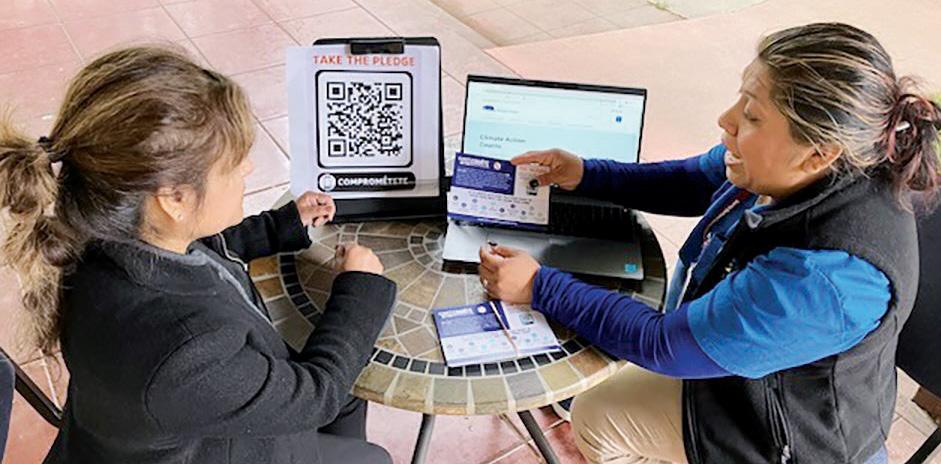
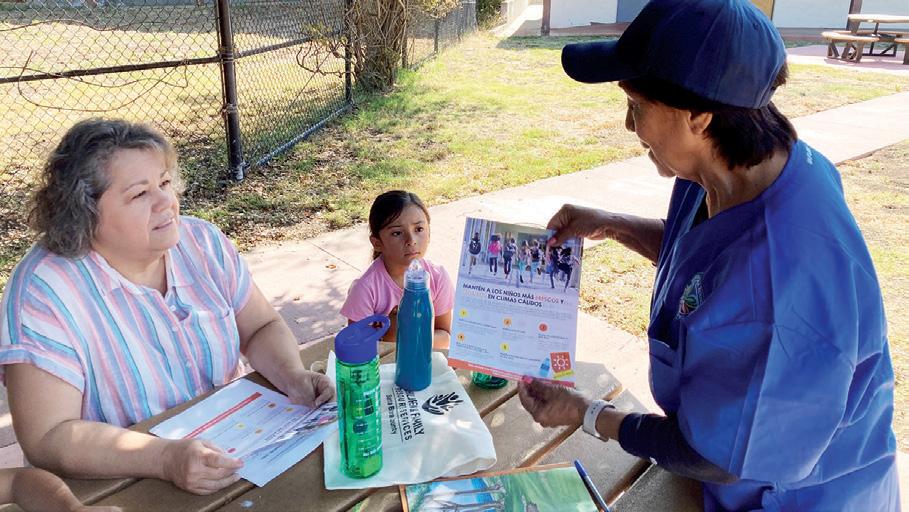



To provide high-quality, familyfocused, strength-based services to build resilient communities throughout Santa Barbara County.

Be a Champion for Children’s Health
A$250 donation sponsors a family’s support in the “Connecting to Coverage” program, ensuring navigation to essential health insurance with a certified enroller. A $25,000 gift trains an entire cohort of Promotores, with six weeks of “basic training” creating new community health champions who will serve hundreds of neighbors. Every dollar invested in Health Linkages creates ripple e ects that strengthen the entire community’s health and well-being.
Dr. Susan Salcido
Georgene Lowe
Bridget Baublits
Dr. Florene Bednersh
Donna Barranco Fisher
Patty Herrera
Brianne O'Dell
Saul Serrano
Dr. Karen Lin
Cathy Slaughter
The Many Ways to Give...
Children and Family
Resource ServicesHealth Linkages
www.sbceo.org/cfrs (805) 964-4710
Contact: MaryEllen Rehse, MSW Executive Director, Children and Family Resource Services (805) 450-5714 mrehse@sbceo.org
Building the Future of Health, Together


With generous support from community members like you, Cottage’s new Grotenhuis Pediatric Clinics will o er an expanded space and new specialties so families can continue to count on Cottage for advanced care.

“A s a parent, you worry about when you’re gone, what’s going to happen. Kyle will always have this community— he will always have Cottage. We don’t know of any better hands for him to be in.”
– Jim and Diane McKittrick Parents of grateful patient, Kyle McKittrick
Cottage Health is entering a new era of innovation while staying true to its mission of providing exceptional, compassionate care. This spring, they welcomed Scott Wester as President and CEO. With more than 30 years of experience leading nationally recognized nonprofit health systems, Wester is known for advancing patient care, expanding services, and building strong partnerships. His vision and commitment to excellence will guide Cottage into its next chapter of growth.
New facilities and programs are bringing that vision to life. This fall marks the opening of the Grotenhuis Pediatric Clinics, uniting specialists in a family-centered location to ensure children across our region have access to advanced care. Looking ahead, the Compton Center for Medical Excellence & Innovation – made possible by a historic gift from Mary and Richard Compton – will accelerate clinical, educational, and research initiatives, keeping our community at the forefront of medical discovery.
Progress also continues on the relocation of Cottage Rehabilitation Hospital to the Goleta Valley Campus. The new facility will feature advanced inpatient rooms, a modern outpatient therapy center, and a therapeutic aquatic center – creating healing spaces that help thousands of patients each year regain independence and strength.
Education also remains a cornerstone of Cottage’s mission. Lynn Fitzgibbons, MD, was appointed the Craig Mally and Louise Stewart, MD, Endowed Chair in Graduate Medical Education, strengthening Cottage’s ability to mentor the next generation of physicians. And for 40 years, the Junior Wheelchair Sports Camp has helped young people with physical disabilities build confidence, independence, and community. Thanks to support from the Foundation for Cottage Rehabilitation & Goleta Valley Cottage Hospitals and community donors, the camp is o ered free of charge to participants.
Each milestone reflects what is possible when philanthropy meets vision. With the generosity of our community, Cottage can expand care, advance innovation, and ensure that every patient – today and for generations to come – has access to the very best healthcare close to home.

Fueling Healing, Hope, and Innovation
For more than a century, Cottage Health has been here for our community – and the need for innovation and compassionate care has never been greater. With your support, Cottage can expand services, advance discovery, and ensure world-class care close to home.
Exciting work is underway to strengthen important areas of care:
Children’s Health – Delivering advanced specialty services for kids across our region.
Women’s Health – Providing comprehensive care at every stage of life.
Community Health – Creating partnerships to improve the health of our community.
Join Cottage Health today in building a healthier future: cottagehealth.org/giving
KEY SUPPORTERS
Cottage Health Board of Directors
Eric Seale, Chair
Ginger Salazar, Vice Chair
Thomas Cusack, Vice Chair
Richard S. Ponce, MD, Secretary
Steven Zola, Immediate Past Chair
Susan Christol-Deacon
Lynn N. Fitzgibbons, MD
Pamela B. Gann
Roberta L. Gri n
Robin Malone, MD
Steve Ortiz
Jim Owens
Ernesto Paredes
Wesley Schooler, MD
Bhupi Singh
Yulun Wang, PhD
Cottage Health (805) 879-8980
Contact: Andrew Brown
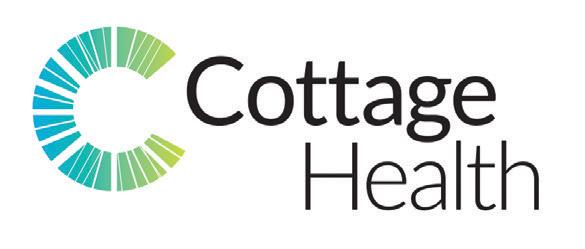
To provide superior healthcare for and improve the health of our communities through a commitment to the core values of excellence, integrity, and compassion.
“

Cottage Health President & CEO Scott Wester shares a highfive with a young camper at the 2025 Junior Wheelchair Sports Camp, which celebrated 40 years of o ering free adapted sports for youth ages 6-21.
Foundation for Cottage Rehabilitation & Goleta Valley Cottage Hospitals Board
Katina Zaninovich, Chair
Rich Boyd, Vice Chair
Megan Stichter, Treasurer
Tessa Kaplan, Secretary
Renée Nordstrand Black, Immediate Past Chair
Sharon Basham, MD
Je Cole
Susan Epstein
James Kyriaco
Antoinette McCauley
Samantha Onnen
Jean Smith
Scott Vincent
Vice President for Advancement (805) 352-2890 abrown1@sbch.org
By Check: P.O. Box 689
Santa Ynez Valley Cottage Hospital Foundation Board
Richard Nagler, President
Judith Dale, Vice President
Tresha Sell, Secretary
Steve Palmer, Treasurer
Barbara Anderson
J. Robert “Bob” Andrews
Charles Chester
Richard Crutchfield
Jonathan H. Grunzweig
Charles “C.J.” Jackson
Gustavo “Gus” Dascanio, MD
Ernie Zomalt
The Many Ways to Give...
By Credit Card: cottagehealth.org/giving
400 W. Pueblo Street
Santa Barbara, CA 93102-0689
Memo: The Giving List
Helping Brain Injury Survivors Reclaim Their Lives
Adam was just 23 when he su ered a stroke that nearly took his life. He spent two weeks in the ICU, then months as an in-patient at a rehabilitation facility to re-learn how to walk, talk, and feed himself.
As he was discharged, neither Adam nor his parents were prepared for what lay ahead as he continued his di cult recovery at home. That’s where Jodi House stepped in to help fill a critical gap in services.
“Once medical professionals have finished their lifesaving work, survivors and their families are often left to cope with the emotional, behavioral, and social e ects of the injury on their own,” says Lindsey Black, Jodi House executive director. “We o er access to ongoing support that can make a meaningful di erence in their recovery.”
Jodi House o ers a range of classes and services for survivors that include vocational assistance, support groups, movement programs like yoga and dance, and workshops that can aid cognition, memory, and communication. Members can also participate in art and music therapy classes and other opportunities for creative expression. All vital resources that can help brain injury survivors have the most comprehensive recovery possible. “Jodi House is focused on helping survivors re-learn the skills for daily living that they need to reintegrate into our community at the highest level of functioning possible,” Black says.
Sometimes the most e ective support is combatting a crushing sense of isolation that follows a brain injury, as was the case with Adam.

“It’s hard for people to understand how a survivor of brain injury can look normal on the outside but feel so di erent inside,” says Adam’s mother, Karen. “Jodi House has been an incredibly bright spot in Adam’s daily life. He rarely misses the classes and he’s able to connect with people like himself who also have su ered traumatic brain injuries. My son needs the in-person interaction at Jodi House because he says nobody else understands him the way other survivors do.”

Black says stories like Adam and Karen’s – families who are overwhelmed and exhausted by trying to find resources to help their loved ones – are why the nonprofit recently began bolstering its caregiver support services by creating a support group just for them.
“It’s not just the survivors but also their caregivers who have to adjust to the new normal and how challenging that is when you don’t quite know what the new normal is going to be,” Black says. “It’s navigating the unknown.”
The support group has given Karen a sense of community and somewhere to turn when she has questions. But the biggest comfort has been what Jodi House has done for Adam.
“He has told me a few times that he doesn’t know how he would live without Jodi House,” Karen says. “To me, that says everything.”
Since 1982, Jodi House has provided a community of support to brain injury survivors and their families after a life-changing injury.
Jodi House empowers brain injury survivors to thrive by helping them reintegrate into the community at the highest level of functioning possible.
Providing Vital Support and Resources After a Life-Changing Injury

Nearly 80% of Jodi House’s members face financial hardship.
“Survivors of brain injury often experience lasting di culties with thinking, behavior, and mobility that prevent them from returning to work,” says Lindsey Black, Jodi House’s executive director. “Jodi House ensures that no one is ever denied services due to inability to pay.”
$5,000 funds a full year of comprehensive services for a survivor, helping them regain independence and live their best lives. $500 provides vital caregiver support and education.


KEY SUPPORTERS
AIMdyn Inc./Adriana & Igor Mezic
Pete & Becky Adams
Andrew & Ri Chung
Barbara Flynn
Kerrilee & Martin Gore
Angela Hsu, MD & Jordan Pinsker
Arianne Johnson, PhD
Keith Family Foundation
Kerry & Mike Kelly
Tim & Kami Morton-Smith
Chip & Brenda Nichols
Timothy O'Connor, MD
Aaron & Jessica Poirier
Adam Pollock, Esq.
Ryan & Jenna Rogers
Dorothy & Richard Salogga
Jen Slemp
Jason & Lynette Spievak
Karen Spechler
Ti Thompson, PhD, LMFT
Steve & Suzanne Weintraub
Vincent & Judy Wood

Jodi House
www.jodihouse.org 625 Chapala Street Santa Barbara, CA 93101 (805) 563-2882 Contact: Lindsey Black Executive Director (805) 845-2858 lindsey@jodihouse.org
Jodi House o ers a stimulating day program in the heart of downtown Santa Barbara where brain injury survivors can recover and heal in a safe and supportive environment.
Empowering Mindful, Resilient Youth
In a world where anxiety and stress affect children at unprecedented rates, one Santa Barbara organization is teaching our youngest community members something schools rarely prioritize: how to find peace within themselves. Kind Mind Santa Barbara, under the visionary leadership of Dr. Vivian Valentin, is revolutionizing how we approach children’s social-emotional well-being through mindfulness education.
What began as a pilot program at Santa Barbara Community Academy blossomed into a comprehensive initiative. Since 2019, Kind Mind’s life-


“I am deeply proud to have supported Kind Mind from its inception. It has been inspiring to witness its growth. Time and again, I have observed their facilitators in classrooms – their compassion is tangible and the techniques they instill make children build lifelong resilience. As a mother of two with a background in mindfulness and longevity, I strive each day to bring the Kind Mind approach into my own family life.
“Kind Mind ensures that children gain lifelong skills for compassion and self-awareness. Beyond philanthropy, I work to champion their mission, help them navigate challenges with creativity, and foster meaningful connections to support their growth. I hope you will join me in advancing Kind Mind’s transformative work that yields profound impact for the next generation.”
– Nati Smith Kind Mind Advisory Board President
changing mindfulness skills have reached 4,668 elementary through high school students in Santa Barbara and beyond.
“Mindfulness fosters personal growth, community belonging, love of nature, and conflict resolution,” explains Dr. Valentin, whose journey from neuroscience researcher to mindfulness educator reflects her deep commitment to children’s mental health. “We’re giving children life skills, helping them navigate challenges and change with more compassion.”
The real magic happens in those transformative moments when children apply their mindfulness training. Take Olivia, a fourth grader, who discovered she could “take a few deep breaths” when stressed during tests. Or David, a sixth grader who used mindful walking to calm down when frustrated with his sister. Perhaps most touching is the story of a kindergartener who taught her family mindful breathing. Standing outdoors, she mimicked a flower, breathing in as she stood up, breathing out as she opened her palms and arms like a flower blooming.
Kind Mind teaches more than calming techniques; it helps establish daily habits that cultivate emotional resilience in a world full of pressure. The program’s approach aligns beautifully with children’s natural curiosity and sensory exploration, and age-appropriate activities teach concentration, emotional
regulation, gratitude, empathy, and the crucial skill of pausing before reacting.
Besides schools, Kind Mind collaborates with the Foodbank of Santa Barbara County, Lotusland, and the Santa Barbara Museum of Art. Additional workshops for parents, teachers, and counselors support the circle of care.
Signature steps of this tailored mindfulness education are: (1) safe, relationship-based structures for building awareness; (2) mindful experience checkins to nurture awareness over time; (3) mindfulness habits embedded in daily life; and (4) accountability to sustain this transformation. While it evolved in schools, this proven method is also offered to other organizations and workplaces.
However, expansion requires investment. Dr. Valentin envisions reaching new school districts and community partners. The organization’s lean structure – currently four staff members – represents both efficiency and limitation in a field where demand far exceeds capacity.
As children continue to face unprecedented, escalating pressures, Kind Mind offers something invaluable: the gift of resilience and emotional intelligence. And as communities grapple with youth mental health challenges, supporting organizations like Kind Mind isn’t just charitable – it’s an essential investment in our collective future.

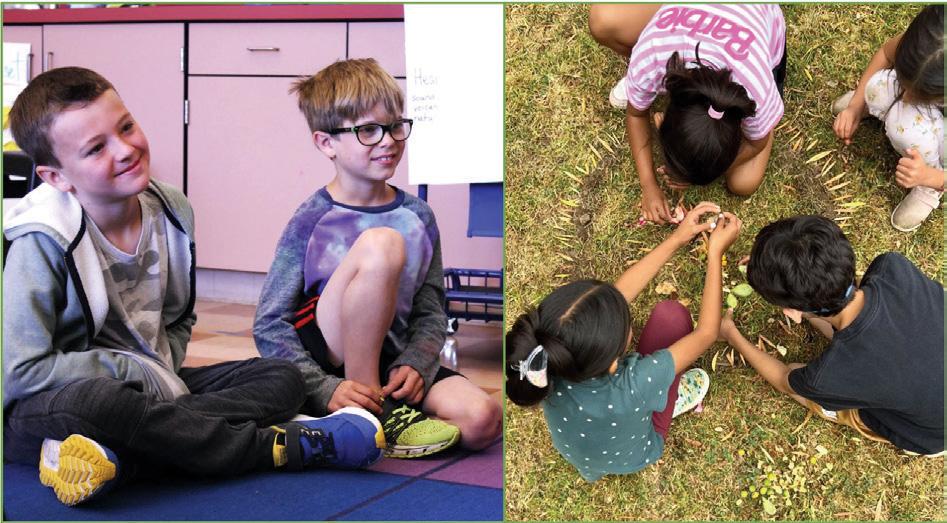
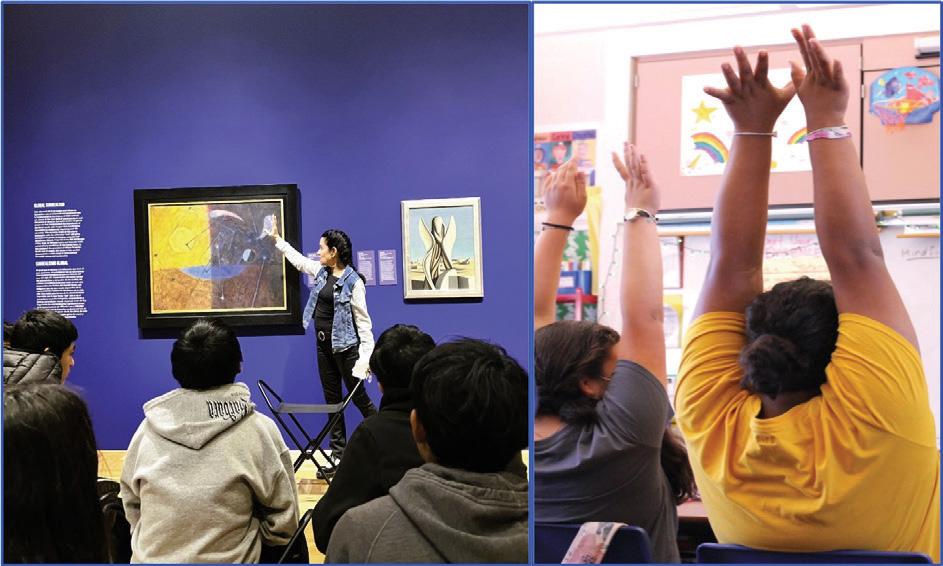


Kind
James S. Bower Foundation
The Little One Foundation
Towbes Foundation
The Natalie Orfalea Foundation
Rotary Club of Santa Barbara Charitable Foundation
Mind & Life Foundation
Roosevelt Elementary Educational Foundation
Aces Aware - Network of Care
Santa Barbara Unified School District KEY SUPPORTERS
Share circles and nature mandalas
Mindfulness through art and movement
Compassion meditation
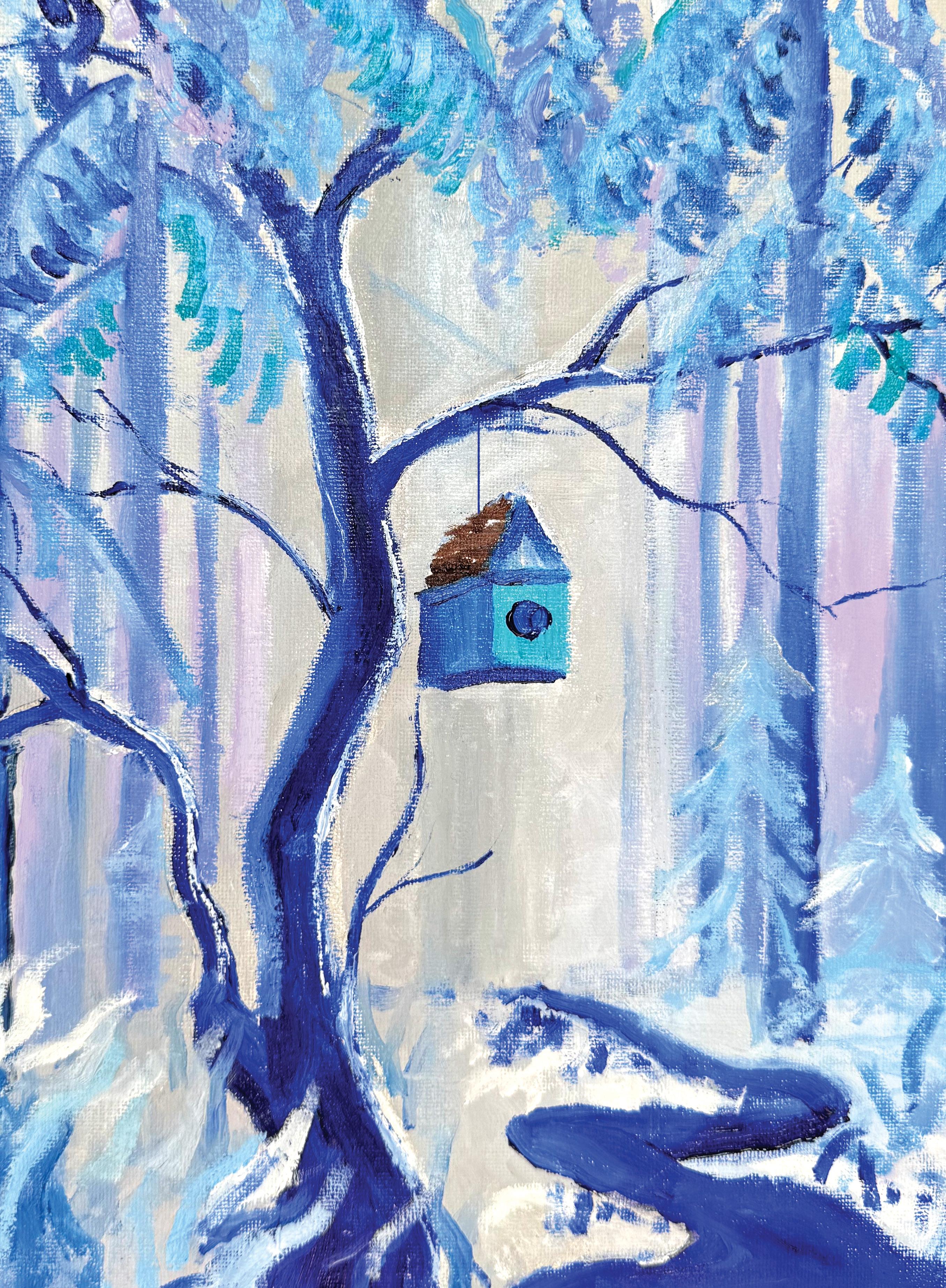
“This country will not be a good place for any of us to live in unless we make it a good place for all of us to live in.”
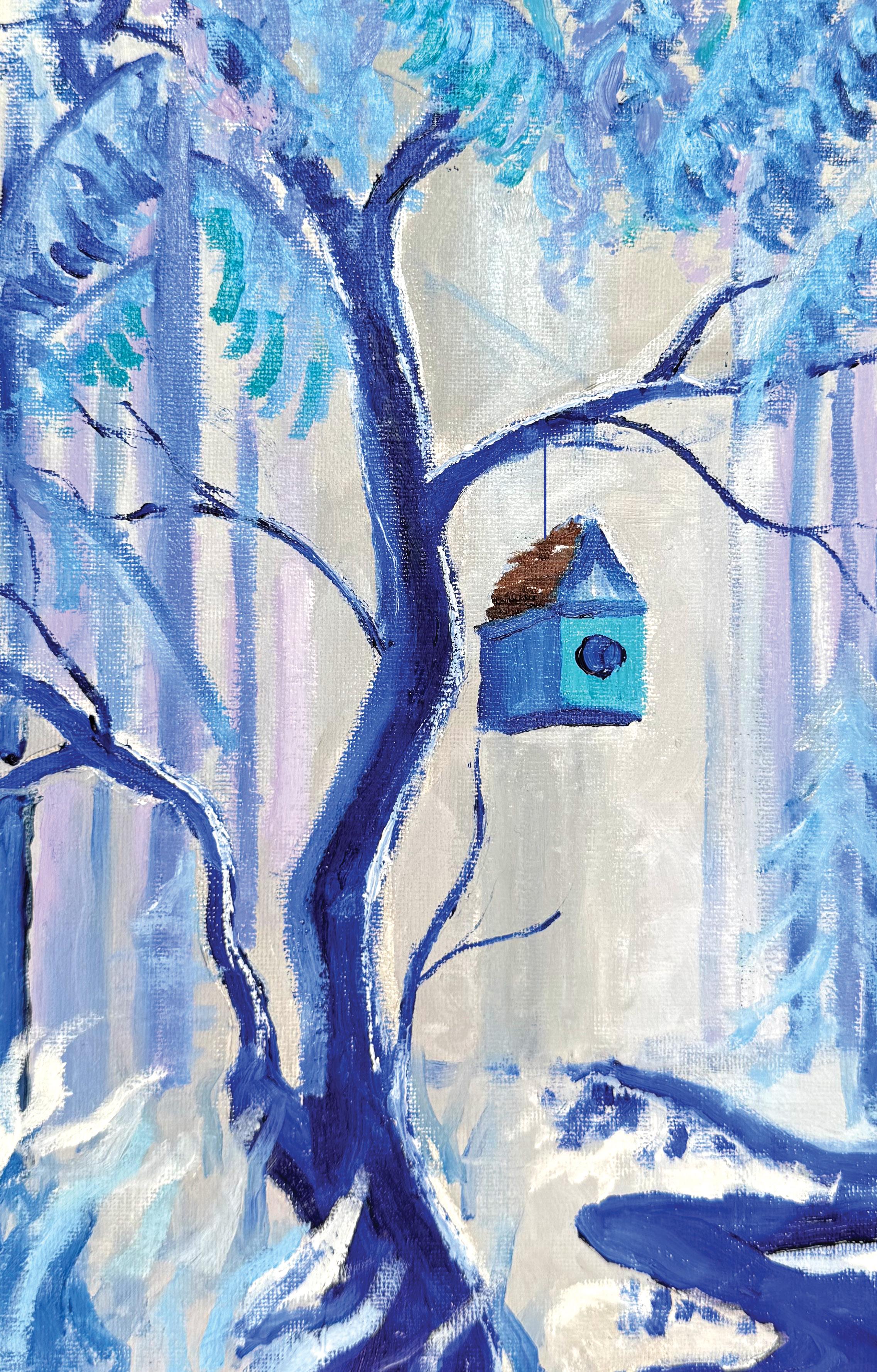
Taking Medical Care to the Streets

In the shadows of Santa Barbara’s picturesque coastline, where million-dollar homes overlook pristine beaches, a di erent economic reality exists among the underpasses and hidden camps. In these forgotten and ignored recesses, Doctors Without Walls brings hope and care to those most vulnerable among our community.
Co-founded in 2008 by Maggie Sanchez, Doctors Without Walls became the first independent 501(c) (3) street medicine team in the United States. What started as a compassionate response to an underserved population has grown into a lifeline for approximately 9,000 clients annually. “We provide medical services to homeless and indigent populations through mobile clinics using specialized backpacks,” explains Sanchez, the organization’s founder and executive director. “We have 156 active volunteers, of whom 50% are clinicians (MD, PA, RN, EMT), and the other 50% being pre-health students. The organization conducts 10 weekly outreach sessions throughout Santa Barbara County along with a once-a-month Mobile Dental Clinic.”
Unlike traditional healthcare, Doctors Without Walls meets people where they are – under bridges, in encampments, anywhere human dignity demands attention. “We o er comprehensive medical care including basic vitals, wound care, and dermatology services without asking about immigration status,” Sanchez emphasizes. “Trust is everything when working with people who have been failed by systems before.”
This approach yields remarkable transformations. Sanchez recalls Sue, a chronically homeless woman living in deteriorating conditions. “We started with basic medical care, treating her wounds and infections,” Sanchez shares. “Over months, we built trust, addressed her mental health needs, and connected her with housing resources. Today, Sue has her own apartment and maintains her health independently.”
Blake Sanchez, communications coordinator and Santa Barbara local, brings a unique perspective to the organization’s mission. His journey with Doctors Without Walls began during his gap year after graduating from UC Santa Cruz, when he started as a volunteer. “My passion for street medicine was inspired by my international experiences with similar organizations,” Blake explains. “I learned the importance of addressing healthcare disparities in both developing countries and local communities.”
Now in his first year of dental school at the University of Louisville, Blake plans to return to the West Coast after graduation, bringing a holistic approach to patient care informed by his street medicine experience. “Our focus on providing year-round, comprehensive care to vulnerable populations has shaped how I view healthcare,” he notes.
The need continues to grow with an 11% increase in homelessness countywide. The organization has expanded services to include mobile dental care and enhanced case management for 30 chronically homeless individuals annually.
Each interaction represents not just medical care, but human connection that changes lives forever.

team are pre-health students, many of whom go on to pursue careers in medicine.
Every Thursday evening at Alameda Park, volunteer clinicians provide medical care with the support of pre-health student scribes. Here, vitals are checked and stories are heard – reminding us that compassionate care, teamwork, and consistency build trust with our patients who rely on DWW.
Dedicated pre-health volunteers from SBCC, UCSB, Westmont, and beyond help make DWW’s work possible. They gain hands-on experience while learning about the barriers their patients face. Half of the

Your Donation Makes Healing Possible
$100 – Compassion in Action
Provides a week’s worth of essential supplies for our unsheltered neighbors at street clinics.
$500 – Fuel for the Frontlines
Covers the cost of medications and medical supplies for an entire Women’s Free Homeless Clinic.
$1,000 – Smiles & Dignity
Supports a full day of the Mobile Dental Clinic, delivering free extractions, fillings, and preventive care.
$2,500 – Healing Beyond Walls
Funds a month of street medicine outreach, equipping volunteer doctors and nurses with needed materials to meet patients where they are.
$5,000 – Transformative Impact
Keeps the Mobile Dental Clinic and Women’s Free Homeless Clinic running each quarter –bringing care, comfort, and dignity to hundreds of people right here in our Santa Barbara community.

Since October 2024, Doctors Without Walls' Mobile Dental Clinic brings free dental care to Santa Barbara’s unsheltered community. Each month at the Veterans Memorial Building, volunteer dentists and pre-dental students provide exams, X-rays, fillings, and extractions, restoring health and confidence.
“



DWW-SBSM is dedicated to providing free, volunteer medical care for the most vulnerable of Santa Barbara County, when and where they are in need, including in times of disaster, and to provide education and training for DWW-SBSM volunteers and others, in order to promote the excellent practice of humanitarian medicine in our hometown and elsewhere.
By Check:
The Many Ways to Give...
Ensuring Healthy, Productive Lives for the Most Vulnerable

In the late 1960s, a small group of volunteers in Santa Barbara launched what would become one of the county’s most vital lifelines for vulnerable populations. New Beginnings started as an all-volunteer community counseling center, o ering free mental health services to homeless and low-income individuals. Today, under the leadership of Executive Director Kristine Schwarz, the organization has evolved into an extensive support system that touches thousands of lives annually.
The transformation has been remarkable. “We’ve grown from 3.5 full-time employees in 2012 to 80 across three countywide o ces,” Schwarz explains. This growth reflects not just organizational success, but the increasing need for our wraparound services in the community. New Beginnings has developed a multidisciplinary approach that addresses five critical areas: mental health, addiction, aging, physical health, and employment services.
One of New Beginnings’ most successful initiatives is their safe parking program, which celebrated its 20th anniversary in 2024. This groundbreaking program provides secure overnight parking for individuals and families living in ve-
hicles, o ering dignity and safety during one of life’s most vulnerable periods. The organization also runs a supportive services program for veteran families, recognizing the unique challenges faced by those who served our country.
Currently, New Beginnings is tackling another ambitious project: the California encampment resolution project. This countywide initiative aims to resolve 21 vehicle encampments while housing 150 people and enrolling 300 in supportive services. It’s a testament to the organization’s commitment to addressing homelessness at scale, not just providing temporary fixes.
The power of New Beginnings’ approach lies in its comprehensive nature. The organization utilizes a multidisciplinary team, such as a registered nurse for physical health care and a geriatric specialist for senior support – so they can address complex, interconnected challenges that vulnerable populations face.
One New Beginnings client, Mary, had been unemployed for nearly 20 years after caring for her late husband. Through employment and benefits support – including résumé help, interview preparation, and personal grooming as-
sistance – Mary secured a new position at Target as a greeter. Within six weeks, she was promoted to cashier. Her first paycheck allowed her to purchase her own pair of shoes for the first time in many years, a simple but profound symbol of renewed independence.
“We’re dedicated to helping vulnerable clients, particularly those who struggle with mental illness and significant barriers to service,” Schwarz emphasizes. The organization’s commitment to their community extends beyond traditional service delivery. They spent $4 million on direct financial assistance, helping clients navigate immediate crises while building long-term stability.
New Beginnings has been providing quality, a ordable counseling and housing assistance services for more than 50 years. As the needs of the community continue to evolve, New Beginnings’ programs are there, adapting, as they continue to provide a vital safety net to those most vulnerable.
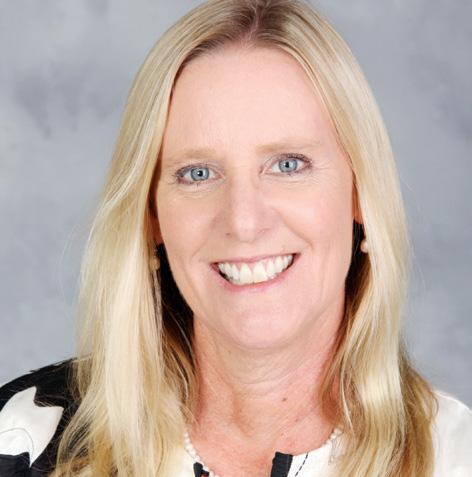
"We at the Kind World Foundation are proud to support New Beginnings and its innovative programs that provide services to the homeless population in Santa Barbara County. New Beginnings could serve as a model to similar organizations in California and the U.S. "
– Marcia Waitt Executive Director, Kind World Foundation
In May, New Beginnings received a two-year, $150,000 grant to expand their counseling center intake coordination sta and improve access to mental health care.
Transform Crisis Into Opportunity
New Beginnings urgently needs $250,000 for their flexible support fund. This unrestricted funding addresses drastic cuts in federal funding – from costly psychological evaluations needed for mental health treatment to housing placement emergency assistance that prevents homelessness.
“We need to address immediate situations and provide assistance in areas not covered by government funding,”
Kristine Schwarz, New Beginnings’ executive director explains. Your donation directly impacts lives: $500 provides emergency housing assistance; $1,000 can cover mental health evaluations and sessions; and $2,500 supports comprehensive employment assistance services.
Every dollar helps transform vulnerability into stability, crisis into opportunity.


New Beginnings' mission is to provide quality, a ordable counseling, shelter, case management, and education that strengthen our community and provide their clients with the ability to lead healthy and productive lives.


BOARD OF DIRECTORS:
Jacqueline Kurta, PsyD, MFT, President
Dan Engel, Vice President
Ziad Elkurjie, Treasurer
Diane Pannkuk, MBA, Secretary
Janna Alvarez
Jason Dominguez
Stasia Huiner
Julie LeVay
Scott Sanford
Suzanne Grimmesey, MFT
Ronnie Shahbazian
The Many Ways to Give...
New Beginnings
www.sbnbcc.org
(805) 963-7777
Contact: Kristine Schwarz Executive Director (805) 963-7777 Ext. 144 kschwarz@sbnbcc.org
By DAF or Stock Transfer: Tax ID# 77-0556795
By Credit Card: sbnbcc.org/donate
New parents gain valuable guidance and practical tools through New Beginnings’ Life Skills Parenting and Education Program.
The residents of Johnson Court gather together for a heartwarming holiday dinner.
A New Beginnings unhoused client beams with joy as he receives the keys to his brand new apartment!
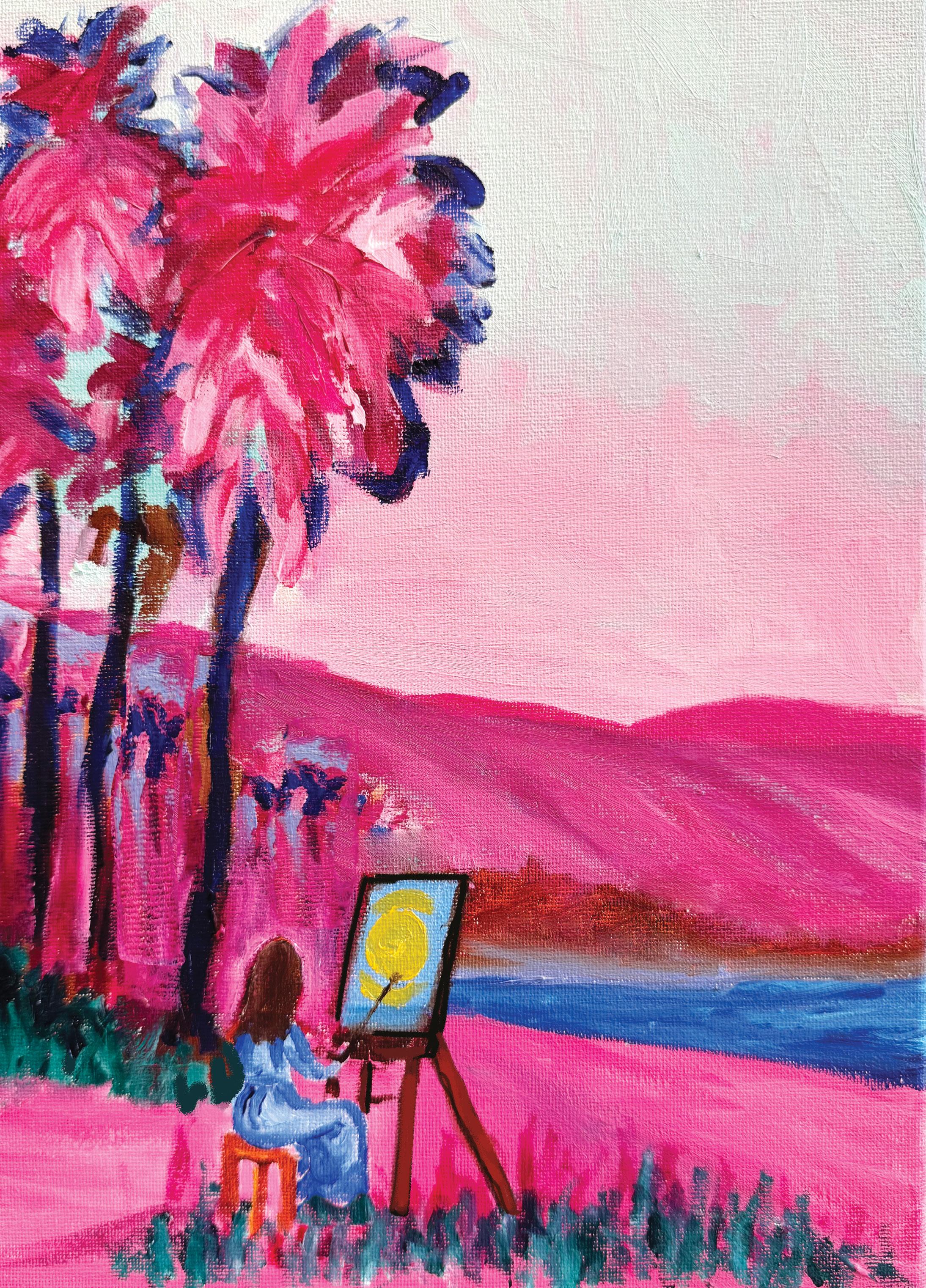

Conversations: Greg Gorga
as told to Zachary
Bernstein
Musing On Museums
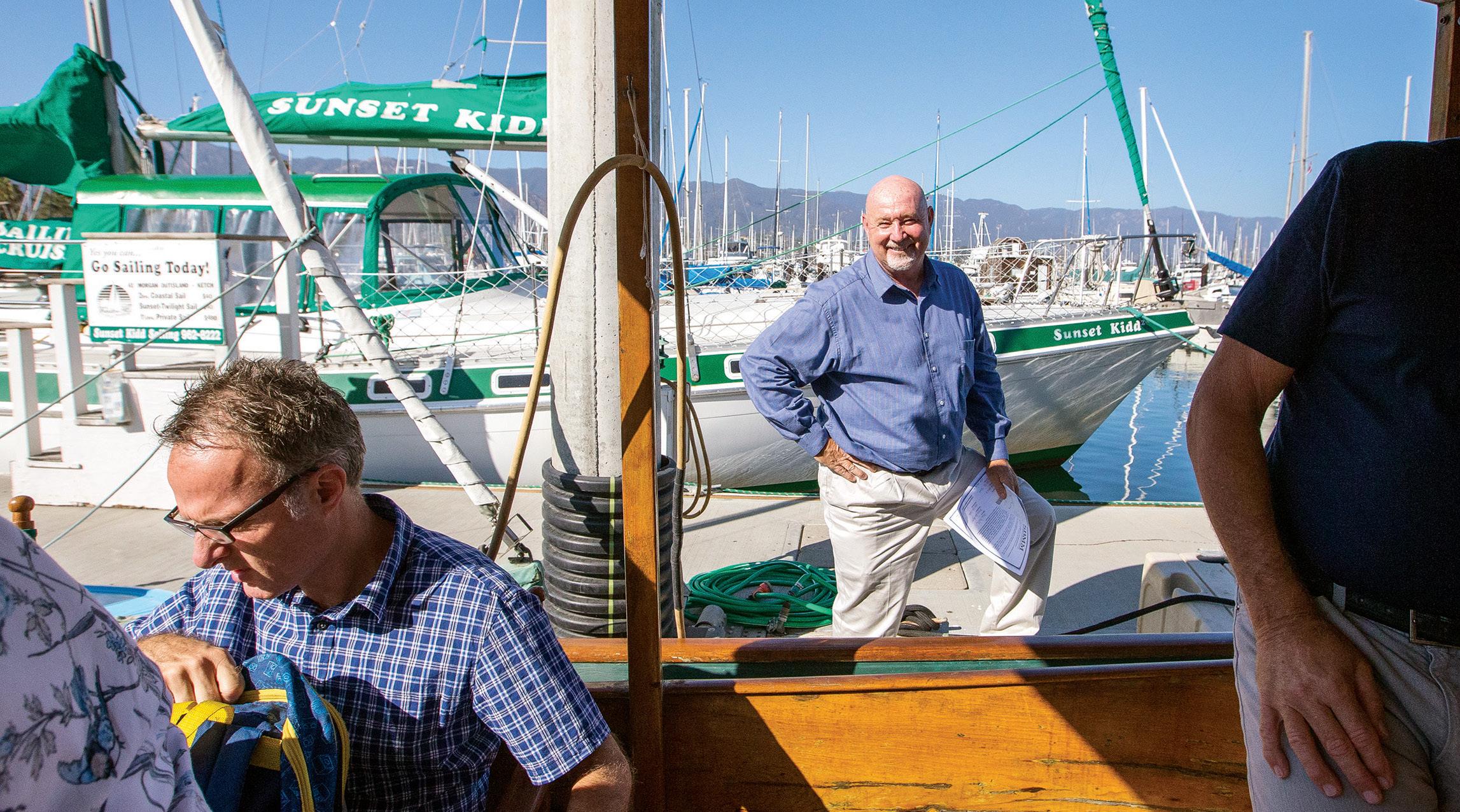
Perhaps Greg Gorga was an unlikely candidate to lead the Santa Barbara Maritime Museum when he became executive director in 2008. His previous experience included running restaurants and a catering business, but the skills he picked up in the hospitality arena served him well in good times and in hard times during his 17 years as the museum’s longest-tenured executive director since its founding in July of 2000. On the precipice of his retirement, he spoke with The Giving List about building community, the true vulnerability of museums, and the joy of seeing a kid touch the ocean for the first time.
Zachary Bernstein: You had a very unusual career leadup for someone who eventually became executive director of a museum. What affirming advice do you have for people who maybe feel they’re unqualified to land a leadership role like yours, but also feel they could nevertheless make a big positive difference, as you have?
Greg Gorga: I think there’s two different things there.
I think in anything we do, we gain skills that are transferable to other areas and we may not be aware of them. I certainly wasn’t in the museum world, but I went to a California Association of Museums conference way back 15 years ago and they were talking about how there was a trend in the museum world of hiring hospitality people because they have good customer relationship skills. They look at things from a visitor’s point of view and they’re good at solving problems. Certainly in the restaurant business, but even in museums, things don’t always go the way you plan.
It’s always about what’s the guest’s experience. Are we providing a great experience? You want people to enjoy their visit. You want your students and adults to learn something. I think I didn’t realize I had the right skills, but I’m happy that I can use what I learned from running restaurants in my work here every day.
ZB: Santa Barbara is home to a confluence of maritime activities. Can you testify to how the museum gets to be a

hub for each of those spokes?
GG: What I love about the Maritime Museum is that it has such a wide history of maritime human interaction with the ocean. I know there are some museums where it’s all about ship models, or maritime art, but we have so many different connections. If you’re interested in sailing, deep water commercial diving, surfing, tattoos, military history, shipwrecks, lighthouses… They’re all right here.
We do a lot of work with other nonprofits and other organizations. We’ve been host to meetings with commercial fishermen and programs where they talk about the bluewater economy to promote minorities getting work in the ocean fishing industry. We’ve hosted a film about women surfers. We’ve hosted an expo of what to do with the oil platforms after they’re decommissioned that actually inspired the Peabody School to do their own panel discussion about it.
“The days when a museum was just a bunch of artifacts in a room are long gone. We’re all looking to be more hands-on, more interactive, more engaging. We compete today with cell phones, streaming, computers, so you have to make it interesting and interactive for kids and adults.”
We’ve also hosted diving society reunions, the Santa Barbara Sailing Club, the Santa Barbara Yacht Club, the Coast Guard, and even Homeland Security has had meetings here. We like to say we’re the hub of the harbor. Anything related to the ocean, we’re the home for that.
ZB: You’ve led the museum during some hard times and there must have been some creative thinking to keep things going during these patches. But what do you think the public unfortunately has to miss out on when times are lean?
GG: When times are lean, the toughest thing is making staffing cuts because that’s the biggest part of our budget. But even worse is we lose out on some of the education opportunities. One summer we went from serving 1,400-1,500 kids in the Maritime on the Move program and the next year when we didn’t have the funding, we had to cut it down to 600 kids. That’s a lot of kids who aren’t going to experience why we have a breakwater, or

Greg Gorga with US Coast Guard staff preparing to move the First Order Point Conception Lighthouse Lens to SBMM.

what these fishing boats are doing, or how these holes in the sand mean there might be a crab underneath.
Jacques Cousteau said, “You will only protect what you love.” If we don’t show kids all the wonderful things that our oceans provide, I don’t think they’ll learn to care for them later as adults. And, of course, we need to take care of our oceans because half the oxygen we breathe every day comes from the ocean.
So, those tough times are very difficult. You have to make a lot of cutbacks. You don’t get to do all of the programming you want to do and maybe you don’t do a big exhibit you wanted to put up, but really it’s the education programming cutbacks that hurt the most.
ZB: Again, you’re wrapping up a 17-year-long tenure at the Maritime Museum. I think most people think of museums as immovable, unshakable institutions that are here to stay forever. As someone who runs a museum, do you feel that way? How vulnerable are museums, really?
GG: Well, during COVID we lost some museums. When you struggle financially, you stagnate and you don’t get to do the things you really want to do. You can’t move forward. But I think we’ve been lucky here because we do have such a great community in Santa Barbara.
We have a lot of nonprofits, but we also have a lot of very generous people. I think all of our museums – and I can’t really think of one that hasn’t done this – have continued to grow. Maybe they haven’t grown as quickly, or as much as we’d like during the lean times, but museums stick around here thanks to the generous and engaged people who live here.
Every year we’re trying something new and none of that’s possible without the support of our community, but the days when a museum was just a bunch of artifacts in a room are long gone. We’re all looking to be more hands-on, more interactive, more engaging. We compete today with cell phones, streaming, computers, so you have to make it interesting and interactive for kids and adults – even the adults are hooked to their phones. You have to be engaging to people to thrive.
I think we do a pretty darn good job here in Santa Barbara with engaging programming that keeps people interested and expands their horizons. That’s really what museums are for: to honor the past and improve the future.
ZB: You said that continuing a monthly lecture series at the museum was one of the smartest moves that you made because it gave members a reason to visit the museum on a
Greg Gorga on a SBMM members trip to Guadalupe Island to cage dive with the white sharks. (photo by Dan Orr)

regular basis. It sounds not unlike people going to church every Sunday. How do you see museums as places that facilitate community building?
GG: If you’re a museum, or a zoo, or Lotusland, you’ve got to keep changing and you’ve got to keep your members and your community involved. You don’t want a static program where you go once and don’t need to go back another time. Changing exhibits is one way. Lotusland has different seasons, so they’re constantly changing – that’s a nice advantage they have. But you want your community coming back and thinking about you on a regular basis.
And you can do that. People find our lecture series very interesting. They learn. I mean, we had 150 people here last night. We have cocktail parties, too, but we also include some education in those cocktail parties. You want to have events on a regular basis to be a hub for the community. It’s an opportunity to bring in new people who aren’t familiar with the museum. Hopefully they become engaged and become regulars themselves, but we also want to give opportunities to our existing members and the general public to learn more about our institutions.
ZB: Does the pursuit of attracting donors also add to community building?
GG: One way of attracting donors is helping one another. I reach out to the heads of the Zoo and the
Museum of Natural History and the Botanic Garden all the time. We collaborate all the time. For me, it’s just bringing new people in and showing them what we do. My favorite thing to do is host a tour. I had one yesterday with a member who brought some friends – first-timers who weren’t aware of all the different education programs, exhibits, and events we do. If we show them what we’re all about and they want to become a member or donor, that’s great. You never know what just reaching out will do for you.
ZB: Did you ever get that one amazing phone call from someone who wanted to give?
GG: Yes. There was one volunteer working at our front desk. His son called and said, “Hey, Greg, my dad wants to make a gift to you before he passes away, and so you’re going to get $200,000 worth of Apple stock tomorrow.” I’m so grateful for those surprise gifts because sometimes it just allows us to just keep the doors open, and sometimes it allows you to grow or plan for the future. It’s important to put some money aside for less glamorous capital projects like replacing the HVAC system, which can rust quickly from the salty air. Nobody wants to give money for an HVAC system when they could give it towards putting kids on a tall ship, but we need it just the same.
ZB: If you hadn’t improbably become the Maritime Museum’s longest-tenured executive director, what do you fear you would have missed out on?
GG: I used to run restaurants. I got to meet some nice people and I did some fun things, but I didn’t feel like I did anything good. So when I hear people say, “Wow, I had no idea Santa Barbara’s history was so deep,” or “Wow, these exhibits are great,” or I get to see a kid touch the ocean for the first time, or I read a book that a 15-year-old girl wrote about an English sea captain in the time of Lord Nelson because she spent the night on a tall ship and got inspired to learn more about tall ships and that naval history here, or I hear a teacher tell me that their kids participate in class more after they came to one of our education programs. All of that makes me feel much better about my tenure here. This has been the most enriching life reward for me, to know that we’ve done some good in the community.

SBMM Executive Director Greg Gorga with SBMM Curator and Director of Exhibits Emily Falke.
Montecito’s Only National Historic Landmark


from George Fox Steedman's office, which visitors can see inside the fully intact workshop where Steedman practiced woodworking, blacksmithing, and silversmithing among other artistic pursuits.
NDesigned by architects George Washington Smith (1876-1930) and Lutah Maria Riggs (1896-1984) as a private estate for Industrialist George Fox Steedman (1871-1940) and Carrie Robb Howard Steedman (1874-1962) in 1922-33, Casa del Herrero is now a living history museum and national historic landmark. Washington Smith, but also Lutah Maria Riggs, Santa Barbara’s first licensed female architect and first woman in California to be named Fellow of the AIA. “The importance of preserving the work of these pioneering designers cannot be overstated,” Sanderson notes. “We’re maintaining a direct connection to the artistic movements that shaped California’s architectural identity.”
estled in the heart of Montecito, Casa del Herrero stands as one of Santa Barbara County’s most extraordinary yet underappreciated cultural treasures. This historic house museum and garden estate, built between 1922 and 1925, offers visitors a rare glimpse into early 20th-century craftsmanship, innovation, and artistic vision – but its future depends on the generosity of donors who understand the irreplaceable value of preserving living history.
The estate was the brainchild of George Fox Steedman and his wife, Carrie Howard Steedman, transplants from St. Louis who moved to Santa Barbara for health reasons. What they created, with architect George Washington Smith, was far more than a residence – it was a testament to innovation and artistry. George Steedman, an inventor
“We are grateful to have an admirable community of donors, who support Casa del Herrero’s mission!”
– Dr. Natalie Sanderson Executive Director & Head of Education
and president of Curtis and Co., infused the property with ingenious touches that still captivate visitors today: electrified antique clocks, automated lighting systems, and a meticulously designed workshop that showcases his inventive spirit.
“We’re preserving Casa del Herrero as a public space for education and inspiration,” explains Executive Director and Head of Curation, Natalie Sanderson, PhD. “It’s this unique combination of architecture, artworks, historical artifacts, and green spaces that makes the property so special. Visitors experience not just a house, but a complete artistic and cultural ecosystem.”
The estate’s transformation from private residence to public treasure reflects the vision of Medora Steedman Bass, George and Carrie’s daughter, who ensured the property would serve as “an educational and tranquil space for the public.” Today, Casa del Herrero opens its doors every Wednesday and Saturday for public tours, while Creative Tuesdays welcomes families with young children for hands-on programming.
But Casa del Herrero represents much more than the Steedman family’s legacy. The property showcases the architectural genius not only of George
The museum’s commitment to community engagement shines through innovative programs like an architecture seminar course with USCB students taught by Professor Volker Welter, and collaborations with organizations such as Girls Inc. These initiatives ensure that Casa del Herrero serves diverse audiences while maintaining its core mission of education and cultural preservation.
However, maintaining a historic property of this caliber requires constant attention and significant resources. Recent conservation projects, including the restoration of a birdhouse and sundial designed by Mr. Steedman himself demonstrates the transformative impact of proper preservation work. “When you see these pieces restored to their original condition, you witness history coming alive,” Sanderson reflects. “That’s the magic we’re working to preserve for future generations.”
View

Detail of a polychromatic tiled mosaic pool featuring a depiction of a peacock. The symbolism of the peacock is rich in meaning across time periods and cultures, representing power, royalty, immortality, purity and beauty among other associations, and is a popular motif in the Casa tile collection.
To maintain, preserve, and restore the house, furnishings, gardens, and history of the Steedman/ Bass estate for the benefit of the community, visiting public, scholars, educators, and students.

The sparing use of water is characteristic of Andalusian landscape design. Fountains, runnel and exedrae (garden spaces with built-in benches situated at the East of the Blue and White Garden and the Southernmost axis of property) are adorned with historic tiles from Spain and Tunisia.
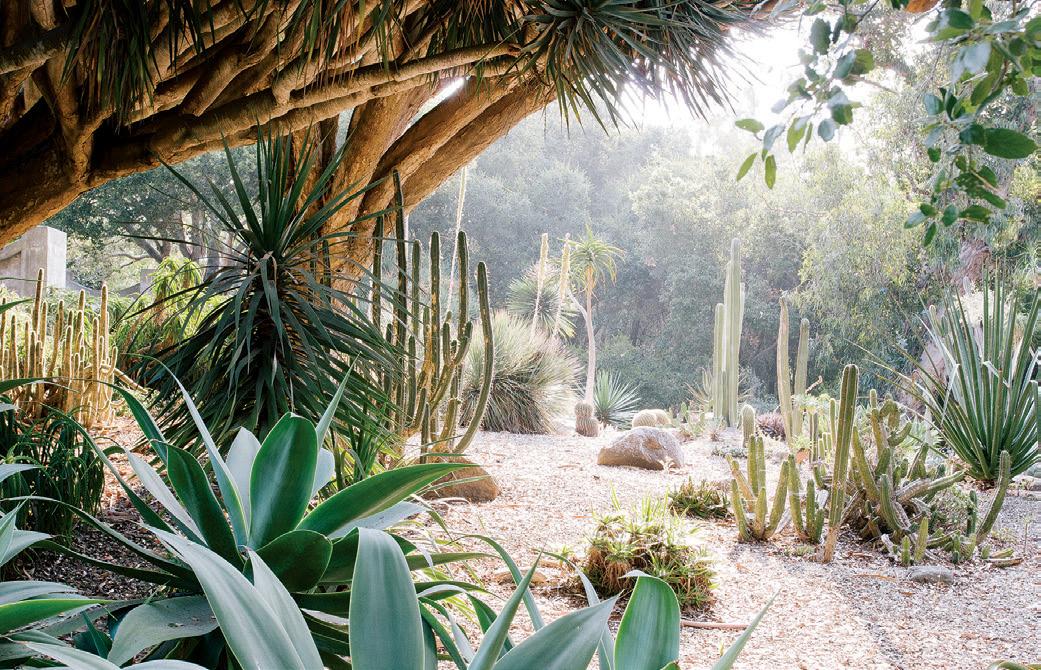
Help Preserve Montecito’s Own Time Capsule
The
Casa del Herrero estate faces ongoing challenges, from maintaining its extensive gardens to preserving art and delicate historical artifacts and ensuring accessibility for all visitors. Each conservation project requires specialized expertise and careful attention to historical accuracy – work that demands both passion and substantial funding.
Your donation directly impacts preservation efforts at Casa del Herrero. No amount is too small, and thanks to a generous “Save America’s Treasures Grant,” a matching grant in partnership with David Bolton, executive director and CEO of California Missions Foundation, every dollar you donate will be doubled, amplifying your impact on preserving this irreplaceable cultural treasure for future generations.
The Many Ways to Give...
Casa del Herrero casadelherrero.org
1387 East Valley Road (805) 565-5653
Contact: Dr. Natalie Sanderson
Executive Director & Head of Curation (805) 565-5653 x 101 natalie@casadelherrero.org
By Check: Casa del Herrero
The Arizona Garden is shaded by the Casa's iconic dragon tree (Dracaena Draco), thought to be one of the oldest and largest in town.

An Inclusionary Clubhouse

At age 17, Grace Fisher was a budding musician, a creative spirit on the cusp of adulthood. Her world was a symphony of movement and expression. Then, in an instant, a rare illness left her paralyzed from the neck down, and the music went silent. It was a life-altering challenge that threatened to extinguish the very creativity that defined her. Yet, in the quiet aftermath of that crisis, it was the arts – music, movement, and painting – that became a lifeline. They were, in her words,
“My journey with the Grace Fisher Foundation began several years ago as a financial supporter, drawn to its mission of providing inclusive arts, music, and dance for children and young adults with disabilities. It was wonderful, each donation felt like a meaningful way to support GFF.”
– Brett Grimes Board President
“instrumental in my recovery and frame of mind,” providing a way to navigate a new reality and a new body. This deeply personal discovery would eventually become a mission. Fisher recognized that while the arts had saved her, Santa Barbara “didn’t really have a space” where people with disabilities could find the same transformative healing.
That conviction gave birth to the Grace Fisher Foundation, an organization with a mission to enrich the lives of individuals with disabilities through the transformative power of the arts. Its heart is the Inclusive Arts Clubhouse, a 3,500-square-foot whimsical, tactile space in Santa Barbara. The moment you step inside, you are invited to dance your way across floor tiles that “squish” and change color, a playful, sensory greeting. The space is an inspiring place of creation, a place where disability does not exist, because the focus shifts from what one cannot do to what one is creating.
The evidence of this philosophy is etched into the lives of those who come through its doors. There is the nonverbal
boy with autism who found such “joy” in art camp that his happiness was palpable. And there is the young woman who, after su ering a brain injury, watched her four siblings perform on stage, yet never had the opportunity herself. But the Grace Fisher Foundation gave her that chance, and she danced on the historic Granada stage, a performance of pure triumph for herself and her family.
The foundation’s influence extends far beyond its walls. It has a proactive vision, establishing “Hidden Haven Satellite locations” in community spaces like the Santa Barbara High School Wellness Center and local libraries, bringing art and empathy directly into the community.
Fisher herself leads field trips, where she shares her story and gives children a chance to paint with their mouths, a hands-on exercise in empathy. She recalls being recognized on the street by one of those children – a small, powerful moment that reminded her why she does this work: to nurture connection and remind us of our shared humanity.
Grace Fisher celebrates the opening of the Inclusive Arts Clubhouse, a space where creativity knows no barriers and people of all abilities can explore music, art, and community together.
Santa Barbara’s First Music Therapy Program
By introducing music therapy programs at the Inclusive Arts Clubhouse and in local schools, the Grace Fisher Foundation is bringing this opportunity to Santa Barbara for the very first time. Your donations fund professional music therapists, adaptive instruments, and program essentials. $500 per week – or $2,000 per month – provides children, teens, adults, and seniors with opportunities to experience the healing benefits of music – reducing stress, improving communication, enhancing motor skills, and fostering emotional well-being –while building joy, confidence, and connection through making music together.
A gift of $24,000 fully funds this groundbreaking program, ensuring that music therapy enriches lives every week of the year. $120,000 secures this vital program for the next five years.








Grace Fisher Foundation empowers individuals with disabilities by providing free access to music, art, dance, and other creative programs at The Inclusive Clubhouse. We o er a welcoming, accessible space that celebrates diversity, encourages selfexpression, and builds community where everyone can connect and thrive
Grace Fisher Foundation www.gracefisherfoundation.org
120 S. Hope Ave. Unit #F118
Santa Barbara, CA 93105
Contact: Grace Fisher Founder and Creative Director (805) 450-1738
grace@gracefisherfoundation.org


KEY SUPPORTERS
Marilyn Moyer Trust
Thomas and Sheila Cullen
Alan B. Slifka Foundation
Jim and Elaine Keenan
Richard Kriegler and Lynn Montgomery
By Check:
The Many Ways to Give...
By DAF or Stock Transfer: Tax ID# 92-2861695
By Credit Card: gracefisherfoundation.org/donate
Grace Fisher’s first time painting with her mouth at Craig Hospital in 2015 – marking the beginning of a new chapter where resilience and imagination turned limitation into possibility.
Where the Coast Is the Classroom

In Santa Barbara Harbor at dawn, the masts of sailboats clang softly as a yellow school bus from Lompoc pulls up to the Santa Barbara Maritime Museum. For these fifth-graders from a Title I school, the ocean might as well be another planet. One boy steps o and asks if he can touch the water – he’s never seen the Pacific Ocean before. Greg Gorga, the museum’s executive director, smiles at the sight: it is one of the many things the museum does best. It o ers “education equity” –ensuring that children from underserved schools share in Santa Barbara’s “amazing marine-rich environment.”
Each year, the museum’s rich program slate introduces nearly 5,000 students to the sea, many for the first time. These experiences are hands-on and often transformative. Thanks to a partnership with the tall ship, Mystic Whaler, students become sailors for a day. Hoisting sails and charting courses on the Santa Barbara Channel as they apply classroom math and physics to navigation. At the Girls in Ocean Science conference, middle and high school girls spend a day at sea alongside female scientists, discovering that careers in marine biology or even as ship captains are within reach. “Just by changing that experience and creating an


of local waters, illustrate why these undersea giants matter. Gorga notes that Santa Barbara’s giant kelp is disappearing, a problem for marine life, and such exhibits spark conversations about conservation that continue back in students’ classrooms.
opportunity to be in a new environment,” says Jessica Tade, the museum’s deputy director, “it’s life-changing because it opens up the world of possibility.”
Inside the museum, constantly rotating exhibits like the new Redwoods of the Sea photography show connect to and extend that learning. Its vivid images of kelp forests, the “redwoods”
The impact of their 13 di erent educational programs runs deep. For children who seldom leave their neighborhoods, a day on the water can significantly bolster their selfconfidence and leadership skills. The hands-on approach, Gorga observes, “really helps with self-esteem” because students accomplish things as a team. Teachers report that after these trips, kids return more engaged in class. One 10-year-old girl was so inspired by an overnight tall ship field trip that by age 15 she had written her own seafaring novel. A testament to how a spark lit on the harbor can ignite a lifelong passion.
All of this is o ered free or at minimal cost to schools, made possible because of donor support. As the Lompoc students gather on the dock, waving at harbor seals and squealing at gulls, it’s clear that the Maritime Museum is more than a collection of artifacts. It’s a launchpad for opportunities and dreams.
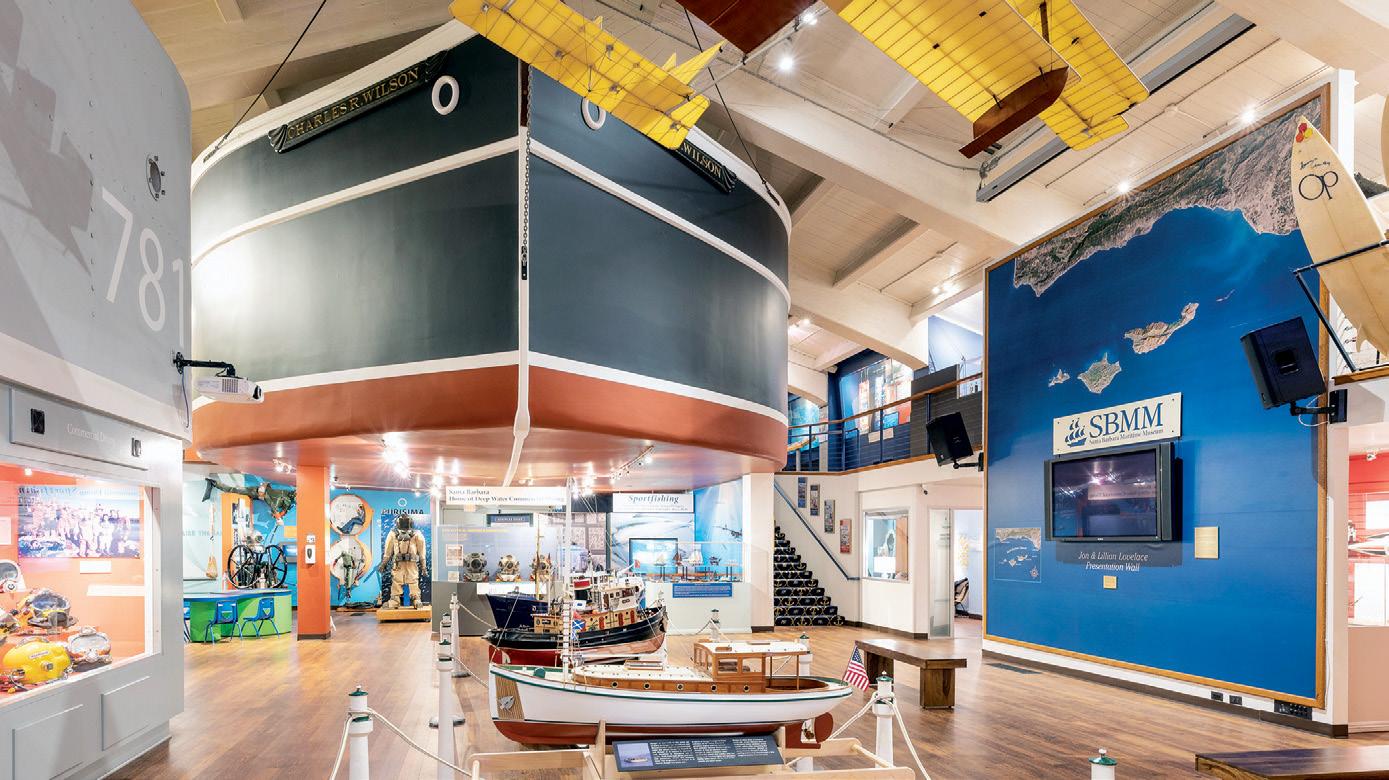

When you walk through the doors of the museum, you embark on a journey of discovery, interacting with exhibits that engage your curiosity around local maritime history and human interactions with the sea.
An SBMM education team member leads a youth tour in the museum. Education programs incorporate experiential learning while encouraging curiosity with special emphasis on California’s maritime history and human interactions with the sea.
photo by Ralph Clevenger
photo by Ralph Clevenger
Help Support an Anchor of the Community
There are many ways to support the ongoing work of the Santa Barbara Maritime Museum. You can become a member, donate, sponsor one of their flagship educational programs or exhibits, underwrite much-needed transportation for students at Title 1 schools, or become a volunteer. Every dollar donated ensures that no child is left ashore, transforming first encounters with the ocean into lifelong inspiration.

“The SBMM is a great source of pride for our community! Every exhibit, interactive display, and educational program shines a light on our dynamic maritime history and coastal legacy. Where else can you learn about the importance of our Chumash heritage, have fun with a virtual sportfishing activity, view the stunning Point Conception Lighthouse lens up close, and experience a deep dive into surfing, shipwrecks, whales, and historic moments in our history, such as the 1969 oil spill? Serving almost 5,000 students every year and 40,000 visitors, the Maritime Museum is dedicated to providing exciting opportunities to learn and have fun, in order to ensure that young and old alike appreciate the Santa Barbara coast and become stewards of our beautiful environment and ocean.”
– Kate Ford
Santa Barbara County Planning Commissioner and Retired Educator
Ed & Ann Brady
John & Ann Brinker
Roger & Sarah Chrisman
John & Tracie Doordan

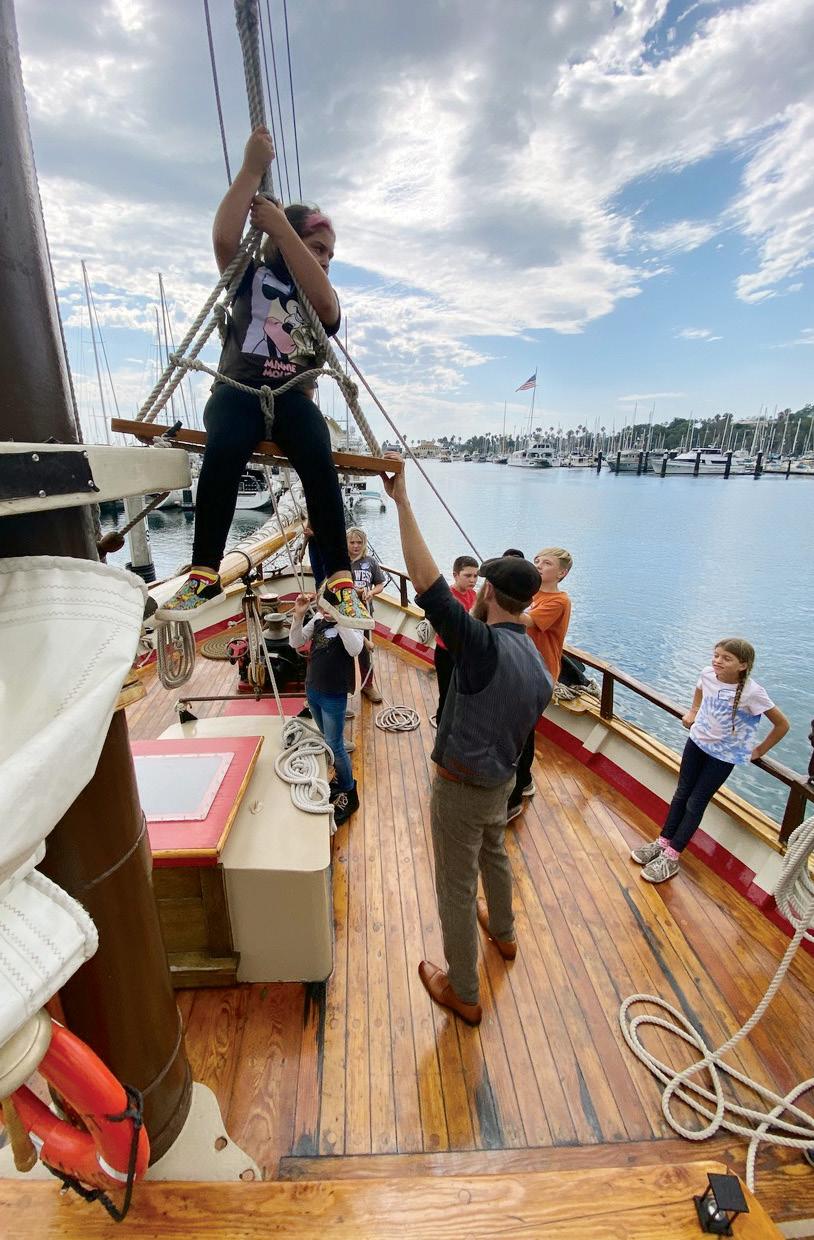

Thanks to donors Roger and Sarah Chrisman, SBMM’s Tall Ship program teaches students what life was like for merchant sailors of the 1800s, providing them with a unique experience that cannot be matched in any classroom.
Robert & Carolyn Duncan
George H. & Olive J. Gri ths Charitable Foundation
Hutton Parker Foundation
Ann Jackson Foundation
Mimi Michaelis
John C. Mithun Foundation
Santa Barbara Maritime Museum sbmm.org
113 Harbor Way, Suite 190
Santa Barbara, CA 93109 (805) 962-8404
Contact: Emily Duncan Director of Development (805) 456-8744 eduncan@sbmm.org
Marie L Morrisroe
William & Marian Nasgovitz
June G. Outhwaite Charitable Trust
Ken & Charlotte Richardson
Steinmetz Foundation
Sigrid & Bud Toye
Charlotte Tyler
Alex Weinstein & Betty Helton
Donna Weinstein
Charles & Mary Wilson
The Whimsie Fund
George “Geoie” Writer
The Many Ways to Give...
By Check: Santa Barbara Maritime Museum
photo courtesy of Mystic Ocean Adventures
Victor K. Atkins, Jr.
KEY SUPPORTERS
SANTA BARBARA MUSEUM OF ART
Connecting Art to Life
The Santa Barbara Museum of Art has long united people of all ages through inspiring art experiences. In the heart of the State Street Arts District, the Museum serves as both a vibrant social hub and an essential educational resource. Visitors encounter captivating works from the 25,000-piece permanent collection, innovative exhibitions, site-specific commissions, and enjoy a wide array of programs that foster connection and personal growth.
Guided by a dedicated and passionate staff, every visit offers an enriching and memorable experience.
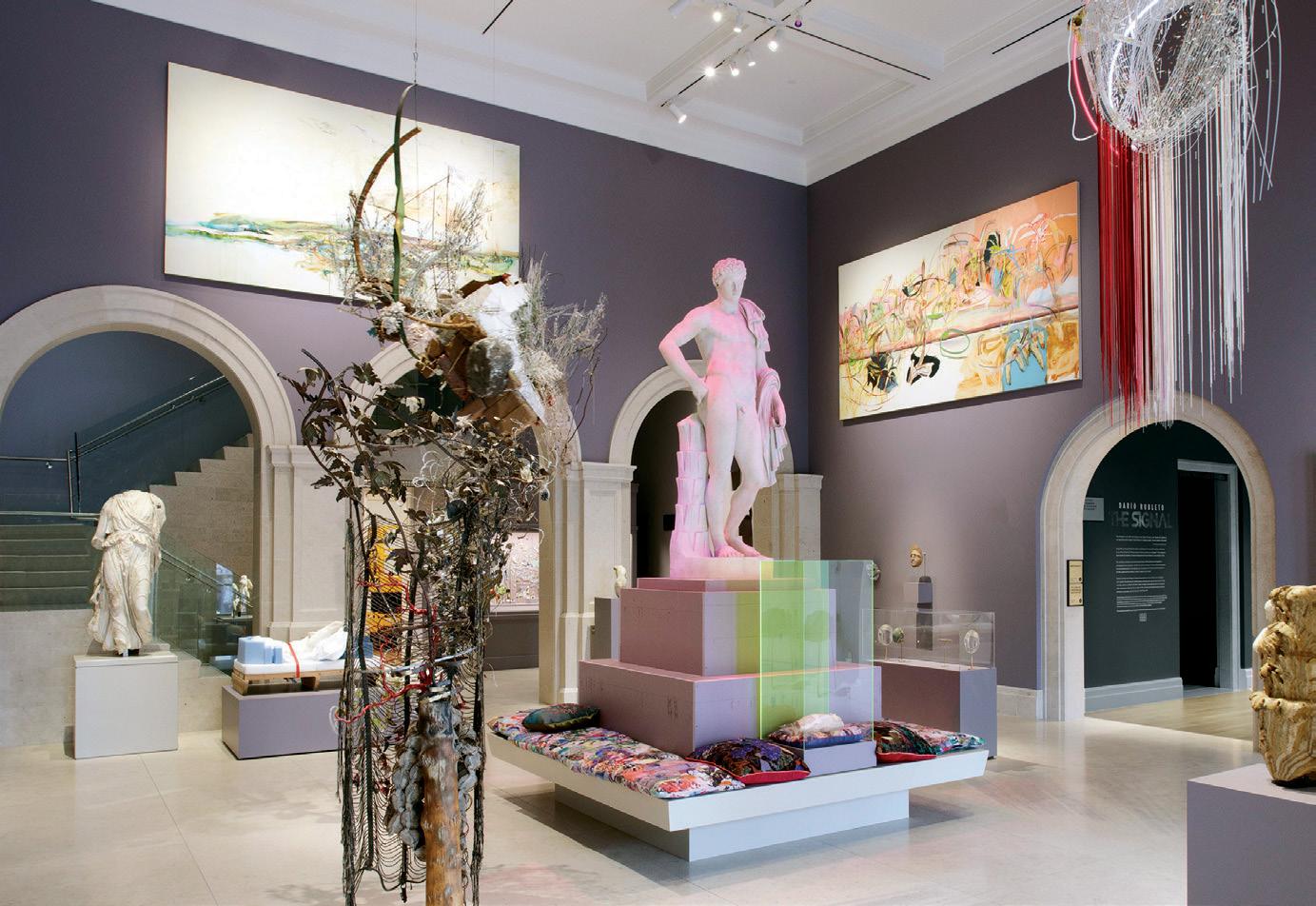

2025-2026 BOARD OF TRUSTEES
Michael C. Linn, Chair
Lynn Cunningham Brown, Vice Chair
Christian McGrath, Secretary
Stephen Schaible, Treasurer
Susan Drymalski Bowey
Karen Lombardo Brill
Joan Davidson
Robin Donaldson
Martha Gabbert
Mitchell Green
Christine Vanderbilt Holland
Rachel Kaganoff
Jacquelyn Klein-Brown
Norman A. Kurland
Judith Little
J. Paul Longanbach
Kandy Luria-Budgor
Janet Feldstein McKillop
A leader in showcasing world-class art to the Central Coast, discover a season of inspiring exhibitions at the Santa Barbara Museum of Art. The Impressionist Revolution: From Monet to Matisse from the Dallas Museum of Art and Encore: 19th-Century French Art from the Santa Barbara Museum of Art invite visitors into the birth of modern art, featuring masterworks from DMA, along with a compelling celebration of SBMA’s own collection, highlighting the enduring beauty and influence of 19th century French art. Piece by Piece: Collage & Assemblage highlights creativity through layered meanings in both historical and contemporary works. Mario Giacomelli: La Gente, La Terra offers poetic insights into post-war Italy, while By Achilles’ Tomb: Elliott Hundley and Antiquity sparks a dialogue between antiquity and contemporary art. Modern Life: A Global Artworld, 1850–1950 captures a century of transformation through a global lens, inviting visitors to explore the art that shaped modernity.
Nicholas Mutton
Doug Norberg
Merrill Sherman
Beth Wood
Bruce Worster
Laura Selwyn Wyatt
Amada Cruz, Eichholz Foundation Director
Mark Maltun, Chief Financial Officer
Claude Monet (French, 1840-1926), Villas in Bordighera 1884, Oil on Canvas. SBMA, Bequest of Katharine Dexter McCormick in memory of her husband, Stanley McCormick
Education at the Heart of Our Mission
Art education is not an add-on at the Santa Barbara Museum of Art, it is at the heart of everything we do. The Museum reaches over 40,000 learners each year, 25,000 of which are students from across the tri-county area. The Museum’s Art Learning Lab (ALL) is a drop-in space for art making that is free and accessible to all on weekends and 1st Thursdays. The Lab’s three studios serve as classrooms for creative exploration and collaboration for visiting school and community groups, adult studio workshops, after-school classes, and camps. Our street-side gallery displays family-friendly art installations by students and community partners participating in the Museum’s programs.
Please visit sbma.net/learn for an extensive listing of in-person and online opportunities for all.
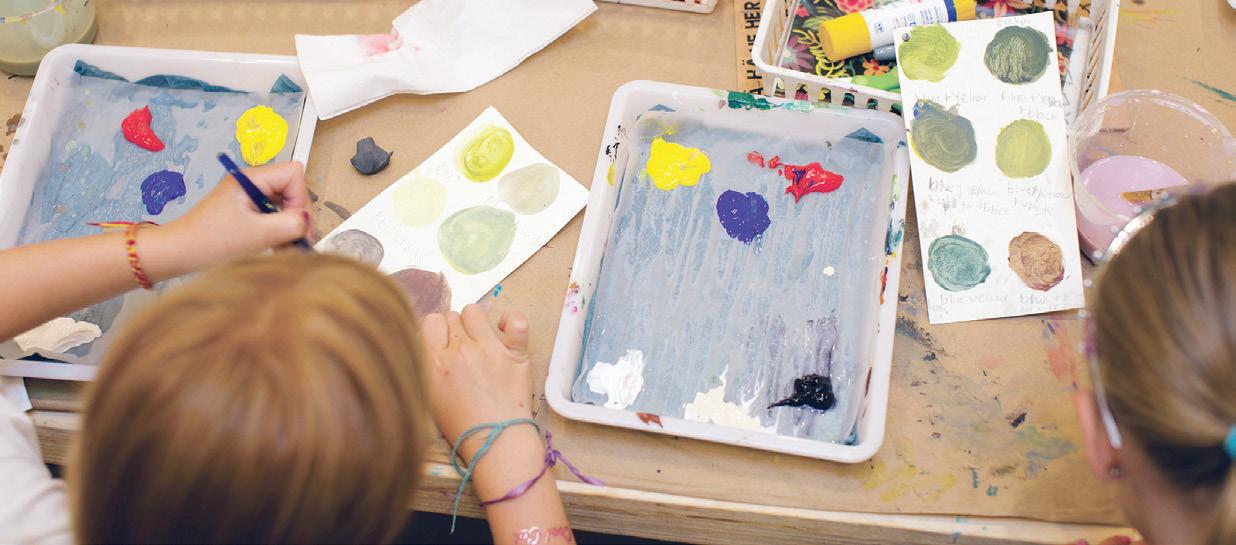
“W e invite you to join us at the Santa Barbara Museum of Art to look, discover, question, and explore art through lively discussion, careful observation, and hands-on art-making. In a time when technology and AI are much in the news, we remind you that art sparks creativity, collaboration, critical thinking, and innovation. In a time when social-emotional learning is key to student well-being, we remind you that evidence shows art making and visiting art museums can benefit mental health, support emotional resilience, help us understand who we are, and strengthen how we connect to others.”
– Patsy Hicks Director of Education
What We Need… Program Support
The
Santa Barbara Museum of Art provides in person and online resources for art makers, art educators, and art enthusiasts. Your donation supports free educational programs and engagement opportunities, including classroom and after-school activities; in-person and virtual school field trips; adult studio classes and workshops; and 800+ gallery tours and community talks each year. The Museum is committed to engaging the community in substantial ways through a varied series of lectures and programs, including exhibition and collection related literary, musical, and theatrical events. All of this is possible without public tax funding. Instead, we rely on the generosity of those who believe in the power of art to elevate, educate, and connect.
Please visit sbma.net/support or call 805.963.4364 to speak to one of our friendly staff to learn how you can participate.
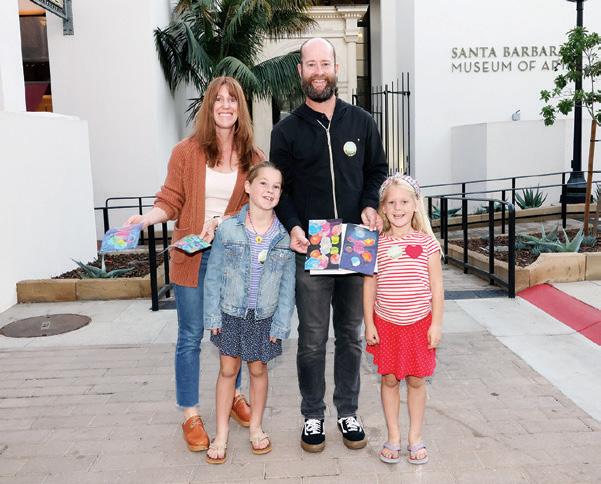
BECOME A MEMBER!
Join our community and enjoy numerous benefits, including free admission and member access to programs, lectures, workshops, art making, and more! Patron membership at the Museum Circles Patron level provides unique access to artists, educators, and curators while honoring your leadership in sustaining the Museum’s mission.
Contact: Stacy Cullison Director of Institutional Advancement (805) 884-6468 scullison@sbma.net
Santa Barbara Museum of Art sbma.net/support 1130 State Street
Santa Barbara, CA 93101 501C(3) Charity # 95-1664122 (805) 963-4364

A Season of Grand Ideas and World-Class Talent
Miller McCune Executive Director of UCSB Arts & Lectures Meghan Bush recently replaced Celesta Billeci, who had spent 25 years at the helm, but shifts have been subtle at one of the area’s largest arts programmers.
“Arts & Lectures (A&L) is a really well-established, welloiled machine and a very strong brand, one that I was really fundamental in helping to build,” says Bush, who had risen to associate director in her two decades at the organization. “We want to keep the momentum and maintain the quality of what is already one of the best performing arts and lectures presenters in the country.”
Indeed, A&L’s calendar for the current 2025-26 season continues to punch above Santa Barbara’s small city weight, with programming that consistently rivals a major metropolis like New York, Chicago, or London. Highlights of another astonishing season include classical icons Yo-Yo Ma and Itzhak Perlman, dance masters Kyle Abraham and Tiler Peck, pop stars, jazz heroes, and top-flight speakers and

"Arts& Lectures brings our community, the University, and its students an incredible array of artistic o erings that are unequaled in any other community of our size in this country. A&L always manages to present the kind of material that appeals to thousands – I don't know how they do it! Their robust education outreach, presented to both English and Spanish-speaking audiences, enriches younger students immeasurably. We are incredibly fortunate to have such a varied and stellar program right here on our doorsteps!"
– Sara Miller McCune A&L
Advisory Council Member & former co-chair, pictured with Tony-winning soprano Audra McDonald


authors. Events take place in a variety of venues throughout the Santa Barbara area.
But beyond the glitz and glamour of the main stage productions lies A&L’s arts education and community engagement programs, initiatives that bring the arts to schools and students to the theaters.
“It’s Arts & Lectures’ best-kept secret,” says Bush. “It’s not something we advertise, but we reach more than 25,000 people every year.”
Access for ALL, an acronym for Arts & Lectures Learning, busses thousands of K-12 students to downtown theaters to enjoy events featuring A&L’s mainstage artists and speakers geared especially for them.
“Many of these kids have never been to a theater before and they’re just awestruck at the opportunity to see a performance, or hear a scientist or astronaut talk,” Bush says. “Then they get to participate and ask questions.” And A&L’s Arts Up-Close program brings the artists or speakers directly into classrooms.
A&L’s Thematic Learning Initiative, aimed at adults, boasts book giveaways and community classes such as Michelle Dorrance teaching tap at Carrillo Rec Center, or Alvin Ailey dancers sharing the steps for its famous Revelations.
Another point of pride for A&L is its iViva el Arte de Santa Barbara! partnership that serves more than 15,000 community members annually with free performances and educational outreach opportunities that celebrate the rich cultural heritage of Latin America.
“We want to o er people who may have been motivated or inspired by a performance to take it to the next level,” Bush says. “It’s impact beyond the stage. That’s part of our responsibility to the community.”
Ballet Festival: Jerome Robbins, curated by New York City Ballet Principal dancer Tiler Peck, March 3 and 4, 2026.
photo by Matt Karas

Help Support Fresh Discoveries and Unforgettable Moments Educate,
Gifts to UCSB Arts & Lectures make it possible to bring the world’s greatest artists and thinkers to Santa Barbara, support the creation of new works, and importantly, fund the educational programs at the heart of its mission.
“We don’t sell tickets to our educational programs,” notes Executive Director Meghan Bush. “Community support is vital.”
Donors can join A&L’s Circle of Friends member group with gifts starting at $100. Annual giving levels range from $2,500 for the Producers Circle to $25,000+ for Partners, with each level o ering enhanced benefits such as priority seating, complimentary parking, and invitations to exclusive dinners with visiting artists and speakers.


KEY SUPPORTERS
Jody & John Arnhold
Patricia Bragg Foundation
Marcy Carsey
Audrey & Timothy O. Fisher
G.A. Fowler Family Foundation
Martha Gabbert
Belle Hahn
Eva & Yoel Haller
Luci & Rich Janssen
Dorothy Largay & Wayne Rosing
Kath Lavidge & Ed McKinley
Patty & John MacFarlane
Manitou Fund
Sara Miller McCune
Jillian & Pete Muller
Natalie Orfalea Foundation & Lou Buglioli
Maxine Prisyon
Lily Hahn Shining & Stewart Shining
Heather & Tom Sturgess
Anne Smith Towbes
Sherry Villanueva
Lynda Weinman & Bruce Heavin
Crystal & Cli Wyatt
Laura & Geo Wyatt
Merryl Snow Zegar & Chuck Zegar
Dick Wolf
UCSB Arts & Lectures artsandlectures.ucsb.edu (805) 893-2080
Heather Silva Managing Director of Development (805) 893-3755
Heather.Silva@ArtsandLectures.UCSB.edu
By Check: UC Regents
University of California, Santa Barbara Santa Barbara, CA 93106 Memo: Arts & Lectures - Giving List
Yuja Wang and Víkingur Ólafsson perform at the Granada Theatre on February 28, 2025
photo by David Bazemore

Youth Developm
“We cannot always build the future for our youth, but we can build our youth for the future.”
– Franklin Delano Roosevelt

Conversations: Jeanne Dixon
as told to Zachary Bernstein
The DNA of a Volunteer
If there’s one thing to be learned from Jeanne Dixon, it’s that retirement doesn’t have to mean completely checking out. Dixon retired from being a fifth- and sixth-grade teacher in 2017, but ever since, she’s been busier than ever volunteering at a number of local institutions.
As an active volunteer, Dixon continues to nurture her own passion for being around people, teaching children, the arts, nature, and the national sorority she’s stayed involved with since college. From nonprofit NatureTrack, Dixon received the 2023 Volunteer of the Year award and Most Miles on the Trail Award in 2024, but if you think she gives her time just to win awards, then you don’t know her at all.
Zachary Bernstein: Jeanne, you have a reputation as something of a super volunteer. Where are all the places that you give your time?
Jeanne Dixon: I divide my volunteering into three baskets. My largest basket involves nature appreciation. There’s NatureTrack, that’s the one I spend the most time with. I’m also a volunteer at Sedgwick Reserve. My second basket is working at theaters: the New Vic, the Granada, the Lobero, both theaters at Santa Barbara City College, and the Arlington. My third basket is continued involvement with my college sorority, Kappa Kappa Gamma. I’ve been involved there in different capacities over the years. Currently, I’m an advisor working at the national level doing leadership development.
ZB: Why are these three baskets so important to you?
JD: I was a teacher for many years. That was my last job and I just loved working with the students and I didn’t want to stop. I have always loved the outdoors, ever since I was in Girl Scouts. My whole family was involved in scouting and I spent a lot of time camping in my childhood. So, nature appreciation has always been important to me. Finding NatureTrack was the perfect match because it involved educating students

and being outdoors.
After I retired, I had a lot more free time. I was looking around and I saw an ad in the local paper about volunteering at the Granada. I thought, “That sounds fun, and I get to be involved with the arts.” I didn’t even know at that time that I could see the shows for free! I volunteered because I thought it would be an exciting place to meet and share the arts with others.
As for my sorority… I understood that joining meant membership for a lifetime. And it has given me so much. It was so important for my personal development. I became a local advisor to assist members in making the most of their experiences. Now volunteering at the national level, I can reach even more people.
ZB: You’re a retired teacher – the most important job in the world. Also a tough job. Do you think you would have had time for all this volunteering if you were still a school teacher?
JD: Volunteering is part of my DNA. It’s natural for me to be giving to others. I’ve always volunteered,

finding opportunities that fit into my work schedule. It is gratifying to know that I’m doing something that benefits others.
ZB: So, no matter what you’re doing, there’s always at least some time you can devote to volunteering?
JD: There are many volunteer opportunities in our community that full-time employees can engage in. It’s about finding the right match with your interests, talents, and schedule. The Giving List is an excellent resource for that.
ZB: It’s becoming apparent to me why NatureTrack would name you volunteer of the year. I’m sure you weren’t actively trying to achieve that honor, but I do imagine that getting that honor does take a little something extra.
JD: At NatureTrack I am part of a team. Each docent has unique skills and talents to contribute to the students’ experience. As a former classroom teacher, I brought skills in engagement, awakening enthusiasm, and management that I could add to others’ expertise. I don’t volunteer for the recognition. I do it because I enjoy helping people.
In philanthropy, people can give their time, talent, and/or treasure. I feel I make the greatest impact by contributing my time.
ZB: How should people get involved as a philanthropist? What made you decide to give?
JD: There are so many needs out there! Every single person could spend every single hour of the day giving time and that would still not be enough. And so, how can I, as a person who cares, start making a difference?
I volunteer because I love to and I feel so good when I do it, but anything one can contribute will be meaningful. There are needs out there and you can determine how you want to give. But many people don’t know how to begin. A great thing about The Giving List, is it’s divided into sections so you can narrow your search to volunteer opportunities that match your interests. People can say, “Wait! This speaks to me. Let me look at this organization,” instead of wondering, “Where do I start?” I was lucky. I didn’t know where to find the best match.
Fortunately, I saw an ad for NatureTrack. I said to myself,


“A great thing about The Giving List, is it’s divided into sections so you can narrow your search to volunteer opportunities that match your interests. People can say, ‘Wait! This speaks to me. Let me look at this organization,’ instead of wondering, ‘Where do I start?’”
“Now that’s a perfect match!” If you see something that ignites your passion, go for it!
ZB: Are you able to see the impact that your contributions have had on your community?
JD: That’s what keeps me going. When I see the impact, it motivates me to do more. Hearing expressions like “thank you,” “wow,” “this is great” and seeing the smiles is so fulfilling. On a NatureTrack hike, when students exclaim, “This has been the best day ever!” “I want to take my family here!” “I want to work with animals now,” that makes all the difference.
Just this past Saturday night, I was volunteering at the New Vic Theatre and a woman came up to me and said, “Wow, you look like you’re having a great time helping out here. How do I get involved?” Helping people find volunteer matches is also amazing. Hopefully, more people get involved and can experience these same feelings. Can you see how much I love working with other people?
ZB: Oh, I see it, don’t worry. What would you say to people who would like to get involved, but haven’t yet and who might feel there’s a barrier between them and the right volunteer organization? Is there a difference between the perception of getting involved versus the reality?
JD: Some people believe that getting involved means fixed time commitments, minimum financial gifts, or other barriers. The truth is most organizations are happy
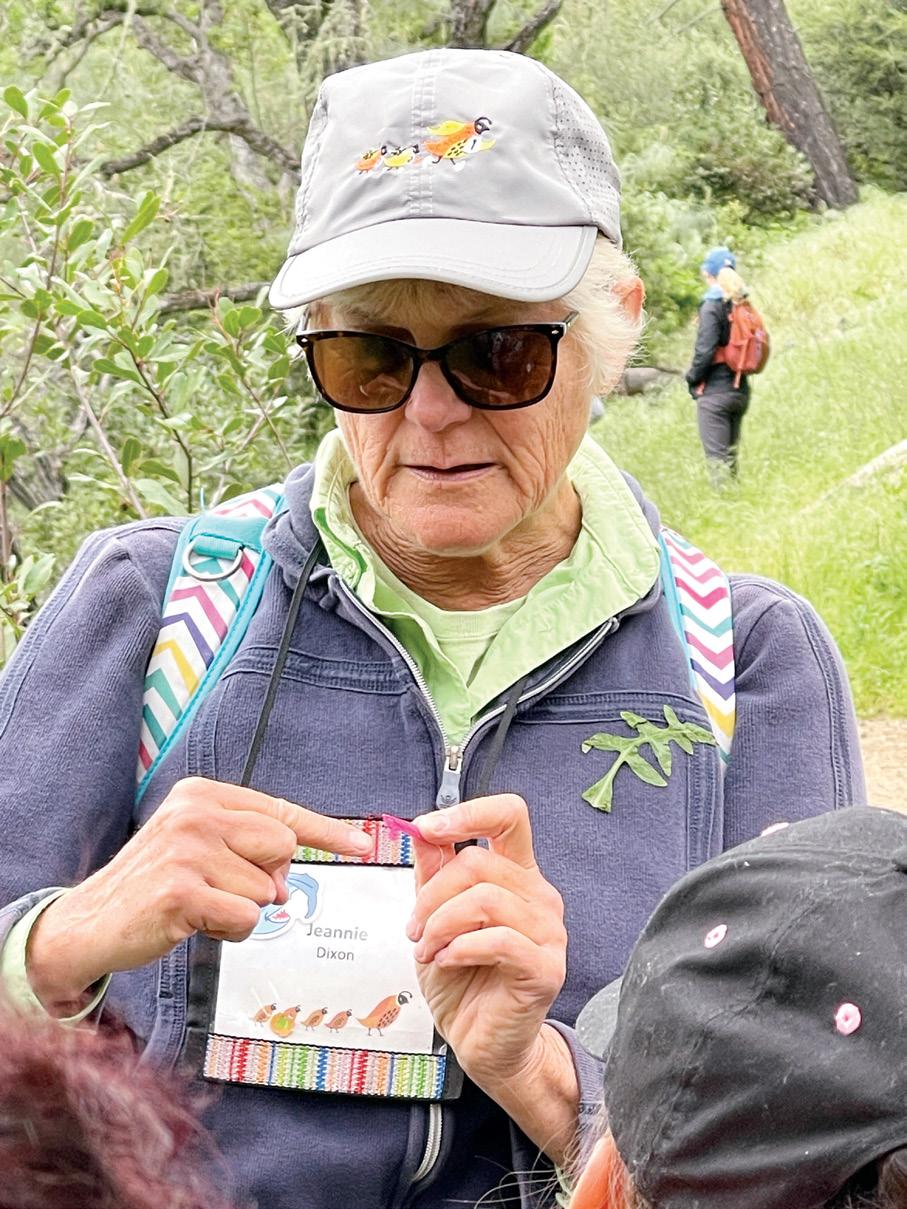
with whatever you are able to contribute.
There are so many organizations out there that need you. Find one that’s a good match. It’s usually as simple as making a phone call, or sending an email. Most of these organizations will say, “Great, let’s get started.” If you only want to give money, they need it. If you want to give time, the right match is out there. What I really like about The Giving List is that all the information about the organization is provided. That helps someone who doesn’t know where to start, or what will be expected of them.
ZB: I get that you like doing this, but do you also feel that you have a responsibility to join a cause? Do you wish more people would jump into the fray like you do?
JD: I wish they would. All people have so much to give. They might not think they do, but sometimes just showing up can make an incredible difference. Some people think of responsibility as a burden. I look at it differently. To me, I feel, “Wow, I get to do this. Isn’t this great that I can make a difference?” It doesn’t matter how big that difference is, but that I made one. And isn’t that worth it?

Melting Hearts and Forging Community
Santa Barbara is hardly a winter wonderland where people gather on a frozen lake to frolic on ice skates during the Christmas holidays. But that didn’t stop Jack Norqual, who grew up in Minnesota playing hockey, and still does, into his 80s. He is one of the leading founders of Ice in Paradise, Santa Barbara’s ice skating facility, which stands as a testament to what vision, determination, and community support can achieve together.
The story began in 2004 when Norqual, now Chairman of the Board Emeritus, recognized a glaring gap in Santa Barbara’s recreational landscape. “We had no ice rink in our community,” Norqual reflects. “Young people with dreams of hockey or figure skating had nowhere to develop their skills locally.” What started as an ambitious $10 million fundraising goal became a decade-long labor of love that weathered economic storms and personal sacrifice.
Today, the facility serves as more than just a skating rink – it is a beloved cornerstone of the community and a launching pad for dreams. “It has been remarkable,” says Andrew Messick, Board Treasurer and head of the finance committee. “We’ve seen the emergence of adult and youth hockey and skating culture here in town because of the creation of a proper training and playing facility. The social and skill-building aspects of skating and hockey create lasting bonds and discipline that extends far beyond the ice.”
The rink’s impact resonates throughout families across Santa Barbara. Dodie Smith-McBroom, Development Director, brings a personal perspective to her role, having witnessed firsthand how the facility enriched her own children’s lives. “Ice in Paradise has provided a supportive community for athletes of all ages and skill levels,” she explains. “It’s not just about the sport – it’s about building character, friendships, and a sense of belonging.”
As Ice in Paradise celebrates its 10-year anniversary, the organization faces both exciting opportunities and financial


challenges. With approximately $4 million in debt remaining and annual operating costs requiring $400,000-$500,000 in additional funding, the leadership team launched an ambitious fundraising campaign, targeting four critical areas: keeping programs affordable for all families, essential infrastructure improvements, expanded youth programs, and necessary capital improvements.
“Our long-term vision is to make the rink accessible to all children who want to skate or play hockey regardless of family income,” Messick emphasizes. “We want to ensure that talent and passion, rather than financial circumstances, determine who gets to pursue their skating dreams.” The organization already operates scholarship programs for youth hockey, but demand continues to outpace available resources.
"I ce in Paradise has never just been a rink to me – it's my second home. Over the past 9-10 years, it's been the place where I've grown socially, mentally, and physically. The people here – my friends, coworkers, coaches, and everyone who walks through these doors – have become like family. As my current season comes to a close, I'm proud to finish with an undefeated regular season and the opportunity to compete at the 2025 Excel Nationals and National Showcase. I'll be ending my SOCAL Interclub Invitational skating alongside some of the top talent in Southern California – and I couldn't imagine a better way to close out this chapter."
– Sadie Heinze
Every face-off brings them closer to victory! Support Ice in Paradise’s rink and help them empower the next generation of hockey and figure skating stars!


The Gift of Glide
Ice in Paradise’s ongoing fundraising campaign is an investment in the fabric of Santa Barbara’s youth and community. The facility fosters lifelong sports participation and creates pathways for athletic achievement that simply didn’t exist before 2015.
• $1,500 provides a full youth scholarship for one year for Learn to Skate.
• $2,500 provides a full youth scholarship for one year for Youth Hockey League (includes gear).
• $10,000 supports the purchase of new curling stones and other specialized program equipment.
• $25,000 supports major infrastructure improvements and key ongoing repairs.
Ice in Paradise
879-1550
324-4932 dodie@iceinparadise.org

MISSION STATEMENT:
To provide a wide variety of recreational ice-skating programs for all members of our community to enjoy at affordable prices within a state-of-the-art facility. They strive to deliver this within a safe, friendly, and fun environment with unparalleled customer service.
“ “
Help
maintain this vibrant community space by donating today! Your generosity ensures that Ice in Paradise remains for all to enjoy!
NATURETRACK
Nature for All
On Ellwood Mesa, a second grader watched dolphins crest the waves and whispered, “Pinch me so I know I’m not dreaming.” Moments like that inspired founder Sue Eisaguirre to launch NatureTrack 15 years ago.
Since then, more than 50,000 Santa Barbara County students—primarily from underserved communities—have explored local beaches and trails on free, curriculum-based field trips. Over 80 volunteer docents bring lessons to life, and NatureTrack covers transportation, so no child is left behind.
In 2021, NatureTrack expanded access to all ages and abilities with Freedom Trax—battery-powered devices that attach to manual wheelchairs—so users can traverse sand, snow, and trails on their own terms. Outings are free for anyone of any age with mobility challenges—temporary or long-term—including seniors, veterans, and wheelchair users. “We see tears, laughter, and lives changed,” Eisaguirre says. David, a senior who reached the beach after months indoors, told us, “Just being out here has changed my life.”
From first dolphins to reclaimed freedom, NatureTrack proves nature isn’t a luxury—it’s essential, and it should be accessible to everyone.
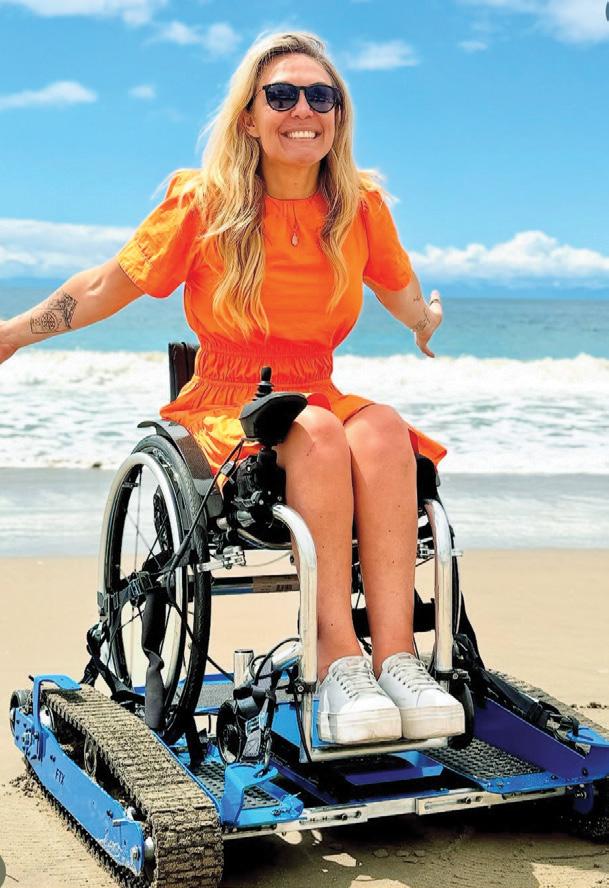
Sophie Morgan radiates pure joy as she navigates the beach under her own control with NatureTrack’s Freedom Trax. While filming a Visit California segment on accessibility, she shows how NatureTrack opens doors to outdoor adventures once thought impossible.
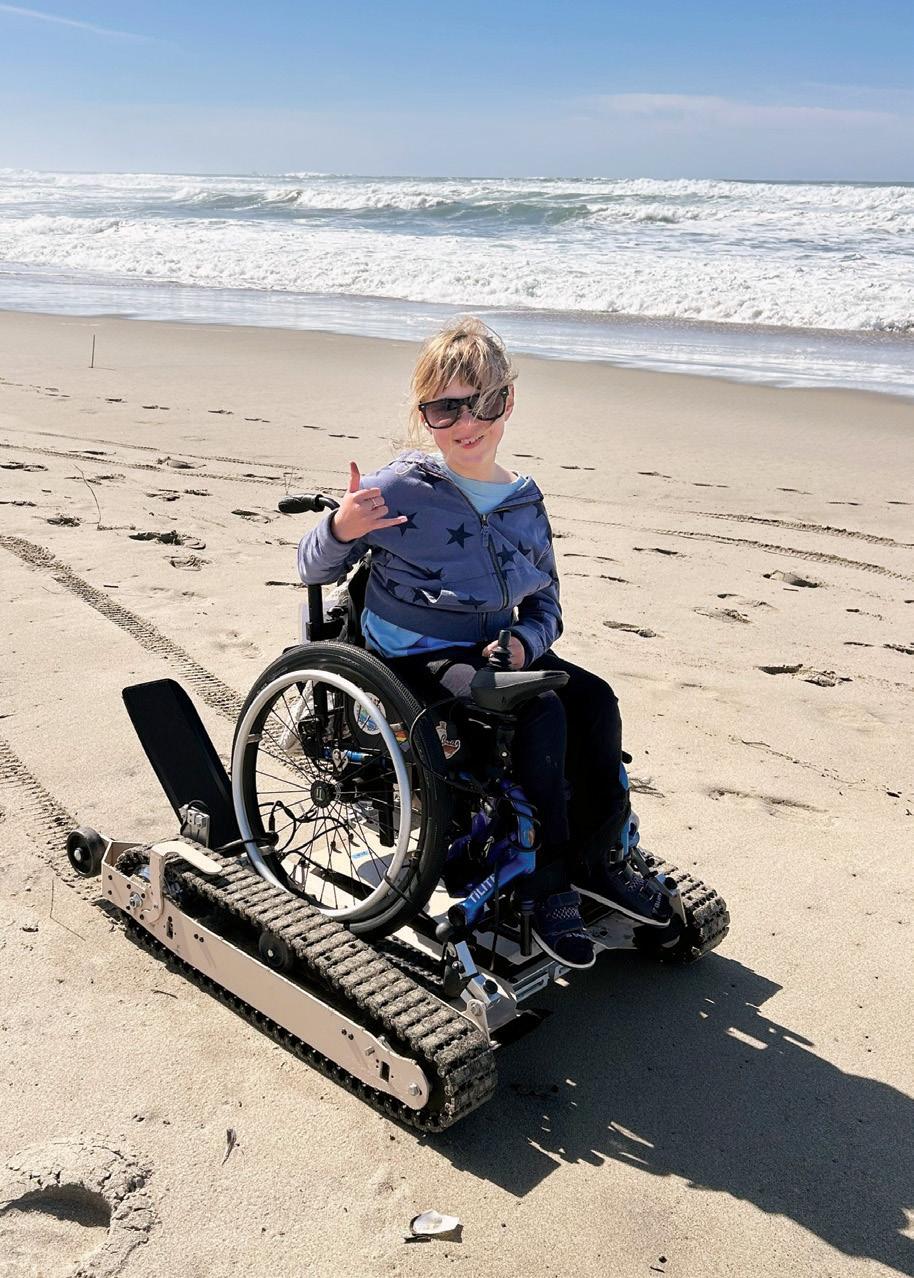
"Our daughter, Dilyn, was born with Cerebral Palsy. As a 10-year-old navigating life with a disability, she wants to keep up with her peers and access parts of our community that her body and wheelchair can’t accommodate. NatureTrack’s dedication to giving ALL kids access to nature has been the greatest gift to our daughter.
"The day Dilyn used a Freedom Trax for the first time was the beginning of something beautiful. It was a day of exhilarating freedom where she was in control of her own adventure. She raced the clouds, discovered washed-up beach treasures, and teased an ocean that could never catch her. She said, 'I felt like I was running, just in my own way.'
"Since then, Dilyn has used Freedom Trax on field trips, Girl Scouts camping, and family beach days. Thanks to NatureTrack, her independence and confidence have soared – she doesn’t just join the hike, she leads it."

– Kalle Faruki Dilyn’s Mom
Students trekking under wide-open skies embody NatureTrack’s mission – outdoor learning for every child. With their Trax program, even wheelchair users can join classmates on these adventures, ensuring no one is left behind in discovering the joy and freedom of nature.
Nature Changes Lives – You Can Too
Transportation is our biggest cost—nearly 20% of a lean budget run by 2.75 sta . Demand is surging. Your support opens nature to those who would otherwise miss out.
• $4,000 funds a field trip for 50 students
• $7,000 buys a Freedom Trax
• Volunteering gives you joy and opens nature to others
With our 5:1 student-to-volunteer ratio, we always need more volunteers to inspire the next generation. No required hours or days! Please donate or volunteer today.

Megan Miley shared the joy of seeing her mom back at the beach on one of NatureTrack’s weekly adventures for Senior Living Facilities. After years away from the sand, her mom relished the freedom of driving herself –making a beeline toward lifeguards in training with a big smile on her face!
“

NatureTrack Foundation fosters a lifelong fascination with nature and inspires thoughtful stewardship of our natural resources. They are dedicated to making access to the outdoors equitable for ALL — providing cost-free field trips for K–12 students and unforgettable experiences in nature for wheelchair users of all ages. By eliminating financial barriers, they ensure every participant can explore, learn, and connect with the natural world. Through education, inspiration, and accessibility, NatureTrack cultivates curiosity, joy, and a deep commitment to caring for our environment.

“

Exploring streams and uncovering wild wonders sparks curiosity, builds confidence, and enhances health. Time outdoors reduces stress, boosts focus, and inspires movement — vital for kids’ well-being. With NatureTrack, students step beyond the classroom and into nature, where learning truly comes alive!
Adams Legacy Foundation
Audacious Foundation
Brittingham Foundation
Edison International
Edwin and Jeanne Woods Family Foundation
Henry Mayo Newhall Foundation
John S. Kiewit Memorial Foundation
Mosher Foundation
Natalie Orfalea Foundation & Lou Buglioli
Raintree Foundation
Santa Ynez Valley Foundation
Santa Ynez Valley Youth Recreation
Towbes Foundation
The Many Ways to Give...
NatureTrack Foundation
naturetrack.org
Contact: Sue Eisaguirre Founder & Executive Director (805) 886-2047 sue@naturetrack.org
Opening Doors for Santa Barbara’s Vulnerable Youth
In Santa Barbara County, vulnerable youth face an invisible crossroads every day. Some are on the verge of dropping out of school. Others are navigating family crises or the juvenile justice system. The choice between opportunity and hardship can come down to whether someone shows up with guidance, resources, and the belief in their potential.
Spirit Awakening Foundation wants to be that “someone” for Santa Barbara. For nearly 30 years, this Los Angelesbased nonprofit has transformed the lives of hundreds of atrisk youth through its Mentoring Leaders Program and their distinctive Writes of Passage curriculum. Built on creative expression, mindfulness, and self-advocacy, the programs are e ective and scalable, designed to be brought directly into high schools in Santa Barbara to reach vulnerable youth and help them, as Founder Akuyoe Graham says, “strengthen themselves from the inside out.”
Graham began this work in 1995 with a clear mission: “I wanted to create a safe space for young people to really like themselves, love themselves,” she recalls. Growing up in Ghana, then England, she experienced firsthand the sting of being doubted for her abilities and excluded because of her heritage. Those early experiences became the foundation of a program where every young person is told they belong. Their peer-to-peer Mentoring Leaders Program serves as a bridge to adulthood. A free, three-hour afterschool program, it o ers everything from hot meals to transportation

"It has been an honor and privilege to be a part of Spirit Awakening Foundation... I only wish I'd found it sooner. I can't say whether life would be 'better' per se, but what I can say without a doubt, is that I would have become the person I am today a lot sooner, and maybe even easier. Probably would've dodged that six-year sentence when I was 17 years old. However, my story as it stands, is a testament to the value of the work we do here at Spirit: teenage hellraiser, sadomasochistic manic depressive, serial burglar, turned community volunteer, teaching artist, reentry advisor, and board member."
– Pluto Brown Board Member

to vital workshops that encompass financial literacy, job preparation, visual arts, and meditation. Their free core, onsite Writes of Passage curriculum, o ered to schools and juvenile justice sites, helps youth strip away labels – felon, dropout, troublemaker – and uncover their “eternal self” beneath. Through guided meditation, journaling, and roleplay exercises, youth are encouraged to “center themselves” and envision better lives ahead.
The impact in Los Angeles shows what’s possible here. Hunter-Marie, who first met Spirit Awakening while incarcerated at 16, says working with them gave her the support to stop “returning to juvenile hall.” Their mentorship and workshops gave her the tools to finish school, start a career, and now she mentors others. Pluto, another graduate, recalls, “No matter what facility I was in… when I called that number, I got support.”
Bringing these programs to Santa Barbara could turn a high school classroom into a sanctuary, a juvenile facility into a safe space for redemption.
Graham sums it up best: “Part of our mission is to provide experiences where they know they can go anywhere on this planet and belong there.”
With Santa Barbara’s support, that belonging can take root here – helping vulnerable youth not just survive, but thrive.
Rites of Peace mural project entitled “Reflection” at Central Tri-C High School inside their classroom.
Open the Gateways of Possibility
Santa Barbara has the chance to launch a proven, scalable program that has changed hundreds of young, vulnerable lives in Los Angeles. Your gift, of any amount, can help them establish the Mentoring Leaders Program locally, providing meals, transportation, and creative workshops for vulnerable youth. By sponsoring this work, you give teens here access to mentorship, artistic expression, and the tools to advocate for themselves.
Spirit Awakening’s three decades of impact show that when youth are valued, they rise. Help plant that legacy in Santa Barbara – across schools, community centers, and juvenile facilities. Donate today to open doors for the next generation of leaders, right here at home.


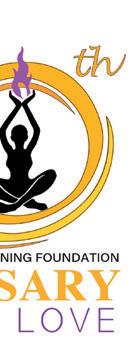
We believe that art is powerful and can entertain, heal, transform and inspire; therefore, artistic expression is a powerful entryway to uncover and heal from traumatic experiences. With the use of meditation/mindfulness practices, creative writing, visual arts, music, role-play, conflict resolution and dramatic improvisation, we support abused, neglected and underserved youth and young adults in realizing their value, self-worth, and dignity.

CEO/Founder
Akuyoe Graham with program participants and guest artist Kennedy Zimet.
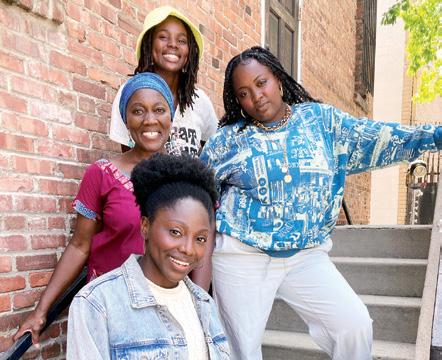
KEY SUPPORTERS:
BOARD MEMBERS:
Akuyoe Graham
Lynn Kitchen
Bert Christian
India Radfar
Martha Della Scala
Karan Nigam
Pluto Brown
Hunter Formica
Peter O'Fallon
SUPPORTERS:
The California Wellness Foundation
Gina Morris/EDL Northwest
Amity Foundation
L.A. County Dept. of Arts & Culture
L.A. County O ce of Education
Liberty Hill Foundation
A & A Fund
The Conrad N. Hilton Foundation
Agape International Spiritual Center
The Ralph M. Parsons Foundation
Esalen Institute
The Many Ways to Give...
Spirit Awakening Foundation www.spiritawakening.org (866) 456-8002
Contact: Akuyoe Graham CEO/Founder (310) 406-6606 Akuyoe@spiritawakening.org
By Check:
Spirit Awakening Foundation 12130 Millennium Drive, Suite 300 Los Angeles, CA 90094
By DAF or Stock Transfer: Tax ID# 95-4585425
By Credit Card: www.spiritawakening.org
Spirit Awakening Foundation provides culturally enriching field trips for our youth to embrace new surroundings, like a visit to Cirque du Soleil.
Building a Future Beyond Trafficking
Marie was a victim of sex trafficking before she turned 13.
“I was stuck in the lifestyle, always wanting to smoke and drink,” she says. “I was not making the right choices. I felt like I had nobody, and I ended up being incarcerated.”
Marie is just one of more than an astounding 325,000 children who are commercially sexually exploited in the United States every year. But there are just 511 beds in the entire country available for residential programs to effectively treat sex trafficked girls. Olive Crest acquired the Hope Refuge Campus in 2022 in response to that massive shortage, specifically to support and provide therapeutic live-in care for girls aged 12 to 18 who have been victims in California.
The 214-acre ranch-style facility in the hills of Santa Barbara – filled with oak woodlands, rolling hills, and stunning ocean views – runs an intensive six-month-minimum, fully California-licensed program providing resources for up to 16 girls to heal and forge a path for a new life. Each girl at the center receives individualized counseling, mental health support, on-site education, and skills in independent living and relationship building.
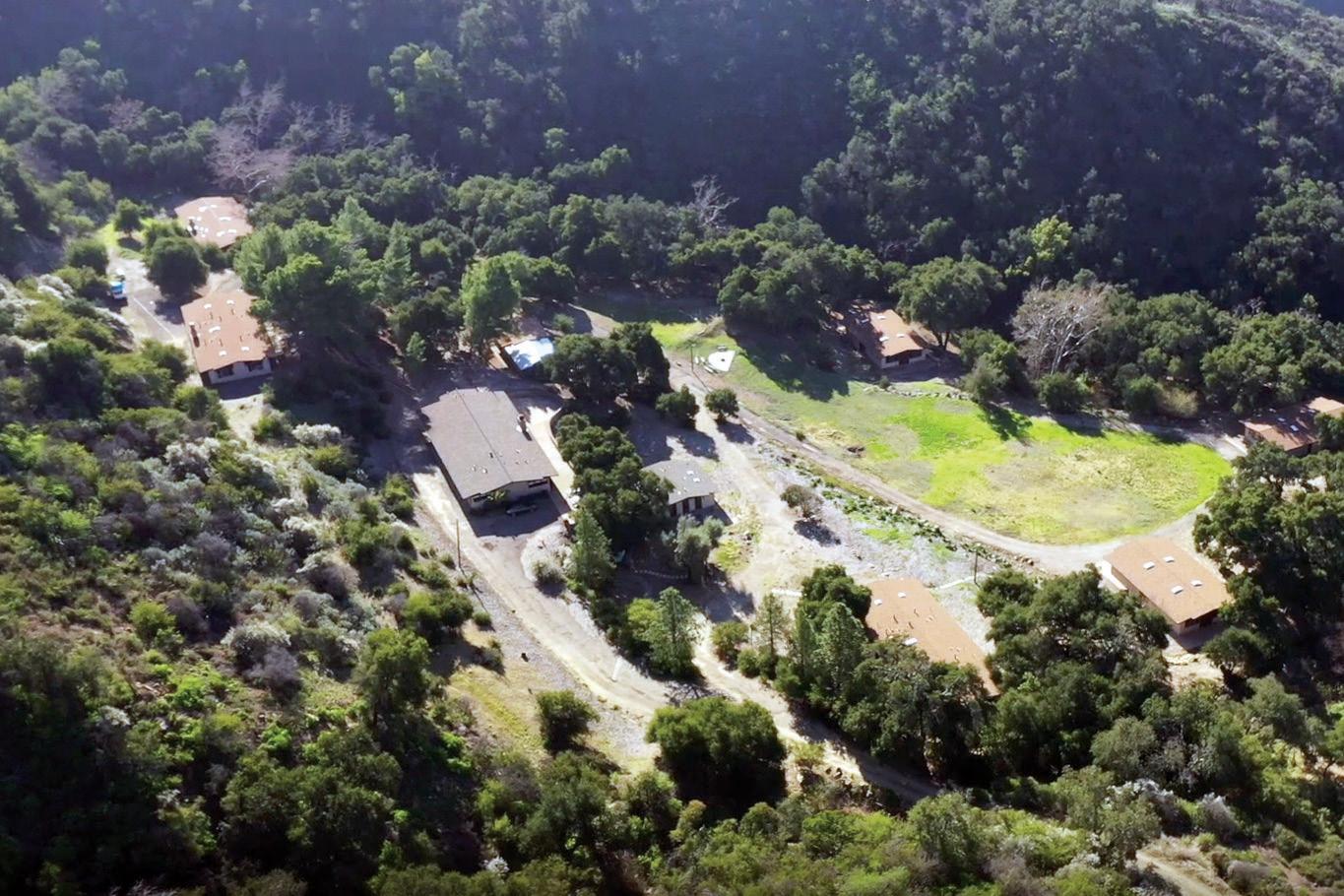
The girls are referred by Santa Barbara Social Services or Probation Department as well as 18 different counties in California – and because the girls are reluctant to reveal they’ve been sex trafficked, they are identified by social workers and probation officers trained to look for “red flags” and high-risk behavior.

“They have been so utterly brainwashed,” explains Sally Cook, who used to work at DreamWorks Animation and co-founded Hope Refuge with her husband. “I can’t think of any worse kind of slavery than an innocent child being exploited this way to the point that she believes she’s not a victim.”
Without treatment, the girls often either act out or internalize the trauma, landing in a juvenile hall or a psych ward – unable to get the support they need to deal with the damage. But the Hope Refuge Campus provides them with comprehensive early intervention that changes their trajectory for a successful adulthood.
“At first, they want to run, which is all they know,” says Cook. “But that’s not easy from a remote facility like ours. Eventually they bond with staff and each other, embrace the program, and develop the healthy relationships they’ve been missing.”
That’s what happened for Marie. “Olive Crest has helped me heal as I go through my past trauma,” Marie says. “Just knowing I have a support team behind me lets me know that I’m worthy.”
Hope Refuge Campus.
Chiles Education Center.

Support Transformational Change in the Lives of Young Girls Who
Have Been Sex Trafficked
While federal and state funds cover much of Olive Crest’s Hope Refuge Campus’ program costs, private support is vital for projects that impact the girls’ daily lives – like their onsite education center, facility upgrades, and a teaching kitchen. They are midway through a five-year, $11 million campaign, with $6 million already raised. Naming opportunities still remain, but every gift matters. You can also join them as an Ambassador of Hope through the annual giving program at $1,000, $3,000, $5,000, or $10,000. Your commitment offers survivors of child sex trafficking safety, healing, and hope. Contact Sally-Cook@olivecrest.org for a personal tour of the facility.
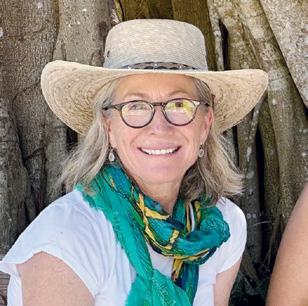
"B
eing an Olive Crest Trustee and supporter is a true joy. It's incredibly meaningful to know that my support directly impacts the lives of girls and strengthens the fight against sex trafficking in our community."


The Many Ways to Give...
Olive Crest
www.olivecrest.org/santa-barbara
Contact:
Sally Cook
Development and Community Engagement Director (310) 343-8108 | Sally-Cook@olivecrest.org
By Check:
Olive Crest P.O. Box 8265
Goleta, CA 93118
By DAF or Stock Transfer: Tax ID# 95-2877102
By Credit Card: www.olivecrest.org

Olive Crest is dedicated to preventing child abuse by strengthening, equipping, and restoring children and families in crisis… One Life at a Time.

KEY SUPPORTERS
Hayley Firestone
Craig and Stephanie Braly
Daniel and Amanda Girdler
Ian Noyes
Nita Nautiyal
Lisa Kus
Ryan Gallo
Santa Barbara Foundation
Ann Jackson Foundation
Montecito Bank and Trust
Solvang Rotary
Goleta Rotary
George Leis
Phyllis Brooks Smith
Lance and Kirsten Musterer
Sue Pebley
Christopher Clark
Slave2Nothing
Chumash Foundation
Crossroads Church
All Saints Church
– Hayley Firestone Olive Crest Trustee


